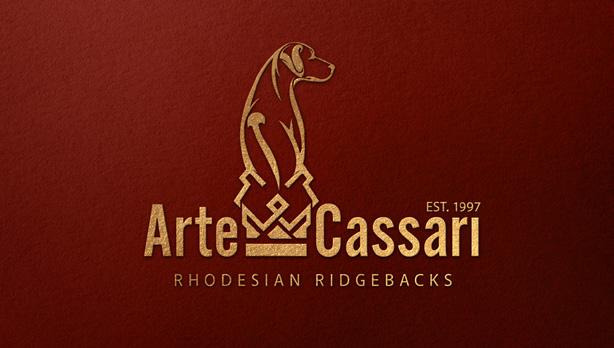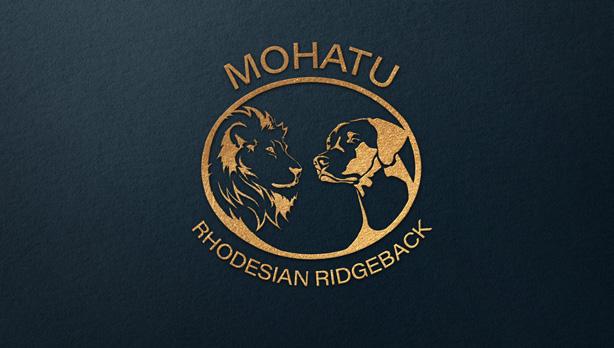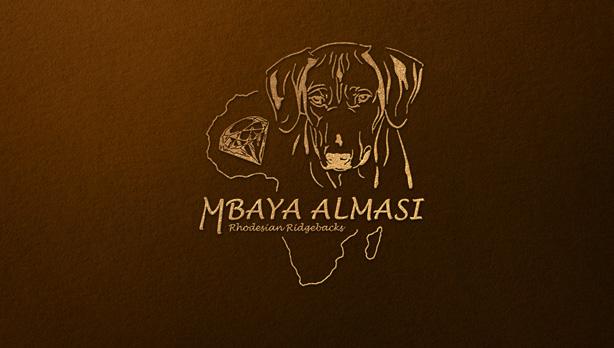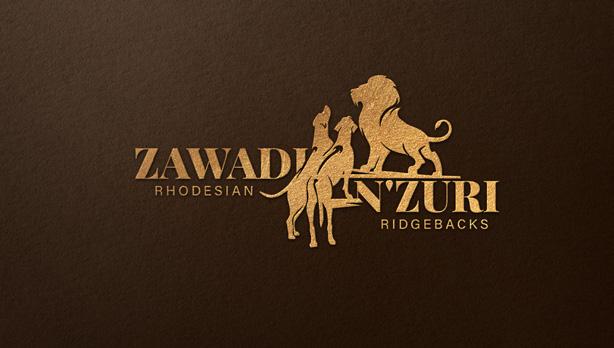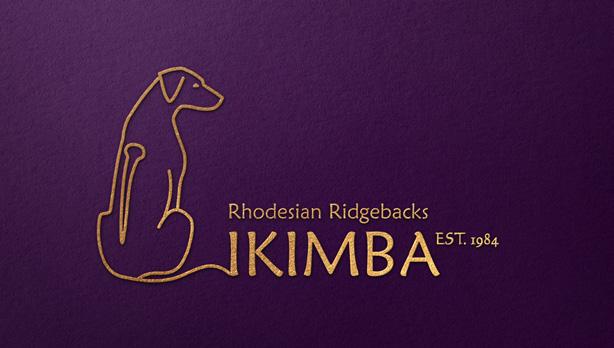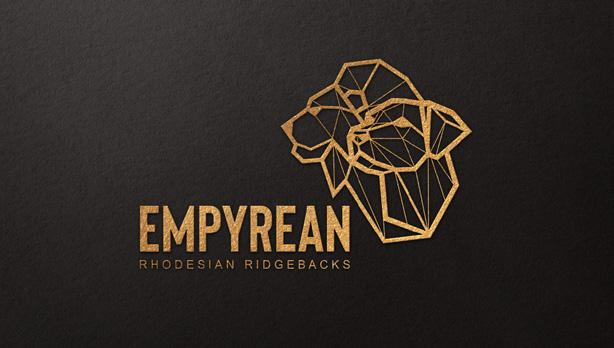









 RHODESIAN RIDGEBACK
RHODESIAN RIDGEBACK











 RHODESIAN RIDGEBACK
RHODESIAN RIDGEBACK
As we approach the Festive Season, let us take a moment to reflect briefly on the year that is coming to an end.
War is being waged in Europe – it is quite unthinkable really and yet it is happening! Our prayers and good wishes go to all those affected by it, and our thanks go to those who are helping the victims in one way or another.
The Corona virus is still with us, although more under control. People have adapted and herd immunity has begun to kick in, with most of us being a bit more carefulmore aware.
The “Animal Welfare Regulations” in Germany became a major topic at the beginning of this year, causing much concern and confusion as nobody was quite sure exactly what was required. To exacerbate the confusion, the requirements seemed to differ from exhibition to exhibition.
RR Eu Magazine has gone from strength to strength, with each issue brimming with interesting articles, super photographs and great interviews. We are, as always, grateful to our advertisers - without their contributions we could not bring such a quality product to our readers.
We extend an invitation to our readers: if anyone has a story worth telling, please contact us – we are always interested to publish it.
2022 was a tumultuous year. Let us hope that 2023 brings health, peace and prosperity. And now please sit back, put your feet up and enjoy issue 11 of Rhodesian Ridgeback Europe Magazine.
See you next year!!
Timmy, Snežka and Zhanna

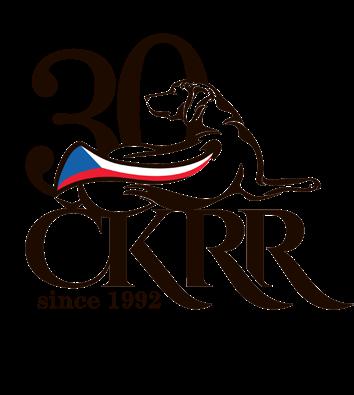

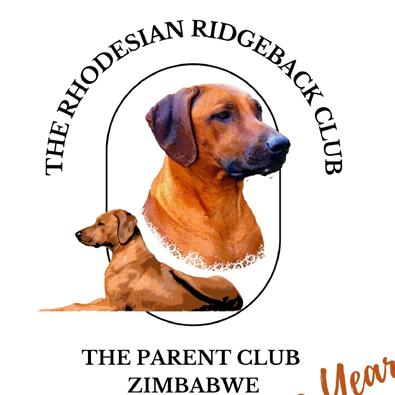








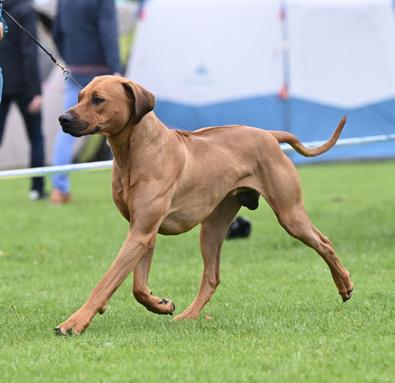
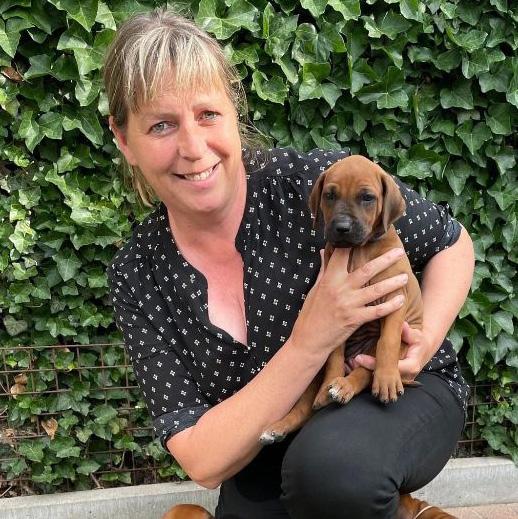



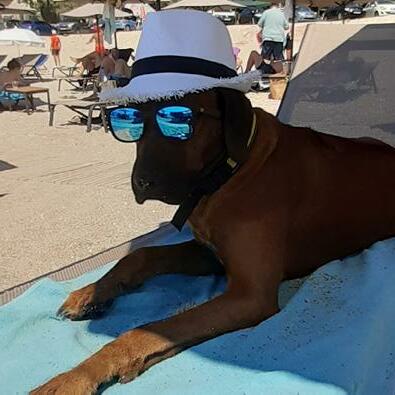



On 13th August of this year, 2022, the Rhodesian Ridgeback Club of Zimbabwe - the Parent Club, celebrated its founding 100 years ago in the city of Bulawayo in the then Rhodesia. Rhodesia was a pioneer country and the history and development of our beautiful breed, the Rhodesian Ridgeback, mirrors the country’s history.
I am sure most Ridgeback lovers are aware of the origins of the breed and its history. It is unsurpassed in the canine world. For those who are not aware, a short synopsis follows.
When the first Europeans came to Southern Africa they found the local Hottentot peoples had, as their faithful and trusted companions, a smallish, somewhat ugly dog with a very distinctive ridge on its back where the hairs grew backwards. The dog was nothing more than a curiosity and these same Europeans brought their European breeds with them, using them for companionship and hunting. Many of these breeds - Pointers, Whippets, Terriers amongst others, struggled in Africa with its different diseases and high concentration of predators including lion. In the early 1900’s Cornelius van Rooyen, who lived in the south western corner of Rhodesia, began using these ridged dogs to hunt with, especially lion. Soon after this the Reverend Charles Helm, a missionary, brought two greyhound type dogs from South Africa and
Van Rooyen bred them with his ridged dogs. They soon became famous as “Van Rooyen’s Lion Dogs”. They were however used to chase and corner lion until the hunter arrived. It is a myth that they fought and killed lion. They are possessed however of great stamina and great courage. This was the beginning of our wonderful breed, and in 1922 a formal meeting was held in Bulawayo, Rhodesia, at the home of Mr. Francis Barnes, to establish a standard for the breed, which has remained almost unchanged to this day. As Rhodesia was then a pioneer country, the Rhodesian Ridgeback Club - the Parent Club, was affiliated to the South African Kennel Union in 1926. Only some twenty years later was the South African Ridgeback Club registered with the South African Kennel Union. All its original and early registrations came from Rhodesia. The Rhodesian Ridgeback Club- the Parent Club has been totally independent of South Africa for many years now and has a proud history built on the visions of the early pioneers of the breed.
From those magical beginnings our breed flourished, and there were many pioneer breeders throughout Rhodesia. The breed standard was adhered to throughout and when dogs were breeding true to the desired type they were pedigreed.
From the mid 1920’s Rhodesian Ridgebacks began to be taken to other countries, and were admired throughout. They appeared at the Crystal Palace Show in London in 1928, and in 1947 when the late Princess Elizabeth visited Rhodesia she was gifted a pair of Rhodesian Ridgebacks. In Europe they became extremely popular and desired, and today there is hardly a European country without a very vibrant Rhodesian Ridgeback Club. In the 1940’s the first three Rhodesian Ridgebacks were imported into America and, due to the popularity of the breed, an official club was formed there in 1955.

In the years after the Second World War, and leading to the mid-1970s, the club and the breed flourished in Rhodesia, despite a growing civil war. This was a time when the shows were well supported and a good number of dogs were in training. Much of the credit for this must go to Sam and Margaret Wallace, whose Mushana kennel was internationally well known. In addition both were international judges.

In 1980 our bitter civil war came to an end and our beautiful country changed its name to Zimbabwe. Margaret Wallace was questioned over the name of our breed, but persuaded all that the name was internationally recognised as such, had no political connotations and such it has remained. The early years in Zimbabwe were very peaceful, the country prospered and the club, breed and shows continued to flourish. This favourable climate lasted until the early 2000’s when political violence and farm invasions and evictions erupted, and many people who were Ridgeback owners and lovers began leaving the country. The number of dogs in training and in shows declined, despite incredible efforts from Margaret Wallace, and it be-

came obvious that a new direction was needed.
We opened up the club to anyone who loves the Rhodesian Ridgeback, - breeders, owners, members with dogs in show, even non-owners but they just love the breed and its history. In addition to our pedigreed dogs, Zimbabwe still has many exceptional examples of our breed that have not been registered, and wonderful original blood lines still exist. So we arrived at the year 2022 with well over 100 members in Harare alone and a thriving community of Ridgeback lovers, owners and breeders. How to celebrate this historic year that sees 100 years of dramatic history being celebrated? With a grand parade of course!

At a Dog Park in Harare, known as the Wagzone, it was 9am on the 13th August, 2022. We had done our homework. Large boards had stories on the history of our breed and its founders, with appropriate old photographs. There was Cornelius

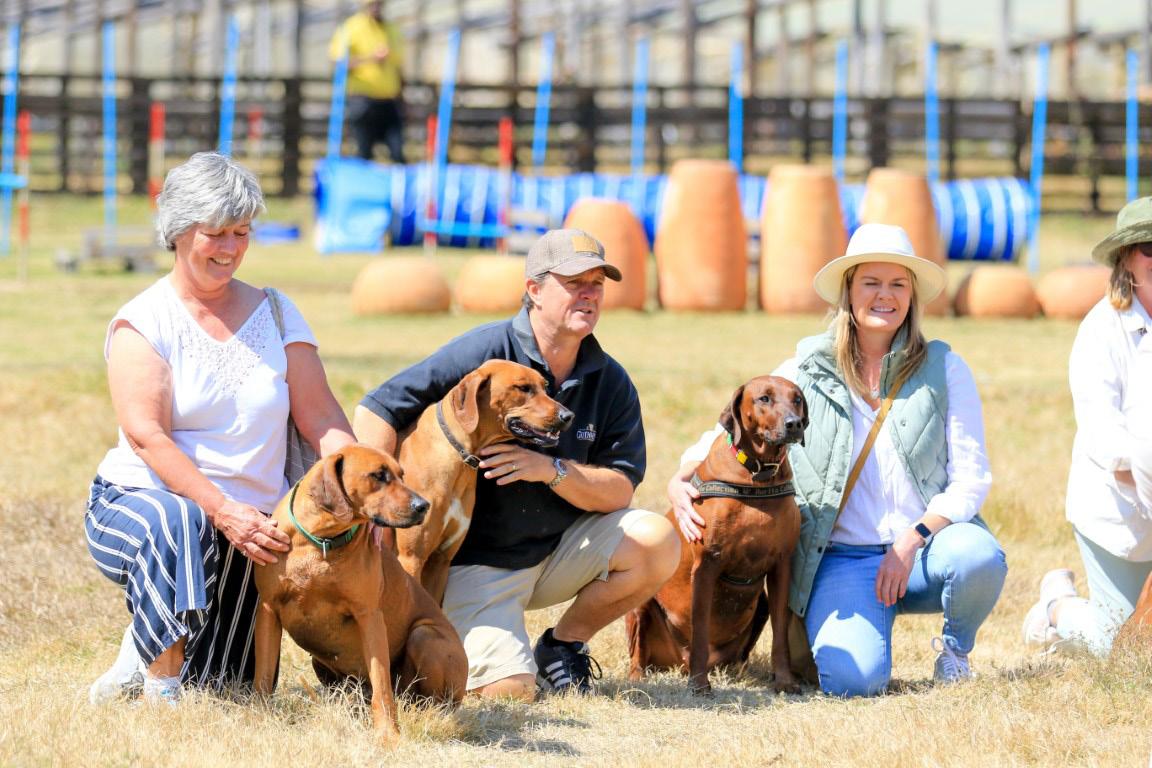
van Rooyen, an old sepia photo of him with his Ridgebacks and a lion from a successful hunt. Francis Barnes – the postmaster who drew up the breed standard, also took centre stage. Sam and Margaret Wallace stood in thoughtful pose from a photo taken while judging a show. Beautiful Ridgebacks remarkably similar to today’s dogs but bred in the 1940s by Mashonaland pioneers were there. Absolutely priceless trophies, some taken to South Africa during the hard years for safe keeping and since brought back, and with all the inscriptions of the past champions, were on display. We paid homage to the past.

On another board we had modern photographs of all our members, with their dogs. Informal photos, loving photos, some with their children. We are a community held together by our dogs. A Marimba band played in the background.
And then the members and their dogs began arriving. And they kept arriving. The Dog Park, booked out for the morning by the club, was awash with magnificent Rhodesian Ridgebacks. In the end we had over 40 Rhodesian Ridgebacks, from big males with attitude to exceptional bitches that would make any show - all were off leash - and there was not a sin-


gle fight. Management skills were tested to get them to all lineup for an historic photograph but we managed – a testament to the dogs and their owners. This was history again.

And so we move on. 100 years come and gone but not forgotten. We are now of course one of the smaller Rhodesian Ridgeback clubs in the world but, with great pride, we take our place in the history of this wonderful breed as the country that started it all, and is still going strong.

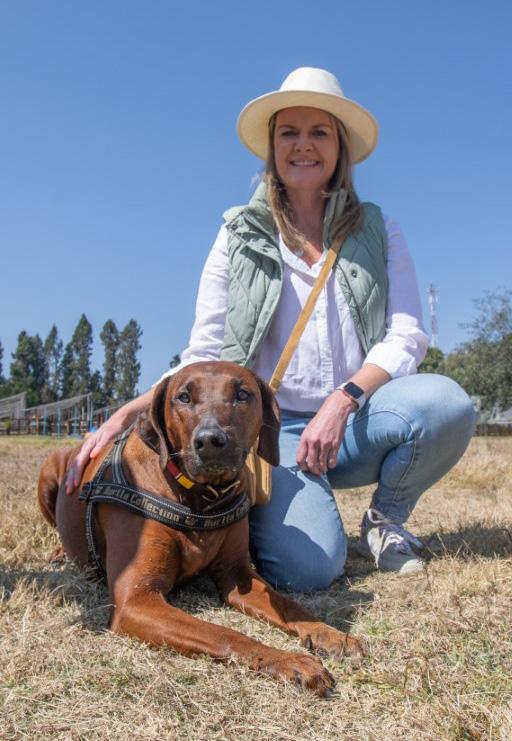
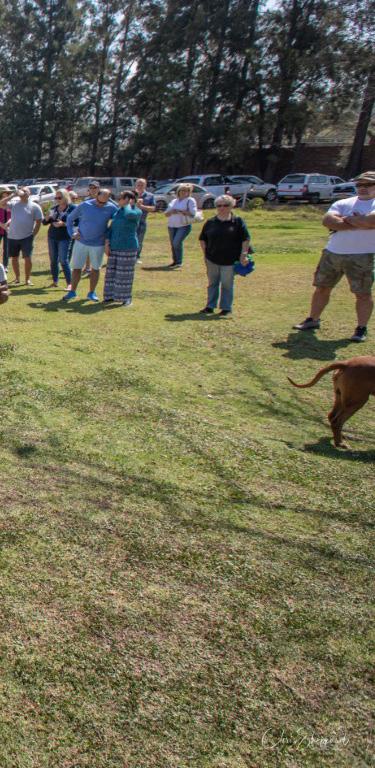

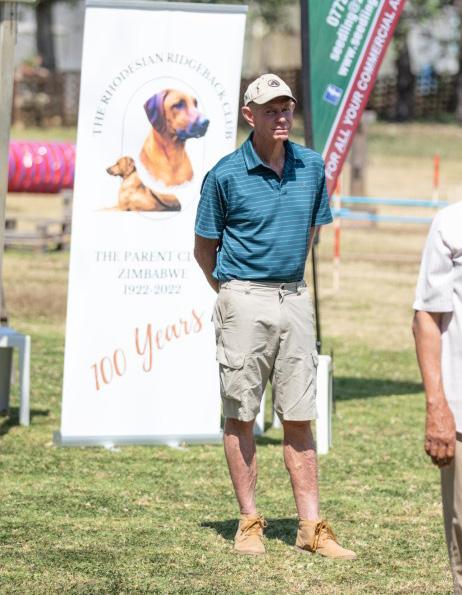


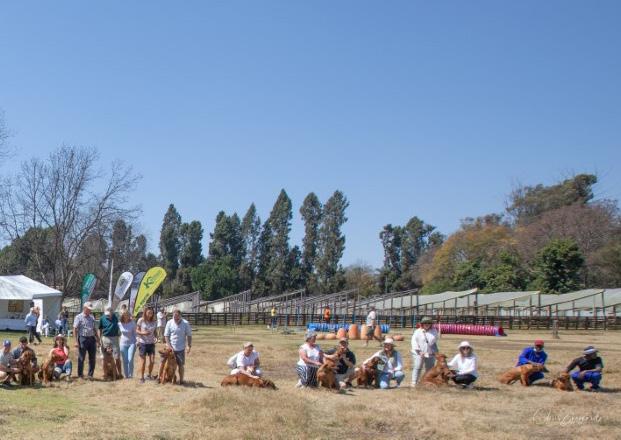



The breed today known as Rhodesian Ridgeback was established in 1922, thanks to the passion, constancy and drive of Mr. Francis Richard Barnes.
Let’s follow the words of Mr. B.W. Durham a prominent witness of those days. Some years later in an article for the South African Kennel Union Gazette (Dec. 1950), Durham wrote:
The chief, if not the sole, credit of getting the breed standardized and recognized by the South African Kennel Union, is due to Mr. F. R. Barnes of Figtree – then resident in Bulawayo. I think it was in 1922 that Mr. Barnes circularized the many owners of “Ridgeback” or ‘Lion Dog”, as they were beginning to be known, and asked owners to bring their dogs to the meeting to be held on the second day of the Bulawayo Kennel Club Show to endeavour to formulate a standard with the object of later recognition by the South African Kennel Union.

The response must have been gratifying to the convenors. A large number of owners attended and well over 20 dogs were paraded. I attended by invitation. These dogs were of all types and size, from what would be regarded as an undersized Great Dane to a small Bull Terrier; all colors were represented – Reds and Brindles predominating.
The convenor addressed the gathering and there was general agreement that a club to £further the interests of the breed be formed.
Mr. Barnes then asked for suggestions as to the standard to be adopted. Owners were reluctant to come forward, each naturally thinking his the correct type.
Finally a spectator with some knowledge of the breed took a dog and suggested that his size and configuration be adopted, then chose another specimen for its head and neck, a third for legs and feet, and, making use of some five different dogs, built up what he considered to be aimed for. A few days later Mr. Barnes compiled the standard, a club was formed, Mr. Barnes’ standard adopted and this, with some later amendments and alterations is the standard in use today.==
It must be noticed that the witness ”with some knowledge of the breed” was Durham himself, at
the time the only “ALL BREED” judge in Rhodesia. Beyond Mr Barnes, Mr Durham and Mr. C. H. Edmonds also took part in drawing up the standard in 1922. Mr Edmonds was a senior Vet Surgeon in South Rhodesia at the time.
But let’s go about 50 years back, to the times of Rev. Charles Helm who, at the end of XX century, lived in Matabeleland, the southern region of today’s Zimbabwe (Rhodesia up to 1980). Helm ran the mission station of Hope Fountain, not far from the kraal of the Matabele king Lobengula, where years later the city of Bulawayo was to be founded.
In 1879 Helm travelled with his family to Hope Fountain from the Swellendam district and he brought with him two -presumably- ridged bitches named Lorna and Powder. His mission was located at a crossroad and rest place for the many travellers, pioneers and traders travelling across the region, as well as for a large number of “white hunters” on the hunt for big African preys, elephants and lions.
Among the people visiting and stopping at Helm’s house there was Cornelius Van Rooyen “Nellis” who lived in Mangwe area, about 90Km south of Hope Fountain. He was one of the most famed hunters at the time and was a good friend of Rev. Helm. Van Rooyen, impressed by Helm’s dogs crossed them with the hunting dogs of his own pack. This breeding resulted in dogs, some ridged, closer to the hunting needs of van Rooyen.
He continued to breed and improve his hunting dogs which started to be known as “van Rooyen dogs”. Many had a ridge.
Today our understanding of the “White Hunters” (thanks to the movies) is of middle aged people, just like Michael Douglas or Stewart Granger, full of wisdom and experiences. Actually, in 1879 when Rev. Helm married “Nellis” van Rooyen, already a renowned hunter, to Maria Margareta Vermaak, Nellis was 19 years old and Maria 14!

Francis R. Barnes, living in Bulawayo since 1910, had been involved with dogs for some years, breeding and showing them. He obtained his first ridged dog in 1915 from Mr. Graham Stacey, owner of a farm near Figtree, who had his dogs from van Rooyen. So the circle was closed between Helm and Barnes, through van Rooyen. Hence the Rhodesian Ridgeback is the result of the efforts of hunters, breeders and dedicated people who have managed to breed dogs and get the best out of some European breeds like the Irish terrier, Great Danes, Pointer, Greyhound
and the Bulldog-not the same of today’s, but taller and more agile at the end of 1800- with the breeds already existing there when the Europeans arrived. At this point it is time for the question: where does the “ridge”, the distinctive mark of the breed, come from?
Almost certainly from the Hottentots– o Khoikhoi, as they called themselves. The Khoikhoi was the population the first Europeans found when they landed in Good Hope Cape region. The Khoikhoi had come from the Great Lakes Region some centuries before and, along with the big horned oxen and fat tailed sheep, they took with them in their migration a small-medium sized dog, 45 cm., pricked ears, with a ridge on the back and bearing qualities of guardian and hunter.
This dog was widespread in the region, so it is likely to have crossed with European dogs brought by the white settlers.This crossing not only did pass the ridge, that unique characteristic, to their offspring, but hunting and guardian attitude as well.
Dr. D. Livingstone “Missionary Travels in South Africa”A few days after writing the standard Mr Barnes together with some friends founded the Rhodesian Ridgeback (Lion Dog) Club sited in Bulawayo. In 1924 the Club tried to have the breed recognized by the South Africa Kennel Union (SAKU, today KUSA, Kennel Union of Southern Africa), but unsuccessfully. It was only in 1926 that the affiliation was accepted by SAKU and the breed recognized as the Rhodesian Ridgeback.
This had been a point in Mr Barnes’ wishes: that the new breed had a name, which would ac-
knowledge the country of origin (Rhodesian) and its distinctive mark (Ridgeback) at the same time. Many others would have liked the name “Lion Dog”, in South Africa in particular.
Mr Barnes registered his dogs (6) on 16 march 1926, among them there was EskdaleDingo, born on 15 May 1915 from Lion and Como. Barnes adopted the Eskdale name for both his kennel and his farm near Figtree.

The kennels we find in today’s pedigree belong to those years:
• Avondale of Mr. T. Kedie-Law from Rhodesia of Mrs. L. M. Dickson who was among the founders of the Club
• Eskdale of Mr. Barnes
• Khami of Mr. G. Stacey
• Kumalo of Miss M.J.S. Vigne
• Munemi of Captain B.L. Miles, who collaborated with the Club for many years
• Revelston of Mr. D. R. Keith from Swaziland
• Rhodian of Mr. A. J. Walker, famous for his hunting pack

• Sandvelt of Captain R. R. Dendy-Rawlins
• Sipolilo of Arthur “Tractor” Smith, great hunter
• Umvukwe of Miss Ainslie
• Viking of Mr. Vernon H. Brisley, probabily the greatest among the breeders of the time and the one who influenced the most the breed in those years.
From 1930 to 1949 Rhodesian Ridgebacks spread all over Southern Africa. Under the British Crown

ruling the region life is easy: there are no borders, there is a widespread enthusiasm, the perception of being privileged citizens and a general welfare in which the white population participates. When the war arrives it is anyway far. It is in this context that the breed establishes and consolidates. In this period the first quality kennels were established, run by dedicated and experienced breeders and passionate people.
Among the most important kennels
• Drumbuck of Mrs. A.M. Smithwick
• Leo Kop of Miss Mabel Wellings, one of the most important of the time which much contributed to today’s bloodlines
• Lions Den, of Mrs. D. E. Strickland who worked for many years in the committe of the RR Club of Rhodesia, till she went back to England in 1950
• De Holi the affix with an Esperanto name of Major T. C. Hawley. He was a famous breeder and also a historian of the breed with his book “The Rhodesian Ridgeback”
• Gazeley of J. B. Bocock, who started breeding in 1947
• Inkabusi of Mrs. I. Kingcome fom Salisbury in Rhodesia, her husband, dr. Martin Kingcome, carried out studies on the Dermoids Sinus and suggested recommendations to the Rhodesian Ridgeback Club in order to defeat it

• Meyendell of Mrs. M. Mooiman from Sandown in Transvaal (RSA).
These years are of fundamental importance for the definitive affirmation of the breed. Some kennels will in fact produce subjects that left their mark in the pedigrees of next generations. The most authoritative perhaps was the kennel Glenaholm of Mrs. Phyllis McCarthy, Pitermaritzburg, Natal, founded in 1951. This kennel is still active today, after 46 years, run by Loraine Venter, Honeydew Transvaal, Mrs. McCarthy’s daughter. But other kennels greatly contributed
• Isimangamanga of Mrs. J. B. S. Yeates who started breeding in the 50s
• Mindemoya of Mrs. F. H. A. Pritchard in Bulawayo
• Rockridge of Mrs. Howard in Johannesburg
• Thornbury of the Greens in Johannesburg
• Maxwood of Mr. S. Cawood in Honeydew, Transvaal
• Mpani of Mrs. Mylda Arsenis in Salisbury, Rhodesia.
Mrs. Mylda Arsenis was an active supporter of the breed, both as a breeder and as a member of The Parent Club where she held various offices. She had her first litter in1964. In 1979 she moved to South Africa.
These years are quite difficult for Rhodesia and have significant consequences for the breeders in the country. In fact momentous events were to occur when the white population claimed on 18 November 1965, with unilateral declaration, the
independence from the British Commonwealth, and a long and difficult time of civil war started.
The war caused several kennels to disappear and others to move to South Africa. The war finished in 1980 with the declaration of independence of the Republic of Zimbabwe. This period was a serious blow for the Rhodesian Ridgeback in Rhodesia, and only after several years since the end of the war the canine heritage of the country could be rebuilt.
In this respect a fundamental contribution is certainly due to Margaret and Sammy Wallace from Harare (formerly Salisbury) with their kennel Mushana. They had started breeding in 1968 and up to today they have produced outstanding RRs exported all over the world and present in the lineage of the best champions in many countries.
Beyond their activity as breeders the Wallaces have also acted as the guardian of the tradition and “culture” of the breed with their action within The Parent Club of which they are respectively Secretary and President. Sammy Wallace also is an International judge of the breed.
Finally among the important kennels it must be mentioned Shangara of Mrs. and Mr. Megginson. They arrived in South Africa in the mid-70s for a short holiday. Today they still live in Verwoerdburg in Transvaal, where they breed RR. Among the many outstanding RRs they bred there is “Paco”, Shangara Checheni, RR of the year 1980, ‘81,’82,’83,’84,’85, winner of 105 BOB, and perhaps one of the most complete RR ever seen.
At the end of Second World War, Rhodesian Ridgeback breed is already known worldwide, except in Great Britain, where the breed became well known soon after its standardization. It is in these years that the breed began to gain popularity outside Africa.
Soldiers always bring back souvenirs from war campains: objects, weapons, sometimes wives. Some G.I. Men took back home some Rhodesian Ridgebacks from South Africa. The first RR kennel was Redhouse of Bill and Sada O’Brien in Boston, who bought three dogs from Major Hawley.
Col and Mrs. Morrie DePass, along with Gene Freeland and Margaret Lowthian were also instrumental in “founding” the Ridgeback in the US. Morrie DePass was the 1st President of Rhodesian Ridgeback Club of USA -RRCUS and his dog, Ch. Swahili Jeff Davis was the first US Champion. The DePass’ brought several RRs with them from South Africa.
In the same period in California Margaret Lowthian and Gene Freeland founded the Lamarde Perro, an important name for the breed in America.
The work of these and other breeders led to the recognition of the RR by the American Kennel Club (AKC) as the 112th breed in November 1955. Since then in the US the breed has developed into a popular dog thanks to the action of the RRCUS: every year about 2000 RRs are registered. American breeders have done and still do a remarkable selective breeding with outstanding results, though developing their own standard, this detracts nothing.
Among the American breeders it should be mentioned:
• Calico Ridge of Diane Jacobsen, California
• Kimani of Alicia Mohr, New Jersey
• Kwetu of Barbara Sawyer Brown, Chicago, IL
• Lionpride of the Coopers
• Oakhurst of the Ruperts
• Raintree of Beachley and Kathy Main
• Rawhide of Louise Lertora
• Shadyridge of Ulla Britt Ekengren
• Tawnyridge of Kay Fanning
• Rolling’s of D. Jay Hyman, Maryland (MD)
• Blanbeeridge of Blanche Brophy and Bee Elliot
• Walgroh of Martin and Betty Walsh, Palatine, IL
• Lamarde Perro Gene Freeland and Margaret Lowthian
The first Rhodesian Ridgeback arrived in GB in 1914, a dog named Cuff who was shown at the Cristal Palace exhibition as “exotic dog”. Thirteen years later a second RR, imported by Mrs. John Player, arrived in GB. In 1932 Mrs Player herself presented two dogs at the Cristal Palace Club Show: Labenguela and Juno. Since then RR breeding started to develop firmly interwoven with that of South Africa, notwithstanding the difficulties due to the British quarantine. The breed will definitely establish in the 50s, with some kennels and dogs which will also deeply influence the continental European breeding.
Among them it is worth citing:
• Mancross of the Mackenzies
• Owlsmoor of Mrs. Hick
• Footpath of Mrs. R. Baily
• Aldonnels of the Jacksons
Closer to our days and in many cases still active:
• Eilack of the Selbys
• Janak of Mrs. Elisabeth Webster
• Matabele of Mrs. Simper
• Mirengo of Mrs. Woodrow, who bred the most prize awarded RR of the UK, Mirengo Mandambo
• Umtali of Mrs. G. Adsett Dixon
• Caldas of the Grimwoods – where in 1984 we saw our first RR from life, the superb Carla.
Up to a few years ago in these countries there was the quarantine, therefore they owe a lot to Great Britain for the bloodlines they imported, as this was the only country, along with far Australia, from which to import freely. The effort made in order to overcome their isolation, led the Swedish to deal with artificial insemination with frozen semen in a scientific and sistematic way. Their approach resulted in a fair diffusion of the breed – especially if compared to the local population, and in the quality of the subjects bred. This action was supported by the efforts of breeders like Pettersson of Loustigens Kennels and Stig Carlson who still today breeds with success.
In Finland the first RR was imported from Svezia in 1965 by Carl-Henrik Lucander. Today with the abolition of the quarantine the situation is much more dynamic, with direct imports from Africa and other European countries.
In these years a great contributor to the breed has been Marianne Gellin and the Club founded at the end of the 80s, of which she is the President.
In this country the fortune of the breed starts with the foundation of the Club from Mr. Hans Muller, international judge and President of the Federation Cinologique International (FCI), and a group of thirtynine RR enthusiastic people. At present the breed is well represented at an international level.
The first Rhodesian Ridgeback in Germany was Rhodus of Leo Kop, bred by Ms. Mabel Wellings. Today the country is very active in breeding, with outstanding subjects and well known kennels.

In the 60s there were two imported RRs: Mwala Mpani of Mrs R. Ricci and Rosette of Mpani of Mr. P. Mario; in the early 70s there was the couple Caldrees Mambo and Caldrees Neredzi of Mr. S. Ricceri and Rockridges’s Thaba Zimbi of Mr.V. Castellino.
Since early 80s, of great importance is the kennel Delle Cime Bianche of Ms. Giovanna Bacchini Carr. This kennel was the only one affiliated to FCI-Enci in Italy up to 1995 when Murenga kennels was recognised by FCI-Enci. In Italy the situation has been somehow difficult because of the lack of a club for the protection and improvement of the breed. Recently, on 16 May 1997 in Tuscany a group of fans and breeders founded the Rhodesian Ridgeback Club of Italy. Every year about 30-50 puppies are registered in Italy.
As a proof of the long standing existance of RRs in Australia there is a curiouos photo of early 1900 showing three nurses of the Australian Army Nursing from the Boer war, with a RR with quite a lot of white on the chest, legs and muzzle and posing very proud of himself. Later, in the 30s, there was an unusual arrive in the country: Mr. Koster, life member of the Parent Club, took with him two RRs on a journey around the world on a yacht. Once he landed in Australia, he gave the RRs in exchange for an Australian Cattle Dog.
This is undertandable considering the risk for the storeroom!
But it is in the 60s that breeding starts to develop in Australia, notwithstanding a quarantine even more strict than the British one.
The first kennel was Serengeti of the Adams in Western Australia.
More followed in those years to cover all the countries’ states:
• Glenrowan of the Morris in New South Wales
• Zambesi in Northern territory
• Chilolo in Qeensland
• Maleema in South Australia
• Ulundi in Victoria
The history of Ulundi Kennels and her owner is quite particular. The kennel was founded in 1968 by Miss J.N. Murray in the State of Victoria. Ms. Murray is from South Africa, where as a child she came in touch with RR. Once she moved and settled in Australia she decided to breed the breed she had so much loved as a child. But she had to face a great difficulty: there were no RRs in Australia!
Only in 1968 did she manage to obtain a RR from the young Serengeti Kennels. Since then she has had a long period of success in Australia and South Africa where she went back again in 1971 and where she continued breeding and showing. In 1984 Ms. Murray moved back to Australia where she still lives in Yea, north of Melbourne. J. Murray is to be remembered for her adventurous life across two continents, but even more as the historical memory of the breed.
Her three books – The Rhodesian Ridgeback 19241974, The Rhodesian Ridgeback Indaba and An Omnibus of Rhodesian Ridgebacks – cover the history of RR from the birth of the breed up to nowdays. Her books are fundamental texts for all the people who want to gain a thourough insight in the efforts and the work which were necessary from many breeders for the breed to develop and establish in a complex international canine context.
The first couple of RR arrived in New Zeland, Christchurch, in 1970, imported from Australia by Mr. Fears: two dogs from Ulundi Kennels. Both became chmpions. In 1973 with Kirrimba of Exmoor there will be the first champion bred in New Zeland. In the country there is a very active Club founded in 1983, with dedicated people capable of producing high quality subjects.
Actually there is no conclusion, for the History of a breed, its breeders and lovers never ends. This short history aims at sketching out the effort of women and men who devoted part -sometimes all their lives, to a wonderful breed and wonderful friends. This history does not arrive to today: the very recent years are too close, but it is always important to remember that at present there are people in the world who, following Francis R. Barnes’ lesson, breed, protect and love Rhodesian Ridgebacks.
I wrote this short history of the Rhodesian Ridgeback breed in 1999, following my involvement in the breed since 1985 when I had my first Rhodesian Ridgeback. I revised it with some minor editing and it is very much as it appeared in 1999. It was first published in my website www.murenga.com no longer available but it can be reached at https://web.archive.org/web/20100111183727/http://www.murenga.com/irr.htm
In searching the internet, this RR history still appears in some RR web sites and I am pleased to republish it in this issue of the EU Magazine.
The aim of this history was to pinpoint some major landmarks in the breed development and the people and kennel who contributed to its establishment. Hence, this history was not meant to be exhaustive or provide detailed historical information and it also reflects my knowledge at the time. More in depth and detailed information can be found in other authors’articles and books.
I hope this short history may inspire and encourage many to study the fascinating history of the Rhodesian Ridgeback breed in more details. I am convinced that knowing its history helps to better understand our breed, the context in which it established and stabilized, and its development as a reflection of cultural changes and perspectives up to present day.
Happy Christmas Season.
Sandra Piscedda WRITTEN BY ING. HANA PÁNKOVÁ
WRITTEN BY ING. HANA PÁNKOVÁ
The year 2022 is important for the Czech Rhodesian Ridgeback Club z.s. (ČKRR), because it celebrates its 30th anniversary since its foundation on 31.3.1992.

The main celebration of this anniversary was planned for the fourth weekend of September 23.9.-25.9.2022. For this event we chose the beautiful Green Valley Resort in Chotýšany, near Prague. The resort offered us an ideal environment not only for exhibition rings, but also for walking dogs, comfortable accommodation and a pleasant hall for evening lectures and banquets.
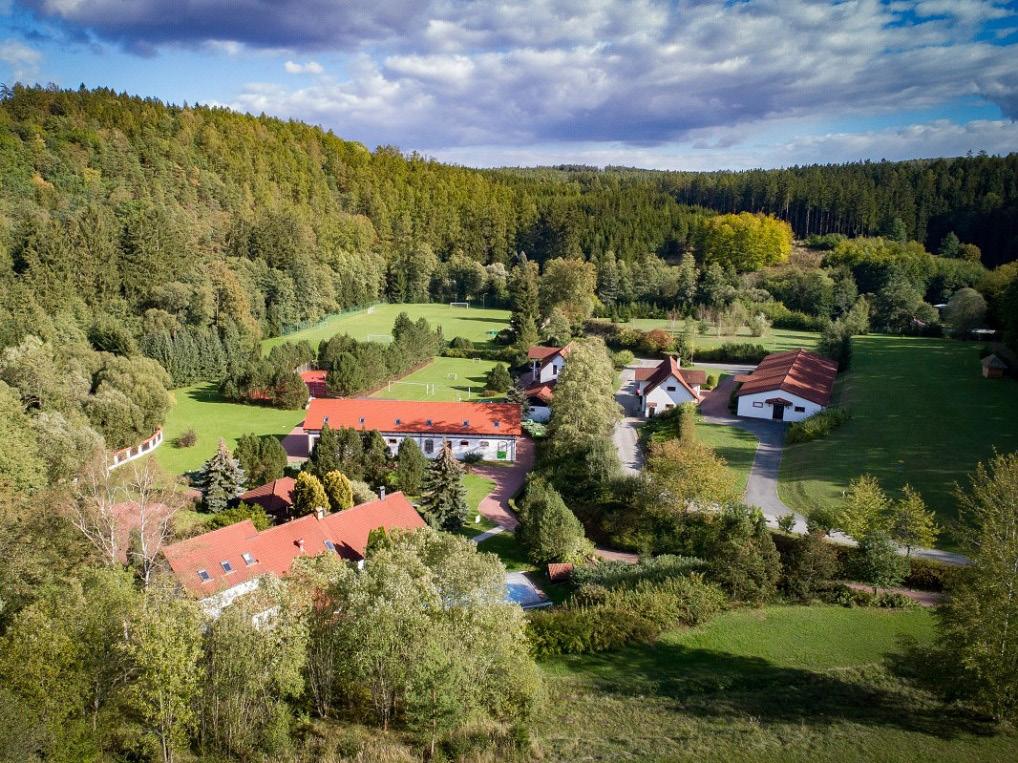

The program that the club had prepared for the visitors was very extensive and a great challenge for us, the organizers.
The program started on Friday afternoon, when the historic first parade of stud dogs in the Czech Republic took place. A total of 42 dogs from the Czech Republic, Poland, Germany, Slovakia and Belgium were registered and finally 34 dogs participated in the show on Friday. Each dog showed itself in stack and movement, and during its presentation in the ring the spectators were acquainted with basic information about the dog in Czech and English. For the event, the ČKRR prepared a catalog of stud dogs. The whole show
was filmed on video and then a short presentation was made for each dog
The catalog together with the video presentation is published on the club’s website.
Friday evening belonged to a banquet and a lecture on the topic: “My view of the standard, breeding and future of RR” by the long-time breeder and owner of the kennel Ayaba Tomislav Trninić (CRO). We would like to thank Mr. Trninić once again for a very interesting and useful lecture!

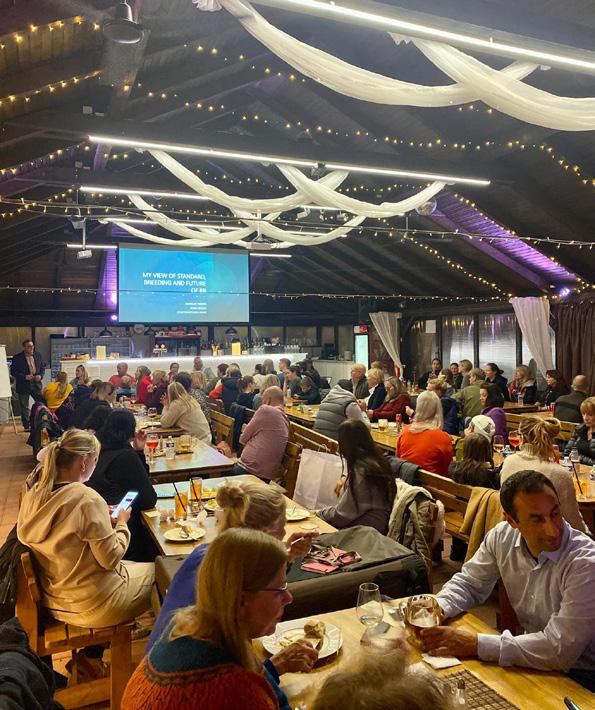
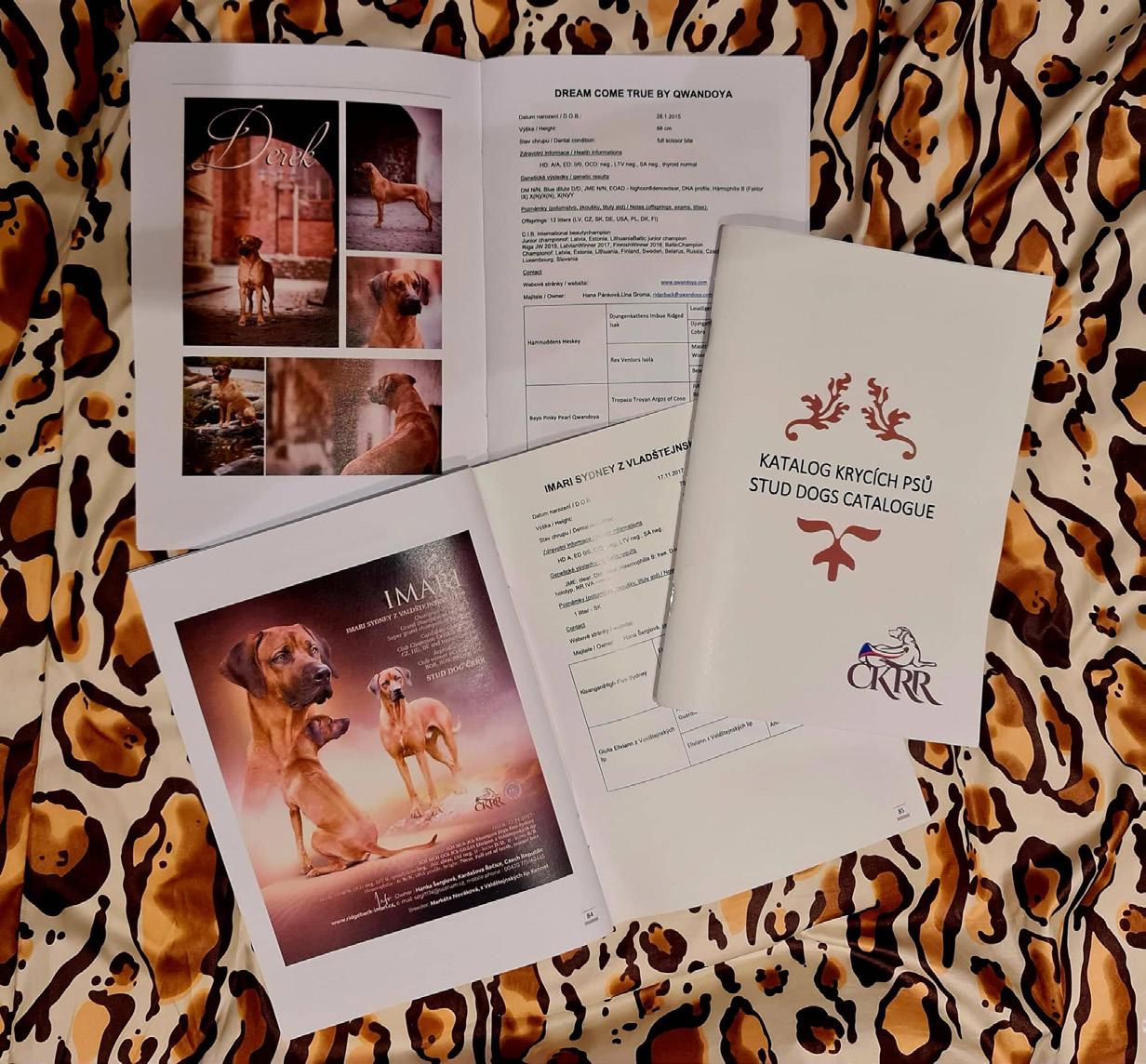
Saturday evening started with a lecture by Mr. Horňák, Ph.D. from Genocan laboratory on the topic: “Genetic testing for Rhodesian Ridgebacks by Genocan”. This was followed by a review of the past 30 years of the club in the form of a prepared presentation accompanied by more than 200 photos. Many of us reminisced and remembered old breeders and dogs who are unfortunately no longer with us. The highlight of the weekend was the club shows. The invitation to judge was accepted by Marielle Tresoor (FR), Kim Hodge (UK) and Stanislava Janická (CZ), who was with her husband when our club was founded. The judges were careful, strict and consistent, but still created a very pleasant atmosphere.
The number of registered dogs was a record for our club and I dare to say that it is even within the club shows in Europe. On Saturday 251 dogs were registered and on Sunday 222 from Czech Republic, Slovakia, Poland, Austria, Germany, Netherlands, Ukraine, Croatia, Belgium, Switzerland and Sweden. A large number of prizes were prepared for the winners by the club, but also by various sponsors, whom we would like to thank for their support.
We started the exhibition on Saturday with drinks in club glasses, which each exhibitor received at the entrance, and with a sweet dessert to celebrate the anniversary of the ČKRR.
https://www.ckrr.cz/chov/kryci-psi/prehlidka-krycich-psu-23-9-2022/

During our two-day exhibitions, we regularly organize a raffle during the lunch break on Saturday, which was also part of this anniversary event. This year, however, we received so many prizes from ČKRR club members and exhibitors that we held a raffle on both Saturday and Sunday. All proceeds are traditionally donated by the club to help Ridgebacks in need, and this year we raised a record amount of CZK 36,000. Thank you for all the gifts and for buying raffle tickets - you are fabulous!
Looking back, I can say that the whole event was great, the weather was very good, the judges and exhibitors were fantastic and I hope that we will all remember this event for a long time to come
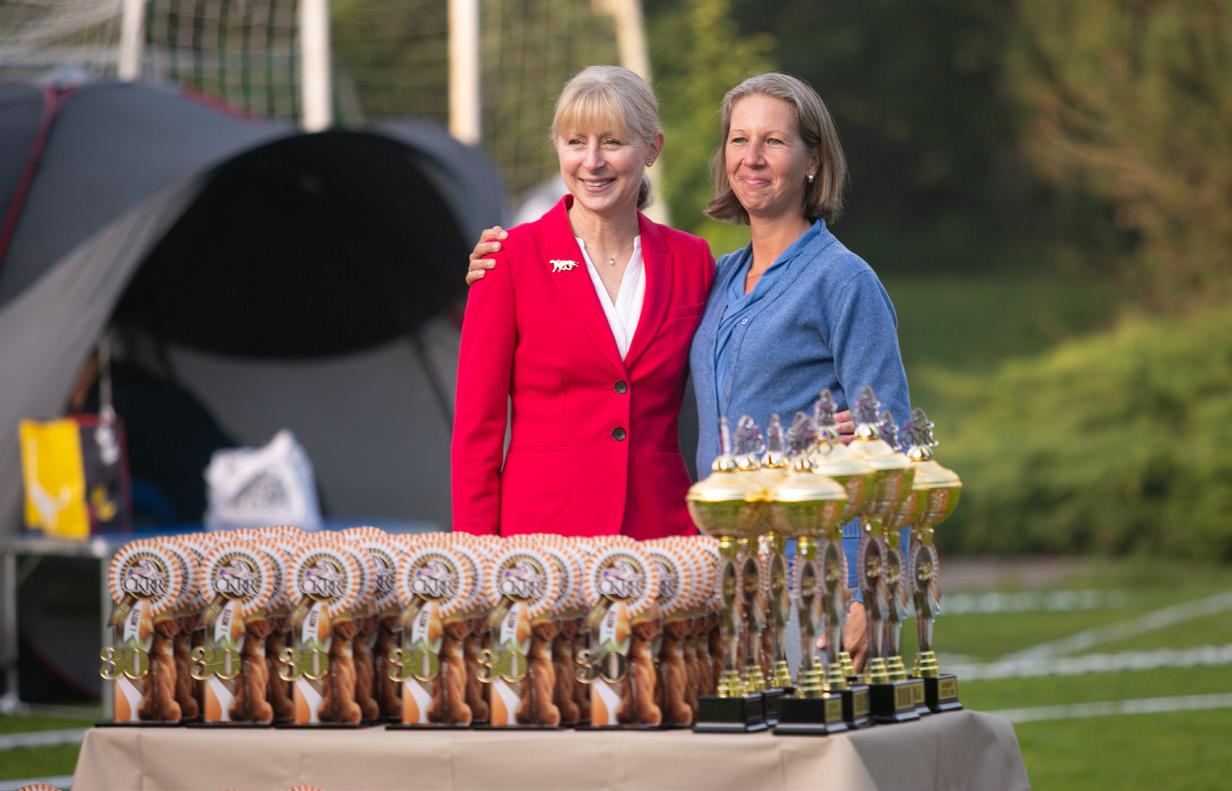

Thank you to everyone who was involved in the preparation of this event - I think we are a great team and the hard work was definitely worth it!
We look forward to seeing you all again next year at Green Valley Resort from September 22, 2023 to September 24, 2023. SAVE THE DATE !
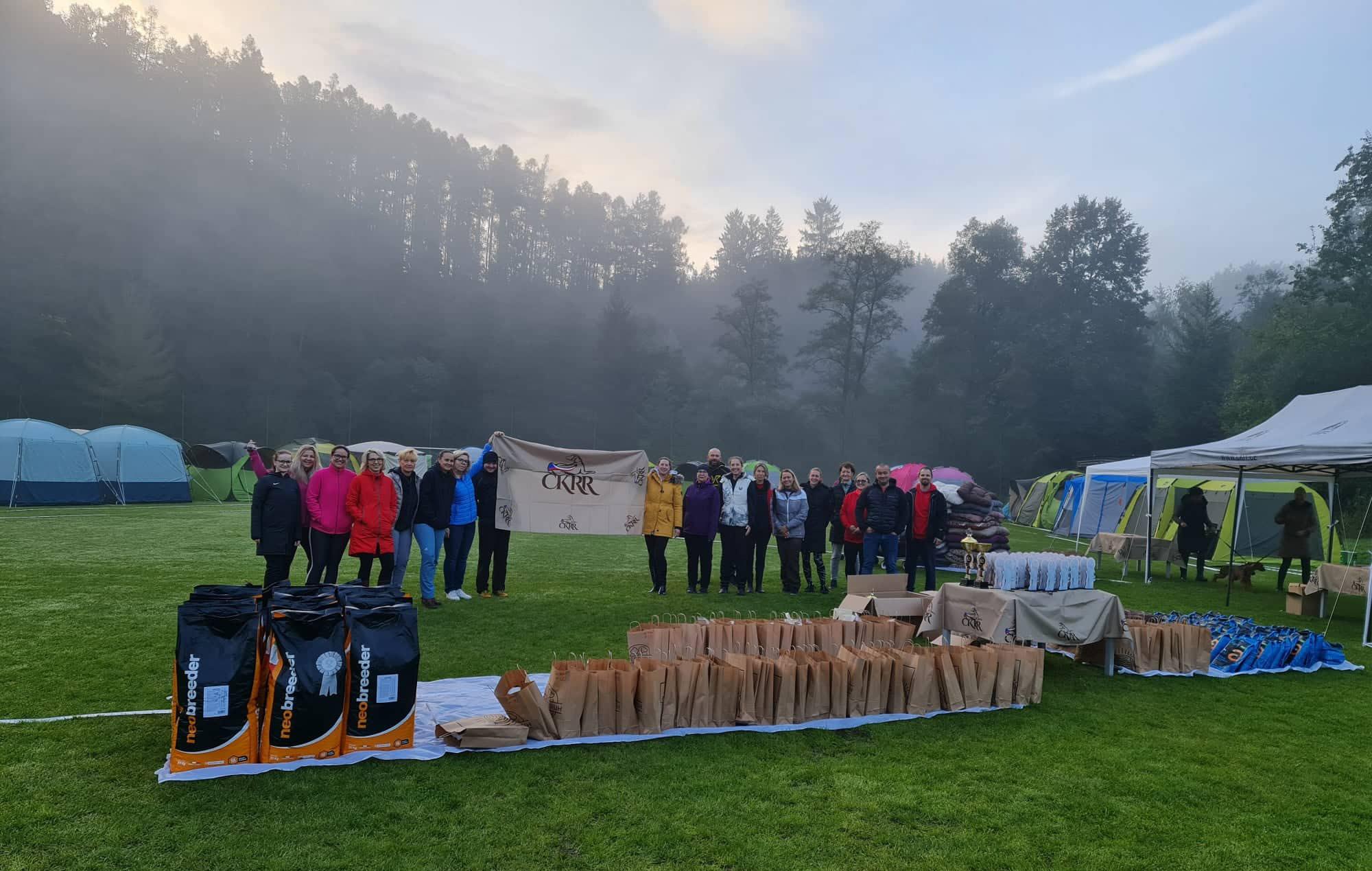
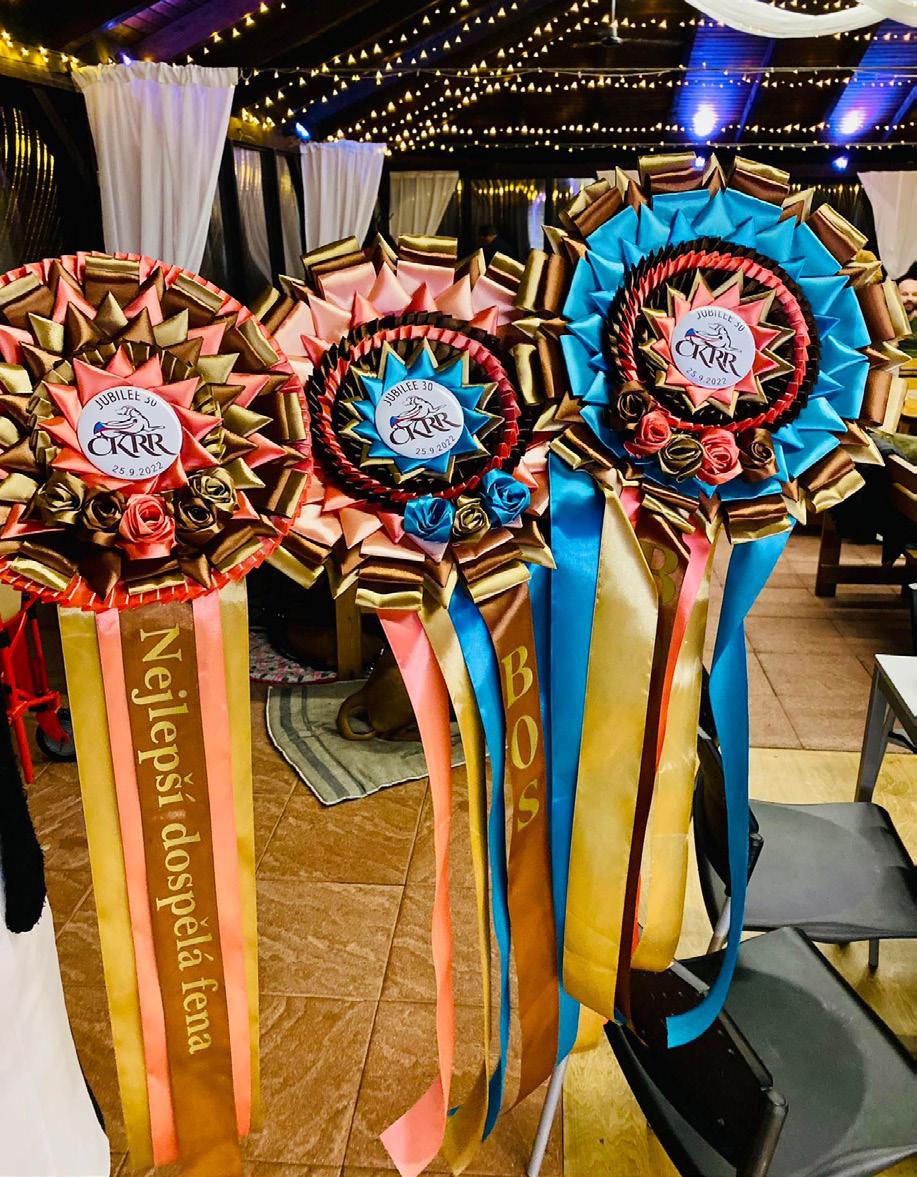




COMPETITIONS RESULTS (Saturday afternoon)
BEST BREEDERS GROUP


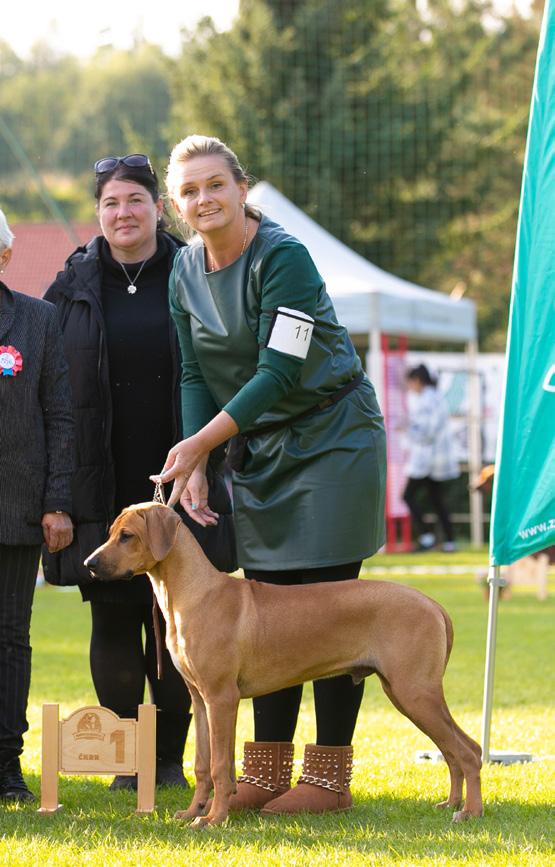
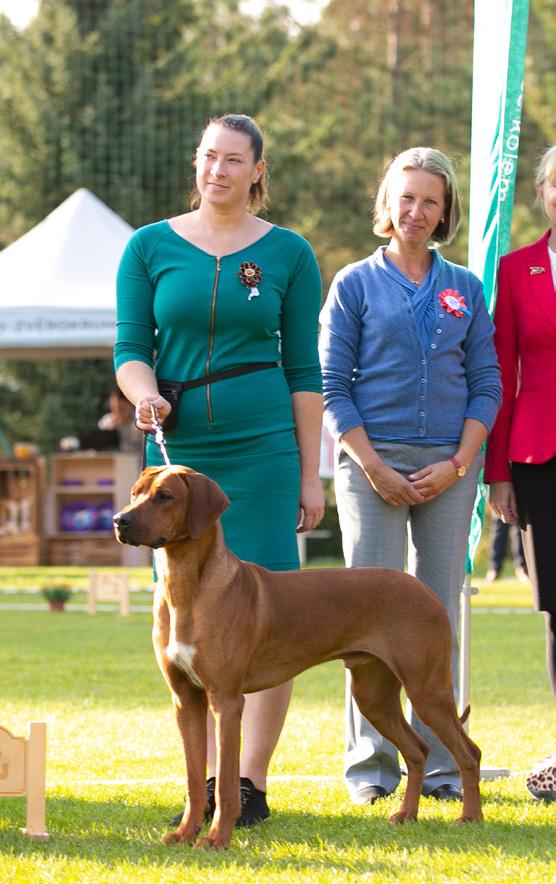
1 - Qwandoya
2 - Bohmesi
3 - z Valdštejnský lip
BEST COUPLE
1 – Girl in trouble Sangoma + Gambit Sangoma
2 – Keep in my heart Emma Slunce Zambezi + Once Upon in Time Slunce Zambezi
3 – Ambitious Atom Viva Reeva + Ambitious Aprilia Viva Reeva
BEST PROGENY GROUP
1 – Dream Come True Qwandoya
2 - Manzili Maliik Slunce života
3 - African Dragon of Sangoma
CHILD &DOG (younger category)

1 – Jakub Vlček + Cara Ravenna Gaudiwa Musana 2 – Apolenka Buchertová + Grace Safira Wandellmere 3 – Kristýna Minksová + A´Zari Ilanga Munyati
CHILD &DOG (older category)
1 – Natálie Astalošová + Beatris the Brave Kentani 2 – Eliška Miklušáková + Zoraya Manwe
3 – Lucie Hrabová + Abigail Charlotte El Bohmesi
BEST HEAD DOGS
1 – Sixth Sense Qwandoya 2 – Once Upon a time Slunce Zambezi 3 – Cambridge´s Cooper To Kipanga
BEST HEAD BITCHES
1 – Lara Grace Wandellmere 2 – Catch a Falling Star Lebombo 3 – Mom´s Angel Juliet Slunce Zambezi
BEST Junior
1 - Cambridge´s Cooper To Kipanga 2 – Nelli z Tikovického vršku 3 – Aaron Reese Hannah Bohemia




1 – Caiden Kili Gaudiwa Musana 2 – African Dragon of Sangoma 3 – Dream Bucky Barnes z Újezda nad Lesy
MOVEMENT BITCHES 1 – Girl in trouble Sangoma 2 – Binah Aisha Bohmesi 3 – Mom´s Angel Juliet Slunce Zambezi
25.9.2022
BOB
Cake Casper Dragons of Highlands BOS

Quellebelle Gia Qwandoya
BEST VETERAN
Macumazahn Qwandoyas Top Gun
BEST JUNIOR
Rumi Ayaba
BEST MINIBABY
Khal Drogo Energy of Africa
BEST BABY
Zamzam Lakota Löwenschwanz

BEST PUPPY
Skyllar GM by Qwandoya
BEST HONOUR CLASS
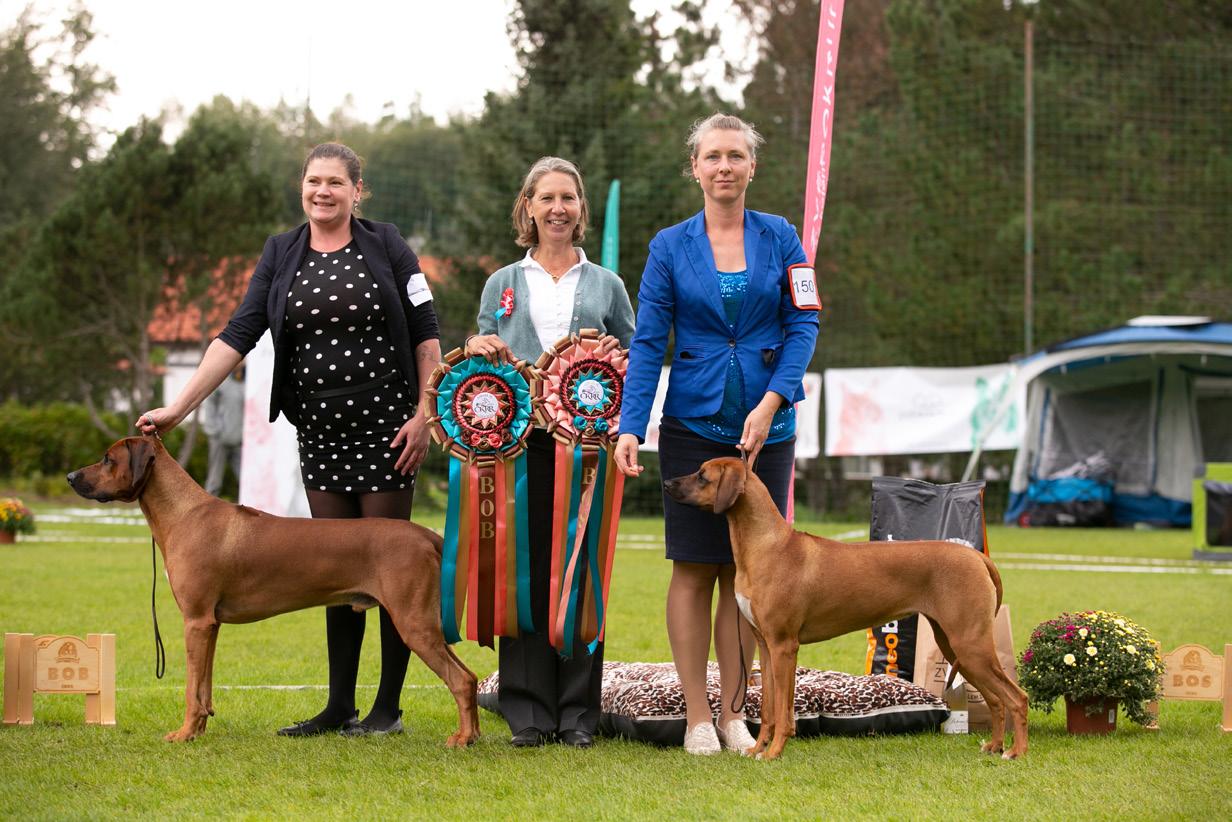
Celeste Crystal Energy of Africa
BOB and BOS Best Veteran Best
opportunity to say thank you to every single exhibitor for bringing their beautiful hounds to be judged.



Long before I arrived in Czech Republic, I heard the Rhodesian Ridgebacks in this part of Europe are of very good quality, and knowing many of the judges who have judged this show in past years, I was told of the incredible hospitality and of the great camaraderie amongst the exhibitors. The bar was set high in my mind, but whatever my expectations were, they were completely exceeded from the first step I took into the hotel.


Thank you to the CKRR Committee for the invitation to judge at your fabulous 30th anniversary Jubilee show, it was an honour to judge the phenomenal entry and I would love to take this
The atmosphere was buzzing on our first evening at the host hotel. Many exhibitors were busily settling in for their weekend ahead, and with a de-
licious meal and a glass of lovely Czech wine our weekend began. We stayed for the first half of the presentation by Tomislav Trninić from the famous Ayaba Kennel, but knowing what a busy day we had ahead of us, we made our excuses and left to ensure a good night’s rest.
The first morning of the show was bright and beautiful sunshine - perfect temperature for our hounds. Our arrival at the showground confirmed both the high entry numbers and the organisational excellence of the committee - everything laid out to perfection; rings, shade, trophies, awards, prizes, tombola… everything looked wonderful. We were straight to work meeting our scribes, taking some official photos and discussing the huge day of judging ahead. Stationed in Ring 1 for the day, I was assigned: Veteran Male, Honour Male, Junior Male, Intermediate Male, Open Male, Working Male and Winner Male Classes, and then the great honour of awarding Best of Breed, Best of Opposite Sex, Best Breeders Group, Best Headed Male and Best Movement Male.
As the classes entered the ring, the quality was in abundance, the handling of a high standard and the dogs all in wonderful condition. The judging made for some difficult decisions and some placements were splitting hairs, but class by class the placements evolved and the winning lineup complete.
Next came the Best of Breed and Best of Opposite Sex. It was great to see the bitches my fellow judges Marielle Tresoor and Stanislava Janická had put forward. Such beautiful examples and such a great honour to select El Roy Arte Cassari as Best of Breed and Quellebelle Gia Qwandoya as Best of Opposite. Congratulation to the owners and breeders of these two beautiful dogs neither of whom I’d ever seen before that magical day… not even a photo!
The Breeders, Best Headed Male and Best Moving Male were a delight to judge, and many times I said under my breath “wow” when examining the exhibits.
Tired but buzzing we had a quiet but fun night in a small restaurant off site, it couldn’t have been a better atmosphere for us to talk about the day we had just had and the classes before us on Sunday.
After a good nights rest we were back at the showground, for me it was a complete change of gear for I had a day of Male and Female Minibabies, Babies and Puppies, and then Veteran Female and Honour Female classes. Well, my job was to ensure the babies were to have the best time of their lives - I was so impressed with the classes filled with very promising babies and puppies. The 9 week old star had so much breed character - it was like he knew when to stop and he knew when to put his four steps of perfect performance on, just as I looked at him! Congratulations to the breeders and handlers of these fun but important classes, what wonderful puppies you all have to enjoy, I very much look forward to following their progress. The veteran class filled me with memories of my time in the ring with my past girls - the relationship between owner and dog is so strong and so beautiful to witness. What excellence, what quality throughout. The Honour class left me with tingles - the movement of the bitch who won the class was exceptional.
My job was done. It was time to depart the show ground, but of course there was more the club had organised for us. We were taken to a beautiful hotel in Prague to enjoy our last day before the flight home in this magnificent city. If you haven’t visited, I strongly recommend it!
Of course I have to say thank you to my scribe Svatava Beránková. Her good humour and patience was so appreciated.
The CKRR Committee should feel rightly proud of the exceptional weekend they produced. Congratulations to all the winners and to all those who placed. Your dogs are a credit to you all. I very much hope to see you all again one day.
With so much gratitude Kim Hodge
the important things, great prizes, beautiful trophies and rosettes, amazing raffle!
I admire all those who prepared this event, especially mothers from children, time is not wasted and everything was really sophisticated, so from the point of view of the exhibitor and me, as a judge.
Females had good bone, which used to be rare in past. Short bodies dissapeared, lenght of muzzle has improved altogether with too expressive stop, only maybe two females from all were quite cheeky. Sloping toplines and steep croups hav improved which I appreciate, because this improved the movement.
I really want to say “just a few” words.
The exhibition was perfect, beautiful, the place was great, the weather was good which is one of
Steep front angulation, caused in my opinion because of shorter humeral bone, sometimes steep wrist with legs standing too much on toes, deviat-
ed position of toes – that all has influence on front movement – paddling and twisting. Also some lighter eye colour.
Anyway, a shift for the better, I was very impressed by so many nice dogs, there were many to choose from.
My biggest hero was tiny baby male, how confidently he walked around and behaved.
Club should be proud of how many foreign exhibitors have come. Also level of showing the dogs was very good, exhibitors has learned a lot or have handlers so nobody is doing bad job for the dogs.
I can say that times of heavy dogs with molossoid heads and bad toplines are gone. The same for bitches with too light bones and tiny heads with light muzzles “foxes”, at least young bitches were well built. Of course, it will never be perfect in all of them, there are lines with these lighter types, but in reasonable rate, they can also be used .
Thank you for the opportunity to be there!
Stanislava Janická FCI judge
or strength in the foreface which makes them lose the typical Ridgeback expression.
I was happily surprised with lots of bitches and dogs with good fronts: good width, depth, and amount of forechest together with correct angulation.
It was a real honour to judge the Czech Clubshows on the Saturday the 24th and the Sunday the 25th of September and I would like to thank the committee once more for the invitation.
Your Club shows are held in the most wonderful circumstances; outside with lots of space for the dogs and their humans. And with such a marvellous prize table! Fortunately, the weather conditions were very good so the Ridgebacks were able to enjoy being out in the open.
On Saturday I judged 89 females in the junior, intermediate, open, working and winner classes.
The Sunday, 70 males were entered in the classes veteran, honour, junior, intermediate, open and winner.
It might have seemed that I wasn’t too generous with awarding excellents notably when judging the females on saturday, but in general I have seen quite a lot of excellent Ridgebacks and the Ridgebacks on both days were of high quality.
There was no need on both days to qualify any Ridgeback with a lesser qualification than a very good, nor did I have to disqualify any Ridgeback during the days.
There was only one female which couldn’t be judged because she was too scared to be touched. Something that will come right with practice.
I have noted that quite a few female heads in the junior and intermediate class lacked length and/
Saturday’s best bitch is an excellent example of the breed: she is elegant and feminine but with the right amount of substance and muscles, symmetrical in outline and balanced all over.
Most males had the right amount of masculinity with lots of substance without being too big nor too coarse.
My best male on Sunday, winner of the open class, is of excellent breed type with a very sound, balanced construction and movement.
I was very moved by the veteran males: such beautiful specimens of our breed and all in such a wonderful condition for their age.
Also, all males have behaved extremely well in the ring and almost all dogs were easy to examine.
All the different classes after the regular showing on Saturday were not the easiest to judge, but it was wonderful to see the big breeder groups and the stud dog groups.
Overall, I was impressed by the quality of the Ridgebacks presented on these two days and I have very much enjoyed judging them!
Mariëlle Trésoor

The book is addressed to both owners and breeders. On 400 pages, you will find such topics as the breed history, its character, puppy choice, dog care, upbringing and nutrition, health issues encountered in the breed. The breeding part includes discussing the breed standard, anatomical structure and its impact on dog movement, the basics of genetics. I discuss such issues as preparing for reproduction, pregnancy, childbirth and rearing puppies. The PDF file made available to readers includes the table of contents and an excerpt from the first chapter of the book. Enjoy!

The Basic tool you need is a camera. Of course you can take pictures with your phone, but they usually have wide-angle lenses, which will disturb the puppy’s proportions and do not allow you to choose the best settings.
In the camera-lens set, the more important element in our case is the lens. The best results will be obtained by using tele zoom that will allow you to take a photo with a blurred background and properly reflect the puppy’s proportions, but they require more space, so it will be difficult to use them indoors.
If you are planning a session at home, a lens with a focal length of approx. 50 mm will be best, if you have a garden at your disposal, I recommend starting with 70 mm or 90 mm focal lengths.
The second element worth paying attention to, if you are just planning to buy a lens is its brightness. The lower the value that defines it, the better, but of course the more expensive the lens. The minimum brightness is f. 4.0, but 2.0 or 2.8 are even better values.
Both the focal length and the brightness of the lens can be read on its housing.
24-35 mm – focal lenght


F 2.0 (1:2) - brightness
Sometimes the brightness of the lens is given as a range, as on the photo, from 3.5 to 5.6. This means that the brightness of 3.5 is possible only at the beginning of the focal length, at 18mm, so at a wide angle. At 55mm the brightness of the lens is only 5.6, so when we take close-ups, the lens is already much darker.
The value of 3.5 or 5.6 is the aperture value that determines how much light enters the lens. Let’s take a moment to explain
In photography, light is everything, without light there would be no photography. The amount of light that is needed for a photo is specified. How it works? In simple terms - light enters through the lens, passes through the lenses and falls on the sensor on which the image is recorded. Photographer job is to let the right amount of light fall on the sensor. If there is too much of it - the image will be overexposed, too little - it will be underexposed, too dark. In the camera we have 3 el-
ements that determine the amount of light that gets inside. By manipulating these 3 elements, we will get a different effect in the photo. If we let in more light by one channel, we can let in less in others.
ISO - setting the sensitivity of the sensor, Time - how long the light will fall on the sensor, Aperture - how much light the lens will let in.

If we choose the AUTO function, the camera will select the values of these three light channels on its own, but if instead of relying on the camera, we choose the settings ourselves, we have a chance to get the photo we want.
ISO – indicates the sensitivity of the sensor to the light. It is expressed in numbers, and each subsequent value means twice as much sensitivity as the previous one.


Choose the ISO according to the current conditions in which you are taking the picture.
The time, expressed in fractions of a second, determines how long light enters the lens. Taking photos “handheld”, without the help of a tripod, the chances of a still frame are when the time is not longer than 1/60 sec. Since the dog we are taking photos will definitely move, it is worth starting with the settings of 1/200 sec. The shorter the time, the more it “freezes” the movement on the photo.

Exposure time – 1/60s, too long
Exposure time – 1/2500s
The time setting should be adjusted to the speed of the moving object.
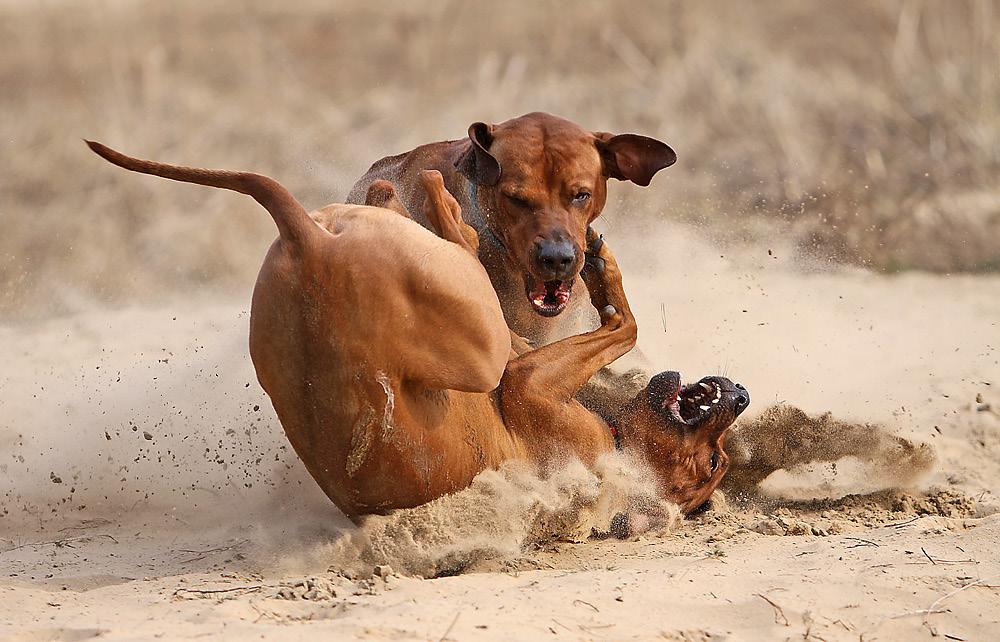

Aperture - it is a system of plates in the lens that folds and unfolds, depending on the size of the aperture we choose. The smaller the number (the less we cover), the larger the opening - the more light comes in.
Aperture determines also how much of the background (behind and in front of the subject) will be blurred. In other words, how much of the image will be sharp. The smaller the aperture, the less sharp it is (the more blurred the background).

Instead of the automatic mode, you can use the semi-automatic mode, where YOU decide to set the shutter speed or aperture, and the camera will choose the rest of the settings itself.

Av-A = aperture mode
Tv-S = shutter (time) mode
Since the puppy will definitely move, select the mode - time priority and set the time to 1/100 or 1/200 s so movement will be frozen on the photos. The camera omits 1/ when displaying the time, so you will only see the denominator.

With the same camera settings, the distance of the dog from the background will make a big difference.

The farther away, the more the background will be blurred.

The light source is another thing to consider. Ideally, it should be horizontal, and not illuminate the dog from above, because then it will be harder to control the shadow. If you are planning a photo shoot in the garden, choose a morning or late afternoon when the sun is low on the horizon and position your dog sideways to the sun. If you’re taking photos indoors, you’ll need to experiment with different windows. You can also use the lamps by placing them at the level of the dog (not from above), on 2 sides as shown in the picture.
Choose how the camera measures light. If the scene you’re shooting is evenly lit, with no areas of contrast (light/shadow), it won’t matter as much as it would in a high-contrast scene.
If you are photographing a dog with a contrast background and want the dog to be well lit, choose center metering or spot.

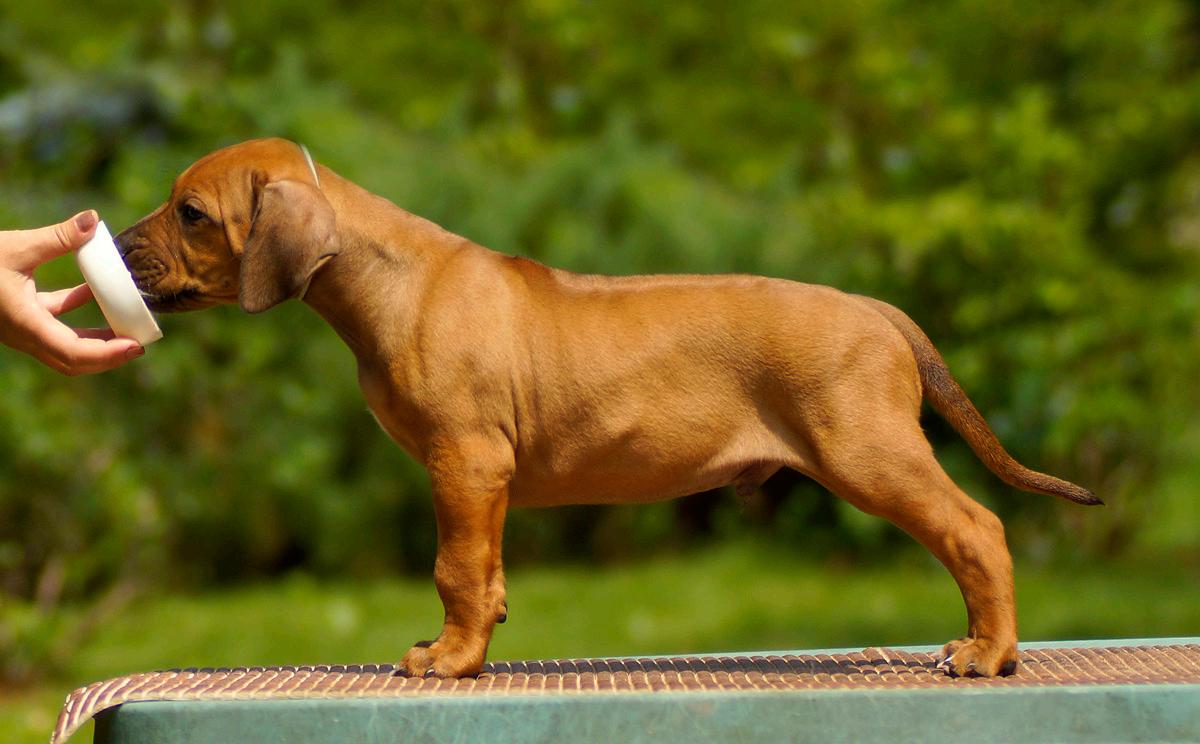



Background - if you are photographing in the garden, choose a background with no vertical and horizontal elements, the best is uniform. If the photo will be taken at home, you can set the dog against the wall, or hang some fabric in the background.

Two people are needed to take pictures, a photographer and a person who sets the puppy.
The photographer should be in such a position: The axis of the camera is parallel to the line of the dog’s spine. Camera halfway up the dog, lens at heart level, halfway down the chest (not the dog).
We take pictures when the dog is slightly sleepy (not sleeping and not extremely active). As a help, we need something tasty in a small bowl to lick, e.g. cream cheese, butter, pâté.
The dog cannot be photographed after a mealhe will not want to eat, he will have a big belly, that will not look nice on the picture.
We start by putting the bowl on the table, in the right place (where front of dog should be), then we put the dog there. We let him eat from the bowl, lifting the front to align the front paws in one line - if necessary. Then, we slowly lift the bowl with the right hand, and with the left we begin to position the hind legs.
We do not grab the dog’s paw suddenly, we start by placing the left hand at the height of the shoulder blade and slowly move the hand to the limb, stopping below the knee, now we can lift the paw slightly up and move it to the target place. We do the same with the second paw. We make sure not to move the bowl during this.
All movements are performed in slow motion. When the hind legs are in the right place, we slowly lift the food bowl so that it is at the level of the dog’s back, in a horizontal position.

We make sure with the photographer that the puppy is standing well. Certainly, from time to time the dog will move a paw, we correct its position calmly and slowly, which increases the chance that the puppy will keep it in the right place for a while. Fast, nervous movements will make your puppy fidget and become uncooperative
If you plan to take pictures on the table, it’s a good idea to get your puppy used to it earlier. If the first contact with the table will be at the time of the session, it will reduce the chances of good photos.
From the age of 4 weeks, I give the puppies one meal a day on the table, individually, so that they have good associations with it and are not afraid to be on the table during the photos.
On the table, we place the substrate to which the puppy is already accustomed, e.g. Drybed, so that it does not slide on the surface.
It is also worth getting the puppies used to moving surfaces, e.g. a balance disc, etc.
You need a second person to help.
Choose the time of day for shooting, so that the light is horizontal - outside - in the morning or after the evening.
Place the table far from the background - you will get a blurred background.
Place a non-slippery surface on the table, but make sure that it does not have very intense color, because it will act as a blend and its color will be reflected on the lower parts of the dog’s body.
The puppy must not be awakened from sleep for the time of the photos, but it must also not be in the phase of the greatest activity.
The photographer should place the camera parallel to the dog, halfway up his height.
We select the time/shooter mode in the settings and set it to a value between 100 and 200 (1/100sek – 1/200sek), because the puppy is a moving object.
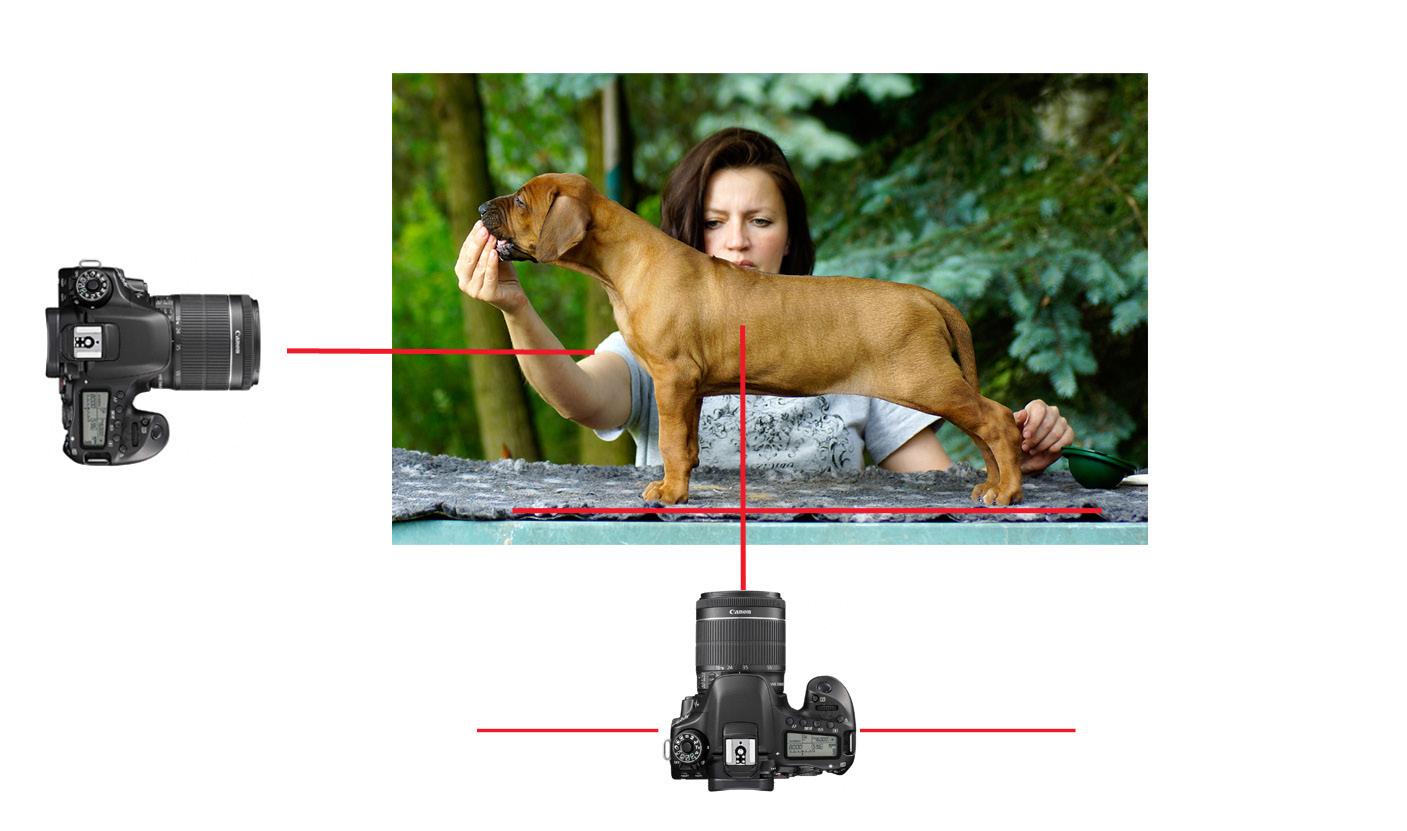
In the settings, select the Light metering mode for central or spot.
Let’s start!
 PUBLISHED BY RHODESIAN RIDGEBACK CLUB D’ITALIA
PUBLISHED BY RHODESIAN RIDGEBACK CLUB D’ITALIA
The long coat topic recently, has been subject of growing interest, probably linked to the diffusion, in social media, of images with dogs featured by this long coat, which is certainly uncommon for RR and far from the breed standard. In fact, as described in the breed standard, the coat should be: ‘short and dense, sleek and glossy in appearance, but neither woolly nor silky’ (FCI Standard N° 146 / 10.12.1996).
Notably these dogs have drawn the attention of many people, interested by this specific trait and wondering if they were coming from crossbreeding (e.g. English setter, Leonberger, etc.) or born by pure breed Rhodesian ridgeback parents. Let’s clarify that it is about a topic concerning the breeding selection and the genetics which defi-

nitely deserves an accurate in-depth analysis in a field that RRCI, for some time, is investigating to provide, possibly, a technical contribution in the appropriate forums and in accordance with the mission of our Association (among the institutional purposes, we remind, there is also the monitoring of the state of the breed under the morphological, genetic and health views, with particular attention on its evolution and related issues).
We are therefore talking about hereditariness: the “guilt” of the “long coat” is a recessive gene, guarded in the genetic heritage of our crested friends. Based on that, there is no doubt that the long-haired ridgebacks exist, and they are by no means the results of imaginative crossbreeding between different breeds. On the contrary we can also say that a dog (phenotype) presenting the
long-haired coat is certainly the son of two subjects carrying this gene.
Hence, the crucial issue would be the capability of identifying the carriers, to avoid passing on this feature to the progeny, thus limiting the risk of its greater spread in the breed.
The circumstance which led to the in-depth action undertaken by RRCI on the topic of long coat dates back to December 2016, when the Rescue service causally reached two dogs with long hair, during an operation conducted after a reporting of the zoophilic guards ENPA for rescue and relocation of a Rhodesian ridgeback group, kept in conditions incompatible with their nature and generating serious suffering for the animals (undernourishment, detention in adverse and extreme environmental conditions).

In this group – we refer to dogs used for reproduction - there were also two dogs featured by such a long coat trait.
After that each of them was cared and adopted, in the following period of time it was tried to better understand the parents and descendants, and this not for sterile cognitive purposes, but in respect and compliance with the precise institutional tasks of the our specialized Association.
Unfortunately, in fact, as a result of the health and diagnostic investigations conducted on these dogs, it was found that some of them, not only had obvious morphological characteristics deviating from the standard – such as long hair - but they were also suffering from genetic transmissible pathologies (e.g. dermoid sinus, hips and elbows dysplasia).
Being hereditary characteristics and being dogs repeatedly used in reproduction, it appeared necessary, as well as highly recommendable for the breed protection, to try as much as possible to identify their progeny.
As a result of this research, it was highlighted the presence of long-haired dogs (coming from that group of dogs) in the areas of

Emilia Romagna, Tuscany, and Lombardy: one among them presented both long coat and dermoid sinus (not previously diagnosed and subsequently surgically eradicated with success).
In 2018 - again through the Rescue service – another long-coated dog (a spayed female) from Tuscany was successfully rescued and adopted.
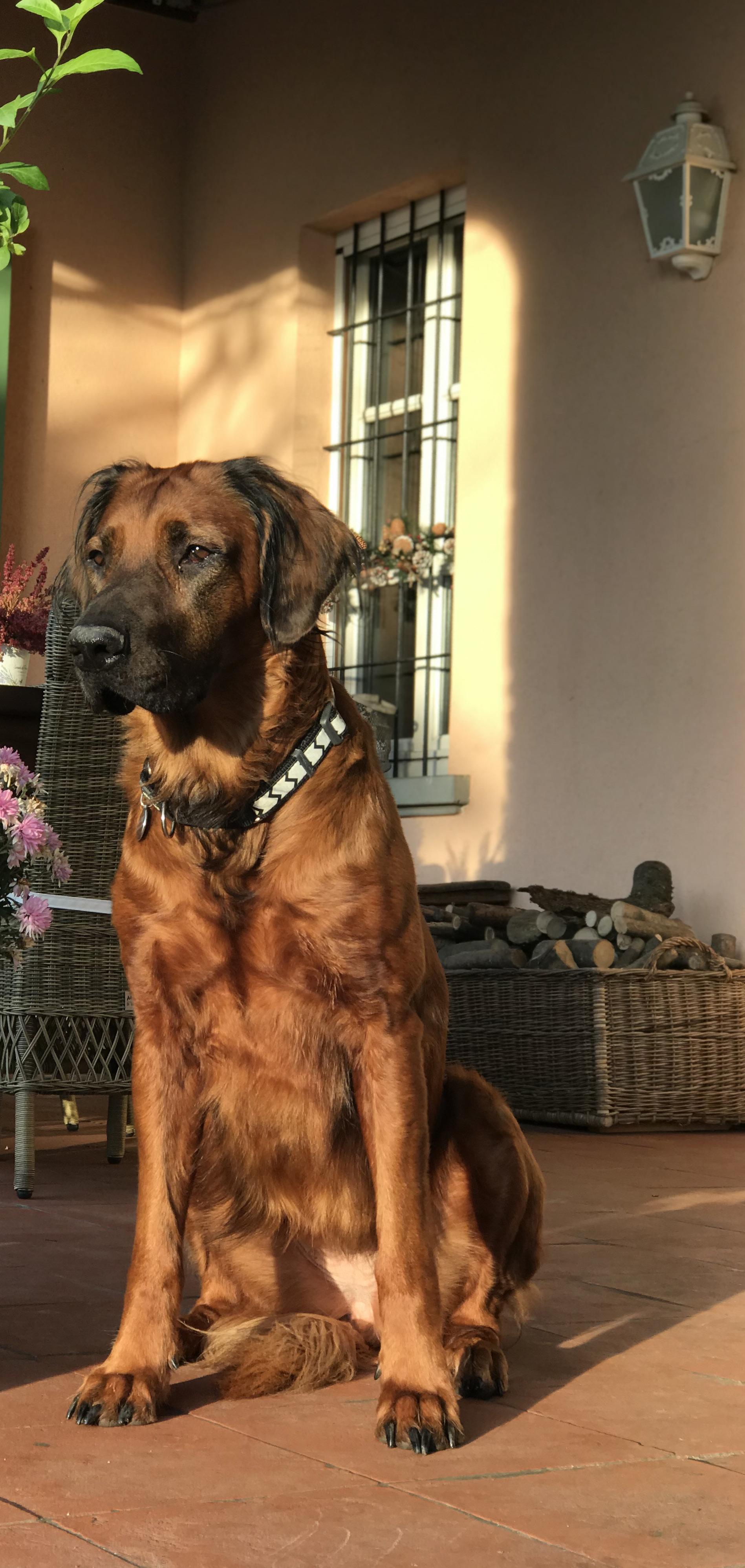
Based on first feedback coming from an international consultation (investigation currently in progress), it was reported a presence of long hair coated Rhodesian ridgeback dogs in France, Germany, the United States and Canada.
Notably because of the genetic inheritance of this morphological trait and its deviation with respect to what indicated by the Breed Standard - in a concrete attempt to block its greater diffusion - in 2018 RRCI has filed an official request at ENCI to obtain the release of differentiated pedigrees for RRs with a long-haired coat, with the wording: “subject unsuitable for reproduction”, this just mirroring what already requested and obtained a few years earlier for the Rhodesian Ridgeback suffering from dermoid sinus.
The rationale is the same: given that even for the long-haired coat we are in front of a transmissible hereditary factor (in this case exclusively linked to morphological traits and not pathological diseases), it is worth the general rule that these dogs, having this characteristic and descending fromparents registered in a recognized Book of Origin, are granted with the full right of obtaining the genealogical certificate (as a reminder this certificate does not prove the “quality” of the dog but its
origins only), just like all their litter’s brothers and exactly like puppies affected by dermoid sinus. At the same time, however, it is also required to find an official tool to formally specify the prohibition of use in reproduction, considering the hereditary transmissibility of such a trait.
This instrument can only be the differentiated pedigree. In the Code of Ethics of the ENCI breeder, that every breeder should well acknowledge and especially respect, it is directly recommended not to sell unregistered dogs and to breed healthy dogs only, without manifest diseases or impediments to a correct functionality or carriers of detected hereditary pathologies.
It is therefore implicit that they should only breed dogs in compliance with breed standard and free of both hereditary pathologies and morphological transmissible defects.


ENCI with the communication nr 6280FC/AP of April, 1st 2019, subject to opinion of CTC, has positively accepted this request and formalized the actions established in this regard. From that date, therefore, the dogs, declared by the breeder as long-hair coated, have the differentiated pedigree indicating the following statement: “dog not suitable for reproduction”.
It is a valuable tool that we hope all the breeders could use for the protection of their dogs, both for those affected by dermoid sinus, and for those having long coat. Selling them without pedigree in fact, not only it is contrary to the current rules in the subject of breeding but relegates them to a secondary role and condemn to anonymity, with all the concrete risks that this involves.
Also by correctly providing these dogs with regular genealogical certification and declaring contextually the pathology they are affected (DS) or morphological defects (long hair) they are bearing, it is a responsible and important gesture for the breeder, to protect his work and the one
of his colleagues, but, above all, to protect the future of our breed, since it allows the traceability of these genetic characteristics even after generations and thus facilitates a transparent, informed and balanced selection program.
Always inside the breed monitoring plan, RRCI has contacted the accredited laboratory Laboklin to formalize an agreement, reserved for all the members, which allows the long-haired gene test at lower price, within the package reserved to Rhodesian Ridgeback. To access this lower fee it is necessary to be an RRCI member and communicate the valid number of your ENCI-RRCI card.
One of the purposes of this investigation conducted by RRCI is precisely to promote the screening on the territory of the dogs with long hair, to better understand the numerical diffusion in relation to the state of the breed and therefore the evolution of this problem in the time.
Therefore, it would valuable and very much appreciated the contribution of those who owns - or has owned – dogs with this characteristic, or that, as a breeder, during selection, has found a long-hair coated Rhodesian ridgeback within their litters.
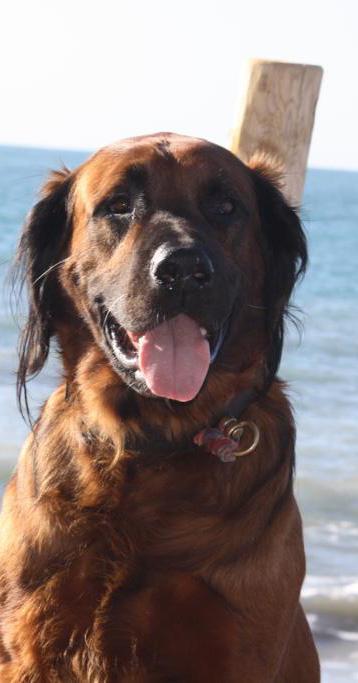
We invite anyone who could and would like to contribute to this research to contact dr Cristina di Palma, council member and RRCI veterinary doc
Email address: veterinariorrci@rrci.it.
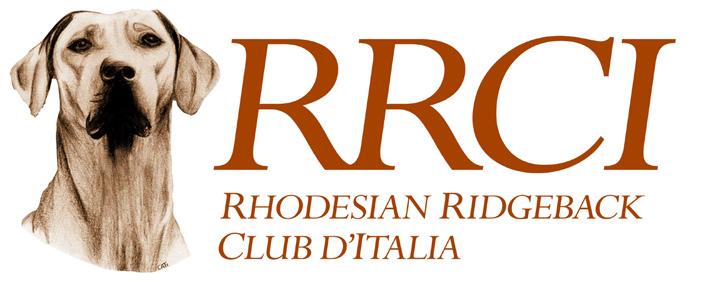
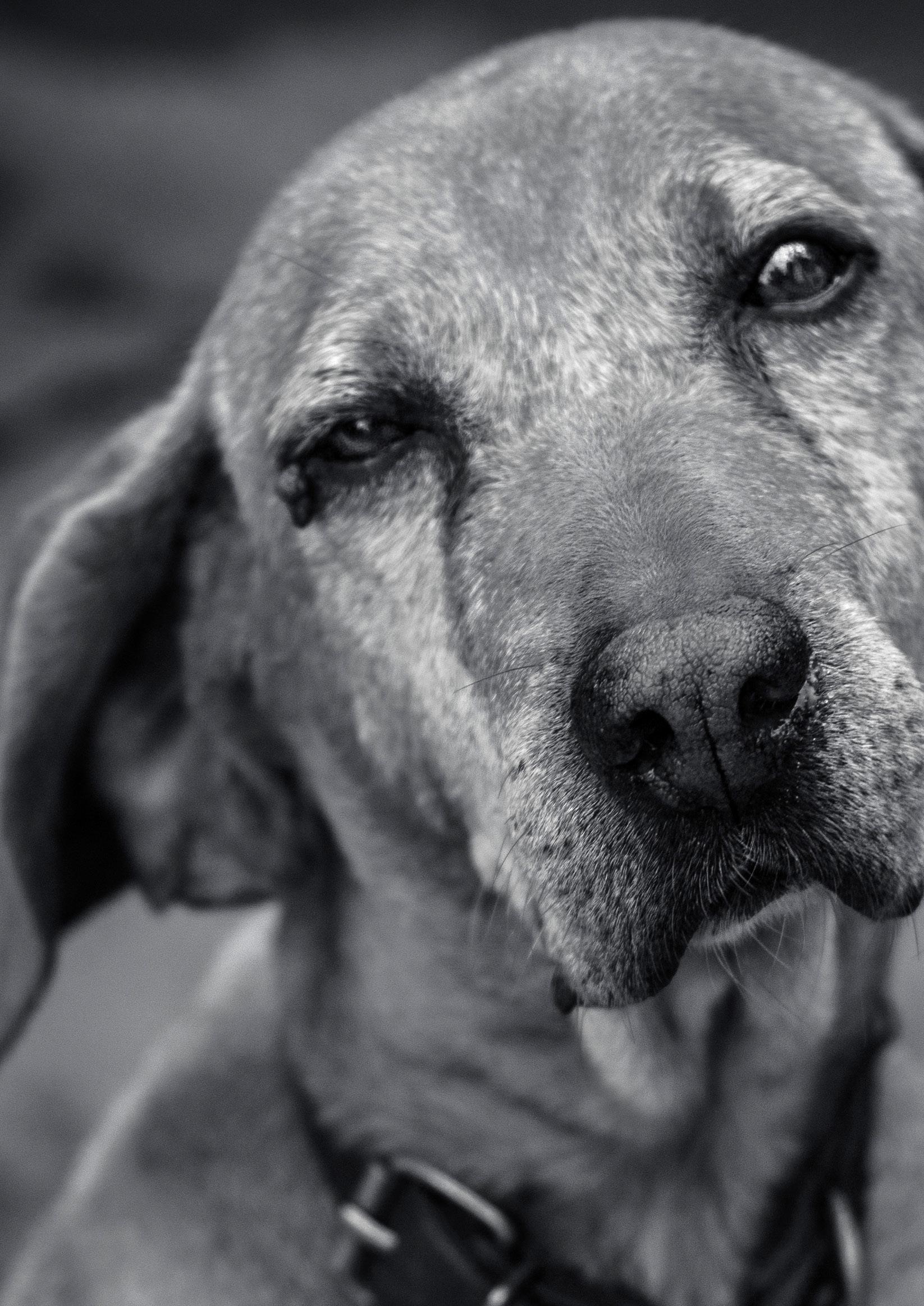 Dr. med. vet. Maximilian Körner Senior clinician radiation oncology DACVR (Radiation Oncology)
Dr. med. vet. Maximilian Körner Senior clinician radiation oncology DACVR (Radiation Oncology)
Thanks to high-precision radiation machines, radiation therapy in veterinary medicine has gained ground in recent years. The lives of affected animals can thus be prolonged by an average of two years. As part of a study financially supported by the Albert Heim Foundation, 56 dogs with brain tumors were irradiated at the Zurich Animal Hospital.
In veterinary medicine, radiation therapy is one of the established treatment options for cancer. A tumor diagnosis is no longer a death sentence, the life of the family member “animal” can usually be extended reasonably - with a focus on a very good quality of life. Radiation therapy for animals is however not available everywhere. Experiences from the time with less accurate treatment machines are very common. As a result, many owners imagine severe side effects that rarely occur nowadays with the use of high-precision irradiation machines.
Brain tumors qualify for radiation therapy treatment because they are generally not surgically re-
movable. Interestingly, dogs and cats are the only known mammals (besides humans) that spontaneously develop brain tumors. It is estimated that 14 to 20 dogs/cats per 100,000 animals suffer from brain tumors. Tumor behavior is comparable between human and veterinary medicine, which is why similar therapeutic approaches are pursued and research can be mutually beneficial.
Any brain region can be affected by a tumor and, depending on the function of the brain area, can cause neurological deficits accordingly. The most common tumors are meningiomas (tumors originating from the surrounding meninges) and gliomas (originating from the supporting cells in the brain tissue itself). Furthermore, tumors of the pituitary gland and choroid plexus tumors (the choroid plexus produces the cerebrospinal fluid) are also frequently diagnosed. In cats, tumors originating from the brain cells (gliomas) are rarely diagnosed, but meningiomas are diagnosed very frequently. In contrast to dogs, these tumors often do not grow infiltrating and can usually be surgically removed. In dogs the situa-
Components of a modern linear accelerator. The therapeutic radiation (photons or electrons) is emitted by the radiation head. Since the radiation head can be rotated around the patient lying on the treatment table, any irradiation angle can be achieved. In complex, three-dimensional irradiation techniques, the radiation dose of a treatment is administered over several irradiation angles. Together with the multileaf collimator located in the radiation head, the radiation can be focused and homogeneously distributed to the desired target volume while sparing the normal tissue as much as possible. Imaging systems (a-c) attached to the accelerator allow for two- or three-dimensional position verification, thus enabling the highest precision.
(Figure: Jeanne Peter, Scientific Communication and Public Relations, Vetsuisse Faculty, University of Zurich)
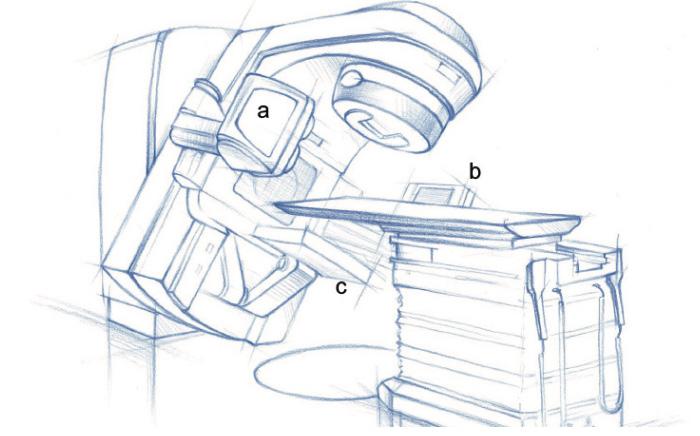
Multileaf collimator (a): The beam field is limited coming from each direction according to the shape of the tumor in order to spare the surrounding tissue. Collimation is not only performed from four sides (as for an X-ray image), but by means of a multileaf collimator, which has over 100 individually movable leafs and thus makes the radiation field individually shapeable.

(Figure: Jeanne Peter, Scientific Communication and Public Relations, Vetsuisse Faculty, University of Zurich)
tion is different: in addition to a higher incidence rate of gliomas, dogs suffer from more aggressive meningiomas that grow into the brain tissue and usually cannot be adequately removed surgically. It is even more difficult with gliomas as they are often deep in the brain tissue and it is usually impossible to remove the tumor completely with surgery. Chemotherapy is not a suitable therapy because the drugs cannot penetrate the so-called “blood-brain barrier” and thus does not reach the tumor at all.
In dogs with brain tumors, radiation therapy has become the treatment of choice in recent decades. The radiation dose administered often leads to a strong tumor reduction and tumor stabilization, resulting in additional years with excellent quality of life. Neurological symptoms often disappear during radiation treatment, and patients are usually neurologically normal afterwards. Using radiation therapy, on average, an additional survival time of two years can be achieved. In a recent study, it was shown that a course of radiation therapy with ten treatment sessions is feasible for most brain tumor patients.
In cats, inoperable brain tumors can also be successfully treated with radiotherapy. The average progression-free time is in the range of about one and a half years. The diagnosis of a brain tumor is made after neurological examination using imaging (especially magnetic resonance imaging). Occasionally, biopsies are taken, but this already requires surgical intervention.
Radiation therapy is performed in several outpatient treatment sessions under general anesthesia so that the tumor can be precisely irradiated, and the surrounding brain tissue can be spared. Just as there are different dosages for medications, there are a variety of different radiation protocols for canine (brain) tumors. A balance must always be maintained between the longest possible tumor control and sparing the surrounding healthy tissue. While high radiation doses lead to longer tumor control, the immediate surrounding healthy tissue must not be damaged. But how does radiation therapy work in the first place? High-energy ionizing radiation (similar to X-rays)
Follow-up of a patient with a glioma in the posterior part of the olfactory brain (lobus piriformis) after radiation therapy. In the picture at the top before treatment and in the picture at the bottom six months after radiation therapy; a strong reduction of the tumor size and the surrounding swelling can be seen.
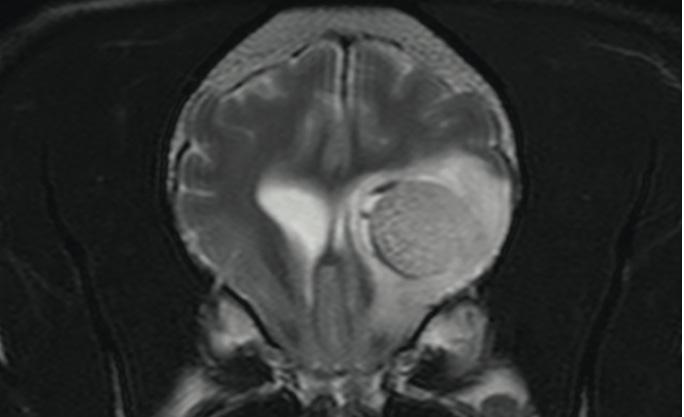

View of a radiation plan of two patients with pituitary tumors. The image at the top shows a regular irradiation protocol with a mean dose of 10x4 Gy; the image at the bottom shows the “boost” dose in the tumor center mentioned in the text with 15 percent more dose.
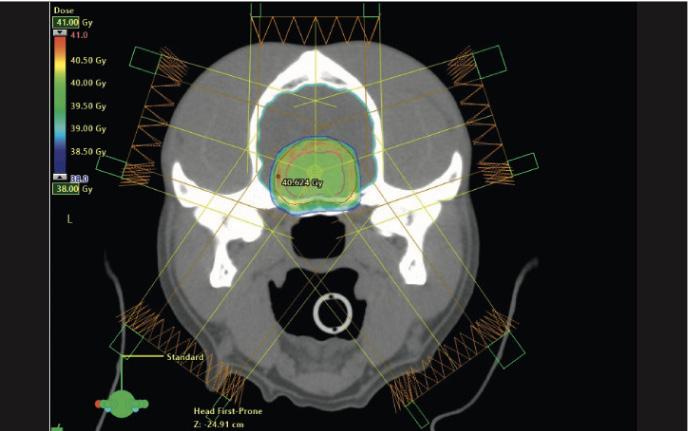

is used, which directly and indirectly damages cell components, including above all the genetic material. Tumor cells cannot recover as quickly as healthy body cells, so the repeated sessions result in cell death and subsequent orderly degradation of the tumor cells, while the healthy cells can repair themselves through repair mechanisms.
Depending on the type of tumor, the average survival time after radiation therapy is between one and two years - these are statistical averages; there are also animals that live far longer and eventually die of a different disease - but also those that do not live that long. Brain tumors such as meningiomas and gliomas usually decrease significantly in size a few months after treatment and often remain in remission for a long time, but at some point they can grow again. This means the radiation was not strong enough to kill all tumor cells.
An obvious approach is therefore to increase the dose - however, as described above, this is only possible to a limited extent due to the risk to the healthy tissue. A compromise approach was chosen as the basis of our study: We restricted a higher dose, a so-called “boost,” to the tumor center. Since most tumor cells are expected to be located there, a higher dose should also cause long-lasting damage to correspondingly more cells. In this way, it is possible to administer a high dose in a precisely defined location without placing a greater risk to the healthy tissue in the direct surrounding areas of the tumor. This is only possible if a precise radiation machine is available, which can ensure the correct patient positioning before treatment with the aid of an integrated imaging system. In our study, there are two groups that are compared against each other: one group received the 10x4 Gray (Gy) radiation protocol, and the other also received 10x4 Gy with an additional 15 percent radiation dose (“boost”) in the tumor center. Neither patient owners nor doctors decided who was part of which group - the distribution was randomized.
Between September 2017 and mid-August 2020, 79 dogs were irradiated at the University Animal Hospital Zurich due to a brain tumor. The majority of these, 56 animals, were included in the study. Meningioma was diagnosed in 27 dogs, glioma in 14, choroid plexus tumor in 4, and pituitary tumor
grew up with Rhodesian Ridgebacks since 1992, VDH breeder since 1996
2015: Graduation in veterinary medicine at the Justus-Liebig-University, Giessen, Germany
2018: Doctorate at the Vetsuisse Faculty of the University Zurich, about brain tumors in cats treated with radiation therapy 2018-2021: Residency in radiation oncology (ACVR) at the Vetsuisse Faculty, University Zurich, Switzerland

Since 2021: senior clinician for radiation oncology at the Vetsuisse Faculty, University Zurich, Switzerland
Since 2022: Diplomate of Radiation Oncology (ACVR)
As a son of a veterinarian mum and a passionate Rhodesian Ridgeback breeder, Max grew up with both interests from his earliest childhood on.
He studied veterinary medicine at the JustusLiebig-University in Giessen, participated in an Erasmus semester at the Vetsuisse Faculty of the University of Zurich and had a clinical externship at the College of Veterinary Medicine at the University of Tennessee.
During his university time, he was already working at the Hofheim Small Animal Clinic where he got first insights into modern cancer treatment in veterinary medicine. After graduating in 2015, he went back to Switzerland and started his doctoral thesis about radiation therapy for cats with brain tumors and clinical work for the Division of Radiation Oncology at the Vetsuisse Faculty at the University of Zurich. In 2018 he returned to Zurich after working in private practice and started his residency in radiation oncology.
Since 2021 Max is working as a senior clinician in the team of the Division of Radiation Oncology, which is specialized in the treatment of dogs with brain tumors and sinonasal tumors.
•
in 8. Mathematical models can be used not only to calculate new radiation protocols, but also to make predictions about the likelihood of side effects for the individual animal based on the radiation protocol. In all the animals included in the study, the calculated side effects were assessed as reasonably low, however, it was shown - which is easy to understand due to the higher radiation dose - that the theoretical risks for complications were higher in the “boost” group than in the control group. However, because the risk of complications was generally low, we had no clinical problems, meaning that patients had no severe obvious side effects. Mild neurological deterioration within a few weeks to months after the end of the treatment was observed in 13 dogs. Two dogs per group presented with epileptic seizures that could not be well controlled with medication. Two of the four affected dogs had a longer history of seizures. Although epileptic seizures are well controlled in most dogs with brain tumors, some may have difficulty controlling them successfully despite good anti-seizure medications. Transient neurologic deterioration requiring temporary cortisone treatment was observed in three animals in the control group and in six dogs in the boosted dose group. These side effects returned to normal within a few weeks.
To assess the value of the new irradiation protocol, we want to know whether patients with the higher “boost” dose have longer tumor control. Furthermore, we want to keep in mind that side effects remain mild and temporary in both groups. Thus, we can guarantee a good quality of life during and after brain tumor treatment.
Currently, most animals are still alive and neurologically normal. A conclusion regarding the mean survival times and especially whether one of the two protocols is superior to the other cannot currently be made as sufficient time has not elapsed. We continue to monitor our patients closely and it can be expected that a reliable conclusion can be made following a sufficiently long observation phase.
Contact for questions of dog owners via e-mail: onkologie@vetclinics.uzh.ch


Ithink by now everybody knows how dangerous it is to have collars on your dogs when at home when you have more than one dog at home. The number of tragic incidents involving dogs playing at home or in the park and getting stuck in each other’s collars resulting in death are numerous and unfortunately very common.
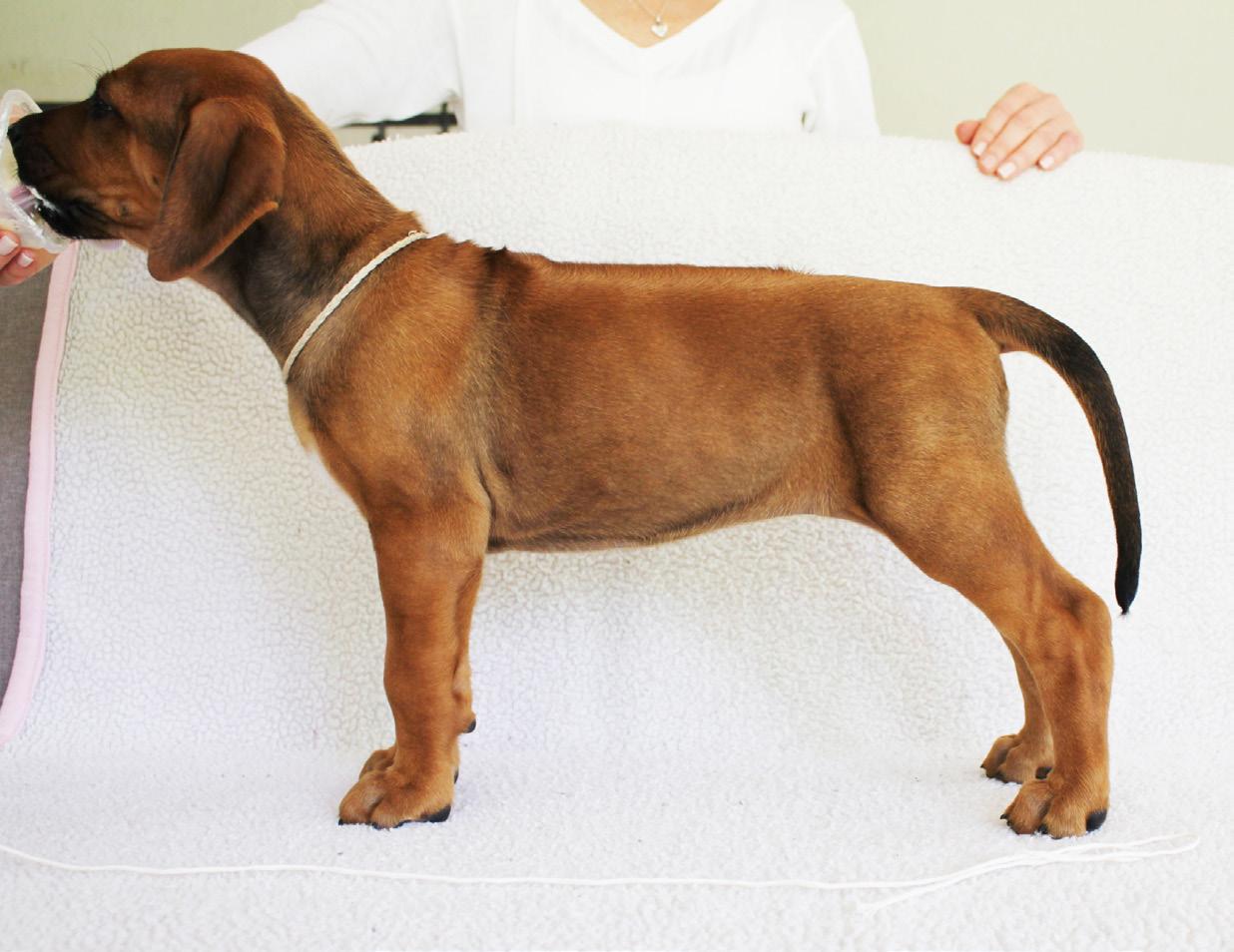

I recently had a litter of puppies and to easily identify the puppies I make collars out of cotton yarn. Each puppy gets its own colour. They are handmade crocheted little colourful collars. As the puppies grow, I just simply make a new one slightly bigger and so it goes for 8 weeks or until the puppies leave for their new homes.
I have had several litters and never had any problems with my hand crocheted collars. In fact, I quite like my homemade collars as they are custom made and easy to change.
The following incident happened recently. My puppies were about six or seven weeks old and as you know, they are very mobile and busy at that age. It happened one afternoon while making tea in the kitchen with Timmy Ralfe (also the assistant editor of this magazine). We had been outside admiring, cuddling and playing with the puppies and we had just stepped inside to have tea. I suddenly heard an unusual scream and immediately felt concerned. This was not the normal screech from a puppy getting his/her ear pulled by a sibling. No, this was serious! I rushed outside just to find one of the puppies being choked by her collar.
Let’s take one step back. In the puppy playground there are a lot of toys and fun activities – you have all seen these typical playgrounds with tunnels and balls etc. etc. Somehow the collar of this puppy got caught in the play, and as she panicked and jumped around - here, there and over and around, the collar tightened more and more within seconds. That was why she screamed. It happened literally over 10-15 seconds and luckily, I was right there and could release her. However, releasing her was not easy as she had twisted and turned so much that the little cotton collar was very tight. Luckily, the puppy was unharmed and happily carried on playing after being released, but I was in shock. The kind of adrenalin shock that makes you shake and think the unthinkable.
I’m sharing this story as I’d like everyone to be aware of how dangerous these thin little puppy collars can be. And I’m hoping that it will help avoiding it happening to anyone else.
There are quite a few different types of puppy collars available on the market. There are the soft
Velcro collars, nylon collars with a breakaway clip and adjustable thin bands etc. I’d love to hear what other solutions are out there?
Note from the Editor: please send in any suggestions you might have which replace any kind of collar and make it possible for the breeder to still identify each puppy easily. We will gladly pool this information and share it in the next edition of RR Eu Magazine! And we will print some of your suggestions. Please email to: starr. snezka@gmail.com In the subject line please write PUPPY COLLARS

Stud Dog | CH. PRINCE LAKOTA LÖWENSCHWANZ | D.O.B: March 5th, 2018 | 69 cm
Parents | Sire: C.I.B. Kangelani´s Perfect Choise & Dam: Corca Habeebah of Shingamonga Health | HD A/A, ED 0/0, OCD free, L7, LTV 0, SA neg., JME N/N, DM N/N, D – locus D/D B – locus B/B, Hemophilia: clear, Full dentition, Correct scissor bite | Ridge: R/R (dominant homozygote)
Titles | Young Dog of the Year 2019 SKCHR | Vice Europe Junior Winner 2019 Wels Champion of Slovakia | Champion of Hungary | Jr. Champ. of Slovakia | BIG3 | BOB | JBOB | CACIB Champion of Czech Republic - Candidate
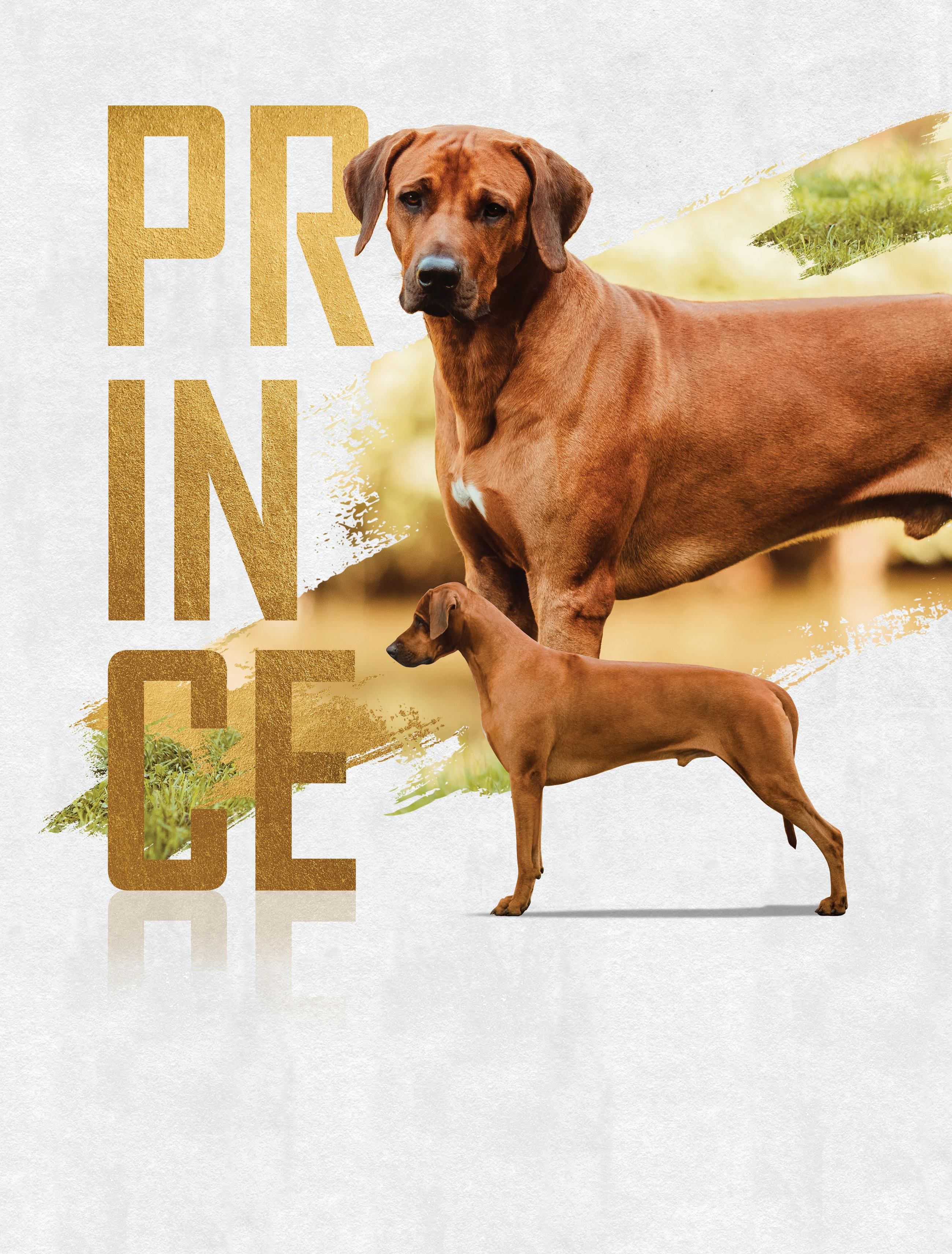
Prince_Lakota_Lowenschwanz | Prince Lakota Lowenschwanz

Peter Strhak: mudr.strhak@gmail.com



Winter… when the temperature plummets and the cosiness of the warm fire is much more inviting than the outdoors. A time for hot cocoa and snuggling in blankets.
When snow may lay on the ground outside and the wind has a bite to it that gets right to your core, yet we still have a duty to our dogs to provide them with the fresh air and exercise they need.
This is the time to be proactive with your dogs health.
It is important to keep your dogs immune system strong and healthy so they don’t fall victim to any winter bugs getting around.
To support your dogs joints so the cold weather doesn’t give them pain. To protect their bodies form the cold, winter days.
Essential oils can help us do that in a natural, safe way.
Lets look at boosting the immune system first.
The immune system protects your dogs body from infection. It recognises invaders like bacteria and fungi and mounts an immune response to fight them off. The stronger your dogs immune system, the easier it can fight those invaders to help keep your dog healthy.
To keep your dogs immune system strong exercise is a must, as well as a good diet, a good sleep pattern and limiting the amount of toxins they are exposed to.
Essential oils can be beneficial to the immune system due to their antibacterial, antiviral, antifungal and anti-inflammatory properties. These can help to kill off any invaders in the body so the immune system doesn’t need to work as hard, as well as reducing any immune responses the body may have and balancing the whole immune system.
Frankincense essential oil has been shown to be an immunostimulant, meaning it can stimulate the immune system by increasing activity of any of its components. This a great oil to use daily to help support your dogs immune system, either by diffusing, or by adding a drop to your dogs food.
• 1 drop Lavender
• 1 drop Copaiba
2 drops Frankincense
doTERRA also have some great premade blends that are able to help support your dogs immune system, OnGuard and Stronger. These can also be diffused or diluted in a carrier oil and applied topically. OnGuard may also be added to your dogs food…just 1 drop!
Another issue I see dogs having during the cold winter months are joint pain and problems, especially in the older dogs.
Cold weather does nothing to help our canines old bones and joints and they can become quite painful. Pain will limit movement, which in turn, makes the problem worse.
Enter essential oils!
Some essential oils have been proven to have anti-inflammatory and analgesic properties, making them a great natural aid for our dogs, like Frankincense, Copaiba, Turmeric, Lavender, Lemongrass and more!
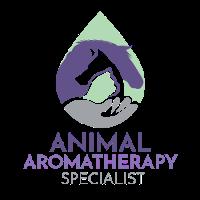
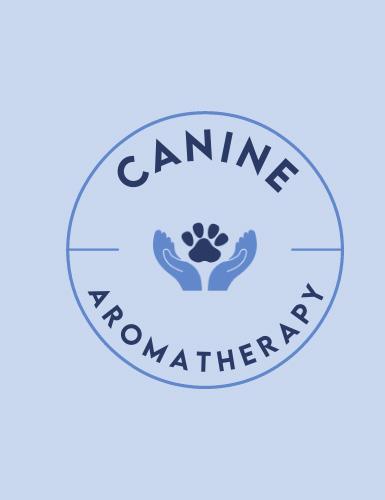
It can be very beneficial to your dog to receive a massage using some diluted essential oils to help provide some relief. A great premade blend to use is doTERRA’s AromaTouch, or my go to blend of:
Equal drops of Turmeric, Copaiba, Frankincense and Cypress diluted appropriate for size in a carrier oil. I use fractionated coconut oil.
Not only do the oils get in and do their job, but your dog also benefits from the massage itself!
For dogs that are really suffering, you can also give some oils internally…Frankincense, Copaiba and Turmeric are my choice for this, or the Deep Blue
Polyphenol capsules are amazing for this too.
And finally, I’m going to leave you with my recipe to keep those dog paws healthy during winter. Dogs still need exercise during the colder months but its not always good for their paws, which can get sore, dry and cracked.
So give this Paw Wax a try. Simply apply to your dogs feet for protection and to keep them moisturised and healthy as needed!
• 85 grams Beeswax
4 tablespoons calendula oil 4 tablespoons coconut oil
2 drops Frankincense
2 drops Cedarwood 2 drops Lavender
Melt down the beeswax and coconut oil, then remove from heat. As it start to cool, add in calendula oil and essential oils and mix together well. Place into an airtight container for storage. This recipe is great to use for winter feet, or any time your dog may have cracked or dry pads.
Please
These are just some of the ways you can use essential oils to keep your dog healthy and happy this winter. For more oily ideas, you can check out my facebook or Instagram - Canine Aromatherapy.
Remember, the best thing we can do for our dogs is to keep them as free from harmful toxins as we can, especially during the winter months where the immune system already has a bigger job. Essential oils are just one of the many natural alternatives you can use to do this. Do it for your dog!
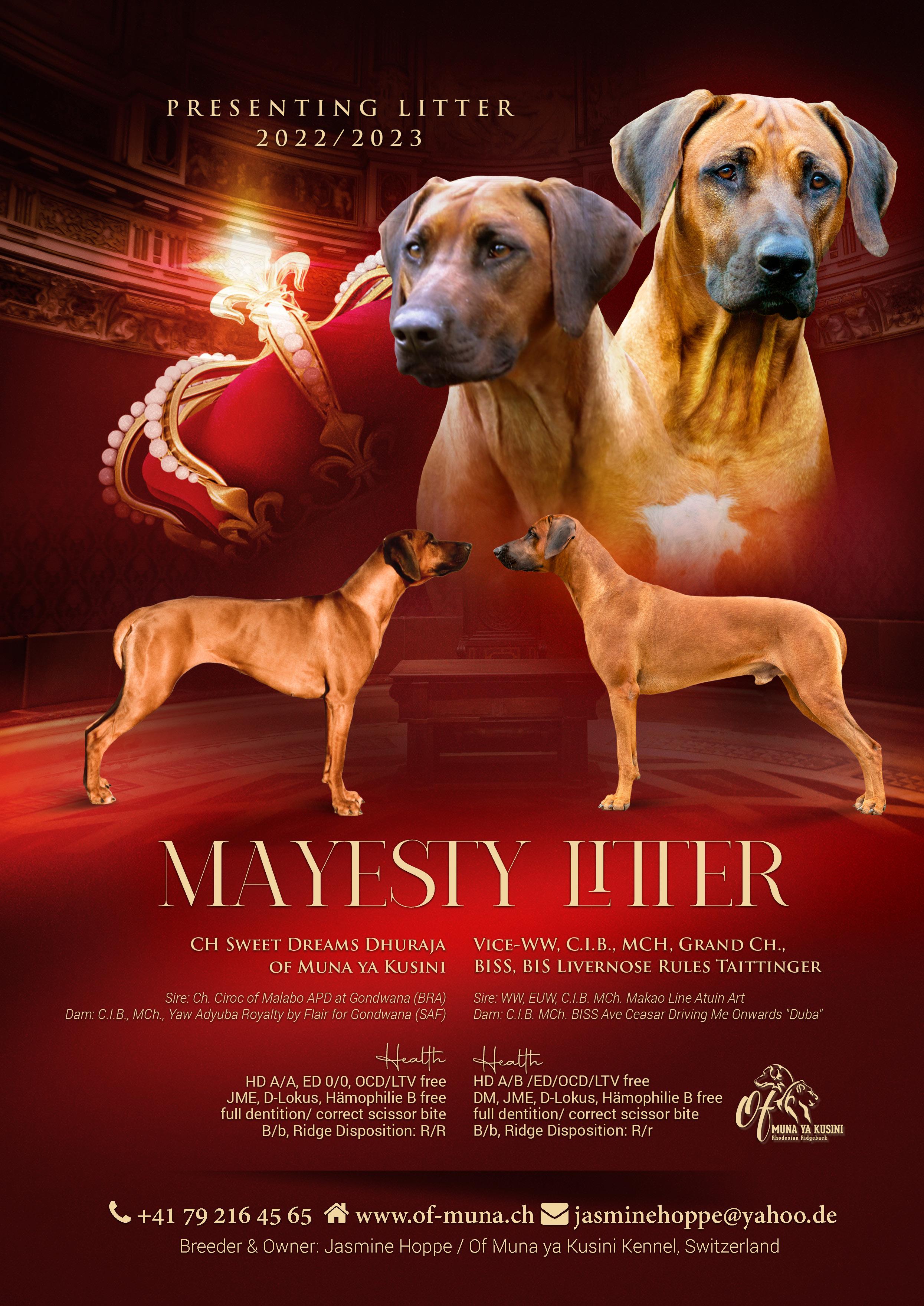
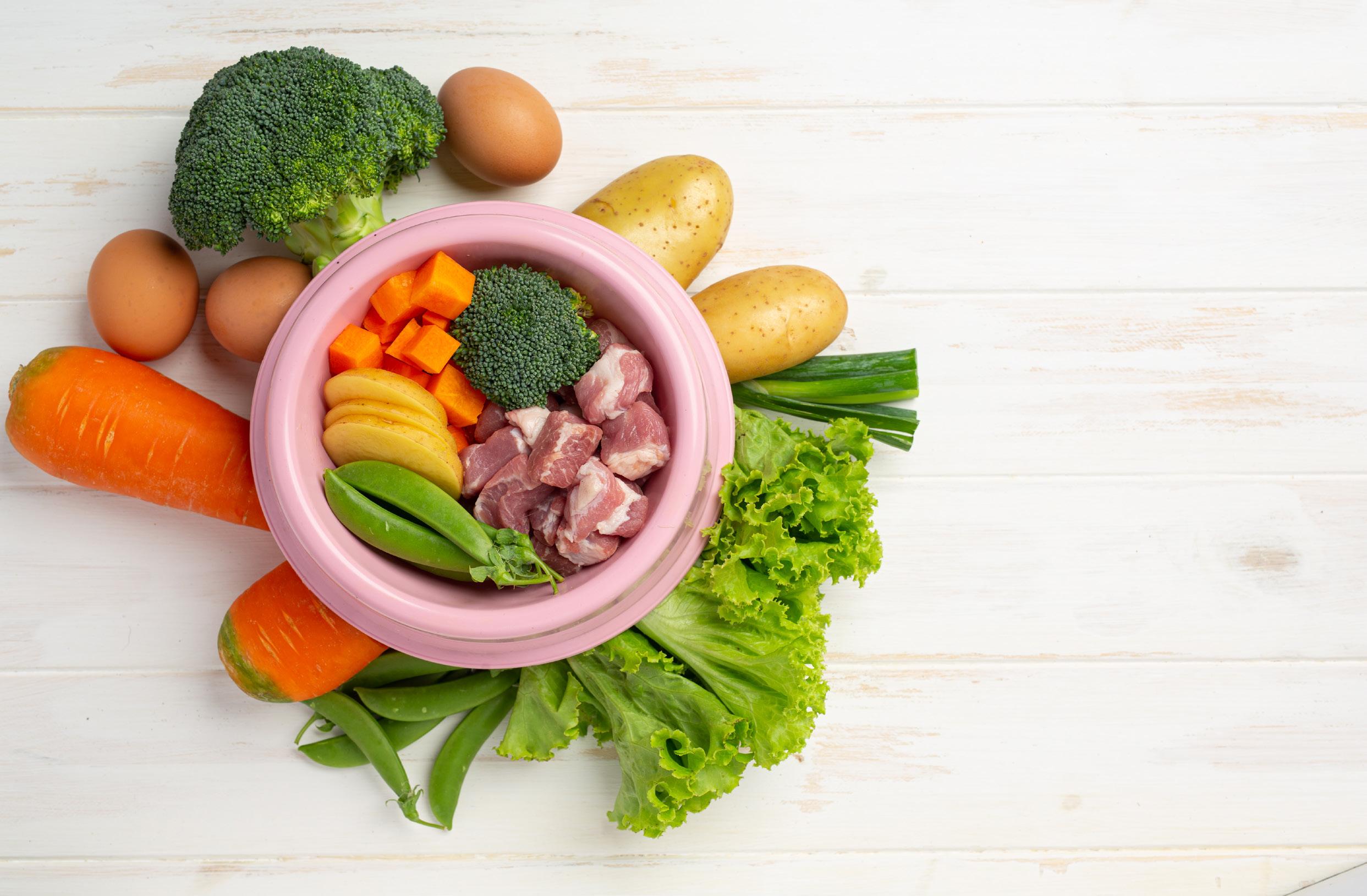
What you give your dog for better: Coat fish oil
Bones a vitamin full of calcium like a cure Nails /
Immune be in the wild (do not give them medicine) Vitamins calcium
Do you feed dry / vet / barf high quality dry with high quality vet
Supplements for veterans (name which supplement for which disease): not yet
Supplements for puppies: green mussel extract
Supplements for females when planning litter: not yet
Fruits mine do not eat any fruits Vegetables carrots
What activities you do with you dogs agility, walking every day
How active is your dog inside very easygoing, but outside my girl is very active, my boy could be active but mostly calm Your SOS kit blue cream, hydrogen-peroxid, eye drop, bandage
For more info contact us:
Orczi Virág – Empyrean kennel www.empyrean.hu virag.orczi@gmail.com facebook-square virag.orczi INSTAGRAM-SQUARE empyrean_ridgeback INSTAGRAM-SQUARE viragorczi
What you give your dog for better: Coat
Bones Nails Immune Vitamins
beer yeast rosehips seaweed green mussel extract bones from chicken and beef
Do you feed dry / vet / barf barf
Supplements for veterans (name which supplement for which disease): barf
Supplements for puppies: same as adult + calcium
Supplements for females when planning litter: vit b, c, folic acid
Fruits banana, apple, pear, kiwi, berries
Vegetables carrots, spinach, beetroot, fennel, zucchini, celery, salad
What activities you do with you dogs walking, biking, trailing, balance
How active is your dog middle
Your SOS kit different homeopathic, antihistamines, bandages.
For more info contact us: Katja Lisson, Tunapendana www.tunapendana.de kalja.lissou@web.de
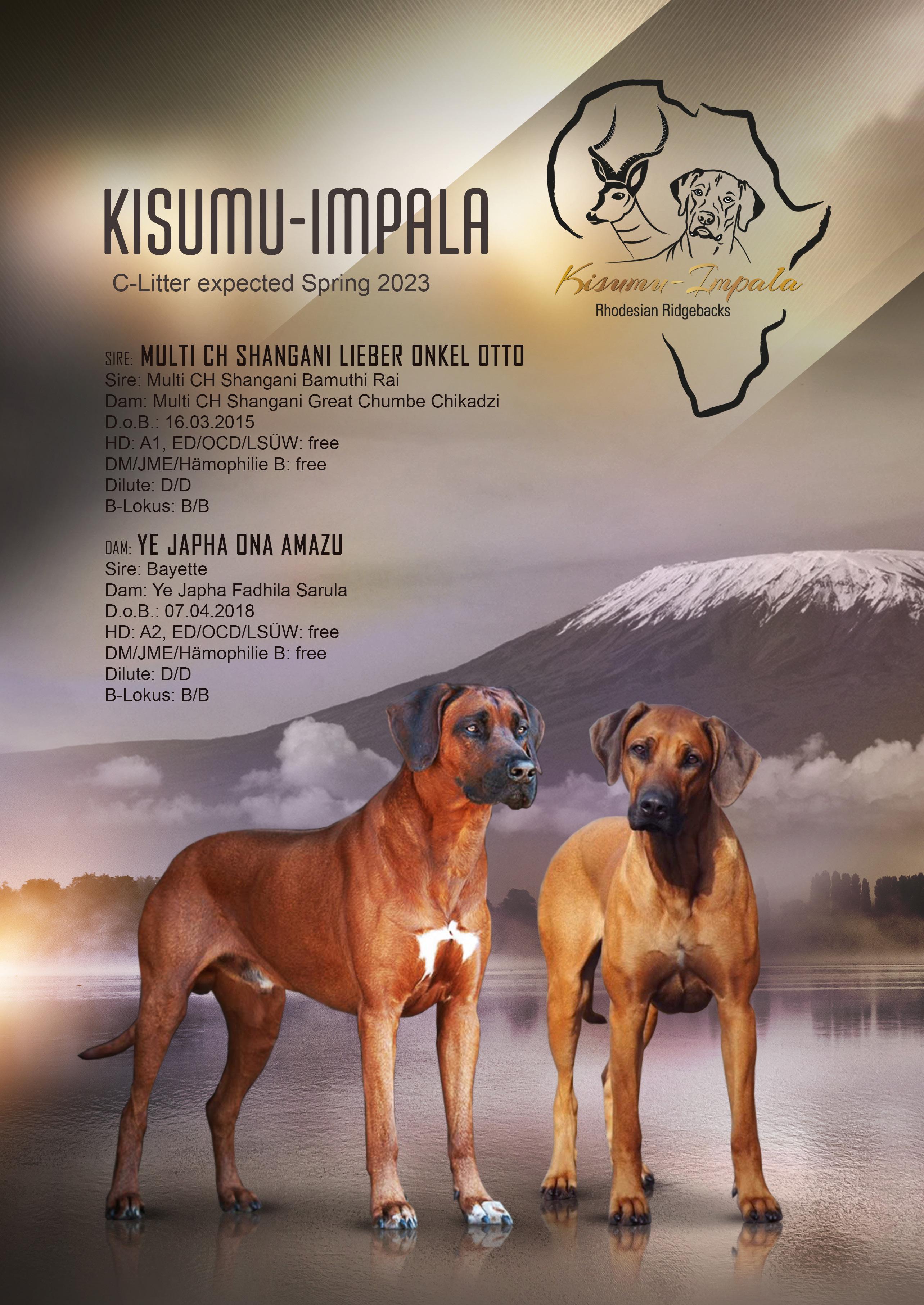

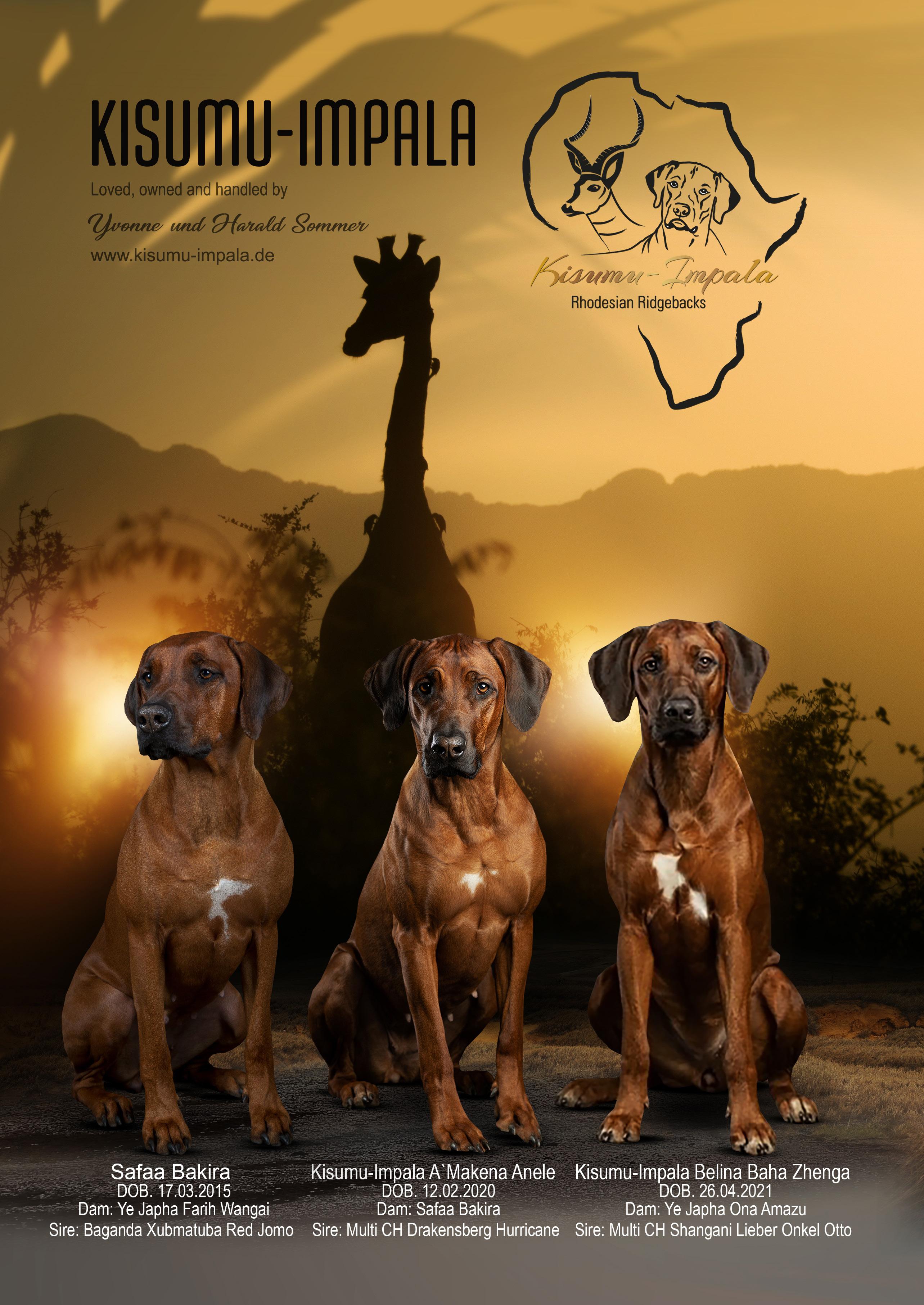


Greetings from Czech Republic
I don’t pretend to be surprised that you approached me for an interview for RR magazine as a Beagle breeder. I have been raising the Beagle breed for almost 40 years, and over time, due to life on the game reserve, I have become not only a hunter, but also an international judge for judging hunting tests of dogs and also an international judge for judging the exterior of dogs.
I looked for Beagles as partners for Slovakian Hounds. In the end, the Beagles took over my pack of dogs, I did not let Slovakian Hounds. The work of Beagles in the forest is gentler and more careful with less sharpness, and also the Beagle does not have such a large radius when searching for animals. They do the work of scent hounds brilliantly, their olfactory abilities are excellent. Moreover, they are very beautiful. This also true for RR. I met and got to know RR only at exhibitions. They captivated me with their beauty, elegance and wonderful movement
My love for dogs and in general for all animals started very early, animals accompanied me from early childhood. However, I could only get my first dog as an adult, that was the wish of my parents - teachers.
I think their attitude was responsible and reasonable. My first dogs were the Slovakian Hounds breed, which had its irreplaceable place at the
gamekeepers lodge. Very soon the Beagle joined their pack. And just the Beagle (not only one) accompanies me without a break to this day. I have had many dogs in my life and I have special memories of each one.
TELL US ABOUT YOUR JUDGING CAREER. WHEN DID YOU START TO JUDGE AND WHY DID YOU CHOOSE TO BECOME A JUDGE?
A well-known person approached me about this when I lived in Slovakia. It is true that the realization came over time and it has been more than 20 years. My husband Ladislav was my huge partner in realizing my dream.
I didn’t have a mentor, I only drew on the valuable advice of my colleagues, and I would especially exalt the excellent judge and breeder of Beagles (and he also had RR) Mr. Jochen Eberhardt from Germany. I still think about his words and appreciate his good opinions.
The RR must be strong and elegant at the same time, a dog with excellent running ability. This is the job that is required of him and for which he was bred.
I think that nowadays it is necessary to approach dog breeding with humility. It is not about the
maximum number of puppies, but to breed good quality and completely healthy dogs.
EVERY BREED HAS SOME PROBLEMS. WHICH IS THE MOST COMMON PROBLEM IN RR?
I don’t see serious problems in RR breeding, but it may also be caused by the fact that I only meet dogs at exhibitions and hunting trials, where mostly good and healthy animals go. Every breed of dog is accompanied by minor or major problems and it is up to the breeders of this breed how to approach this problem.
The judge must never forget the mission of each breed of dog. The dog must be able to perform the activity for which it was bred, whether breeders and exhibitors like it or not.



WHAT IS THE MOST IMPORTANT POINT WHICH YOU WOULD LIKE OTHER JUDGES OF THE BREED TO BE AWARE OF?KV ČKRR 12. 5. 2022, Královický Dvůr Female: CZ Catherine z Masnerova, Owner: Anna Vlčková Foto by: Klára Olivová Bałtów 23.04.22 Dog: DOTTY Paws Sangoma (Amani Owner: Jola Krystecka Ascot Alta Mirano (foto K.Vlčková)
The judge must be knowledgeable about the anatomy and individual standards of the breeds. He must be impartial and able to defend his decision. You will accept a reproach from the judge if he is knowlegable about the breed you are showing. On the contrary, you will not accept it, if it is criticized what is typical for the breed.
Today’s judges have more facilities to pass the knowledges faster, huge opportunities to study and gain experience all over the world. It is important get quality information and constantly educate themselves. We all make mistakes, and it is important to make as few mistakes as possible. I have respect for judges who prepare as much as possible before each exhibition, as if they were always judging for the first time. This is not a shame, but a necessity.
I have been working as a judge for more than 20 years and have judged in about 23 countries
around the world. I have many experiences and they would certainly be enough for a book. Some famous passed by the show ring many times. It is also a wonderful experience to meet communicative dogs, where you can see that they like the contact with the judge, and I like to remember the meeting with pleasant exhibitors in different countries.
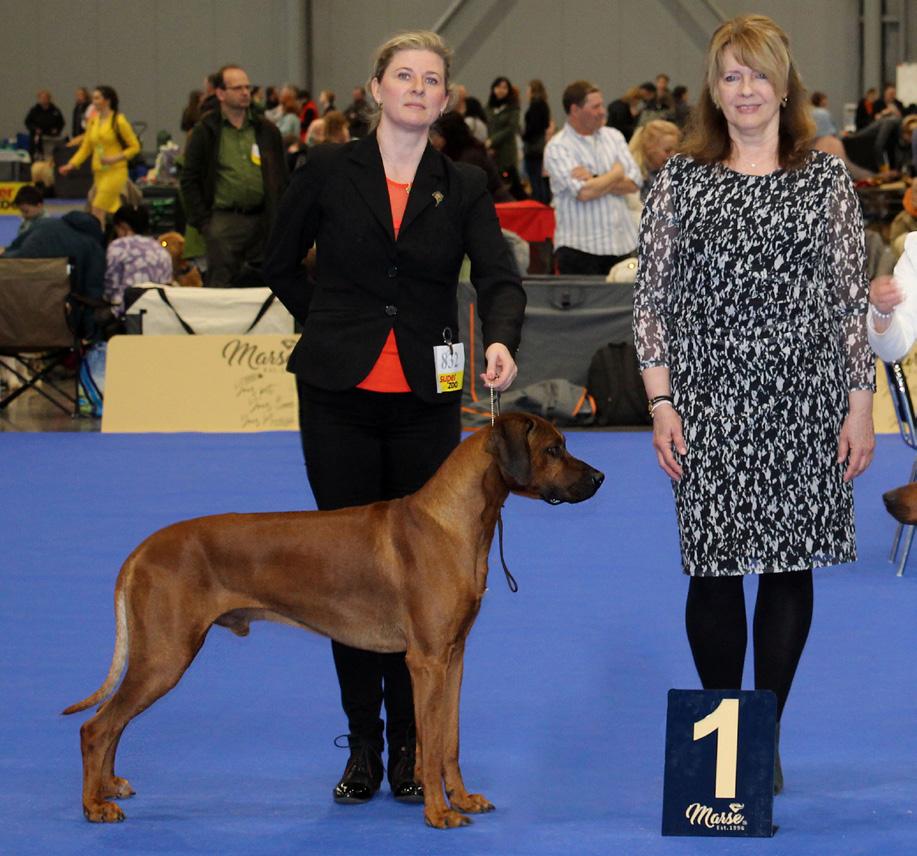

The internet has helped to obtain the results of shows almost immediately and publish online catalogs. I remember the beginnings of my breeding, when any contact with breeding dogs or contacts with breeders was obtained from exhibition catalogs or directly at exhibitions. Almost incomprehensible for today’s young people. Fortunately, times have changed a lot in that regard.
I think that the sight of today ́s RR is a treat for the eye. In the past, I have occasionally met massive types similar to tosa, with loose skin on the neck and lips and with bad expressions. Today the heads are very beautiful and perfectly shaped with the right expression. The angulation of the forequarters has improved significantly and it is a pleasure to see correct forechests. The movement of hindquarters has also improved and I almost always see correct parallel gaits if the size of the
show ring allows the movement. Perhaps I sometimes see, especially in bitches, a tendency to be too light in bone and fine heads. We must not forget that it is originally still a dog bred to hunt large animals.
WHAT IS THE GREATEST THREAT TO THE BREED TODAY?
I see the biggest threat in fashion and popularity resulting for the breeding non- pedigree dogs. Unfortunately, we all know what this means for honest breeders.
IT IS INEVITABLE THAT BREEDS WILL EVOLVE AND CHANGE SOMEWHAT AS NEW GENERATIONS OF BREEDERS
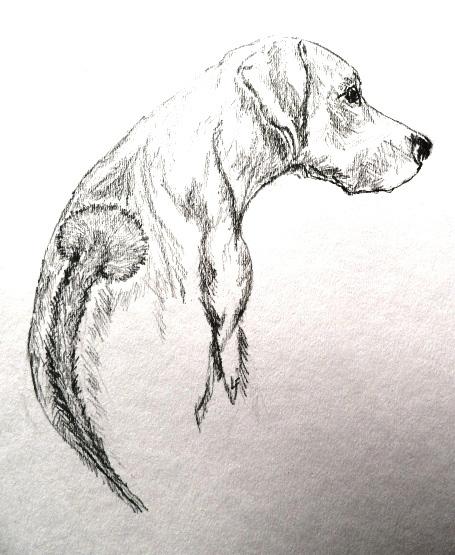
TAKE CHARGE. HOW CAN THE ESSENCE - OR TRUE BREED TYPE - BE MAINTAINED?

Thanks to high-quality and honest breeders, the correct type of breed will be maintained one hundred percent. Today’s young generation of breeders is very responsible and understands the necessity of maintaining the standard and type. And if they take care of the dog’s complete health, genetics, proper nutrition and the proper working use of their dogs, we don’t have to worry about anything.
WHAT WOULD BE THE MOST IMPORTANT SINGLE PIECE OF ADVICE YOU WOULD GIVE TO ALL SERIOUS YOUNG BREEDERS?
I wish beginning RR owners and breeders the best of luck in choosing their first puppy. Emphasis must be placed on the parents’ health and character, as well as on the environment in which they grow up. A healthy and beautiful dog is not always the best dog. The ideal dog must also have it sorted in his head. Only then will he be the best friend, partner and worker.
Thank you to all RR owners, breeders and fans for your patience in reading these lines. I wish everyone good health and lots of joy with the RR breed. It is definitely a dog breed for loving!
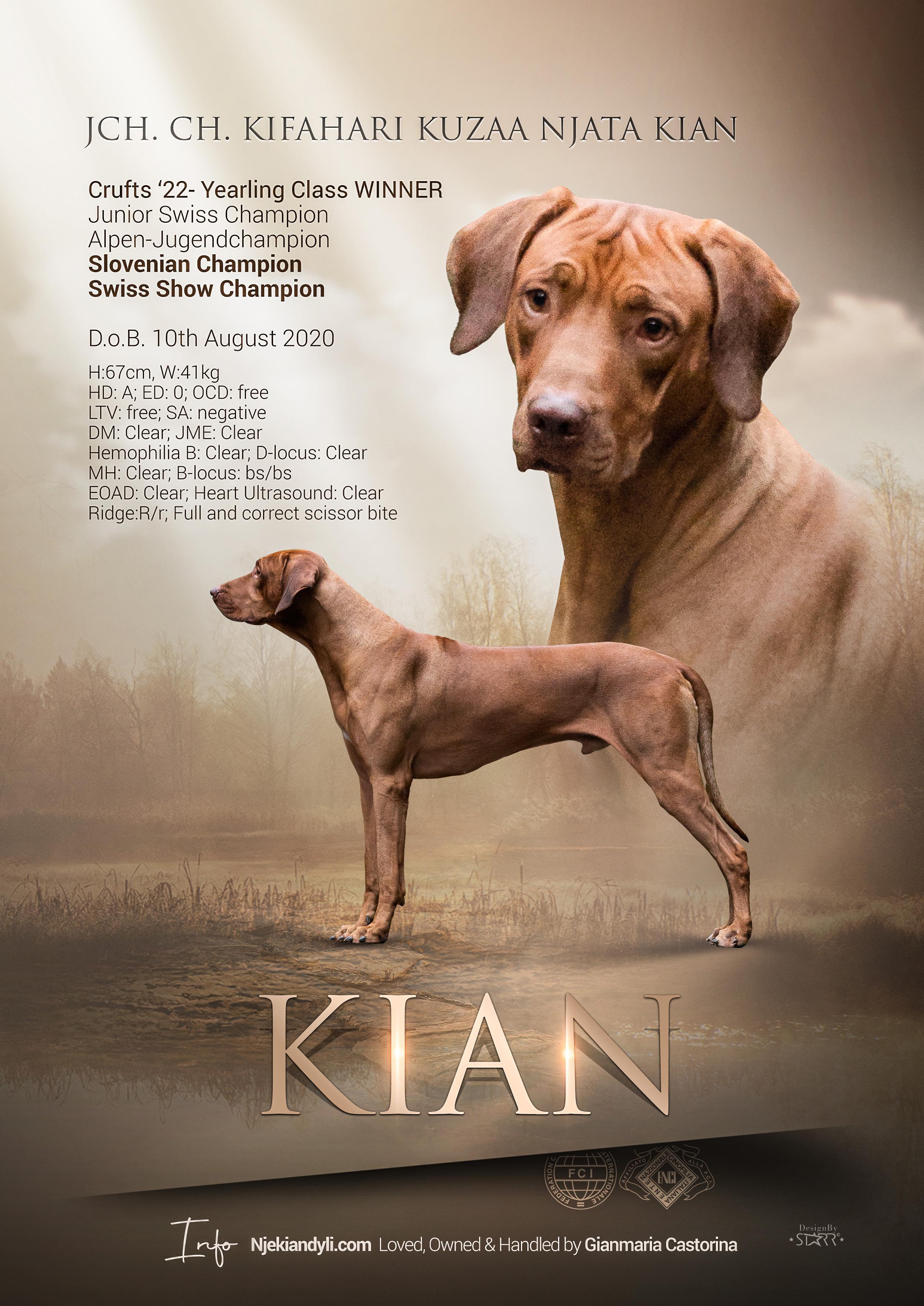
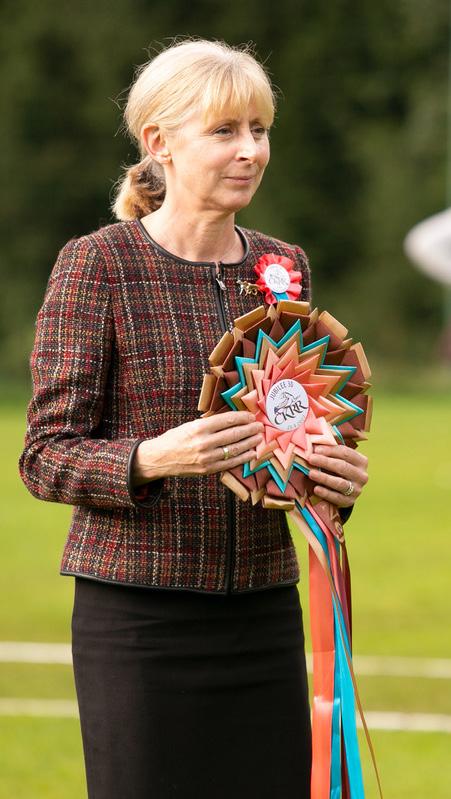
Greetings from United Kingdom
1. PLEASE INTRODUCE YOURSELF TO OUR READERS.
Hello and thank you for this lovely opportunity to be interviewed by your magazine. My name is Kim Hodge, I live on a farm in the beautiful Derbyshire Dales in The Midlands of the UK with my mother and our pack of Rhodesian Ridgebacks. I’m an owner, exhibitor and breeder, and I judge the breed both nationally and internationally at Championship level.
I cut my teeth in the breed whilst living surrounded by the beautiful Sonoran Desert in the South West of the United States of America where my kennel was then known as Blue Sky Ridgebacks. In my years of exhibiting in the USA, I piloted my dogs to win 3 Champion titles, 1 Grand Champion, 1 Dual Champion, 1 Field Champion, 1 Mexican Champion, 1 Pan-American Champion, Best Veteran In Show, multi Group Winners, multi Group placers and the No. 4 all breed/No. 7 breed Rhodesian Ridgeback bitch of 2010.
Since moving to the UK in 2011 I have amassed 23 Challenge Certificates, 12 Reserve Challenge Certificates, and piloted 2 UK Champions, multi BIS/ BVIS/RBIS/Stakes Winners, multi Group Winners/ Placers, Junior Warrant Competition Finalist 2018 and the 2012 Top Rhodesian Ridgeback and 2011 Joint Top Rhodesian Ridgeback.
I was not able to register the name Blue Sky Ridgebacks with the Kennel Club, as the name was already taken (in Border Collie’s I believe) so chose the name Colkeririn, which is a name made from my four foundation Ridgebacks: Colby, Keira, Indie and Rio.
On holiday many years ago I was enjoying a day at the coast and noticed a very handsome dog sitting on a moored yacht who didn’t take his eyes off his owner sitting a short distance away on the terrace of a restaurant. Such was the relationship between owner and dog, there was something unique and intriguing that piqued my interest to find out more. This dog was athletic, noble, ridiculously handsome and clearly loyal. I asked after his breed, to which came the reply “a Rhodesian Ridgeback”.
Years later my late husband and I were researching a breed to fit our predominantly outdoor lifestyle. We put together a comprehensive list of points we wanted from and could offer a dog. Imagine my delight when our research distilled down to the Rhodesian Ridgeback - it was a very promising sign! We reached out to a number of breeders and made appointments to view litters, talk to breeders and owners at shows and visit homes to get a feel for the Ridgeback at close quarters. In early 2004 we visited a breeder’s home to view the dam and her then 5 week old offspring, and had the benefit of meeting the sire and several visiting breeders who were assessing the litter. It all felt right. We pledged our interest and were accepted with the promise of a show quality male puppy.
Two weeks later the puppy with the blue collar came to live in our home. We took him everywhere - canoe trips, ski slopes, road trips, wine country, into the desert, beaches, fresh water lakes… he kept up with it all and in our eyes was perfect in every way. He was sold to us with a show contract which we had no idea what that meant, but honouring the contract and the breeder’s wish, we found two local professional handlers offering show ring training. As we became more involved in the show scene, we realised most people who own a Ridgeback don’t
own just one! We noticed that Colby played like no other, we noticed he never seemed to run out of energy and we noticed he loved being part of a pack - he travelled a lot with a friend’s pack and was always very happy in their company. We realised this breed had become more than owning a growing youngster - our weekends were full of shows or lure coursing events, our mornings were filled with long walks and our evenings with quality time with our faithful hound.
My mother has always loved animals and from my early childhood she instilled her love of all animals into me. Mum holds on to things that mean a lot to her and in her vast collection of treasures from our childhood she has copies of Country Life magazine - which years ago used to include advertisements from breeders in the classified section - my childlike writing and marking of breeds I favoured are still clear to see.
Growing up we would spend Sundays with good friends who lived in a nearby village and had two dogs - Suki (a West Highland White Terrier) and Sheeba (a Black Labrador/Great Dane cross). Sunday afternoons would be spent walking across the fields with the dogs - it was the best day of the week for me, and Sheeba was (at the time) the best dog ever!
Around that same time, my mother started working at a local veterinary surgery. Many different animals needing special care and attention would come for overnight or weekend stays - some of them made permanent homes with us including a sheep (yes, a sheep) who I used to walk on a lead. One Christmas I was on school holidays and went to work with mum. One of the vets had just returned to the surgery having been called out to rescue an animal who was left in an abandoned vehicle. The vet suggested I give it a cuddle as it was cold and bewildered. Excited to help, I got a blanket and went to the crate where cries were coming from. I opened the crate to find the tiniest puppy looking back at me. My heart burst and I picked him up and immediately settled down to give the puppy the warmth and comfort he was crying out for. It was Christmas and the surgery was going to be closed for a few days and with no home to go to we took him home to care for him. He never left! We named him Sammy and he lived for 17 fantastic adventure filled years. We never knew what he was, but he had a look of Basenji crossed with Jack Russell Terrier and he was my very best friend throughout my teenage years.
It was several years later, once my professional life - that included a lot of international travelquietened down could I consider the prospect of
owning a dog again, and this is when my love of the breed took off.
My first Rhodesian Ridgeback was, as I’ve introduced above, the puppy with the blue collar. Colby was all American and was an outstanding all rounder, he had super sound movement and stood perfectly in standard at 26”. To know Colby was to love him - he was one of the most comical dogs I’ve ever known, a real character, happy and always wagging, he put 100% of himself into everything he did, the proof in that lies in the 4 Championship titles he won during his extraordinary lifetime.
He very much enjoyed his veteran years in the show ring, and with his ever bright round eyes twinkling and his enthusiastic performances, he continued to fill the shelves with some splendid trophies well into his special veteran years.
He lived his extraordinary life present in every second of every day - squeezing the last ounce of joy, enthusiasm and usually naughtiness out of every adventure each day presented him with. He knew the show ring was a stage for his character and the lure coursing field a place to get down to some really serious fun. He was a dog who would work out how to disappear in the pack - walking from trouble but running head long into fun, and, a dog who patiently waited for me to catch up, or slow down so I was present with him in our quieter, more reflective moments. He died on the very last day of 2017 at 13 years and 11 months, and I still miss him every single day.
My second Ridgeback Keira will always be remembered as the Colkeririn beauty queen; strong, sound and elegant. A red wheaten with a magnificent head and outstanding muscle tone, her nickname was Bootyliscious Cupcake! Keira completed her AKC Ch. title in November 2008 winning a 5-Point Major under Mrs Patricia A. Mowbray-Morgan.
Shown lightly in 2009, Keira won an Award of Merit under breed specialist judge Mr. David Jay Hyman at the Eukanuba National Championships in Long Beach, CA, which qualified her to show at Crufts. As we had moved to the UK between the two shows, we decided to enter her, it was her first ever UK Championship Show in the UK and we were absolutely delighted she won a 4th Place in a very well represented Open Bitch class.
I bred Keira to Colby in 2011 and had 8 puppies4 boys, 4 girls, the 8th born was Verde who I still have today.
Indie was known and loved for her independence. Feminine, gentle and elegant, and had the sweetest smile. She was at her happiest when running - we always said, she was born to run. Happy grazing nature’s table, we often found her picking blackberries off the bushes, or eating the fallen apples (and sometimes the ones still on the trees!) Indie loved to be close, and to have contact,
with humans or the rest of the pack, and she instilled her scrumping skills to her offspring who are all stealth blackberry pickers to this day.
Indie didn’t really find her feet in the show ring, preferring to support my fourth Ridgeback Rio in her dog show adventures. She did win a Junior Coursing title from the American Kennel Club and loved our day trips to the coursing competitions in the USA.
At the age of six she whelped 11 beautiful puppies. She was a remarkable mother and grandmother, her genes are strong and I see a strong resemblance to her in her great granddaughter Skye.
From the first time Rio set foot in the ring, it was evident she was something special; awarded Best Puppy in Breed and Puppy Hound Group placements multiple times, and winning her first AKC Championship points from the puppy classes under Judges Dr. Lee Anthony Reasin, and Ms. Joan Urban.
Rio completed her AKC Championship winning her last 10 points and both majors in 28 days. Her first show as a Special saw her make Judge Mr. David Jay Hyman’s cut at the Eukanuba National Championships in 2009, and from there she went from strength to strength.
We completed 2010 with her ranked as America’s No.4 Rhodesian Ridgeback bitch (AKC All-Breed Totals) and after our move to the UK in March 2011, Rio continued her show career this side of the pond and in just 6 weeks gained her UK Championship. In late December 2011 Dog World announced Rio as the UK’s joint No. 1 Rhodesian Ridgeback, and she was joint titled the UK’s Rhodesian Ridgeback Champion of Champions!
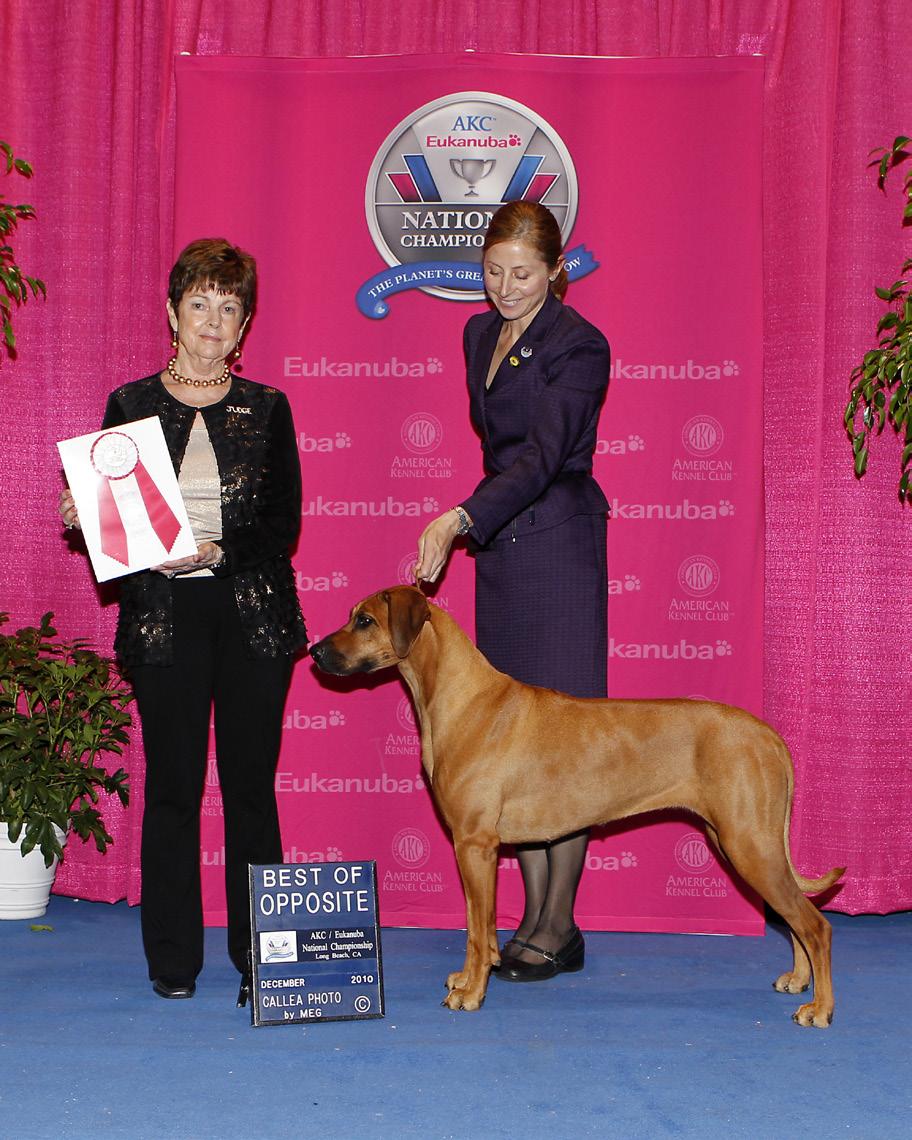
Rio continued her amazing journey throughout 2012 in the UK and finished the year with a total of 15 CCs, 11 with Best of Breed, 6 Reserve BCCs and 3 Group 3’s, making her the UK’s Top Rhodesian Ridgeback for 2012. Not only that, she was once again titled the UK’s Champion of Champions by winning the prestigious Cecily Hick Memorial Owslmoor Trophy, which we had in our care for a total of 18 months.
In May 2014 at the age of 6, Rio won a title that had eluded us on both continents. At the Southern Rhodesian Ridgeback Championship Show under greatly admired expert of our breed, Mrs Gillian Craven (Hespa) she won the title BEST IN SHOW!
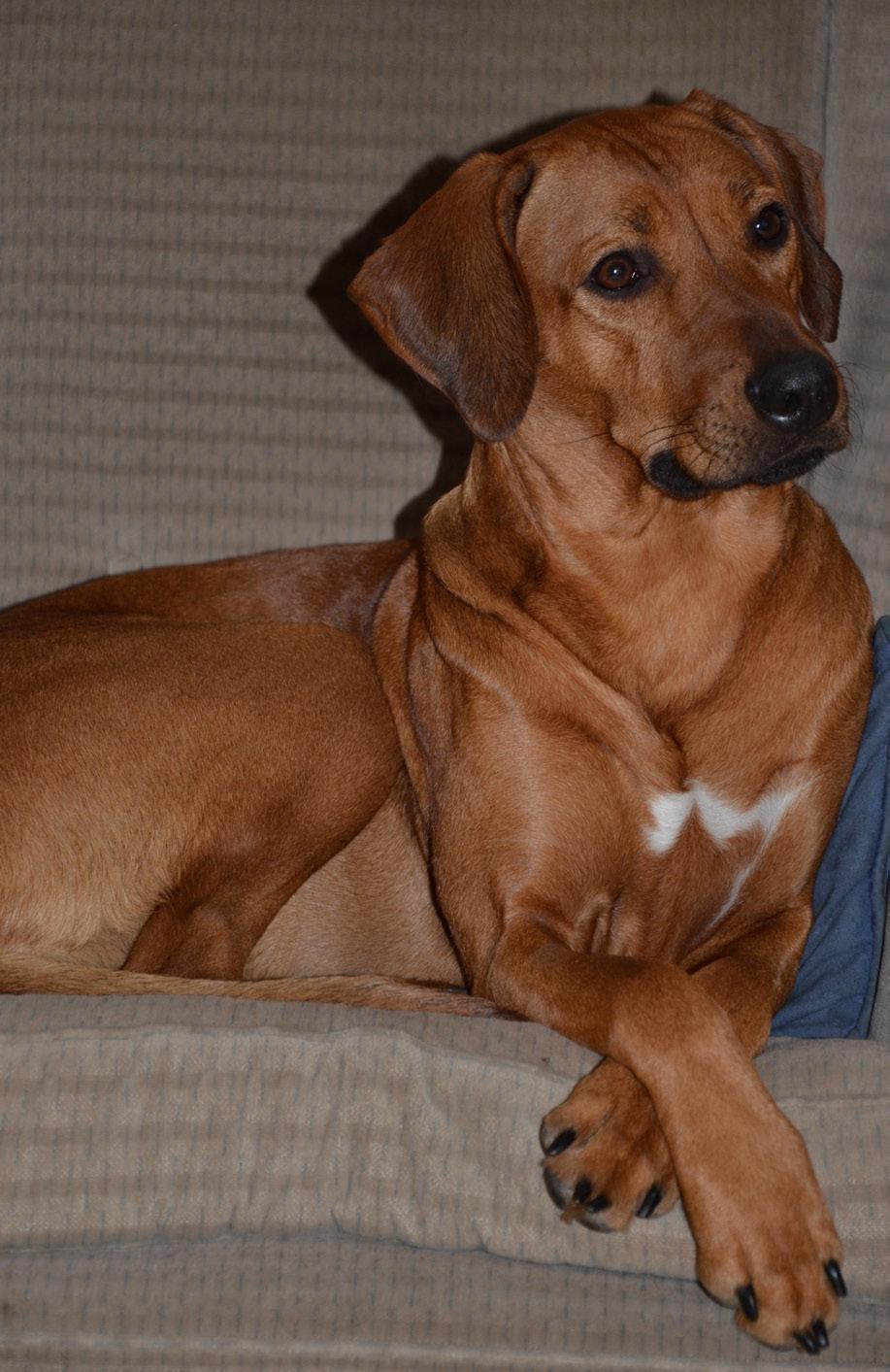
Verde

Verde was born from our first home grown breeding - a beautiful blend of Colby and Keira - on September 19, 2011 born of an exciting marriage of American, English and old African lines - she’s a lovely, balanced girl in both looks and nature! Although starting off very confidently with a nice collection of rosettes and enjoying a wonderful win of 1st place in the Minor Puppy Bitch at her first All-Breed Championship Show under respected judge Mr Frank Kane, Verde did not take to the show ring.
I’ve never asked my dogs to do anything they don’t seem to enjoy, so Verde spends her days on the farm keeping things in order. She relaxes by watching the television - her favourite shows are the nature programmes, she even runs to the back of the television if the animals run off the screen, in a hope she can bring them back to enjoy more viewing!
She’s a beautiful wheaten, with just the right amount of white markings, is moderate in size, but mighty in character and gives the best cuddles of all the Colkeririn Hounds!
Verde whelped her 12-strong litter at home in a speedy 6 hours and 50 minutes. After the initial confusion of what to do with so many babies, she worked very, very hard ensuring their cleanliness and comfort. Her strongest force as a mother was to educate and play - we had many fun hours watching her run rings around the outside of the puppies’ play pen seeing if they could catch her. Of course they never could, but we realised how smart Verde is, her puppies were all happy and healthy, exercised and growing ever less dependent on her for food.
language of Shona. We’ve added an accent purely to help with pronunciation!
Her first Championship Show at WELKS 2016 under Breed Specialist Mr Steve Holbrook saw her win Best Puppy Bitch and from there she’s gone from strength to strength. She was awarded her Junior Warrant title in early January 2017, she qualified for the 2017 Junior Warrant Competition semi-finals held at ExCel in London in October 2017, where she was selected as one of the “super ten” finalists to compete in the Junior Warrant Competition final at Crufts 2018 - an exciting night in the big arena and still available on You Tube today!

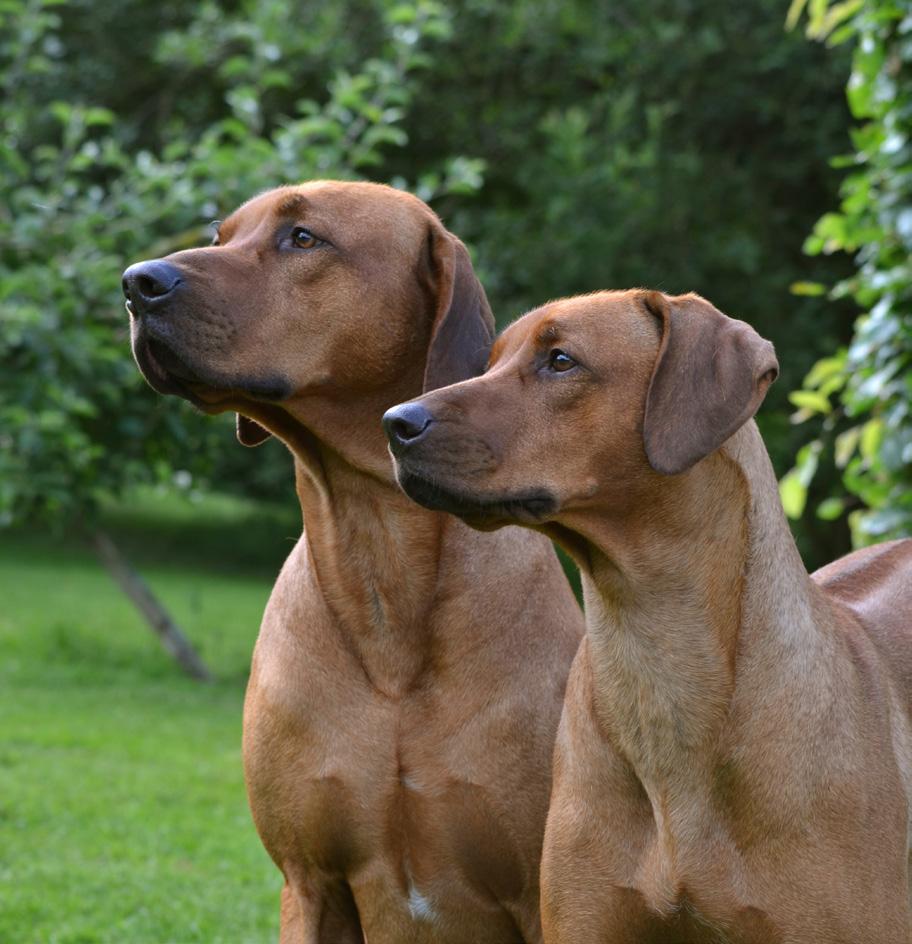
Seré won her first Reserve Challenge Certificate at Bournemouth 2017 under Marion Hunt and with her many 1st place wins at Championship level won herself out of Graduate, Post Graduate and Limit classes within a year.
Stepping into the Open class towards the end of the 2018 season, she won her first 2 Challenge Certificates at back to back shows; South Wales Kennel Association under Hector Heathcote and Midland Counties under Ann Ingram. Her crowning CC most aptly gained at Windsor 2019 under Zena Thorn-Andrews. She has gone on to win three more Challenge Certificates and continues to receive fabulous (and consistent) placings from the UK’s most notable judges. Just recently having turned 7 she made her debut as a Veteran under Sue Pollock-Yule won Best Veteran In Breed an went on to win a super VHG4 under Anne Macdonald.
Proving she has brains as well as beauty, she also has her Silver Good Citizen award.
has delighted our home with her joy, abundance of energy and mischief - which we thoroughly recognise from her Great Grandpa Colby!
A beautiful red wheaten sporting a perfect ridge, a pure white dove on her chest and the tiniest sprinkling of white on her toes, she’s a bright, loving, ridiculously intelligent girl who already has a wall full of red rosettes. In June 2022 became my first Rhodesian Ridgeback to gain a Kennel Club Gold Good Citizen award and in October 2022 she gained her Kennel Club Stud Book Number, winning 1st in Limit Bitch at South Wales Kennel Association Championship Show under Breed Specialist Nick Boyd.
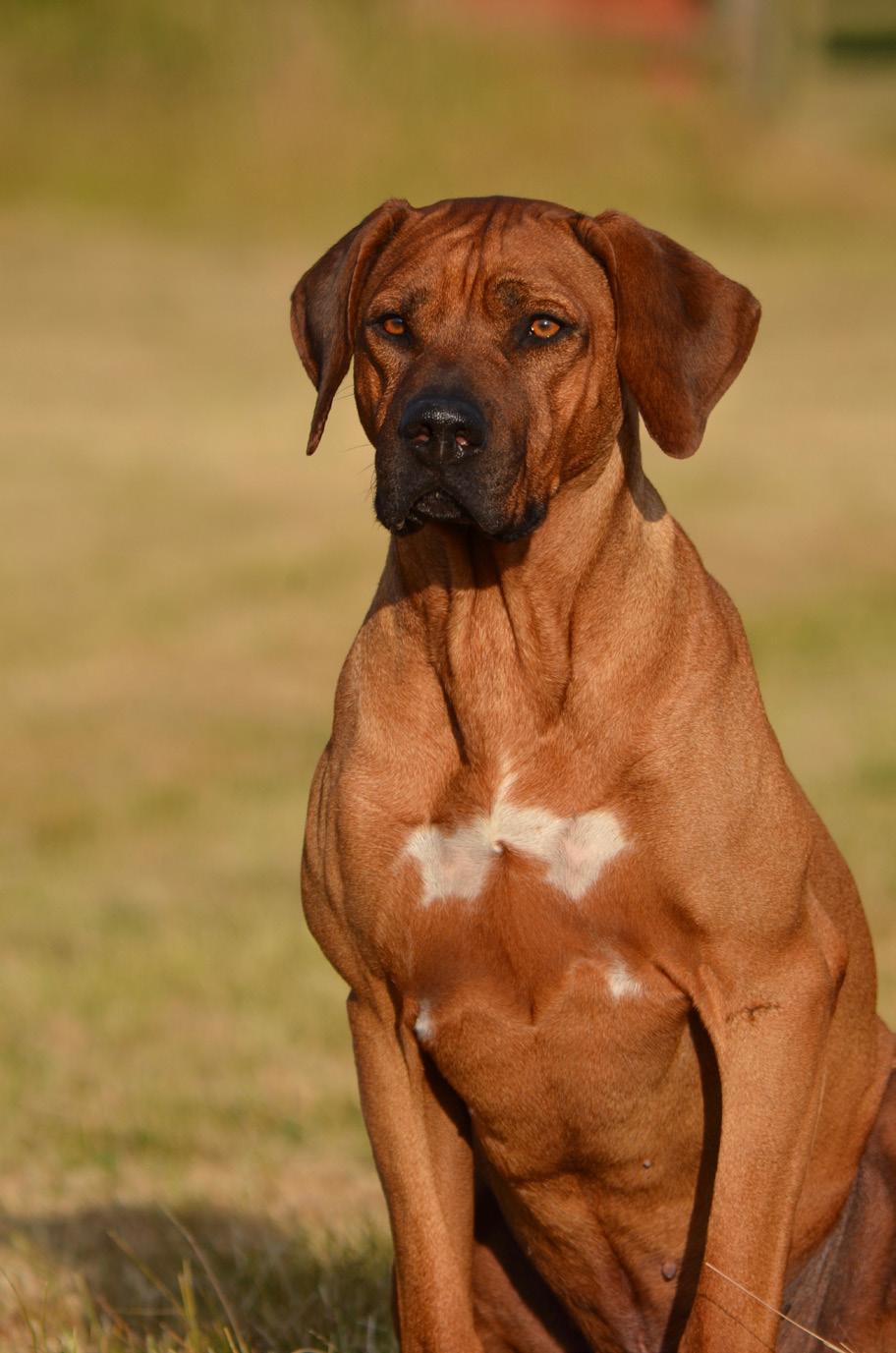
Ashten Ashten joined our family in March 2020 two days before lockdown. Bred by Sonja Helene Olson from Kennel Ulwazi in Norway, Ashten is one of the gentlest, kindest Rhodesian Ridgebacks I have had the privilege of knowing. I handled Ashten as a puppy and won several Best Puppy in Breed awards with him. Under Marjon Franke at City of Birmingham in 2019 he strode out to win first in Limit Dog, gaining his stud book number. He has a penchant for toys and loves them so much he can’t help but swallow them - this caused a serious problem and emergency surgery in 2020 where he had a teddy bear removed from his intestine. Whatever happened during that surgery changed Ashten as he’s never showed the same since. However, he really enjoys being partnered
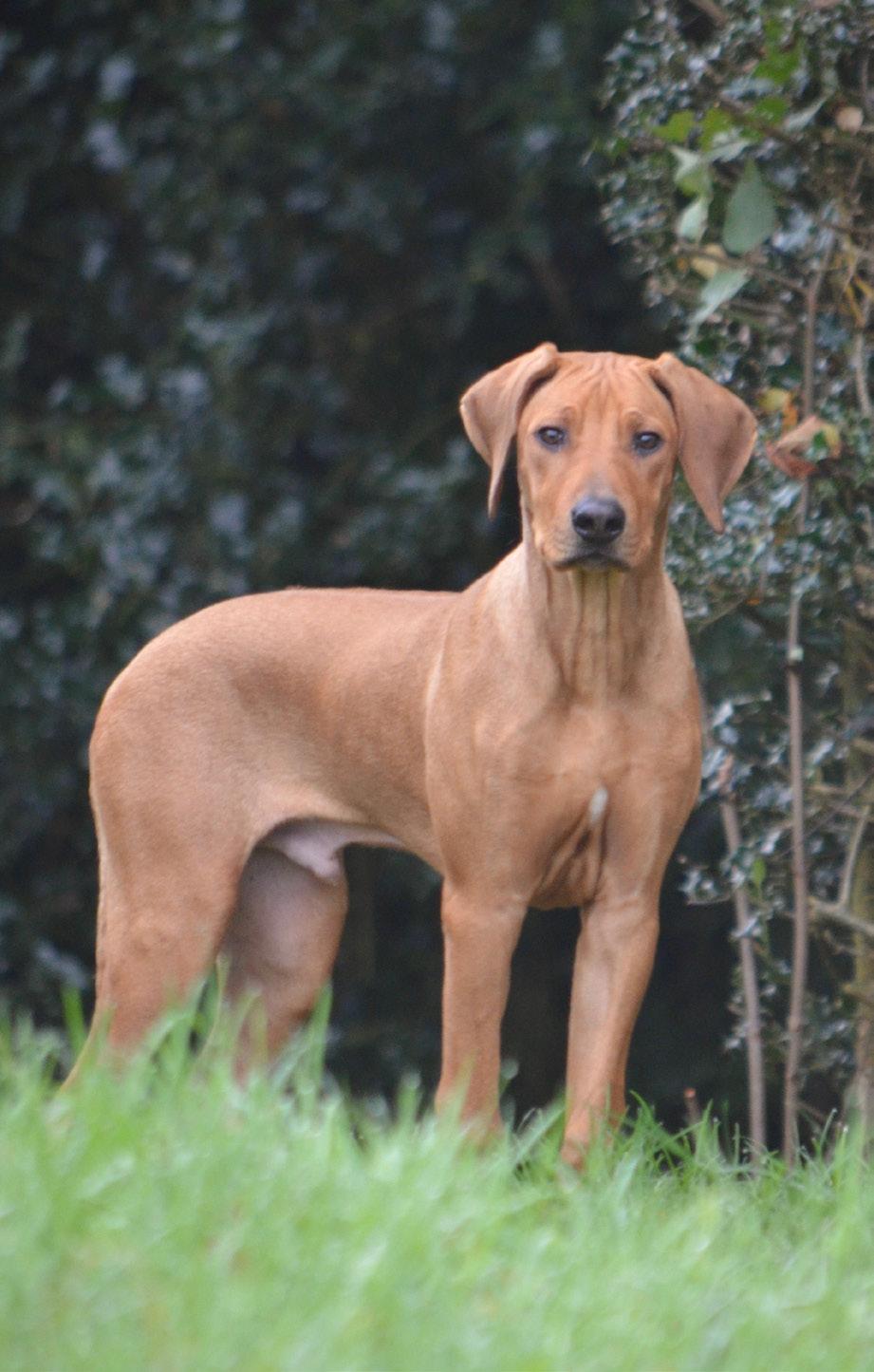
with a fabulous Junior Handler friend of ours. They form a beautiful team and Ashten is the perfect gentleman for Charlotte as she gains her experience with a larger breed. He’s a wonderfully calm and patient dog, and absolutely loves living on the farm, his favourite days are late summer when there is an abundance of fruit in the hedgerows and on the trees.
My youngest and most recent addition to the pack is Major - Kxoxo I’m Old Fashioned for Colkeririn - bred by Kati Ketonen in Finland. I saw Kati’s litter announcement advertisement and was so intrigued by the pairing I contacted her to congratulate her. Her beautiful girl FI Ch. LV Ch. Kxoxo Azalea Agera was in whelp to Am Ch. Spring Valley’s Great Gatsby by AI. Gatsby was top of the breed in the USA when I lived there and I was lucky enough to know several of his offspring, who I admired and exhibited alongside for many years. It feels like I’ve turned the clock back to now have one of his sons and I’m so excited to see how Major develops. He’s without doubt a truly wonderful character - interesting and interested with everything, a happy natured, loving soul.
PLEASE TELL US ABOUT YOUR JUDGING CAREER. WHEN DID YOU START TO JUDGE AND
My first judging experience was in 2013 when I attended a Judging Competence Assessment hosted by the Midlands and Northern Rhodesian Ridgeback Club in the UK. I was very encouraged by this first step into judging and soon afterwards got my first Open Show appointment in 2014, where my Best of Breed quickly went on to win his UK Championship Title and my Best Puppy In Breed won Best Puppy in Show that same day!
Judging felt a natural step to take with the breed I love so much, an excellent channel for my enthusiasm, to correctly shape my opinion and a great opportunity to learn more. Being an owner, breeder and a keen exhibitor who had won several titles in both the USA and UK, I felt I had a good foundation to build from.
In the USA I was greatly supported by a small network of breeders and professional handlers. Rosemary Marnoch of Chiastolite Rhodesian Ridgebacks in Arizona, USA was the catalyst for me taking it all further, we shared many fun journeys across the South West USA to shows and lure coursing events and our respective packs were good companions. Rosé encouraged me as a handler and taught me a lot about conformation and movement, and the show scene in general. I found handling fascinating and carefully watched some of the best professional handlers on the planet execute their craft. I was taught and encouraged by two wonderful people; Virginia Maese and Guillermo Cavazos who held weekly classes in Phoenix, Arizona, and at the shows I spent a lot of time with a very special lady, professional handler Juliet Clendenon who was the best role model in the world of professional handling, utterly brilliant at her job, always smiling, always supportive and always encouraging.
After I moved to the UK Sue Campbell from Nyassa Kennels was a real support with my judging career, I will forever be grateful to Sue’s straight talking guidance she gave me to do my best and enjoy it!
I really believe having a good eye for a dog is the key to good judging. I’ll read books on the subjects all day and all night and talk to those who are happy to share their judging experience to help me shape my skills, but having an eye for a good dog is a God given skill, and one I’m really grateful for.
I hold no official capacity as a mentor in the breed, but I am a true believer of fair and balanced commentary and am always happy to answer anyone’s questions ringside or in writing.
Type is identity - it’s the characteristics of excellence in body and movement that defines the breed, as close to the breed standard as possible.

Not specifically, I think our breed is in good shape - as an international community we must continue to communicate and share information to avoid exaggerations and health issues. I have seen fashions come and go, and this will probably always re-occur, but I think breed clubs are doing a good job at keeping their breed standard front and centre for breeders and judges alike.
I don’t think we have one overriding problem, but here are 5 things I don’t like to see in our breed:
Poor temperament
• Weak loins
Hocking-in rears
Forward placed shoulders
• Straight upright front pasterns
Always remember what a Rhodesian Ridgeback was bred to do - let that be a guide to conformation and movement. Be confident in their presence - approach them from a 45 degree angle at the front to their shoulder, they like to see who’s coming. Don’t prod, poke or pull them, respect them and enjoy them.
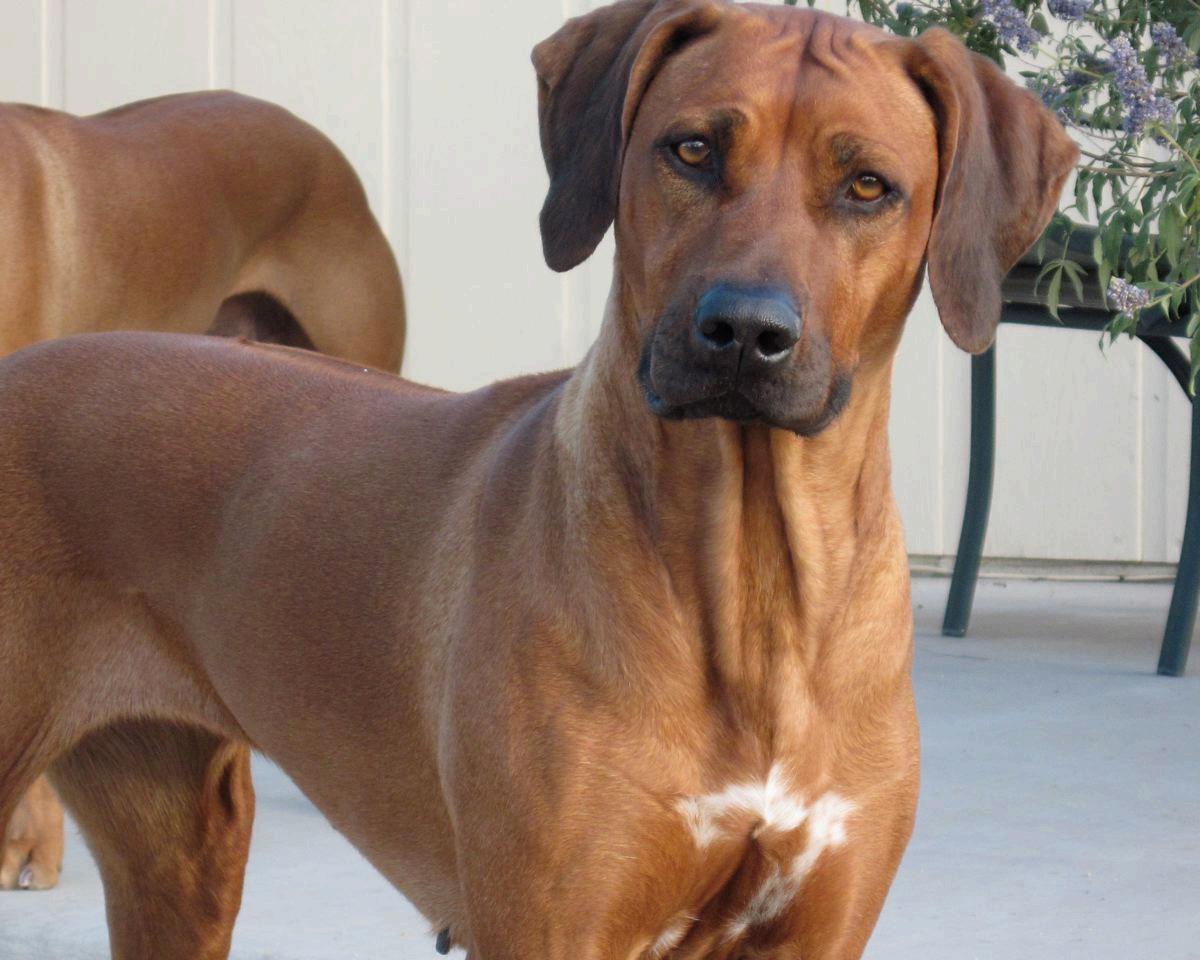

Someone who really enjoys judging our breed! Having a judge who enjoys the dogs puts both dogs and handlers at ease and makes for a better show experience. A judge who is not daunted by their entry and who is decisive in their selections. One who is respectful of the dog and the exhibitor - giving every dog the same amount of time, and one who follows a dog to the very end of it’s individual inspection. Ultimately a good judge is defined by integrity - a judge who puts all agendas aside and works to find the best dog on the day.
They don’t seem so much older than me now!
WHAT IS YOUR MOST MEMORABLE
AS A JUDGE. PLEASE TELL US ABOUT SPECIAL HIGHLIGHTS.
It’s always thrilling when you work through an entry class by class and end up with a winners line up where all the dogs have a strong resemblance to each other. After judging an open show in 2016 several exhibitors remarked that every single dog in my line up had the most wonderful movement. It’s a good feeling when your exhib-
WHAT QUALITIES DO YOU ADMIRE MOST IN A JUDGE? WHICH CHARACTERISTICS MAKE A GOOD JUDGE IN YOUR
WHAT DIFFERENCES DO YOU SEE IN THE JUDGES TODAY AS OPPOSED TO THOSE IN THEKeira
itors can see where you are going - demonstrating your interpretation of the breed standard and making selections on characteristics you feel are important. There are moments when you tingle with excitement when you put your hands on a dog that is so exquisitely conditioned. You just know the owner and exhibitor have done their utmost to present you with a dog that is in the best possible shape it can be. Similarly, when an outstanding moving dog comes into the ring, it can take your breath away.
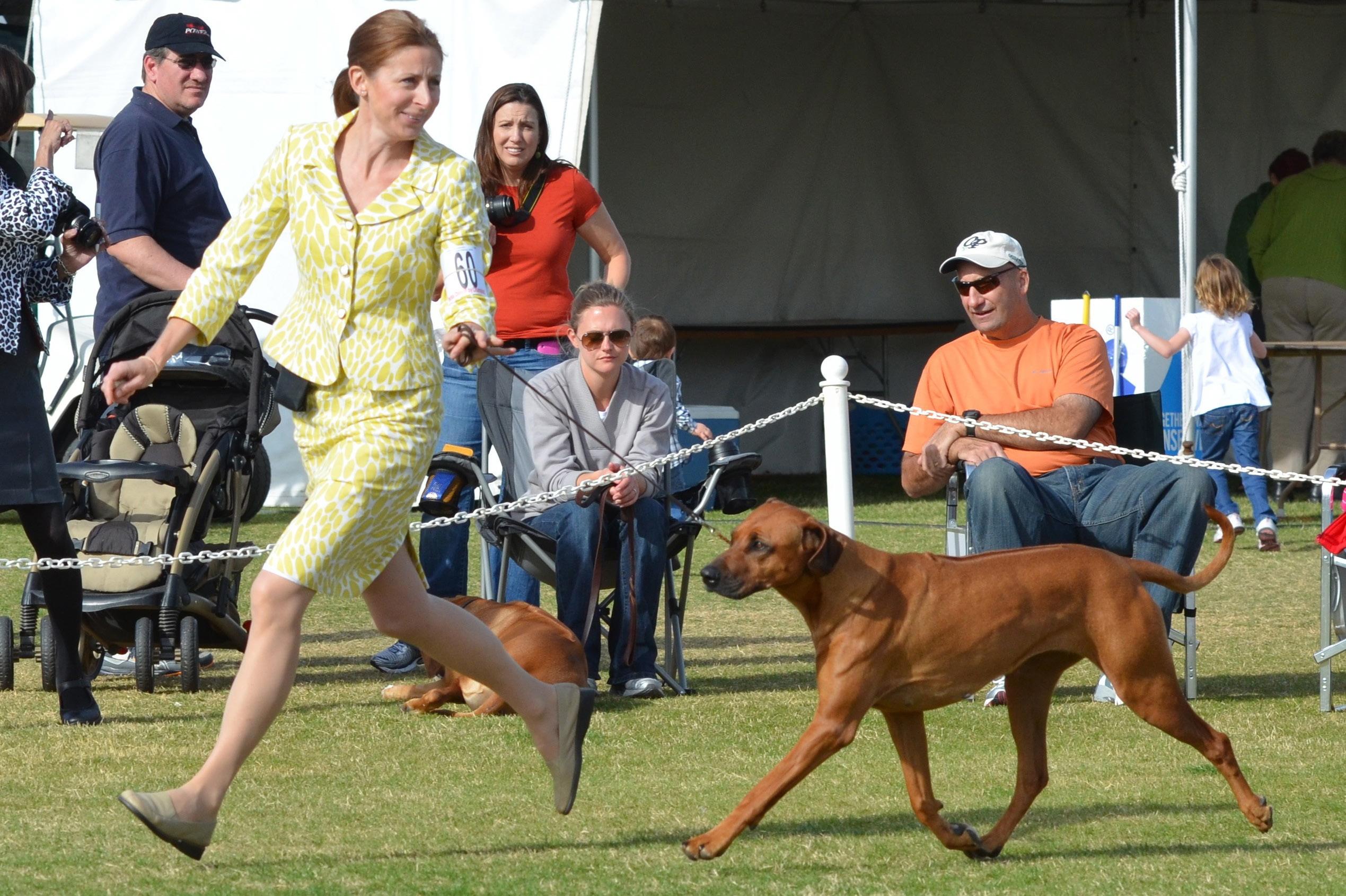
Social media. Used correctly can be an fantastic asset to our sport - education and communication, regardless of distance. Used incorrectly sadly it gives people who just can’t find nice things to say a place to say them from.
DO YOU SEE ANY DIFFERENCE IN RR OF TODAY COMPARED TO RR OF 10 OR MORE YEARS AGO? IF SO, WHAT ARE THE BIGGEST DIFFERENCES YOU SEE?
I’ve seen some fashions or traits come and go, namely; hugely inflated chests, over angulated rears, under angulated rears, dark- dark red coats, and too far forward shoulder placements. The
USA used to be criticised for all the health testing that gave the impression our breed was in trouble, but thankfully that silly notion seems to be in the past now and a wide spread appreciation of health testing and more importantly breeding selections can be made based on solid and vital health test results.
Breeders and Judges who aren’t prepared to be honest with their breeding programme or their entry.
Our understanding of the breed standard is ultimately how we hand the reigns of our breed from generation to generation. Don’t just read the breed standard - understand it. Careful study of the breed at work and at play, in books, on social media and through talking with breeders and judges you learn to trust will help distill the essence of the breed - always remember what
IT IS INEVITABLE THAT BREEDS WILL EVOLVE AND CHANGE SOMEWHAT AS NEW GENERATIONS OF BREEDERS TAKE CHARGE. HOW CAN THE ESSENCE - OR TRUE BREED TYPE - BE MAINTAINED?
the Rhodesian Ridgeback was bred to do. Avoid widespread acceptance of exaggerations and never be seduced or influenced by fashion. I like to plot the consistent winners. Those placing 1st 2nd 3rd in big classes no matter who the judge is. They will always appeal to whoever is judging - they are often the dogs to take the most notice of. Finally, I hope our lovely range of coat colour is always appreciated and maintained.


Look at your bitch and know what you need, locate potential suiters then go backwards through their pedigree to be confident you will breed what you need and to breed as close as possible to the breed standard. Always have a plan and give stud dog owners good reasons and solid research into why you wish to use their dog.
Always be thankful to the Universe for being part of such a unique and beautiful breed!
1. Breed type 2. Conformation with particular interest in front assembly 3. Heads, Ridges and Size – I know that “3”, but there it is.
We both agree on one very important feature: balance. A dog that is balanced is of the correct size, has the correct substance, and everything is in the correct proportions. This embodies symmetry and a harmonious blend of all the individual, which, we would say, typifies the dog as we would expect, if it is of correct type. The bottom line is: does the dog give you gooseflesh?
I must admit, that much of my decision for placement happens during that first minute, when a class enters the ring. After the first lap around the ring, I have a good idea, which dogs are likely to be among the first 4.
First, I look for an overall balanced dog – not too big, not too small, not too long, not too short. Next, I look for a topline that remains firm as the dog is going around. Of course, the ribcage has to be of correct shape and length in order to support that topline. And third, I look for a typical head. Skull flat and not too broad, no cheeks, muzzle long and deep.
The individual examination will then hopefully confirm what I saw. Dentition might spoil an otherwise superb first impression. A few “points” might be lost or gained during the away and
I am interested in entering the ring of dogs registered for the exhibition. The first impression is important to me. The general first impression as the dog enteres the ring, which often tells something about the character of the dog. Then the typical expression of the exhibited dog. And then movement. Especially after the first round in the ring, I’m usually clear. That is, if there are no major defects during a detailed examination (teeth, ridge and more). So in summary: showing, expression and movement.
back. I tend to be rather forgiving over behaviour with young ruffians in their hormonal stages. I just move them to the other side of the ring and hopefully they will calm down. Some dogs are a bit overwhelmed with all the hoopla of a show. If time permits, I give them another chance or two to find their feet.
Before placing a big class, I sort the dogs in the order I *think* they will be placed and let them go around the ring a few times. It happens quite frequently that I will re-shuffle them, move one up or down a place or two in that lineup.
I consider it a great honour and responsibility to judge Rhodesian Ridgebacks.
For our readers, we would like to invite you to share your thoughts, your preferences, the FIRST THREE POINTS, you look for in a dog when it enters the show ring, and what is important to you when selecting a winner.
Thank you for the question, it is a good one, and one I can easily answer, my initial three points are:
1. Condition
2. Balance
3. Soundness
If I can I like to watch dogs coming into the ring, how they set up, how they are reacting to their handler and their overall condition. A correctly stacked dog with withers, elbows and front feet all in alignment and back hocks to feet perpendicular to the ground, gives the best static outline to be able to assess balance
I then like to move all dogs around the ring - twice if possible - the ring size determining how many dogs are moved at once. I have a penchant for a balanced open side gait with perfect footfall. I like to see the back foot replacing the front foot, with reach at the front and matching drive right through the rear. From this I can start the assessment of soundness
These three points will give me an idea of which dogs I am particularly excited to assess on their individual inspection. They do not always determine the winner, but they do form a benchmark from which to judge the class.
On individual inspection I’m looking for good muscling across a good framework, as well as good tracking fore and aft - moving neither too close or too wide. We have a movement breed so I like to move them and very much enjoy watching them from all directions; down and back, triangles, and full go arounds. Youngsters often settle better once moved, so I’ll always move a class before individual judging. I don’t like hearing exhibitors complain of moving their Ridgebacks, and I am not keen when handlers go at full speed
around the ring - a judge is assessing a gait, not a sprint to the finish line!
I am not a judge who takes a long time with hands on - I start at the shoulder, work my way backwards and then inspect the head last - I think this is the most respectful to the dog. A well placed shoulder is vitally important to our breed, as is the length and return of the upper arm. I like to first run my hands downwards from the shoulder and then on the rib cage to confirm the depth and length of ribbing, then length of loin. I like loins to be strong and not too long. Now standing behind the dogs, I will inspect the ridge, my ideal is a good, long ridge with no more than 1cm offset. The length and width of the first and second thigh is important - to be well muscled and for assembly to match the front, hocks need to be strong and especially need to be straight, finishing off with a kink free tail. Keeping one hand on the dog I move to the front of the dog and place one hand under the jaw, as I like to feel the quality of the lower jaw. In the UK we do not count or inspect the full dentition, so unless I am specifically required to, I will inspect for a scissor bite, and that the teeth are of good size and set square. Head planes, width and finally the eyes and expression form the lasting image - I love a big, round dark eye. I am also very amused by the aloofness of our breed, and as a long time exhibitor, I know that sometimes your dog will not look the slightest bit interested in engaging with the judge - I think this shows breed character, so I’m not put off by it!
I’m a firm believer if a dog moves right, it’s built right, so the movement confirms the hands on inspection in that order for me. On a final line up I’ll once again look at that balance, and if that balanced dog has moved soundly with a lightness of step and an easy action, has ticked as many of my personal boxes (mentioned above) as possible and has a bright, good character then that’s usually my winner!
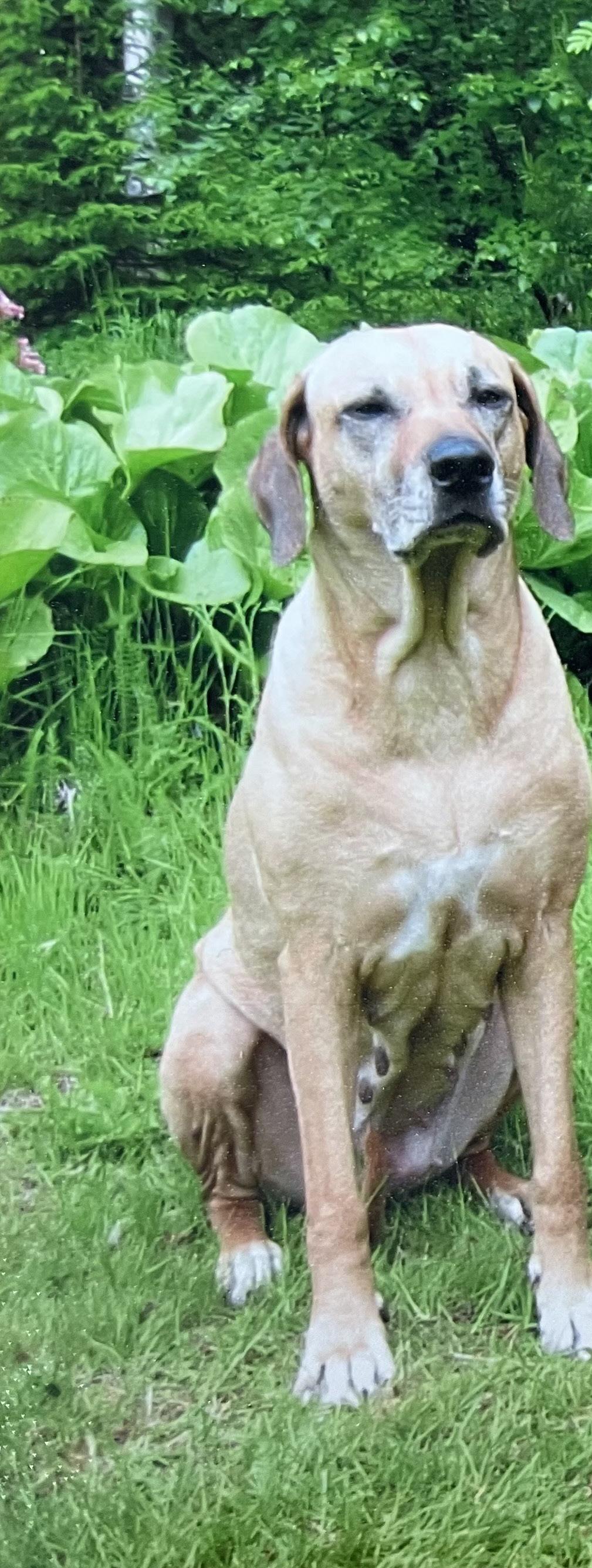

It was early summer in 1995. At that time, e-mail wasn’t the first choice for communication, and internet didn’t exist in every household. Fortunately, we had a fax at work, and that made it possible to contact Stephanie Bringslid, the breeder of the Norwegian Ridgeback kennel Maridadis. She had a newly born litter, from which she - after many, many faxes - promised me a female puppy. She told me that a male from this litter was also coming to Finland, and I got Jonna’s contact information. In August, we flew together to Norway to pick up our puppies, and so Jonna’s Jassi (Maridadis Jasiri) and my Tami (Maridadis Jiwe la Thamani) arrived in Finland.

Tami probably wasn’t the prettiest flower in the field, but she quite easily finished the Finnish champion title. She was healthy, stable, and a good-tempered bitch in every way, so the idea of breeding her started to interest me. And so, I entered to the breeder’s basic course and applied for a kennel name.
At that time, there were less than 100 Rhodesian Ridgebacks in Finland, so naturally there were not many stud dogs in the queue, so I needed to extend my search abroad. Finally, I found a suitable male from Sweden. But as things never go as planned and when it was time to travel, I realized that Tami’s rabies vaccination had expired and therefore the trip to Sweden would not be possible. In a big panic, I asked my friend Marianne Gellin (kennel Ikimba) for advice, if she had any ideas about a suitable male for Tami. After quick brainstorming and thinking of the other candidates, I decided to use Marianne’s male Bruki (C.I.B. FIN CH WW-95 BW-95 FINW-94, -96 Shadyridge Mabruki Mbili).
Bruki was my favorite dog of that era, whom I had met numerous times and I believed that his appearance would complete Tami just as it should.
Malozi A litter was born on 14 July 1998, 1 male with third crown
and 2 correct females. Although the litter was small, I was extremely happy to get two nice girls to continue my breeding in future. Sadly, Bruki passed away after a short illness just 2 weeks after the puppies were born. How lucky I was, that I got a chance to use him for breeding. Perhaps the original breeding plan was meant to fail, and this combination came true.
From that first litter, Minka (C.I.B. FIN, SE CH ITW-00 WW-00 FINW01 Malozi Adimika) turned out to be a beautiful, healthy, and excellent breeding bitch. She became f.ex World Winner 2000 in Italy, where we were together with Marianne and Okoa (C.I.B. US, FIN, PL CH ITW-00 WW-00 FINW-00 PL&PZW-00 Ikimba Shadyridge Okoa). It was the double win to Finland, as Okoa also became the World Winner.
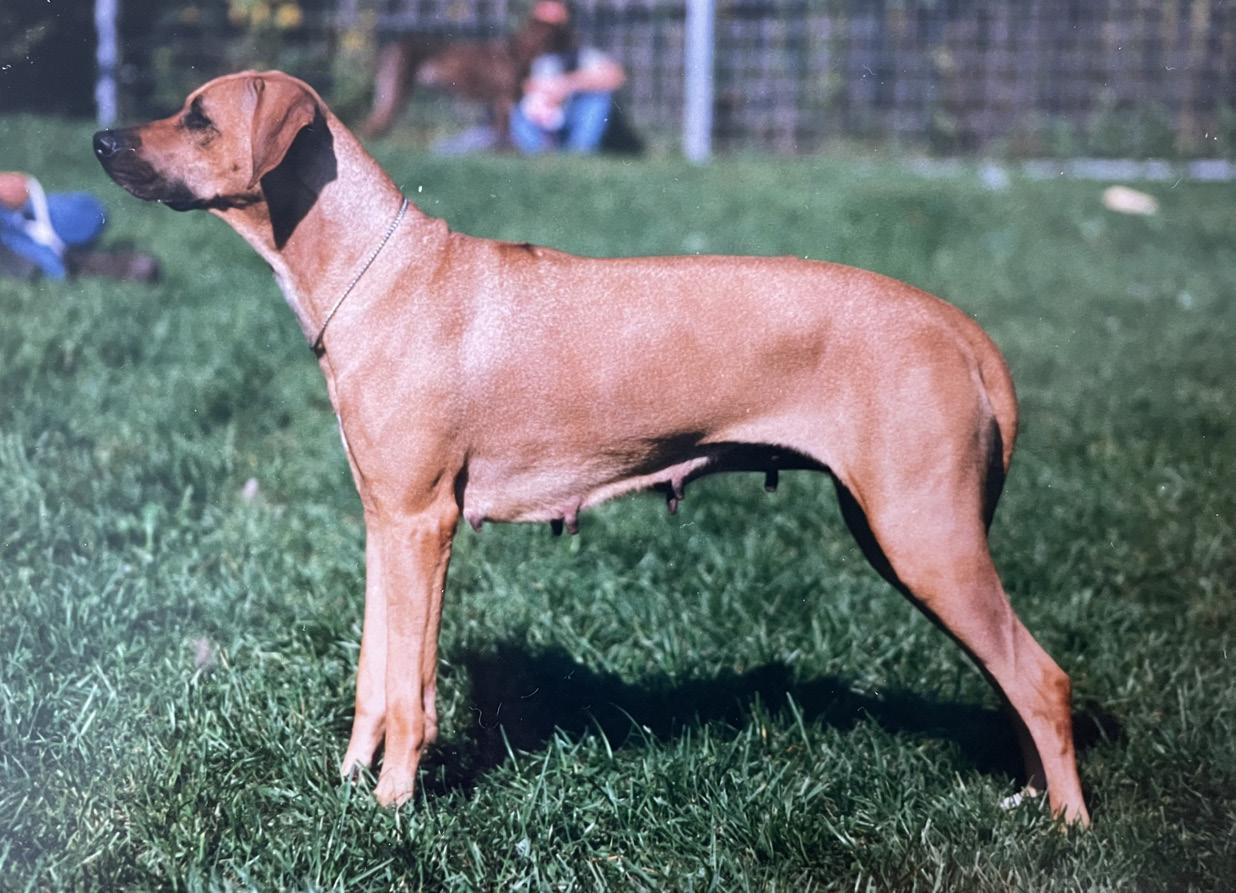
Minka had her first litter with Okoa. Their son, Sepe (C.I.B. FIN CH FINW-02 EEJW-02 Malozi Cebengela) was the first Rhodesian Ridgeback to win Best in Show in an all-breed show. Anne and Sepe also competed in obedience Winner class with much success. Unfortunately, Sepe became ill in his best age, and they needed to give up hobbies.

Emmi (C.I.B. FIN, EE, LV CH Malozi Elimika) was born in Minka’s second litter with Okoa’s son Gambo (C.I.B. NORD, FIN, SE, NO, EE CH Mankoya’s Great Gambo). She had six puppies with the wonderful
Austrian male Kadani (C.I.B. HU, VDH, CZ, AT CH Chipangali’s Kadani). From this litter Habi (MULTI CH, MULTI JCH, MULTI WINNER, WJW-06 Malozi Habiba) was exported to Latvia. She was the most successful and perhaps the most significant dog of her era in the Latvian Ridgeback world. Habi joined us at the World Winner 2006 in Poland, where she won the jackpot, being the Best in Show Junior of the day.
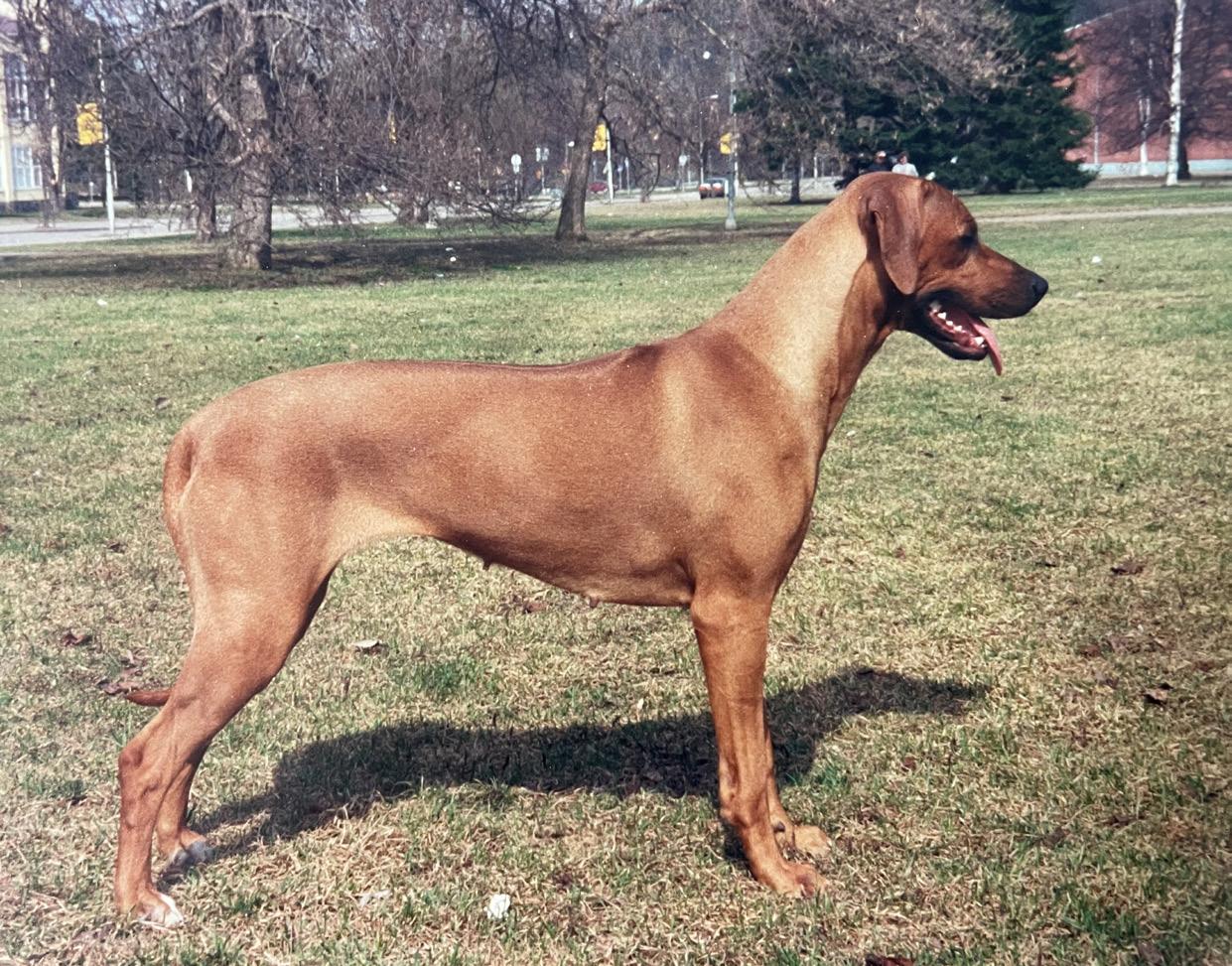
Minka’s third and last litter (AI) with Sekani (SA CH Nyaka Yesekani of Cartouche) produced only one puppy. That puppy, Fanny (C.I.B. FIN, EE CH, FINJW-04 FINW-05, -07 PL&PZW-05 HeVW-12 Malozi Fahamika) really turned out to be “the one and only”. Under Päivi Sormunen’s (kennel Feanor’s) expert raising and training, Fanny grew into a wonderful show and work dog. She easily became champion and winner of several countries and also competed in obedience Winner class.
Sepe’s sister Hemu (C.I.B. FIN, LV CH BALTW-04 Malozi Chamchela) stayed at home, and she had
two litters. From the first litter with Swedish male Sauvage (SE CH SE TCH NORDW-03 SEW-03 Djungelkattens Superridged Sauvage), Gimli (C.I.B. FIN, DK, EE, LV CH FINJW-05 FINW-06 LVW-08 Malozi Gimli) and Milka (MULTI CH, MULTI JCH, MULTI WINNER Malozi Ghalimika) came truly successful show stars. Both got champion and winner titles in several countries. The most significant and memorable achievements were Gimli’s Danish CAC at the World Winner show and Milka’s Danish CAC at the Specialty Show in 2010. Gimli also participated in ruin searchings, which he particularly enjoyed. Hemu’s second litter was with Sheikh (US, FIN, CA CH Ikimba Tumomak Sheikh) and one more star was born. Inka (C.I.B. FIN, AU, EE, LV CH BALTW-09 EEW-09 Malozi Inyanga) became very special dog in Tuuli Viitamaa’s life (kennel Inyeti’s). As a proud breeder, I can say that Inka is probably the only Finnish bred Ridgeback who has achieved
the Australian Champion title. Inka easily became champion in several countries. Among other great wins she also won BISS in World Winner SKCHR Club Specialty 2009 in Slovakia.
Fanny had only one litter sired by Danish male Luku (Kinyemi’s Fora C’huluku). All 7 puppies in the litter finished their Champion titles. Remarkable show results were achieved by e.g., Jumo (MULTI CH, MULTI WINNER Malozi Jumoke) who won CAC at the World Winner show 2008 in Sweden and Jasu (FIN CH FINW-08 Malozi Jazua), who won Best in Show in the Dutch Specialty show in 2009 and was the Best of Opposite sex at the World Winner Specialty show in Slovakia.
Tami died suddenly at the age of 11 on June 8th, 2006 due to massive bleeding in the abdominal cavity. Our vet suspected that the tumor had ruptured. The loss came far too quickly, I hadn’t time to prepare for the loss, so the grief was overwhelming. When looking at the old pictures, all the memories come back, tears come to my eyes and the longing wakes up again.
Milka passed away at the age of 10 on July 30th, 2014. This was the biggest loss in my dog life, because she was the supporter and comforter in many stages and changes of my life. Even when everything else around changed, she was there. This is probably the reason why I lived a dogless life for almost 4 years.
Several Malozi puppies have moved to abroad: Denmark, Holland, Germany, Latvia, Estonia, Poland, Czech, Hungary. They have left Malozi’s paw mark to the Ridgeback world, and it is nostalgic to see “my name” in European pedigrees.
On July 30, 2008, the Finnish Kennel Club awarded me the Vuolasvirta award no. 652 as the first Rhodesian Ridgeback breeder. This award is given for meritorious work as a breeder and in accordance with the

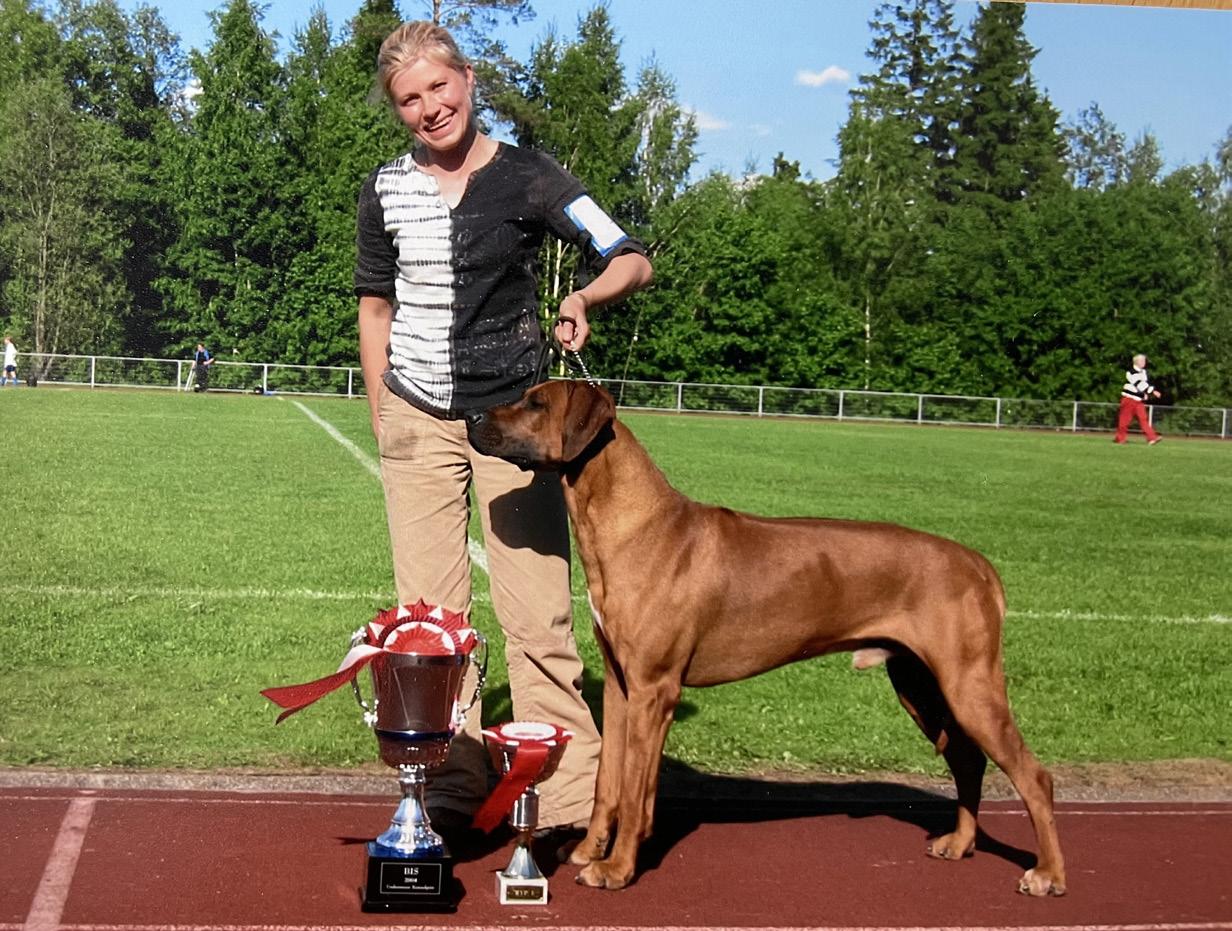
breeder’s contract, the activity must be impeccable and exemplary.
I also was the first Rhodesian Ridgeback breeder who received the Breeder’s Award of Finnish Dog Breeders Association in 2009.


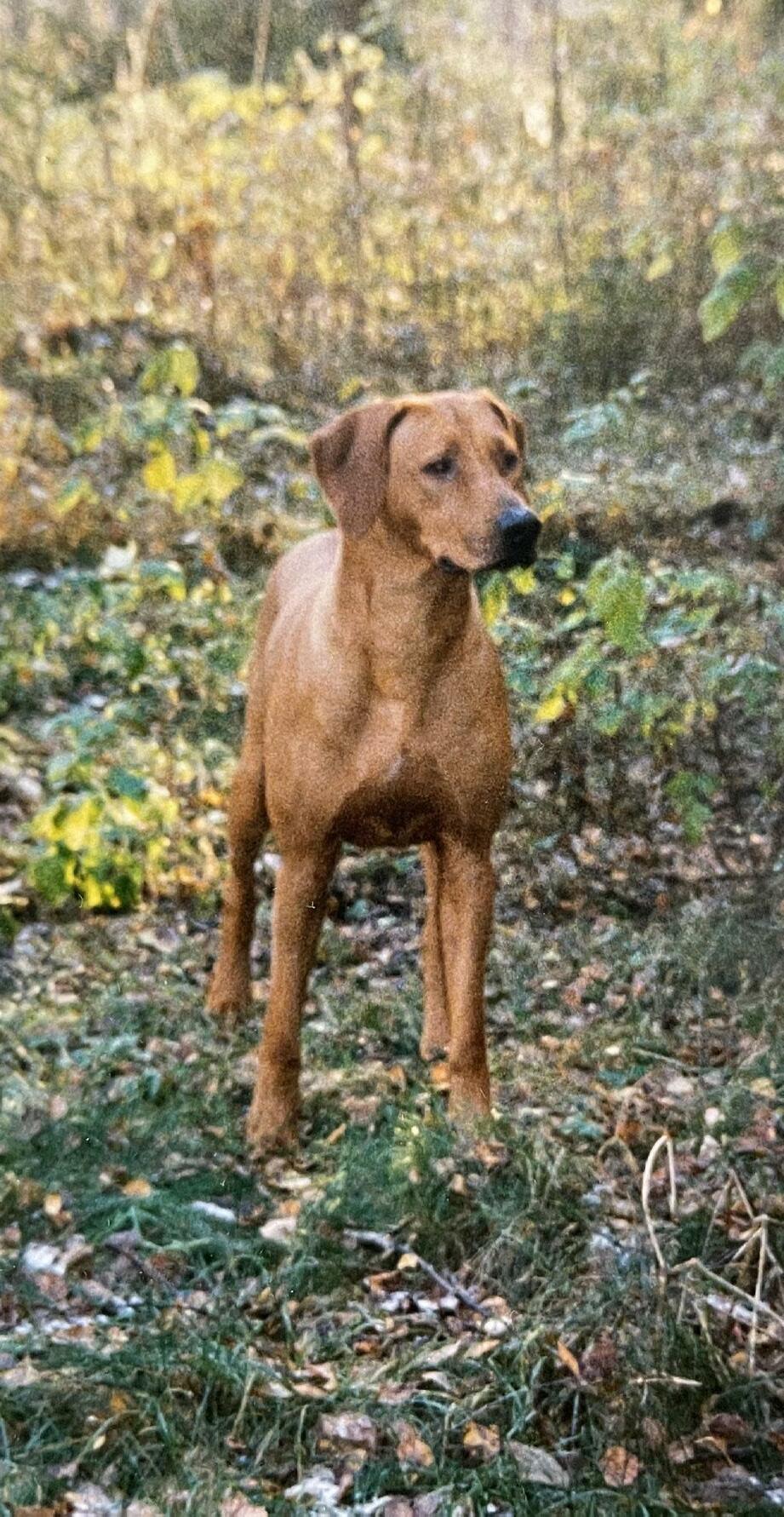
After almost four years of dogless life, Malla (MULTI CH Feanor’s Faniel Malozi) arrived in the family. Our friendship and cooperation with Malla’s breeder Päivi have continued over 20 years, since Ronja (Malozi Damisa) moved to her in 2001. Since then, Päivi had Fanny (Malozi Fahamika), Musca (Malozi Jasirika) and Polkka (Malozi Lalamika) from my litters. Polkka is Malla’s grandmother, so I can say I am returning back to my roots.
After 11 years break in breeding, Malozi M-litter was born on October 6, 2020. I decided a long time before the puppies were born that the litter is a tribute to my first litter. That’s why I named two puppies as Mabruki and Maridadika.
As today, 14 litters and 100 puppies were born in Malozi kennel. More than one third - 36 RRs - have achieved Champion titles in Finland and abroad.
When I started my “career” as a breeder more than a couple of decades ago hip screening was the only obligatory health check. Years later when elbow scoring was added to PEVISA (i.e., the Directives for the Programme for Combating Hereditary Defects and Diseases), we thought it as a huge change. Also, in those earlier days, it wasn’t usual at all to participate in a temperament test. They were strongly thought to be only for working breeds, and not suitable to evaluate the Ridgeback’s character/temperament. That’s why I’m very glad that we nowadays have the MH character evaluation, which, I think, is much more suitable for our breed.
Today, we have more x-ray requirements plus character and genetic testing recommendations. All these screenings are necessary and for the benefit of our breed. We say that information increases the pain. That’s why it is of utmost importance that we are aware of the health situation and of possible problems before they explode to our faces.
I require that my puppy owners are committed to examine their dog’s health in the required health aspects, and I hope they understand the importance of X-raying and temperament testing to me as a breeder. Without these results, I don’t know in which direction the health and temperament issues of my breeding work are developing.
So, a lot has happened in 25 years as a breeder, and the above is just a minor scratch on the surface. Although I presented only the dog show achievements in this interview, many of my puppies have been successful in various other hobbies. My motto is, that the dog’s success or lack of it, doesn’t change its value in my heart. All furry babies are equally loved and important to me. They brighten their owners’ lives as jogging buddies, companions,




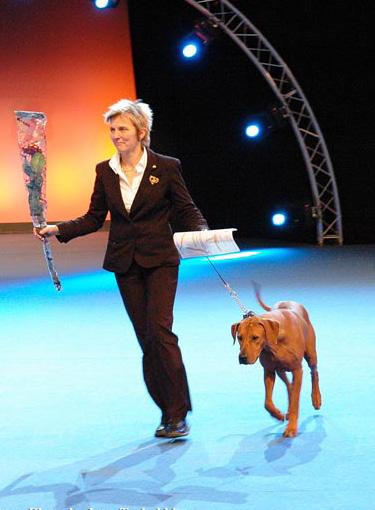
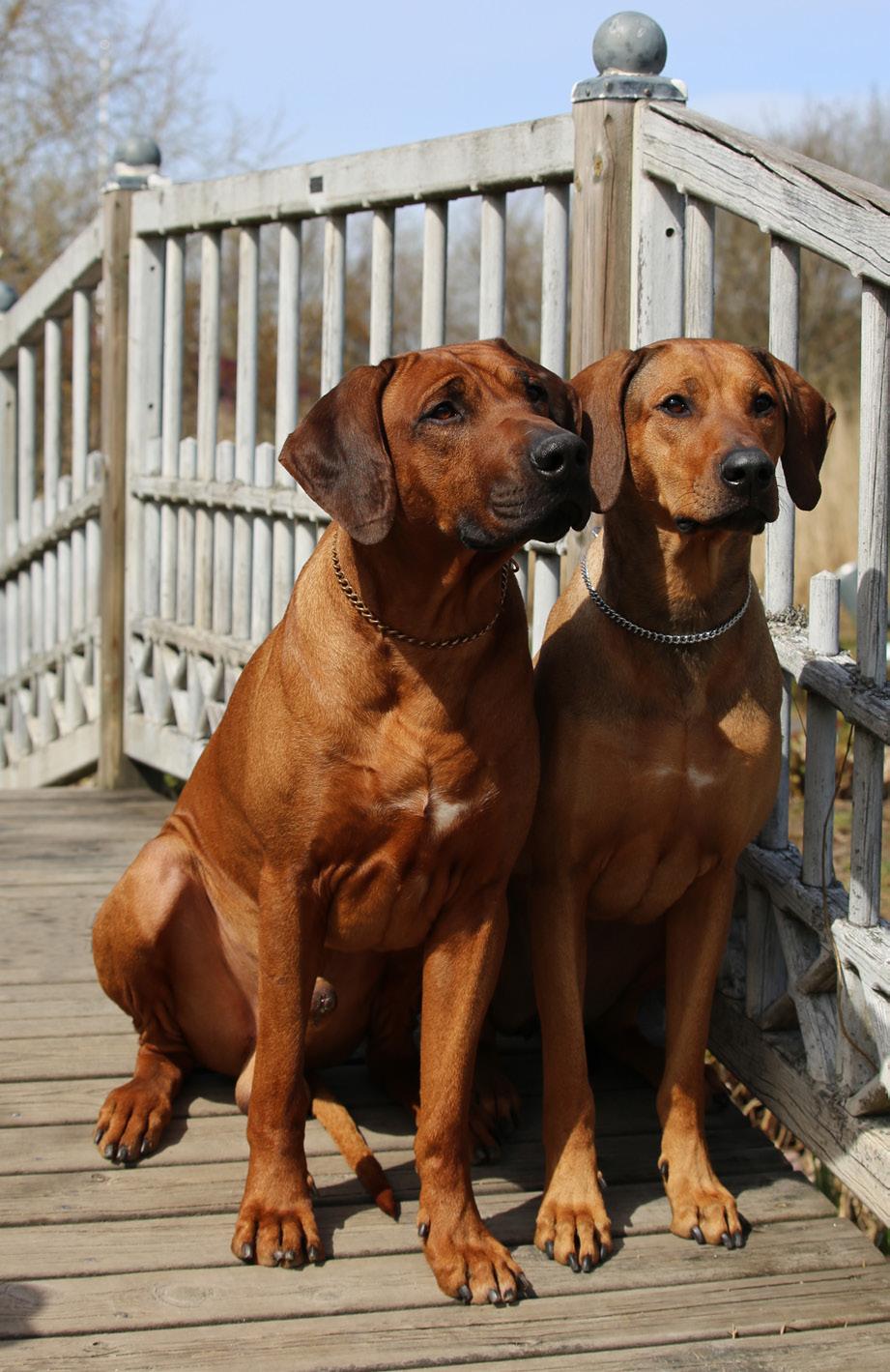
and paw therapists. The most rewarding thing for all of us is the easiness of everyday life and working together, and that my puppies have brought joy and more meaning of life to their owners.

I have been lucky and have found good and loving homes for my puppies. I have promised to support in any challenges and successes of owning and raising a dog. Many of my puppy owners have also become close friends, and we share joys and sorrows as well as successes and disappointments. With this lifestyle, I have been able to participate in club activities, got to know many people and created important contacts in the dog world. I would say that life is much richer with dogs.
PS: I don’t remember who has taken the photos, so apologies for missing the photographers’ names.



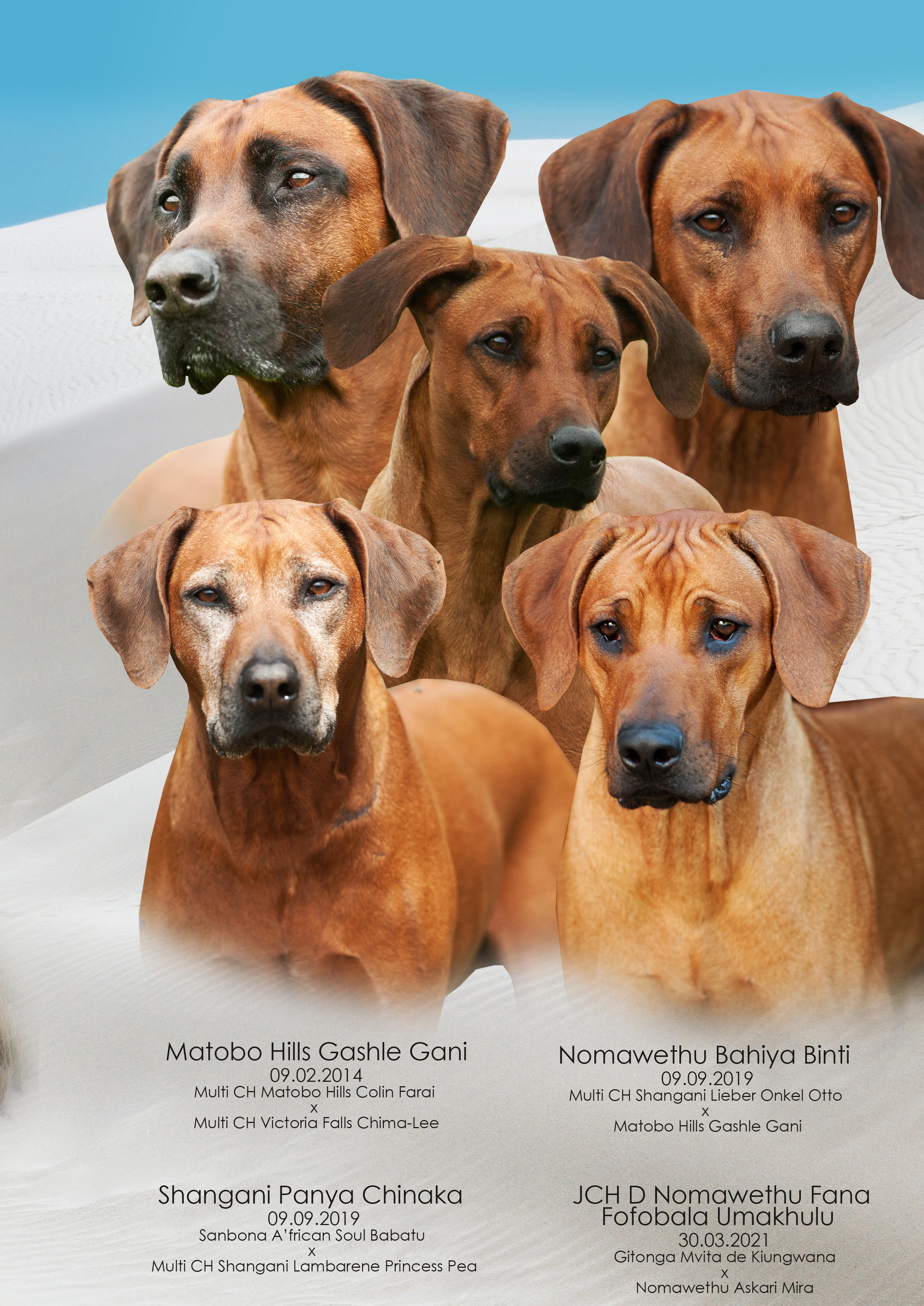

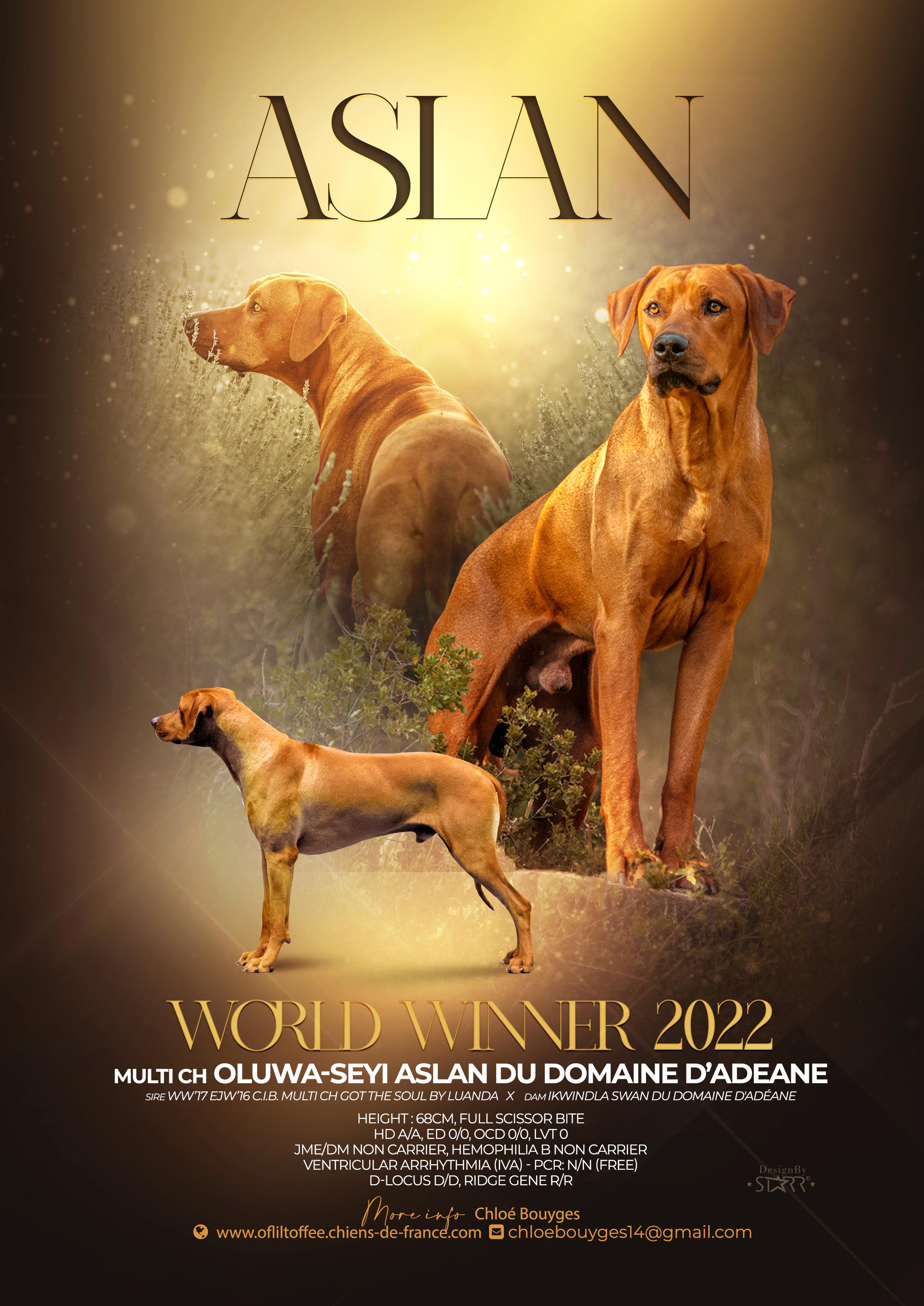

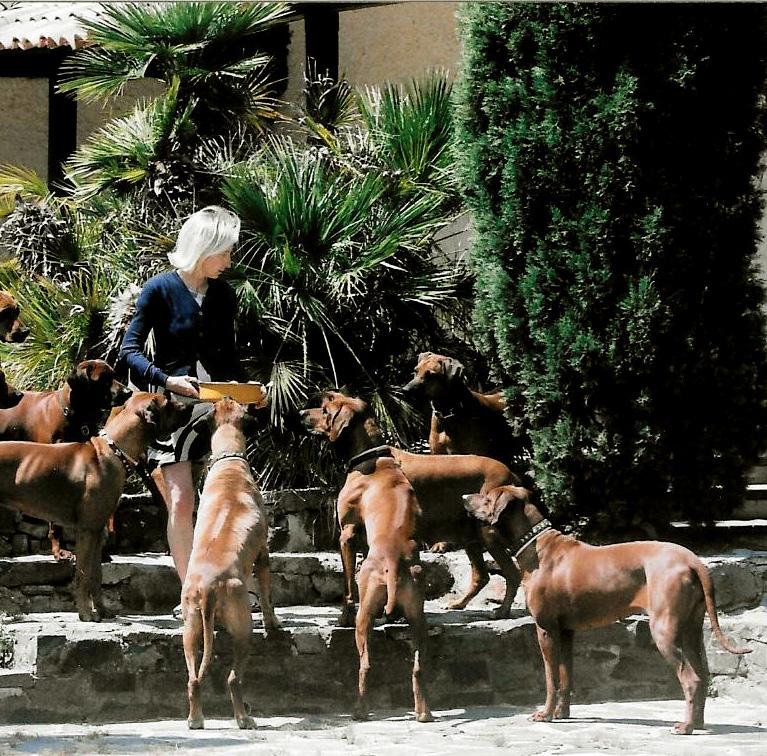
The last third of my life i have dedicated to rhodesian ridgebacks.
Today, my wife Christine and I, live in the South of France between Nice and Marseille together with our pack of currently two males and a number of females. Ages range from 8 months to 8 Years.
Our dogs share their large kennel - which is our house - with us. They also run free on our nice and big piece of land. Six days a week I walk them for 3 to 4 Hours in the nearby wineyards and the forest, where they can chase wild boars and rabbits. We are able to offer our dogs a life, which their ancestors used to have in their home country Rhodesia: similar climate, hunting grounds, bitches raising their puppies and males enjoy being stud dogs.
Our pack also well protects our property. We never lock our House by key and nobody should enter without our permission. If somebody would climb over the entrance or the fence, it would be very painful to him.
In about 30 years we have bred 600 Shangani Ridgebacks. Their genes are spread all over the World, from Australia to Africa, to South and North America and, of course, to Europe, from Russia to England, from Scandinavia to Spain and Italy.

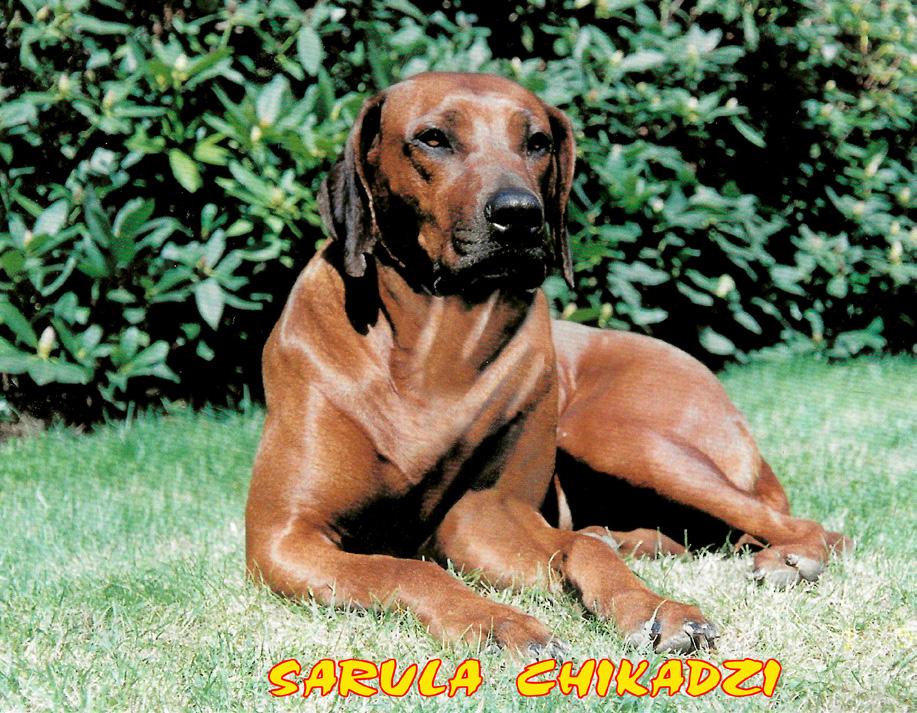

The foundation of our breed is based on two dogs from former Rhodesia: Sarula Chikadzi, born in Harare and Umvutcha Matobo, born on Thandanani Farm near Bulawayo. Margaret and Sammy Wallace recommended in 1993 to Linda Costa, that she should give us a female puppy from her litter of Mushana Ranzi and Rustig Mooketsi. It was Chikadzi.
Some time later we picked up Matobo from Margy and John Sankey. Matobo was born on a big farm in the area, where more than 100 years ago Cornelius van Rooyen used to hunt with ridged Dogs. “Weltevreden”, van Rooyens Farm, is nearby. When Matobo was 10 weeks old, he flew together with us to Europe on Lufthansa in the First Class Cabin.
Now, being the owner of two genuine Rhodesian Ridgebacks and trying to understand this unique breed, it was a clear obligation for us to safeguard and continue the old bloodlines in our breeding
efforts to keep character and instincts as well as powerful appearance alive. Therefore Shangani Ridgebacks are not going to meet the popular trend of being nice and handsome dogs with a ridge on their back. They are hunting and guarding dogs as Rhodesian Ridgebacks should be.
Some years ago a German member of the Shangani family, who owned a dog from us called “Ben”, sent us a letter with a great recognition of our breeding philosophy.
He wrote : »Ben is and will always be an Ur-Ridgeback. I am certain that your efforts to breed a
Ridgeback like they were when the breed was first established, came to fruition in Ben. He does not show fear or compromise on the hunt and when protecting. Sometimes he is so wild and
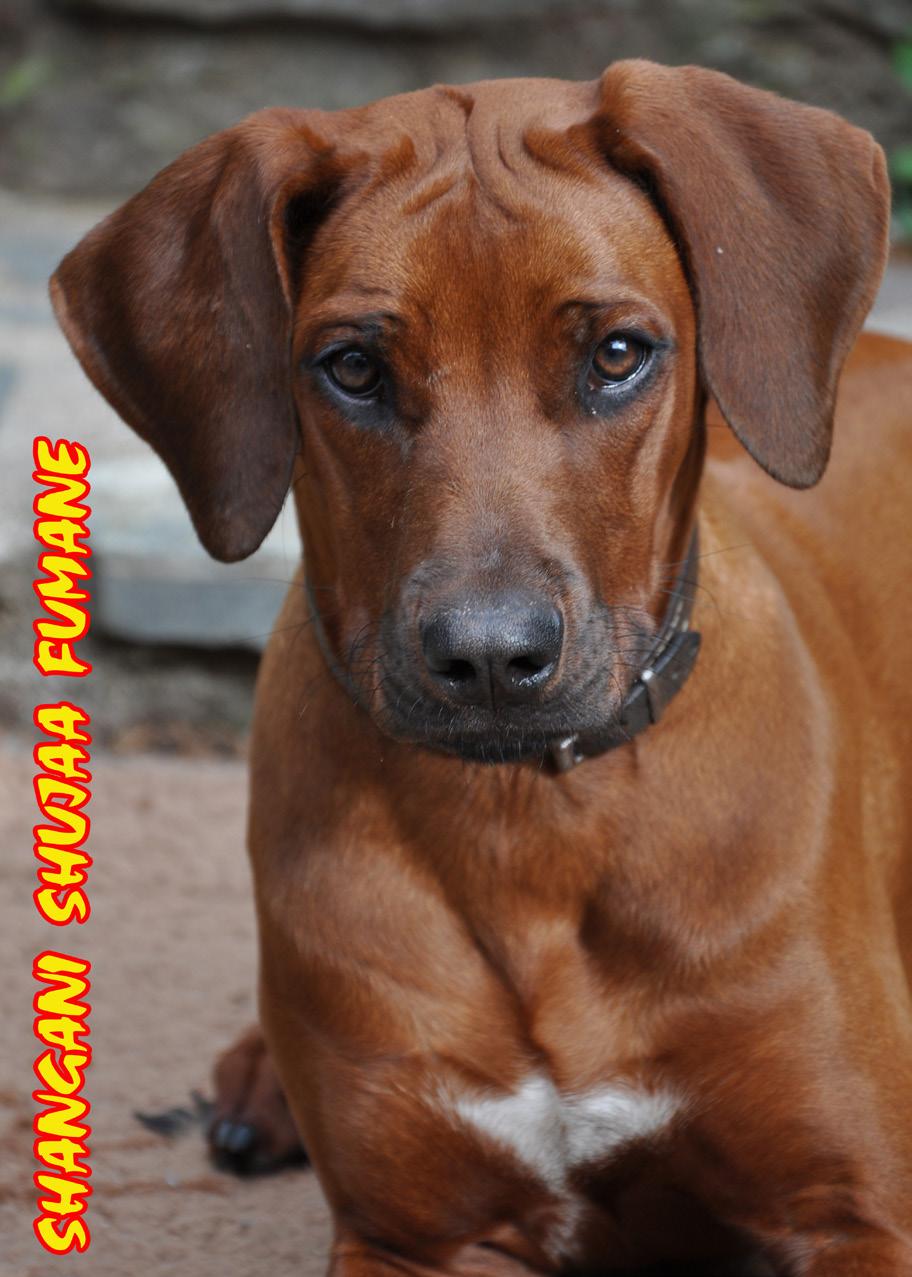



boisterious that I can imagine him fitting well into the pack of van Rooyen. As a family dog, Ben is as gentle and loving as you can hardly imagine. But if he thinks there is danger looming, he becomes dead serious.« (Ben ist und bleibt ein Ur-Ridgeback. Ich bin sicher, dass Euch bei Ben die Rueckkreuzung zum Ridgeback der Rassegruendungszeit gelungen ist. Er kennt bei der Jagd und auch beim Beschuetzen und Bewachen weder Kompromisse noch Schmerz! Er ist manchmal so wild und ungestuem, dass ich mir vorstelle, ihn in van Rooyen’s Meute zu sehen. Zur Familie ist Ben allerdings der liebste Hund, den man sich vorstellen kann. Wenn er jedoch der Meinung ist, es droht Gefahr, wird es bitter ernst.)
Not all Ridgebacks are like “Ben”, but a good Ridgeback is not a dog for everyone. Therefore it



should be a great responsibility for every Breeder, to choose the right people for their puppies. Interviewing and selection process require at least as much time as the raising of a new born litter.

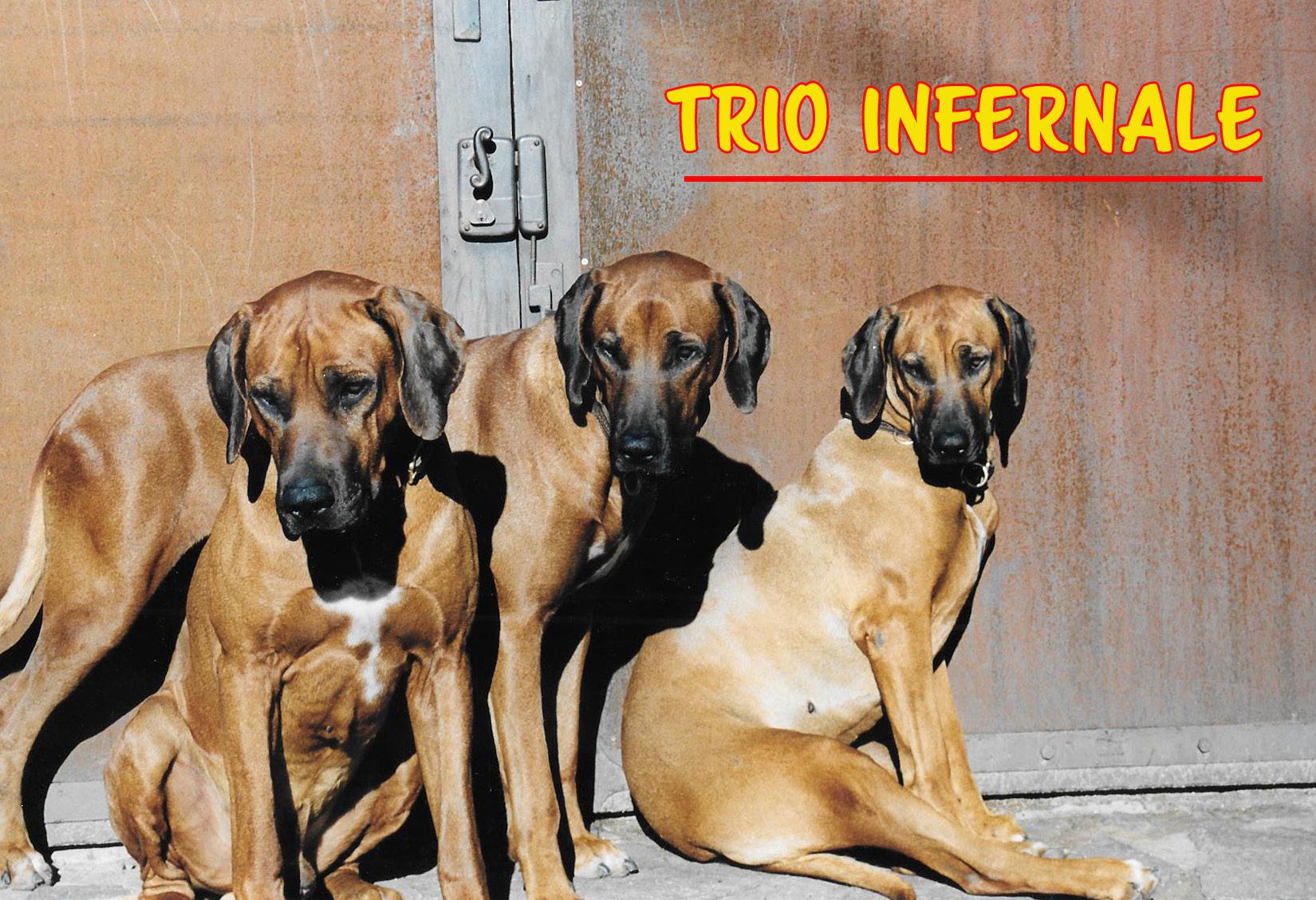
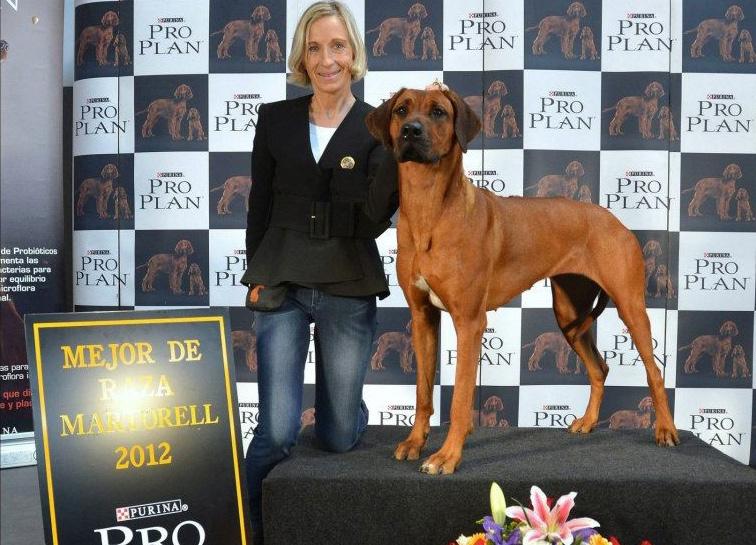
Although our dogs love their life in a pack and in the wilderness of the provence, our home area in the south of France, they are also pretty good in the Showring. Shangani Ridgebacks are being shown all over Europe and especially Christine is very competent and successful in presenting them. Our dogs have won more than one hundred international FCI-Championtitles in many different countries. The recently published book “Champions between 2000 and 2020” by the Midlands & Northern Rhodesian Ridgeback Club in the U.K., marks a great number of Shangani Ridgebacks in the pedigrees of other Championdogs in 13 different countries : 17 in the U.K.,10 in Israel, 7 in Italy and so on.
We are proud of our dogs, because their quality
is well acknowledged by many other serious Ridgeback enthusiasts. Only a few number of Board Members of Ridgeback Clubs have the opinion, that the coat colour of Shangani dogs is not correct and they try to influence judges with their opinion. The famous, late Judge Sammy Wallace bred Ridgebacks under the well-known Kennel “Mushana” in Rhodesia. Many of his Dogs were “dark wheaten”. So was the mother of our Sarula Chikadzi, Mushana Ranzi, born in 1990. Chikadzi inherited this wonderful intense colour and gave it as a special mark to the




Shanganis in the future. You can find our Chikadzi in each and every Shangani Pedigree. So, who are the so-called experts, who discriminate dark wheaten Ridgebacks? They should be more tolerant. Coat coulor is just an aesthetic appearance and only a minor item to judge a good, genuine Rhodesian Ridgeback.


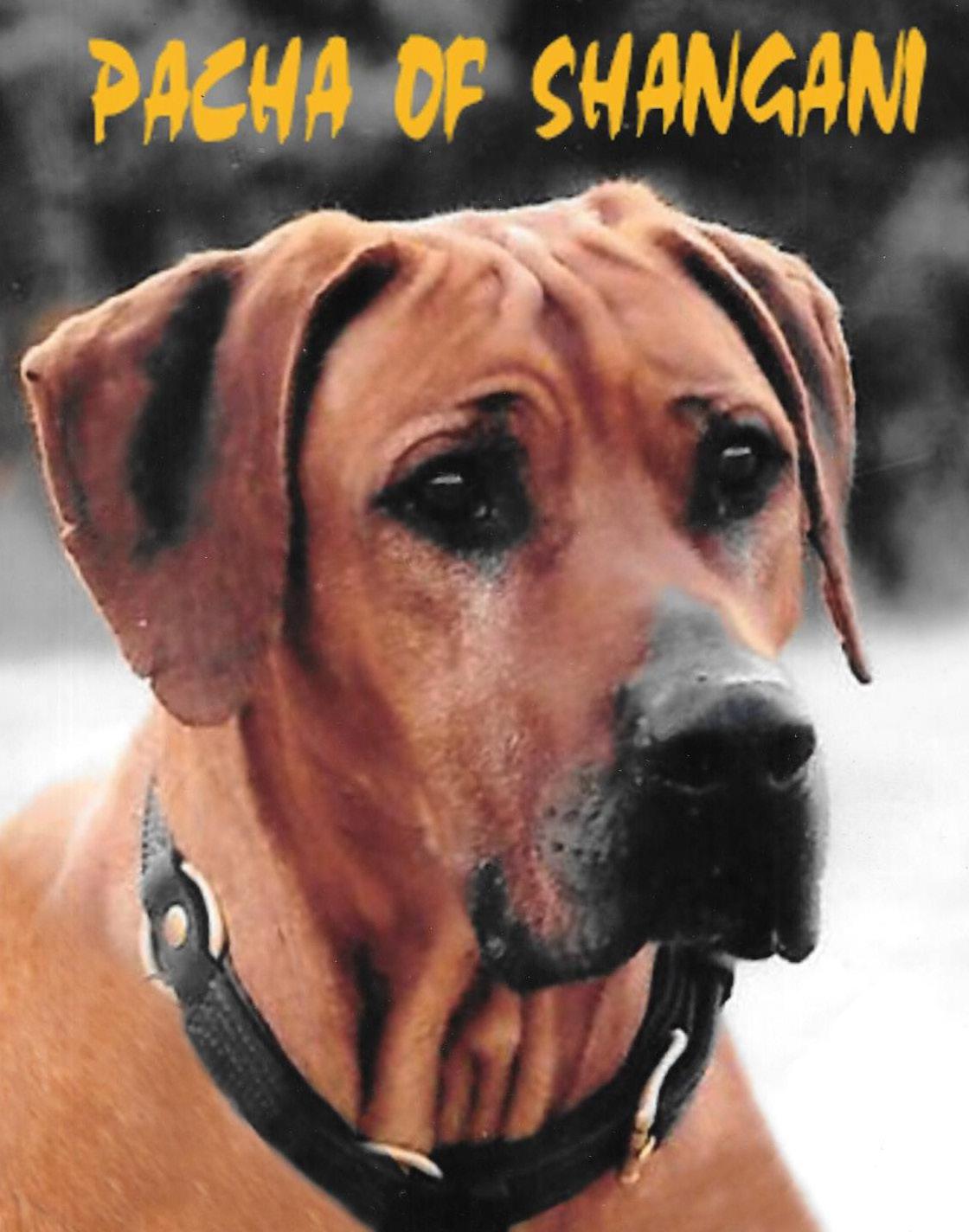
The hard part of our life with our dogs arrives, when the end of a family member, a true friend, comes near. It is always very, very sad. We had to say “au revoir” to more than 20 beloved friends of our pack over the years. Some of them decided on their own to leave, others we had to help to release the

pain. They are all burried on our Shangani land and after a very emotional ceremony they start their long journey to the Shangani Star, 178 lightyears far away from our planet. It gives us strength and courage to know, that all Shanganis will find a good home on their own star, where they can
meet all their family friends and continue to live together in a pack, the same way as they used to live in the Shangani land in the south of France.
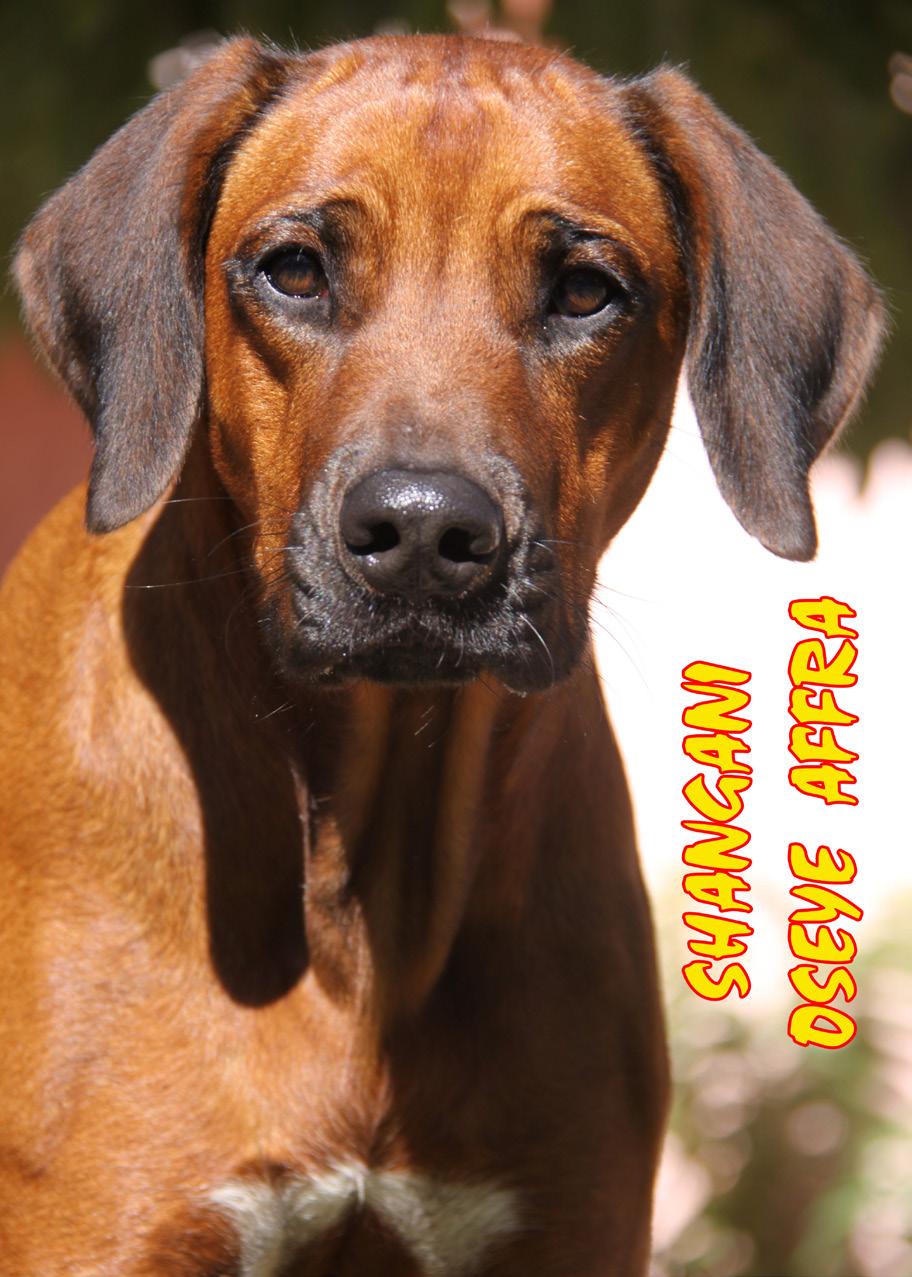
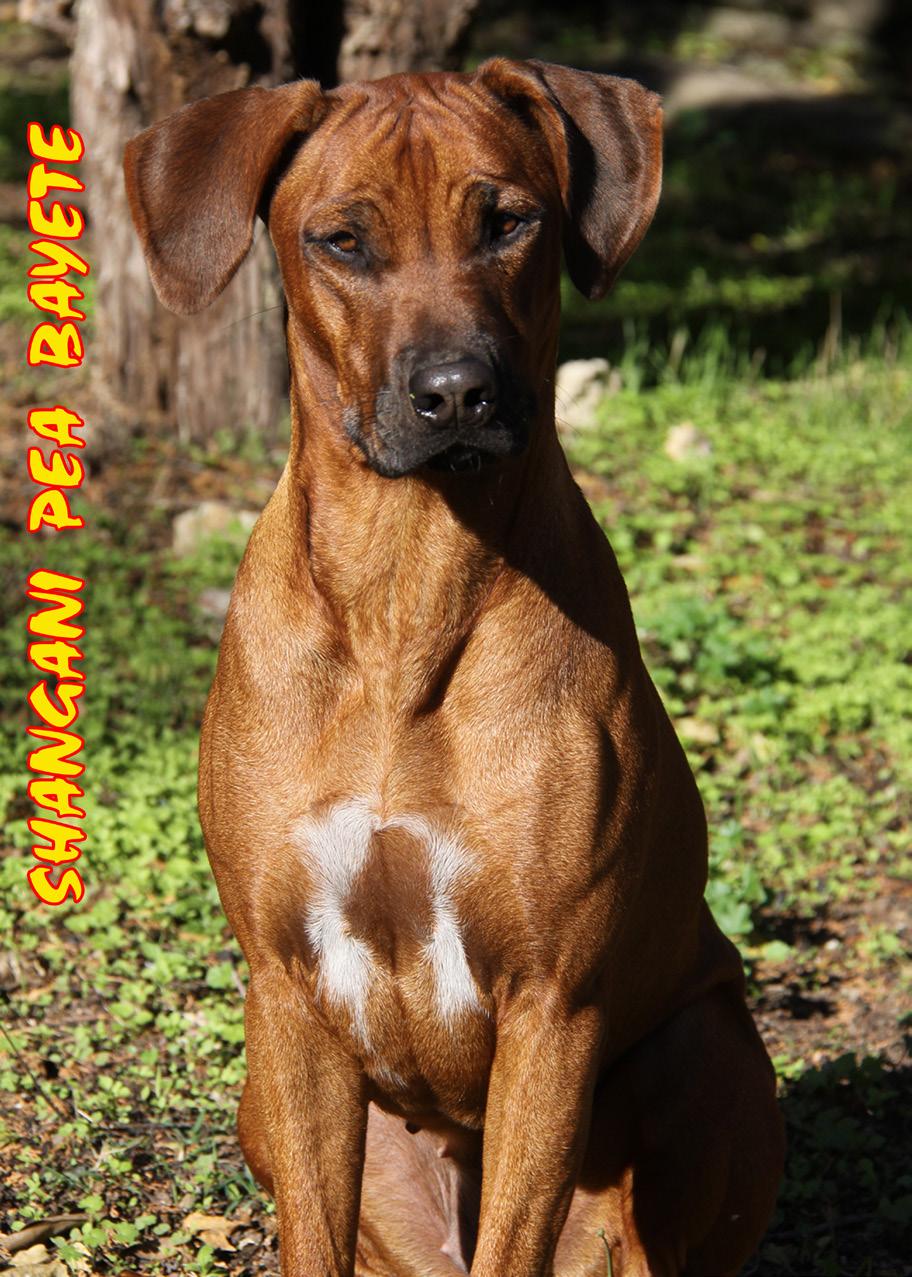
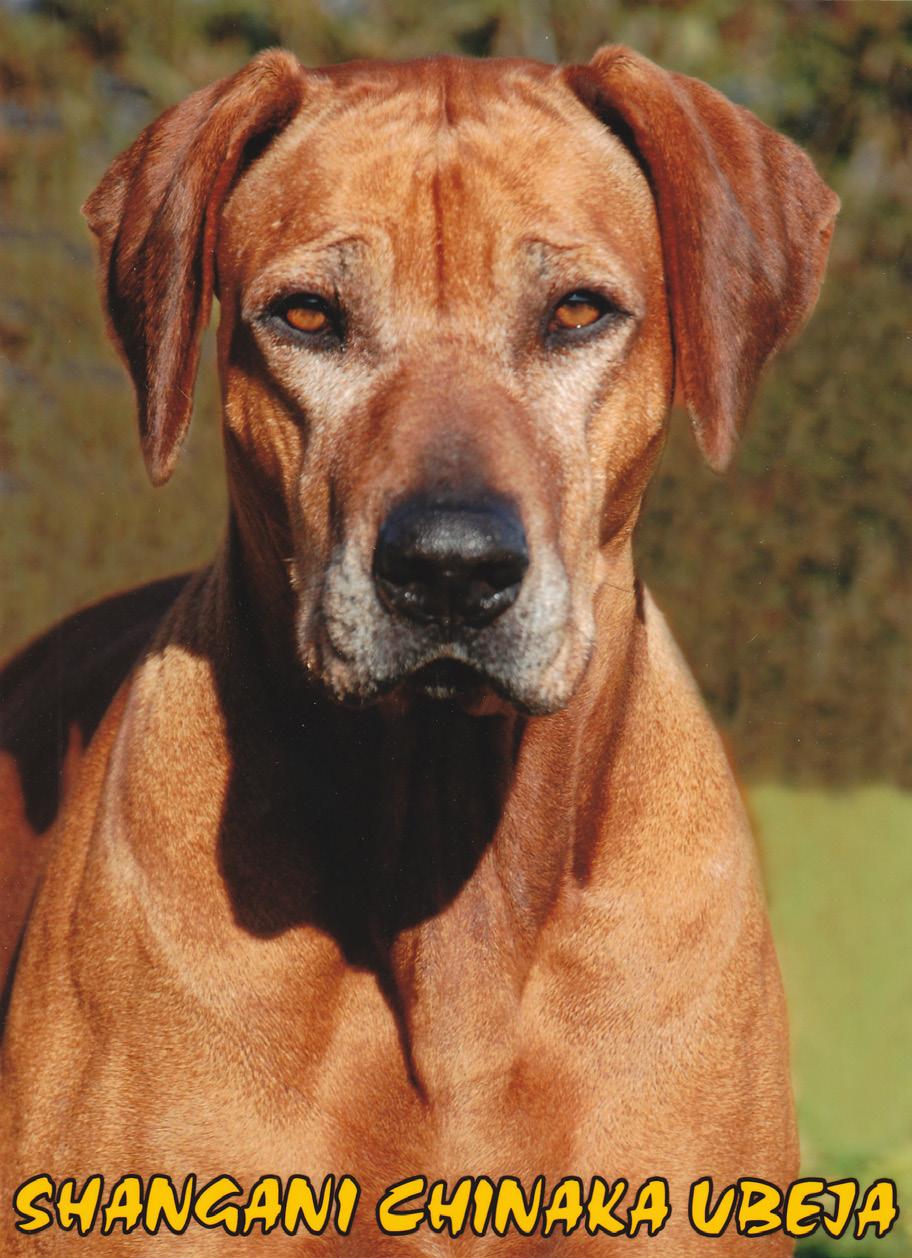
Wolfgang Blumberg.

P.S.: For those, who are interested to get more comprehensive information about our life with the Shangani Pack, i recommend two books :
• CHIKADZI - Mother of Mothers - The Story of the Shangani Ridgebacks.
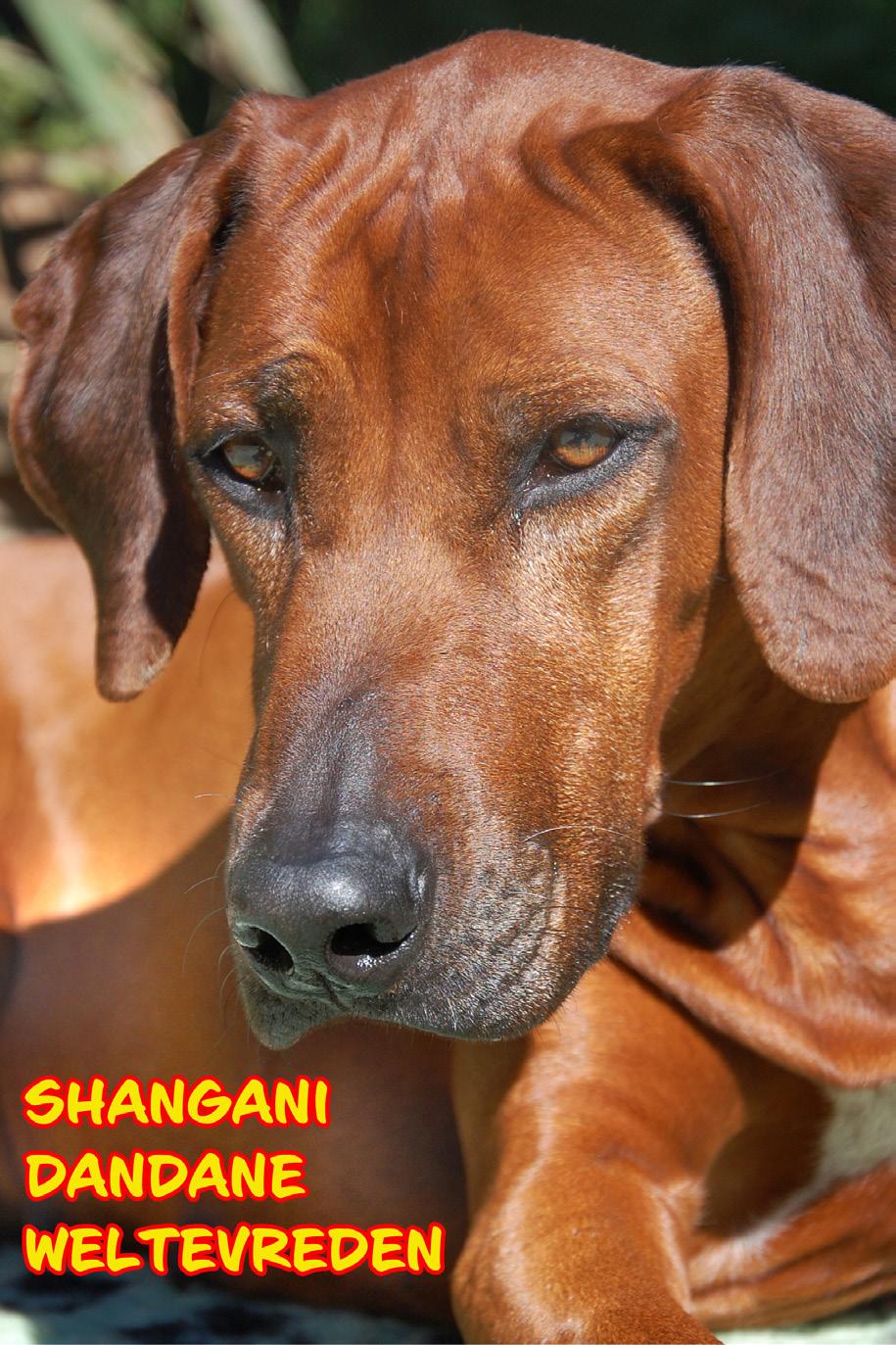
• MATOBO - Bedrock from Bulawayo - Life and Death of the Shangani Ridgebacks.


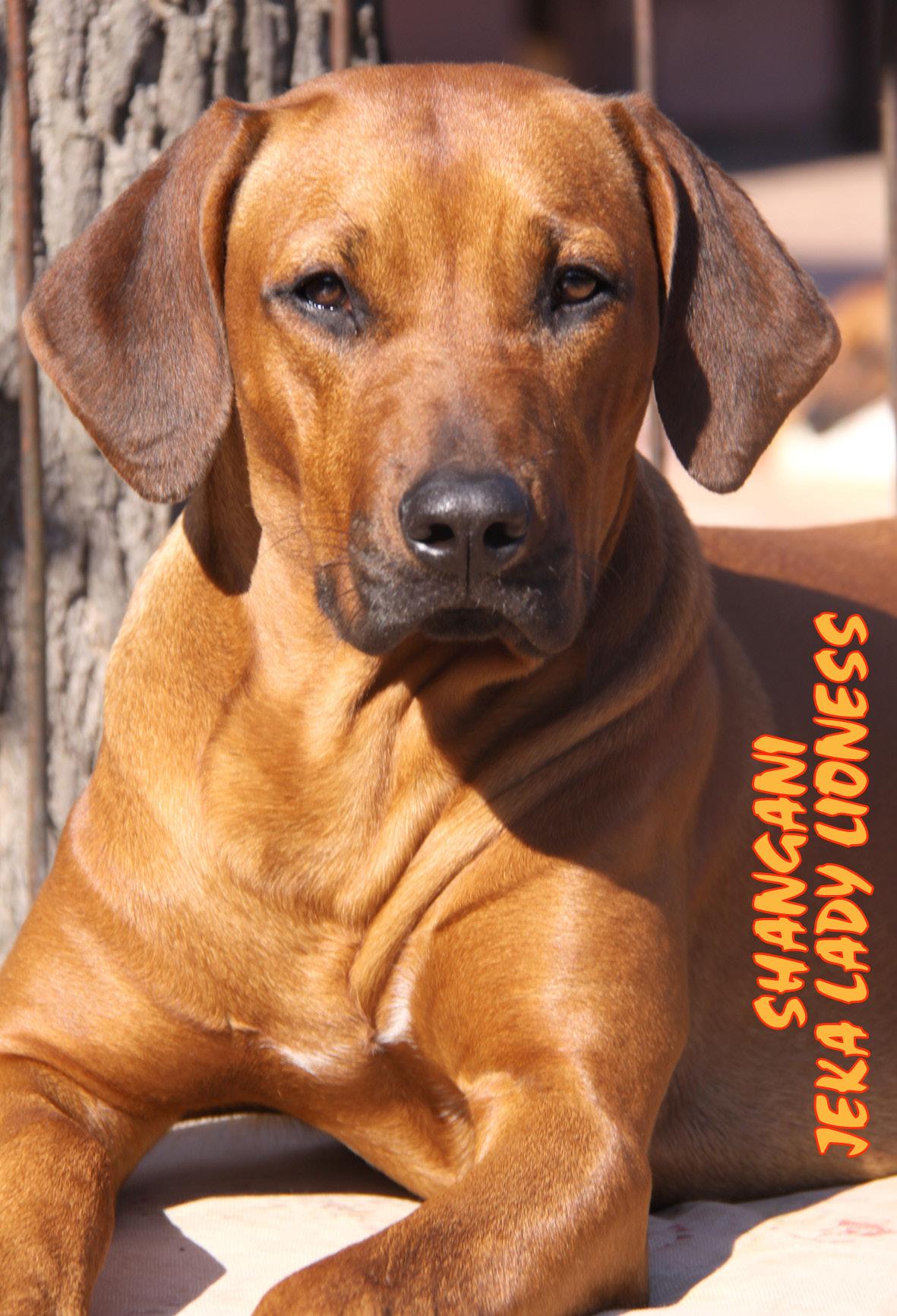










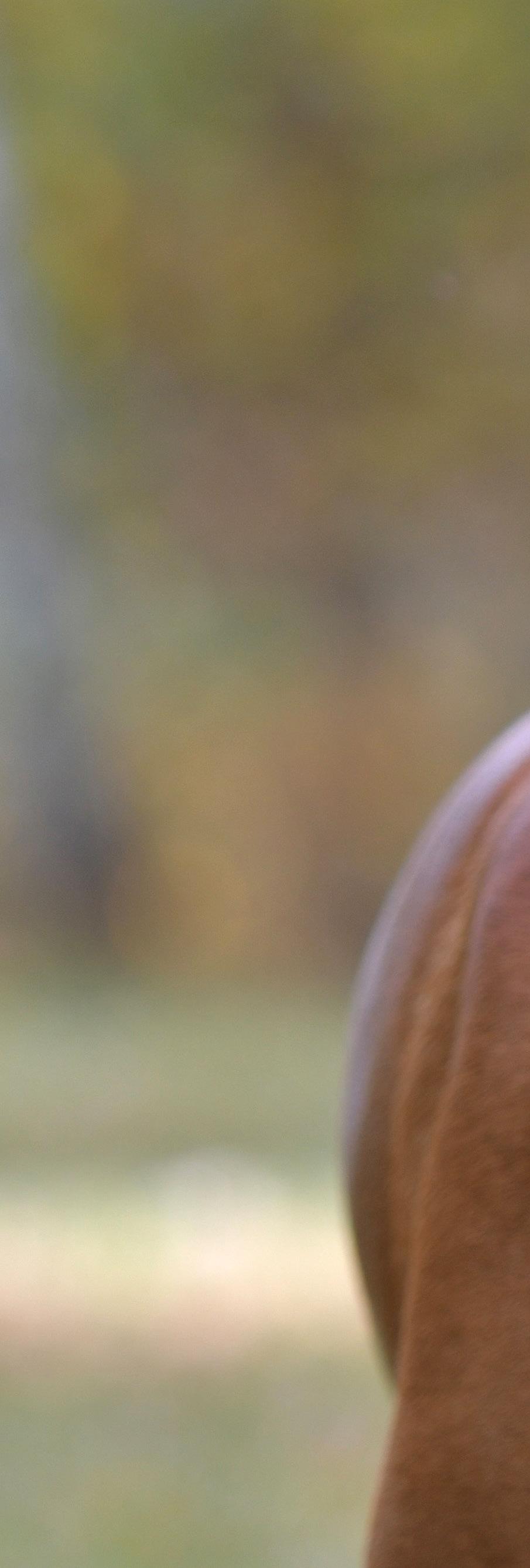
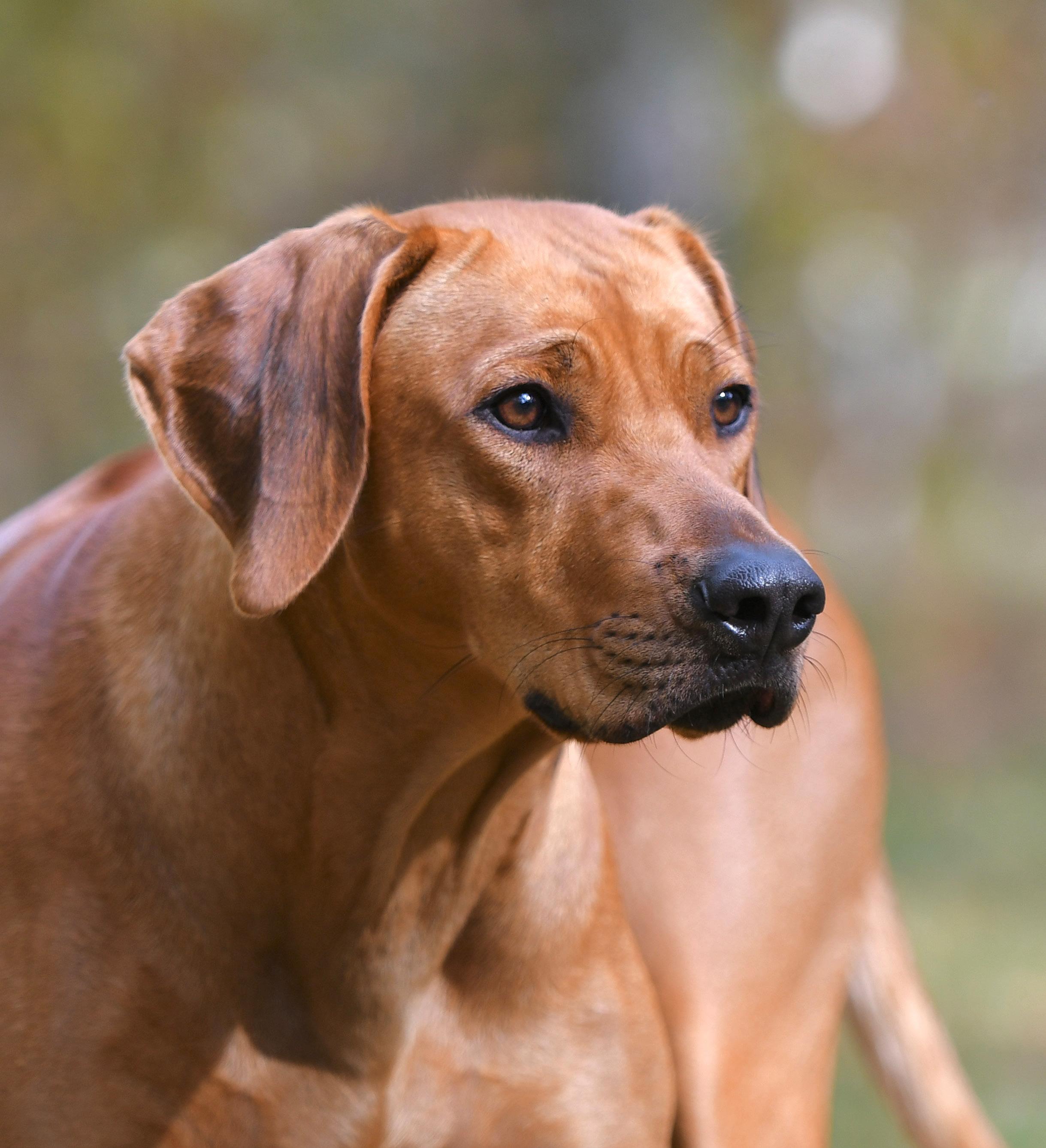
I am a true dog person. You could say dogs have always been part of my family. My parents and grandparents were dog people, and honestly, I don’t remember any time in my life that we didn’t have dogs around. During my childhood, I always had at least one dog. And even so, it wasn’t enough. Sometimes, I would borrow a dog from a friend just to get a feel for walking another breed. My mother would complain about me walking other people’s dogs. I couldn’t help it. I just adored them.
Later, I went on to complete a Degree in Biology and Ethology and haven’t looked back since. While studying for the Diploma of Animal Behaviour, I was able to travel to Yellowstone National Park to study the wolves there. This was in the early days, soon after they’d been reintroduced. It was just incredible! Watching these beautiful animals in their natural habitat really made a huge influence on my understanding of animal behavior in general and canine behavior specifically.
My love affair with the Ridgeback breed started in early 1990. A friend who runs a small boarding kennel here in Belgium called to say that she had a handsome-looking dog staying with her, and asked if I wanted to take a look. Of course, I jumped in the car and soon found myself face-tomuzzle with Multi CH Vishala Kinghunter Lance, owned by the late Swedish breeder-judge Stig Carlson, author of The Rhodesian Ridgeback Today. Lance was a beautiful, strong, well-muscled boy topped off with a super mild temperament. There’s no denying it – It was love at first sight!
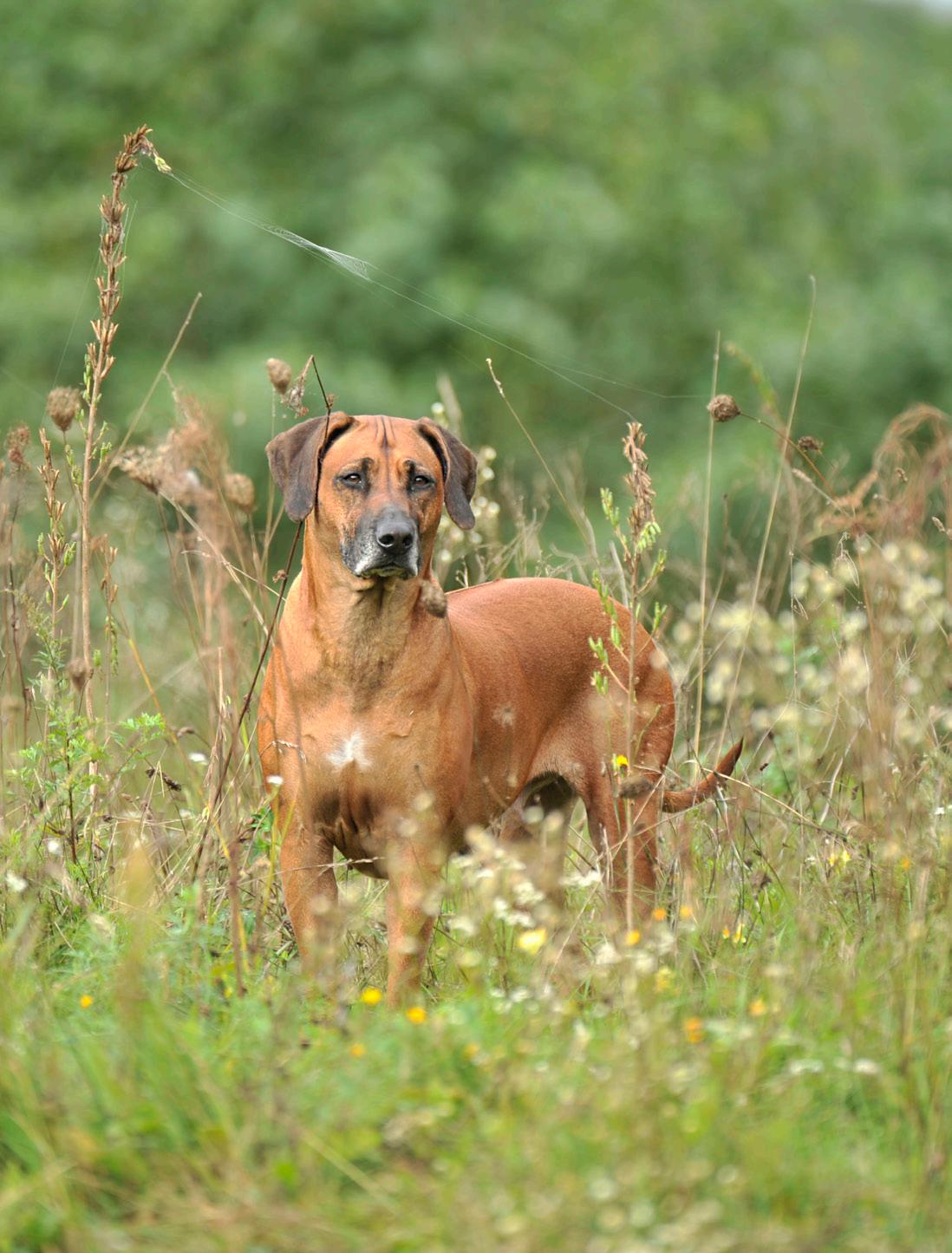
Later on Stig became my first mentor. He taught me to understand the breed and its purpose. Stig Carlson taught me much about the breed, not only how to see it, but also how to feel it. In his book ‘The Rhodesian Ridgeback Today’ he wrote: “no Standard can ever teach you to understand and judge a Ridgeback, only a feeling for, and understanding of, the idea behind the breed“, and fast forward to today, this is how I try to breed my Ridgebacks. Stig was a great ambassador for the breed and for dogs in general. We spent a lot of time discussing dog behavior issues and I learned so much from him in those early days. But this was just the beginning of my journey.
From that moment onward I knew I needed a Ridgeback in my life, but the search for my first had its ups and downs. Those were the days before the Internet, remember? It wasn’t easy to communicate with breeders in other parts of Europe, let alone the world! Stig gave me a helping hand with finding a breeder with a good reputation.
And finally, a French-bred male joined our family. Hintza (yes, his name came from the A Far Off Place film) was a strong, dominant male with an unpredictable temperament. After a short stint in the show ring, he promptly bit my son and soon after, got sterilized. This helped temper his dominance issues to some degree, but I’d be lying if I
said he was an easy dog. Having said that, I owe him a world of gratitude. He taught me everything that I wanted – and didn’t want – to know about Ridgebacks. He passed away at six years old in 2004, just one day after I returned from the Rhodesian Ridgeback World Congress in Plano, Texas.
By then, I was firmly hooked on the Ridgeback breed and was busy looking for a new puppy with showing and breeding potential. And then, one lovely spring day, Dice (Ukukhanya Midsummers Night Dream) joined our family all the way from Sacramento, California, US.
I will always remember the day I had to decide which puppy was going to make the trip to Europe. I had a choice between a beautiful, evenly coloured and nicely built bitch, and Dice – all knuckles, too much of everything, long in the body and sporting a black mask. But she had something special, and instinctively I knew she was the one (Her name was chosen accordingly –she was a bit of a gamble!).
Dice was not particularly beautiful in the classical sense. She came from old South African and American lines. Her pedigree reads like the Who’s Who in the Ridgeback world: CH Karoskloof Bayezana Naka, AM/CAN Ch. Royalton’s Blue


Max, Ch. Turoka Globe’s Casino Renose, BIS, SA, ZIM Ch., and Globe’s Roving Red Regent, to name a few.
Much of my knowledge about these dogs came from Ginny and Nelda Vaughn of Globe Rhodesian Ridgebacks. These lovely ladies also gave me 100+ pages of Globe Encyclopedia containing images and pedigrees of all the dogs in their lines. They’ve answered my countless questions and provided sound advice. I can’t emphasize enough how mentoring is the most precious gift that another breeder can give. Utterly priceless!
Dice grew up to have excellent bones, an overall balanced conformation, easy-flowing side gait and an outstanding temperament. She became the foundation bitch of Villagedogs kennel. And part of my heart belongs to her, always.
A true functional Ridgeback, Dice was frequently pushed back in the show ring for being “not elegant enough” but also praised by experienced Ridgeback judges for her exceptional conformation and movement. She was so graceful, when she moved up and down she wouldn’t wobble a centimeter on either side; her movement was completely true. I remember when Janet Wang (SA) judged her in Pontoise, 2005, said: ”she might not be the best show dog but she will make an excellent brood bitch”. How right she was!

As Dice approached four years old, I started to think about the next generation. It had already been a great adventure so far, but it was time for the next chapter of my Ridgeback saga. I wanted to breed a dog for myself.
And so I began breeding with Dice, and I was utterly delighted when she produced an outstanding progeny, including four top champions. Her daughter, SA Ch. Villagedogs Ice on Fire, was exported to South Africa and became a SA Champion. But it was her son, Nelson BIS,
It happens every once in a while, the whole community – judges and all – comes together to appreciate a dog with unique skills, character, and potential. Nelson was such a dog.

Born as first in the litter in the middle of the night, I remember putting a tiny pink collar on him – it was so dark, I couldn’t even tell what sex he was. Ah, but he was so small! And he grew to be huge. Huge in my heart as well as the Ridgeback world.
In my wildest dream, I never could never have imagined the amazing journey I was about to embark on. At only four months, Nelson entered in his first puppy class, just to gain some ring experience, having never worn a show lead before. But much to my unbridled surprise and delight, he won!
And that was it. Nelson was off!
Australian breeder-judge Toni Comerford (AUS) discovered him at 2008 French Specialty, where she awarded him his first Best in Spe-


cialty Show at the tender age of 14 months. He took his second BISS two months later in Denmark. Soon after, Nelson won his first all-breed Best in Show in France, followed in short order by a Reserve BIS at the allbreed IDS show in Tilburg, Holland. In 2011, Nelson won Best of Breed, and CCs in three U.K. consecutive shows, winning in the Hound Group in two of them. His crowning CC was winning BOB at Crufts 2011.
I think that the judges liked Nelson’s type and moderate size. He was exceptional for his versatility – a gentle, unassuming, mentally well-balanced dog. And he continued to receive abundant praise.
“Beautiful masculine dog, nice size, beautiful head, excellent proportions, in all ways a real Rhodesian, great mover …” wrote Mrs. E Tan-Hietalahti, who awarded Nelson his Best of Breed win at Crufts earlier this year. “Group #1 was the magnificent Ridgeback, Dutch/ Int/Bel CH Villagedogs Hottopic, beautifully presented and handled, this handsome dog moved around the ring with precision and drive,” commented Mrs. Shirley Rawlings, who judged the Hound Group at the Bath Championship, also this year. “Fulfilled the standard as a handsome, strong, muscular and active hound and he had the great ring presence needed to win this strong group.”

But it wasn’t long before I had another great surprise. Nelson’s son, Ch. Kiromol It’s All About Me At Kikeba JW, was only 14 months old when became the youngest Ridgeback to obtain a U.K. championship. Needless to say, his owners were delighted.

And so, Nelson had proved that he could sire champions. He still had outstanding movement and conformation, but I didn’t breed him to be a show dog. He was born to breed – to continue his excellent bloodline. It had always been a dream of mine to breed a moderate Ridgeback, suitable for its original purpose. And Nelson was a true all-rounder, equally happy
in the show ring, running next to a bike or playing with other dogs. I couldn’t wait to see the lineage he would produce!
The search for my second bitch came to me all the way to the beautiful Honolulu island in Hawaii. Being a great believer in genetic versatility, I was looking for a well-bred bitch with lesser-known pedigree in Europe. Tom and Barbara Peach from Pupukearidge were planning a litter with Ikaika (MBIS BISS CH Pupukearidge Ikaika O Sprngvly) and Kela Sr. (CH Starridge Kela O Pupukea), a very good combination of American and old Australian bloodlines, and I had a feeling this was the dog for me.
One cold November morning, Pupukearidge Kela Kai O Villagedogs arrived in Belgium, got out of the bench, slurped milk froth off my cappuccino and began her show career two weeks later.
Although superbly built with lovely temperament, Kela had a handicap on the European show scene: her coat color was light wheaten. At that time the popularity of the dark coated Ridgebacks was at an all-time high. I was worried that as soon as we put Kela in any show ring lineup, she’d stick out like a sore thumb! Thankfully, many experienced judges focused on her confirmation instead, and she was a wonderful success. By the age of four, MBISS, MCH Pupukearidge Kela Kai O Villagedogs had won seven champion titles, several BISS wins together with junior and adult European Winner titles.


Now that she’d proved her champ status, it was time for the next challenge, and the real reason for flying her all the way from sunny Hawaii. It was time to breed her. And of course, who better to breed her with than champ of champs, Nelson!
Their first litter produced MBISS MCH Villagedogs Ka Makana “Mak”.
Mak was a truly wonderful dog. Equally successful in the ring as on the lead playing with other dogs. He was an ideal companion, and an excellent show dog. At three years old, Mak notched up six champion titles, several BISS wins including BOS at Crufts 2015.
Then came one the great tragedies of my Ridgeback journey. One of the moments I don’t much like to remember. Mak was shot dead by an illegal hunter. Murdered, just three weeks after winning Crufts.
These things happen, of course. But I was heartbroken. Mak wasn’t just a show dog, he was part of my family. To lose him like that was a real blow, emotionally and psychologically. And for a while it was tough to continue.
But continue I did, and the successes kept on coming. Generation after generation.
MBISS MCH Villagedogs O’Red October, Memphis, BOS Crufts 2016 has notched up several CH titles including the ever-elusive French CH title; MCH Villagedogs Some Like It Hot, is currently on three CH titles, and CH Villagedogs Time For Me To Fly, is just starting his champion path…However, it’s important to say that only about 10% of my puppies enjoy show careers; the rest live in loving pet homes. I see my responsibility to these dogs as far greater than just producing show winners. Don’t get me wrong: I love to show my dogs. There are few greater pleasures than showing and winning with a self-bred dog. But, for me, the definition of success is getting a phone call from a previous puppy buyer asking for another puppy. What that says to me is that they’ve fallen in love with the breed. And that’s what my passion has always been about: sharing the love of the Ridgeback breed for all the world to enjoy!
My breeding philosophy is simple. First and foremost, of course, the dogs I breed must be healthy and long-lived, with temperaments that allow them
to fit into a family and do whatever task that family wishes to undertake. Philosophically, with Rhodesian Ridgebacks specifically, I believe firmly that the dogs should look like what the standard describes, and should also demonstrate their ability to work as recorded in their history.
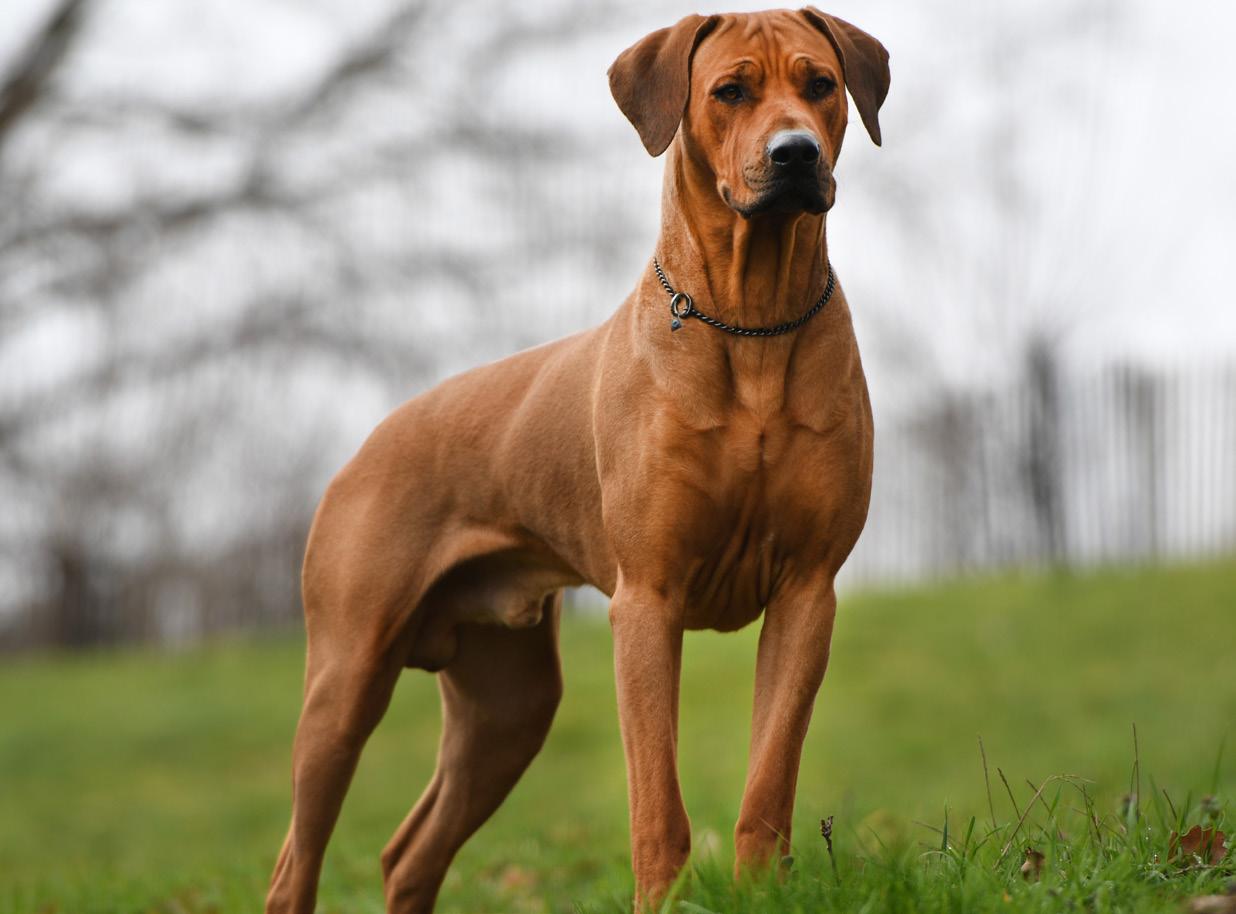

It’s about what a Ridgeback is, not what people think it is.
A dog that enters the Villagedogs breeding program must conform as closely as possible to the standard in terms of structure and movement. Realizing that no dog is perfect, you have to remember that there’s always a balance.
I study the pedigree first, and in the past I’ve disregarded even
some outstanding dogs when their genes weren’t what I wanted in my program, due to health, or temperament issues. Then, I look at the physical attributes of the individual stud dogs. As Stig, my first mentor, said “the only extreme feature in a Ridgeback is an absolute lack of extremes”.
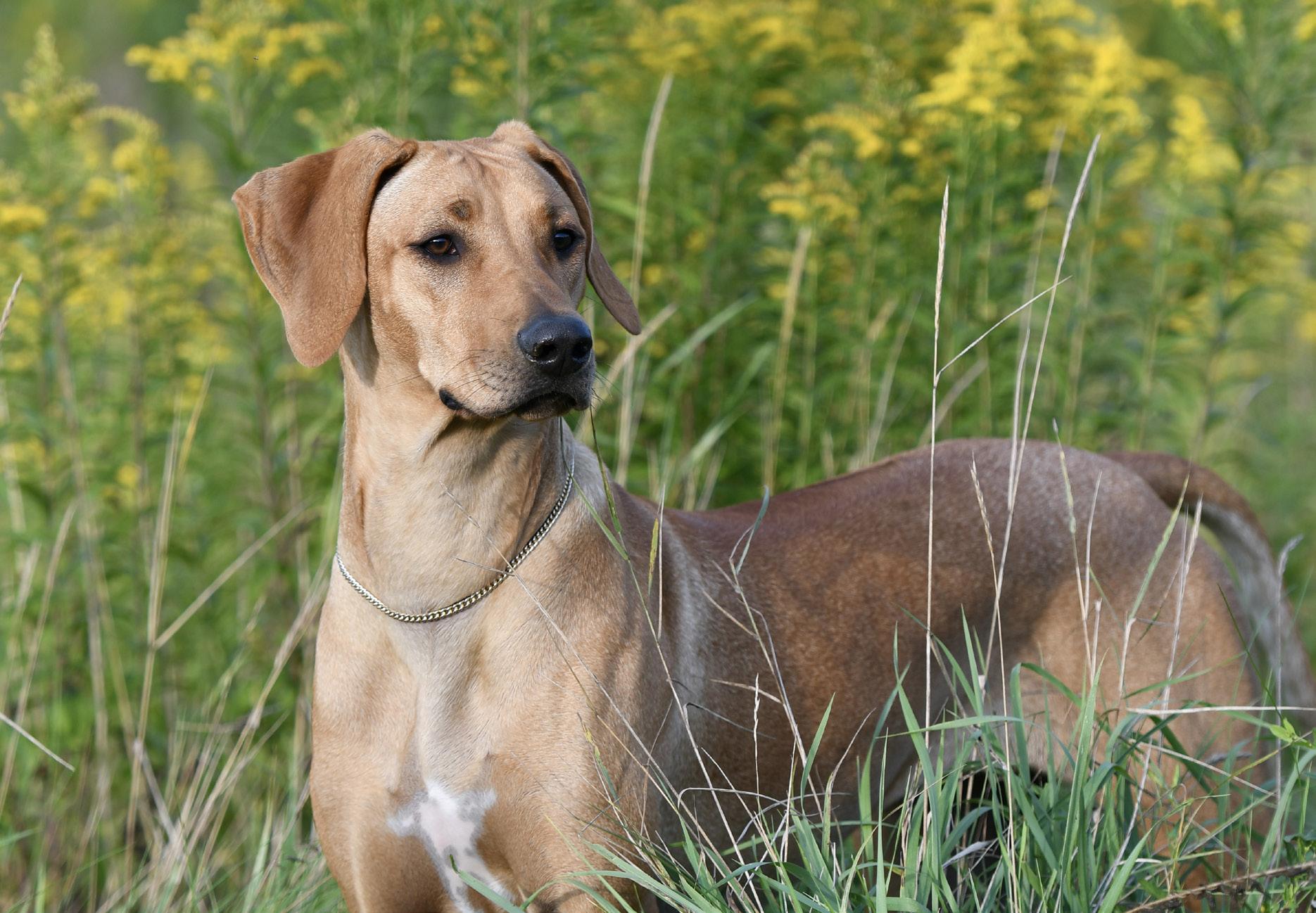
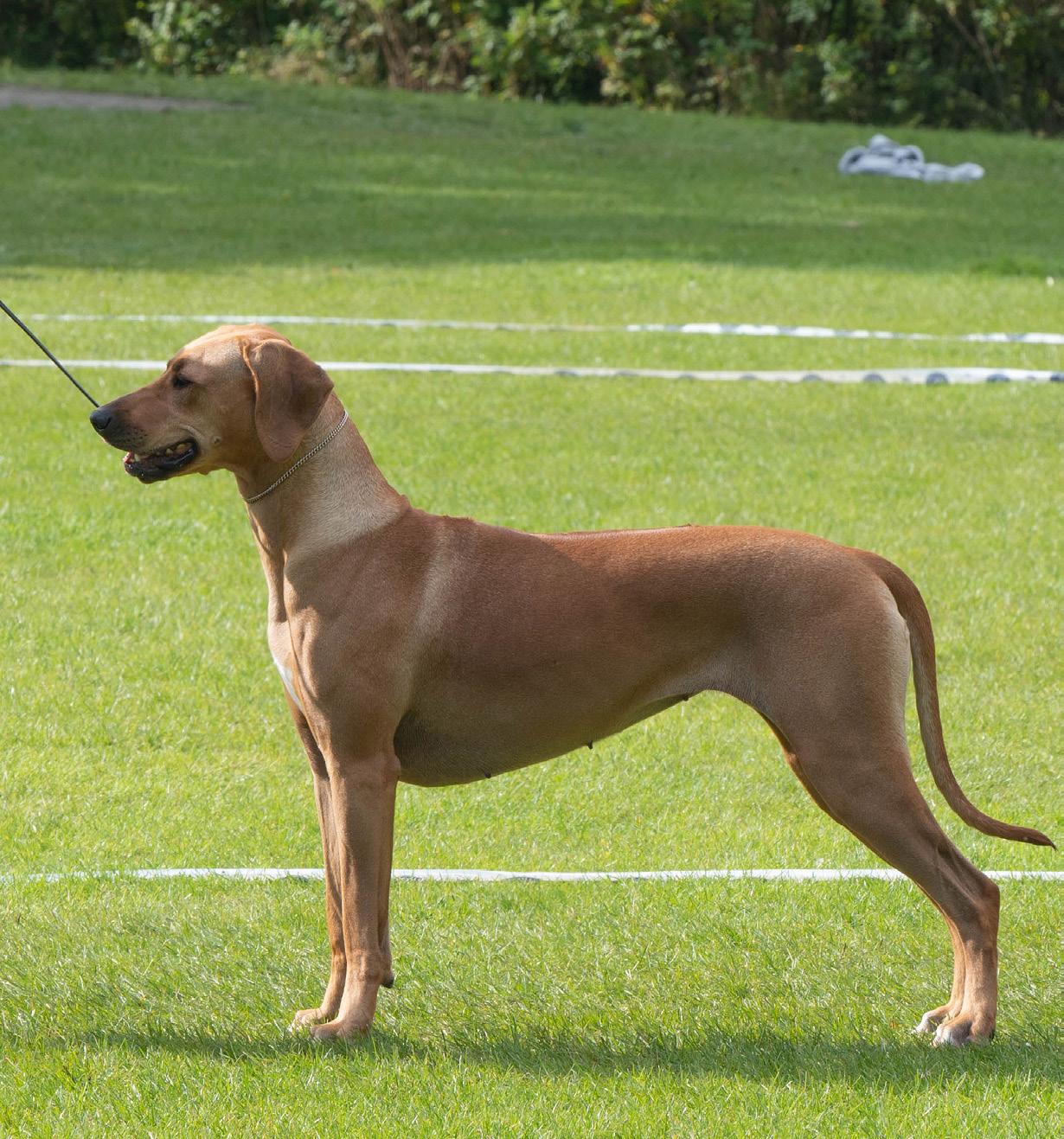
Occasionally, I will keep a puppy while fully aware that, down the road, it won’t become a flashy show dog, but it has a quality that our breed is starting to lose. Such was my little bitch Villagedogs On Dark Side Of The Moon aka Charlie. She was compact, well-built and smart.
There was a lot to like about her. She still managed to notch up three champion titles, but they were awarded by mostly breed specialists who complimented her qualities. At Leeds (UK) Championship show, Judge Rosemary Green (AUS) said “She may not be my type, but she is correct, and for that reason, I cannot overlook her”.
Charlie is the mother of Babu (Villagedogs Time For Me To Fly), the cover dog. And actually, she produced some super pups, companions and show alike. It just goes to show, outstanding isn’t always best. Sometimes you need a good, solid dog to pass the lineage along.
There are, to my mind, two significant mistakes made in breeding dogs.
The first is breeding to the “dog of the day.” Breeders will breed to a top-winning dog with seemingly no regard to whether his pedigree, temperament and conformation actually complement their bitch’s shortcomings. This is obviously shortsighted and will land the breeders with problem dogs in no time at all.
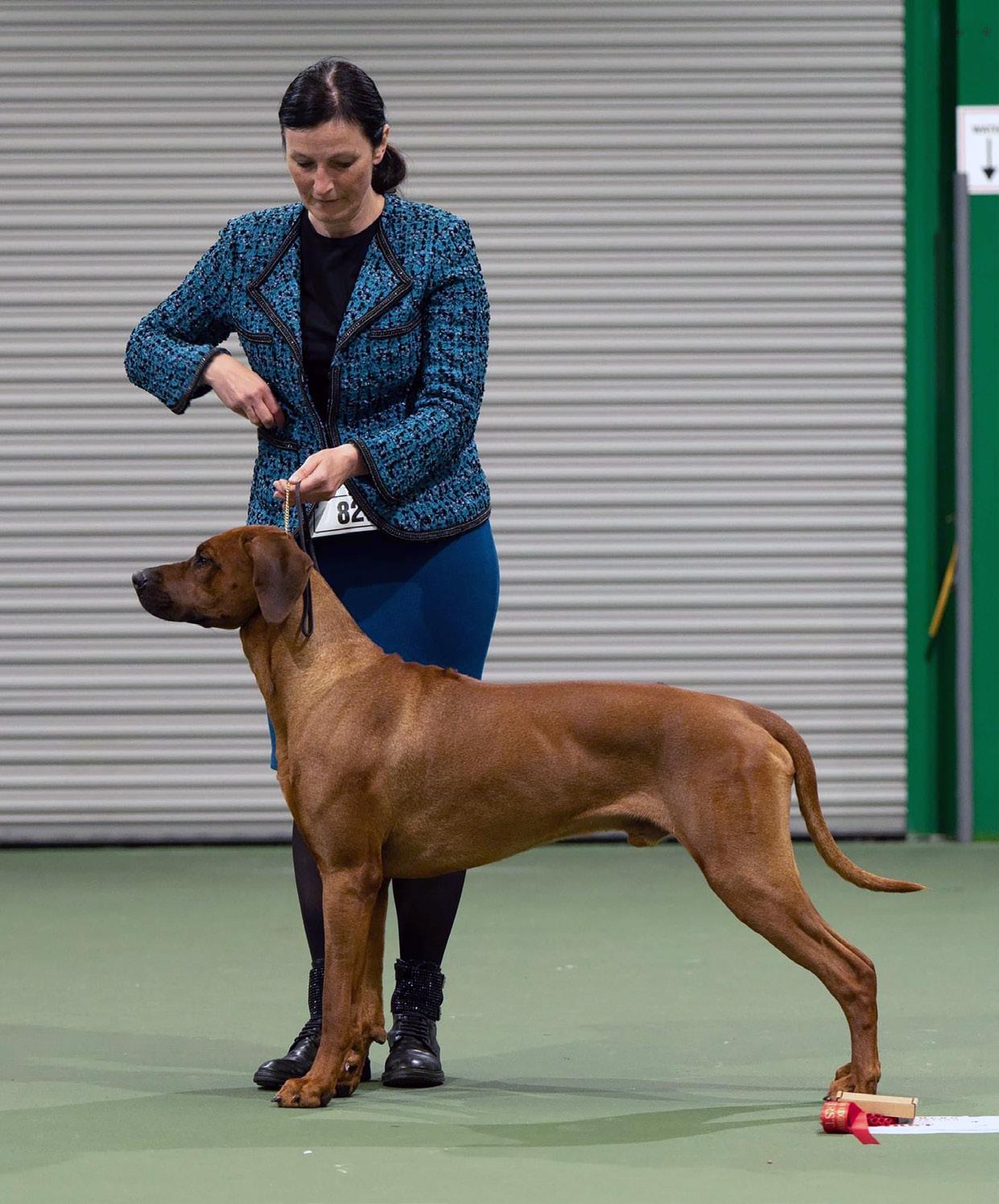
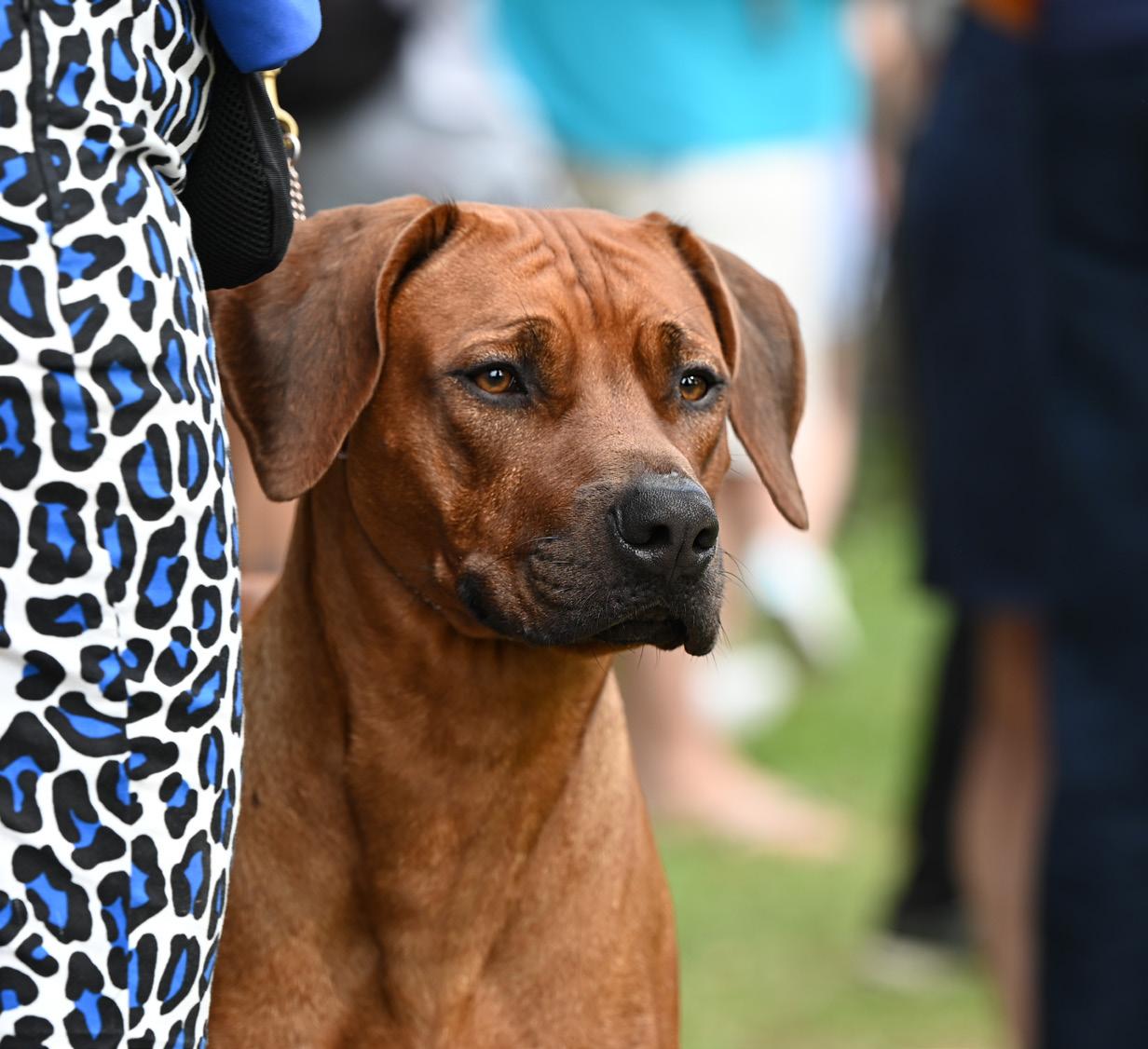
The other mistake is being so kennel blind that they refuse to breed any dog that is not related to what they already have. This for me is just simple snobbery and again, shortsighted. Your job as a breeder isn’t to be a pedant, it’s to make the breed better.
That’s something to remember: no matter how good my dogs are, there is always a way to make them better. I never breed for the show ring and always breed for the future. While a dog’s show career is short, solid bloodline will last a lifetime. And that’s is my goal and purpose. That’s what my Ridgeback story is all about!







Whoever says Rhodesian Ridgeback in Belgium or the Netherlands says RR Training Centre. In the middle of the green countryside lies Geertje Verschoren’s training centre. She already has more than 32 years of experience with the breed. She grew up with it in Africa, and was always fascinated by this dog breed. Together with her team, she guides dog owners and their Rhodesian Ridgebacks in the RR Training Centre and on location.
Here, owners and their dogs learn to understand each other. This is necessary to live harmoniously together. As these dogs are primal dogs with a DNA that is closely related to nature, it is necessary to raise the dog in a consistent manner to become a loyal friend for life.
At the RR training centre, people can get all the information they need about the Rhodesian Ridgeback. Their aim is to help people from the choice of the breed, the guidance in choosing a puppy to its education. Rehoming is thereby reduced to a minimum.


Geertje Verschoren specialises in character evaluation of puppies throughout the Benelux. This is done at 5 weeks and 1 day and according to a fixed routine. During this test it is determined whether the pup hunts with its nose or eyes, is introverted / extroverted, social, enterprising,... A distinction is made between 6 characters. Some characters reset themselves quickly, making them more responsive to external stimuli.
Can the puppy be with older people? With children? With a structured family or a chaotic bachelor?
Based on the information obtained, the breeder can decide which puppy will find its home in which family.
RR Training Centre is not a classical dog school. It aims for everyone to be able to go anywhere with their dog, and for the dog not to be an obstacle in their owner’s life. The Training Centre does not focus on classical exercises such as sit, lie down or paw. On the contrary...they provide weekly challenges that focus on positive reinforcement towards the dog.
Dog owners receive excellent guidance with their puppy through the online platform Puppystart. It is an online course consisting of more than 25 videos. Topics such as coming home with the puppy, learning the leash, getting to know other pets, toilet training, kennel training are clearly explained so that the dog enjoys a consistent upbringing. It is an advantage that people can get started with Puppystart before the puppy arrives home. The videos can be watched in unlimited and random order so that owners always have the right information. Currently,the RR Training Centre is working on the translation of Puppystart into English and French.
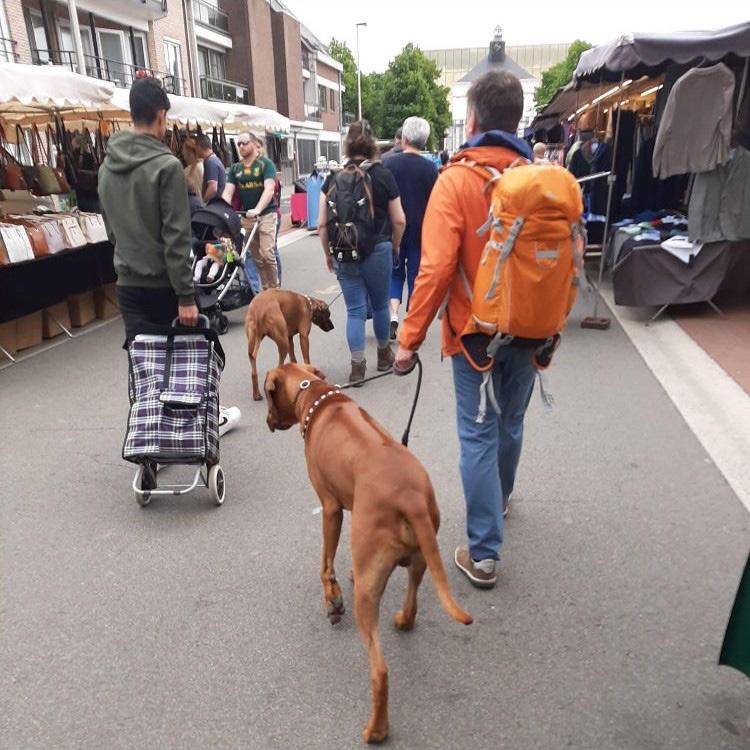
From 11 weeks, the Training Centre welcomes owners and their puppies for a first private lesson.

By then, a bond has already been built between the two and the first foundations for a beautiful friendship can be laid.
From 15 weeks, owners and puppies can attend the puppy class. Here they mainly work on trust, obedience and respect from the puppy for its owner. The centre uses positive confirmation to make the pup want to work for its owner. Conditioning is used and makes the puppy understand what is expected of him.
From 20 weeks of age, the dogs go to the follow-up class for young dogs. Here can be noticed how important the structure - put on the puppies earlier - is. After all, from about 5 months, the dog’s behaviour is determined by its hormones. The dog starts testing out how far he can go. By acting consistently, combined with the previously set structure, owners keep their dog in better control.
The RR Training Centre also has a plus class and a demo team.
After the follow-up class for young dogs, owner and dog can take part in an exam. If they pass, they can participate in challenges such as a visit to the market or a museum, a petting zoo, or they go for a drink on a terrace with the whole team.
The demo team consists of a team that has completed all these classes and focuses on performing synchronised exercises to music and without a leash.
The RR Training Centre wants all its owners to be able to explore the world with their four-legged friends and therefore organises workshops on a regular basis to develop the dogs’ natural instincts such as tracking, detection, braingames, conditioning,...It strengthens the bond between owner and dog and the dog gets a feeling of satisfaction. The annual New Year walk with more than 70 Rhodesian Ridgebacks or the visit to the local zoo are always a well-attended event.
Whatever class you take at the RR Training Centre, as an owner you will learn to recognise stress signals in your dog and how to counter them.
People who have problems raising their Rhodesian Ridgeback have also come to the right place at the RR Training Centre. The instructors are on site six days a week to address problems.
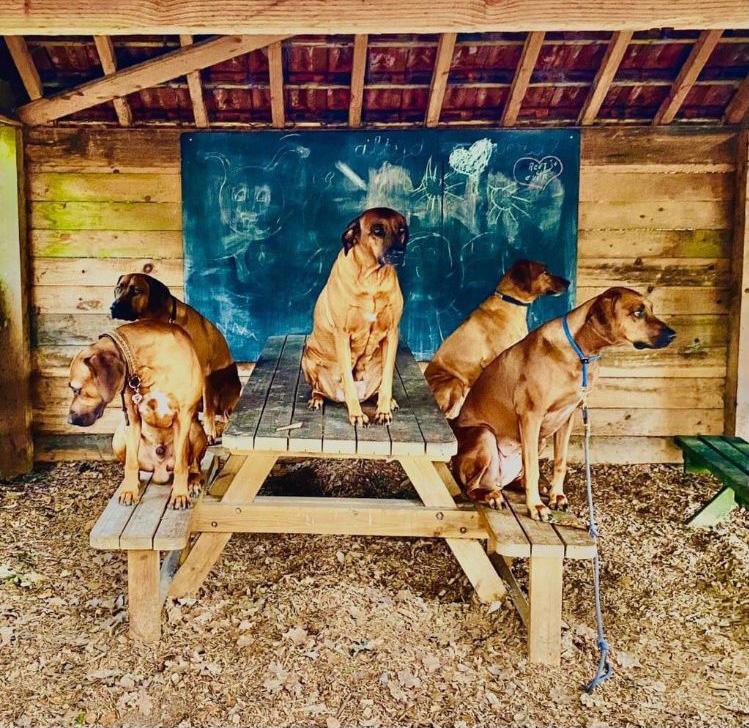
As they consider consistent behaviour from the owners as one of the most important pillars of education, all exercis-
es are filmed and forwarded to the private lesson participant via Whatsapp. This way, the exercises can be reviewed later and the whole family can achieve the desired result using the same method.
The lessons take place both at the RR Training Centre itself and on location. Sometimes a problem only occurs in a certain home situation or at a certain place.
Via Messenger, Whatsapp and online meetings, the team assists their clients virtually. This way, advice can be given quickly. The Training Centre has a standard series of videos available to clarify exercises or theory. Participants of group, private lessons or virtual meetings receive the necessary information this way.
Once a week, RR owners are welcome to follow the free webinar where questions can be asked about raising the Rhodesian Ridgeback. Here, owners learn from each other and a community of united RR enthusiasts is formed.
Those who wish can have their pup raised by Geertje and her team. During the in-house course for puppies, the puppy comes from the litter to the centre in training after a detailed intake interview. What are the owner’s wishes? What commands should be used? What skills should the dog definitely master? Hunting? Tracking? Being a nice family dog?
With the information obtained, the team will work for several weeks. The puppy learns daily through continuous training combined with play.
After 5 days, the team tells the owners about their experiences in a virtual conversation. They make adjustments where necessary and then continue training. After 10 days and at the end of the training, the owners come to train their dog. Even after this intense training, they are not alone. Via Whatsapp, private lessons and virtual conversations, the centre follows them for some time.
Once the dog is at home, some guidance is no luxury, Geertje and her team gladly take this task to heart to ensure an optimal bond and perfect education.
Despite all the aforementioned initiatives, things sometimes go thoroughly wrong. A biting incident, wrong upbringing, an overexcited dog,...
Here too, the RR Training Centre can offer a solution. The centre has an in-house programme for dogs that need to be re-educated. The dog stays in the Training Centre for a few weeks and after an intake interview, the entire team supervises the re-education. Afterwards, the owners get several hours of private lessons to practice the (re)taught skills with their dog.
The centre recently started a boot camp for owners. This can be followed after the in-house course for puppies or dogs with a behavioural problem. Near the RR Training Centre, various accommodations can be rented for a stay of several days. Owners are involved in the daily structure of the training centre and participate in all activities and training sessions that are organised. This intense training is a huge added value for mastering and communicating in dog language.
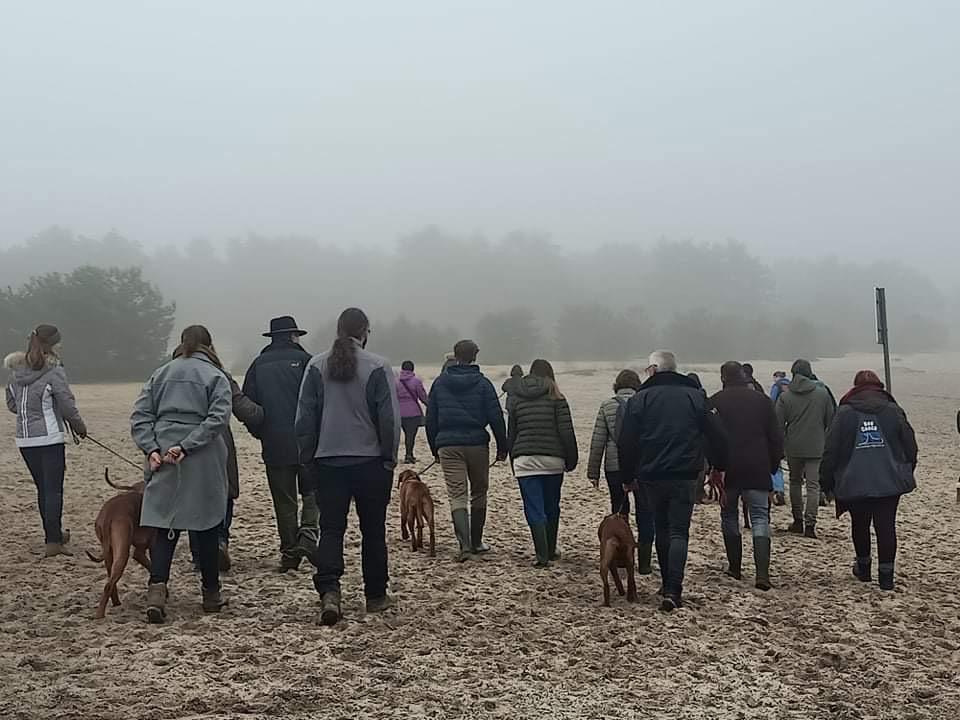
The RR-Training Centre provides holiday care for Rhodesian RIdgebacks. On a small-scale basis and with an accent on care adapted to their character, they provide the dogs with the time of their lives. Walking, playing with the other dogs or intense training... it’s all possible. While the owners enjoy their holiday undisturbed, the team takes care of the dogs and educates them.
Would you like more information about the RR Training Centre? You will find all the information you need via the links below.
https://rhodesian-ridgebacks.be/ https://youtu.be/b7xsewDyEYY


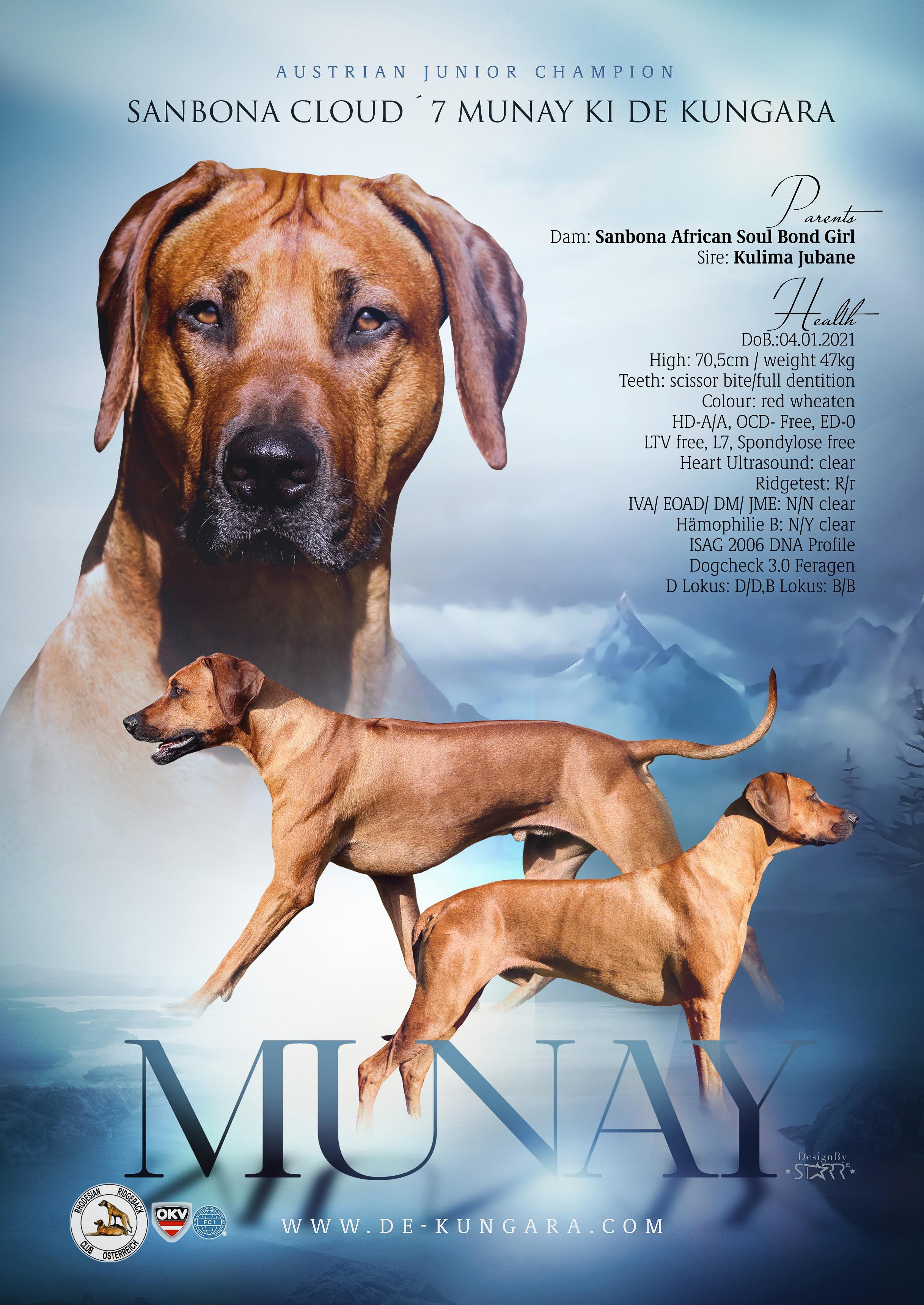 WRITTEN BY VIRAG ORCZI
WRITTEN BY VIRAG ORCZI
What does it take to embark on a mission that others find incredible?
How can you attempt something that everyone around you, your more experienced colleagues, say is dangerous and won’t end well?
Humility, self-discipline, patience, perseverance and, not to forget, a very good trainer and a lot of learning.
What is it all about? Agility, guardian - protector with a Rhodesian Ridgeback
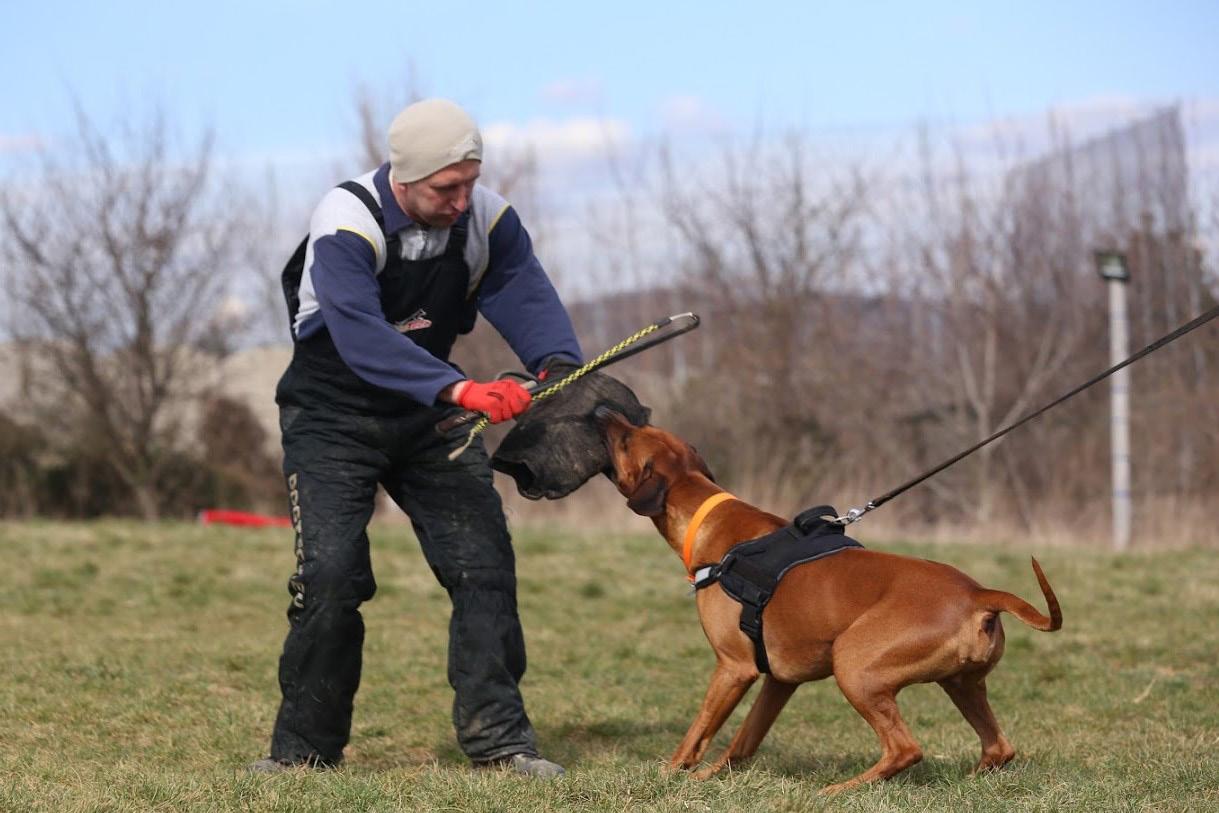
I didn’t have a dog before, I always wanted one but unfortunately, I wasn’t allowed to have one as a child, and later I only had the opportunity to have my own dog when I was able to move
into my own house with a garden. I knew I wanted to take possession of my new kingdom with a Ridgeback puppy, and so it happened. We had only spent our first night together and I knew from the first moment that I wanted to give everything to this wonderful male.
We went all the way through the usual puppy classes and training schools and passed the exam for the advanced course, without having a clue what the exam task was because we hadn’t been able to attend classes for the last three weeks due to the trip. I knew I had a smart, disciplined dog, but that we’d end up with a 97% result was something I didn’t expect. I’ll be honest, I was shocked - but this couldn’t be a coincidence!
After seeing how much my then young puppy enjoyed “working” with me, I wanted to try sev-
eral dog sports. We also went dog dancing, greyhound racing, man training, obedience, agility and guard dog. I watched my own and my dog’s reactions to see where we were in complete harmony, what could be ours, and after 2-3 sessions we were clear, two sports and the obedience test. Agility, guardian and obedience. Yes yes, these are all not typical Ridgeback sports, but why should they be!?! My aim wasn’t for us to achieve at Crufts, but to have fun, to see what we can achieve, and to enjoy our time together.
I won’t go into detail about why we didn’t continue the sports I mentioned but didn’t choose, but somehow I felt there was no harmony, the dog didn’t enjoy it either, he just hung around and I didn’t find my place either. So, we went to all three classes in parallel. It’s possible to prepare for the obedience exam in half a year and pass the exam, but it turned out to be quite a “static” sport and as it was winter, we didn’t continue.
I’m sure many of you are already thinking about how to guard with a Ridgeback because the dog will be so dangerous, aggressive, impossible to handle, etc etc. But before I go into detail about why we started and where we have come, I’d like to tell you a little bit about agility. If your dog is even a little playful, jumpy, loves to run, then by all means try it. You can start from a young age, but there are certain elements that should not be used before the age of 1.5 years, because until the dog’s bones and joints are fully developed, it is strictly FORBIDDEN! But of course a trainer knows this, so depending on the age of the dog, the training will start and build up. When we joined, my dog was already one and a half years old, so we could try almost everything. We started with an obstacle course, we worked in groups where we could play with lots of stalls during the breaks in addition to the many obstacles. The dogs learned very quickly that you can play individually during the


work, but during the breaks you can also chase and play group games, which were both very useful. As well as quickly learning the obstacles on the tracks, we were also able to practise retrieving and socialisation.
Our group included Rottweilers, Vizsla, various terriers, mixedbreed dogs and of course mixed-sex and neutered animals. But there was never a problem, they joined together to form a group, a community, which determined my dog’s relationship with other dogs. This sport is a long learning process, we had a class where we just practised the slalom for 50 minutes, you know, the 12 obstacles are lined up in a row, you cannot miss a single element. The build-up starts at 1 ball and when you get to 12, this part is not that exciting, but it is a very good skill developer. Whether we enjoyed this part I cannot answer, but to ride the course without limits it was very necessary and the consistency was excellent to practise.
We know our dogs do not like repeating an exercise many times, but we did it. I think the secret was that the dog enjoyed the company, got more and more yummy snacks. He loved to run and listen to my commands - which obstacles to pass and which ones to jump. I always tried to bring variety into our exercises, we put together new combinations, because the Ridgeback tends to get bored with the usual, but in this sport, you have to forget about that too. Every class, every course is different. There are parts of the preparation that are a bit boring, but if you feel like you have reached the limit and then show is a completely different, purely fun thing, then you can easily overcome those parts as well.
I do not think that our dogs are the fastest on the course, but they can be the most skilful and they can be the ones who complete the course without mistakes because they are very intelligent and attentive. And of course, I forgot that here too it is
not only the dog that learns, because every course is different, so it is very important to show the dog the right signals/body language. Sound is not enough here, because every movement has a meaning, a wave of the hand or even a step. If you as the handler give clear signals, your dog can follow them and complete the course. I recommend this sport to all healthy dogs/owners who want to be active together. It’s a very good game, but very active.


And, as promised, I will also tell you a little about the guardian-protection work.
As I mentioned, we started this when he was about one and a half years old. I have a male Ridgeback, and I am obsessed with everything you can say about them. He was a very stubborn, headstrong young teenager with a strong will of his own, I loved him, we both formed the pack so at that point the harmony between us was perfect. The previous courses helped a lot and also the special training course he did when he was 1 year old, so I can say that the training was 99% successful (in my opinion the 1% will always be there) because we must not forget that they are animals, instinctive beings. And it was in this state that we started to deal with the guardian.
We started dealing with him in the same place where we learned obedience, so we knew the organisers and trainers, because as external observers we had often seen how the training of guardians and protectors went. What I liked very much was that they did not
practise the same thing with all dogs, but with each dog according to its level. Many of you are probably already thinking that this is not for a Ridgeback and how dangerous and unpredictable the dog will be. Well, I mean, my dog was neither dangerous, nor aggressive, nor unpredictable.

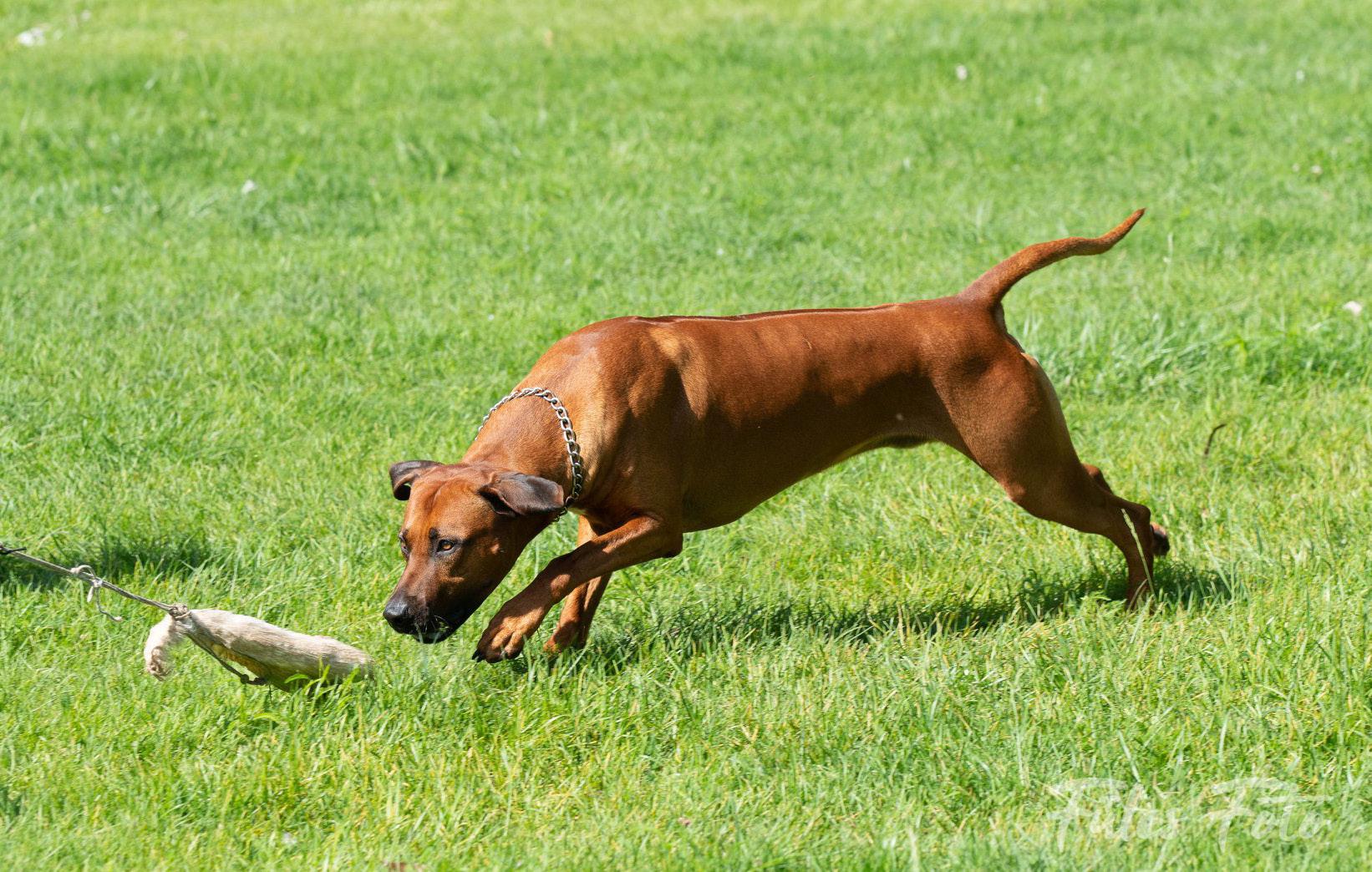
Anyone who knows Zion knows that he is a very nice, predictable and direct dog. He carries no hidden aggression, he does not bare his teeth and he does not attack anyone. That does not mean he does not carry the dominant traits characteristic of male dogs, but that is a natural part of him, these tendencies are no stronger than those of the average male Ridgeback, in fact we have never had a problem arising from this, for example in the ring.
Now, let us get back to the training itself. If someone enjoys this sport, it is definitely recommended, as it not only tires the dog
physically, but also mentally very quickly. Each training session lasts 10-15 minutes, during which the dog is the sole focus, it requires strong concentration from the dog as well as from its owner and the trainer. But what is very important, I recommend it only in a controlled setting, it is possible that with an unsuitable trainer the dog can be led in a very bad direction, so I recommend it only if you can find out beforehand about the organisation where you want to learn and the background of the trainer, who studied under him, what professional achievements he has and how he behaves with our dog. I wrote directly that with our dog it is very important not to start working with the Ridgeback with general stereotypes, but to see what signs he does first. We are not talking about a Malinois or a German Shepherd here, but about a Ridgeback with his advantages and of course also his disadvantages.
We were lucky, our trainer never compared him to other breeds, we progressed at our own pace, if something was not safe, we did not move on until that particular “step” was safe. Anyone going into this should know
that the basics take a lot longer, you may have to spend several hours learning how to get the dog excited or how to grip and hold the arm (guard arm), but once you get the hang of it, the sky is the limit. I was/am very happy that we met our coach, that he had the patience to train with us for many months and years, and that we were able to learn the basics of this very interesting sport. We never competed, we only did it for our own pleasure and to satisfy our learning and we never regretted it once. We have become a team and I know that Zion trusts me unconditionally and I also know that he would protect me in any danger if I needed him and I could trust him unconditionally!
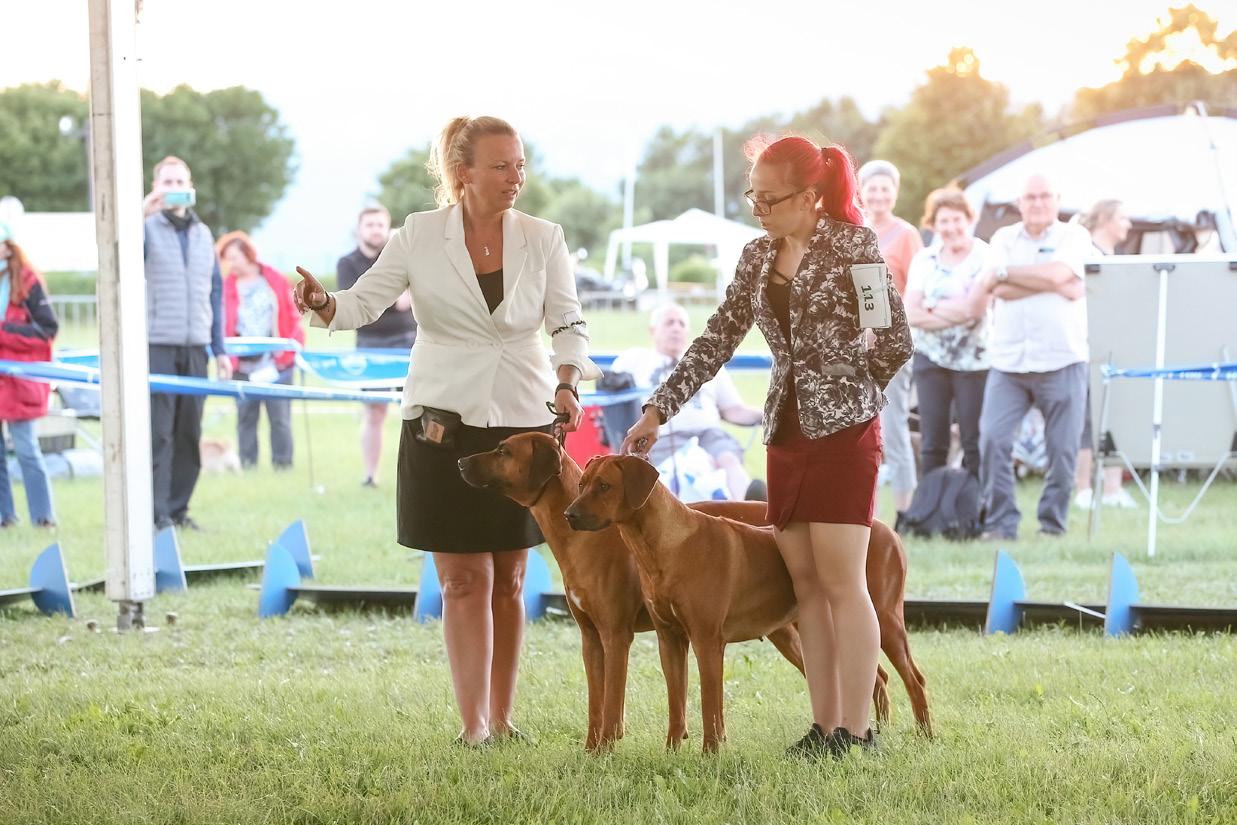

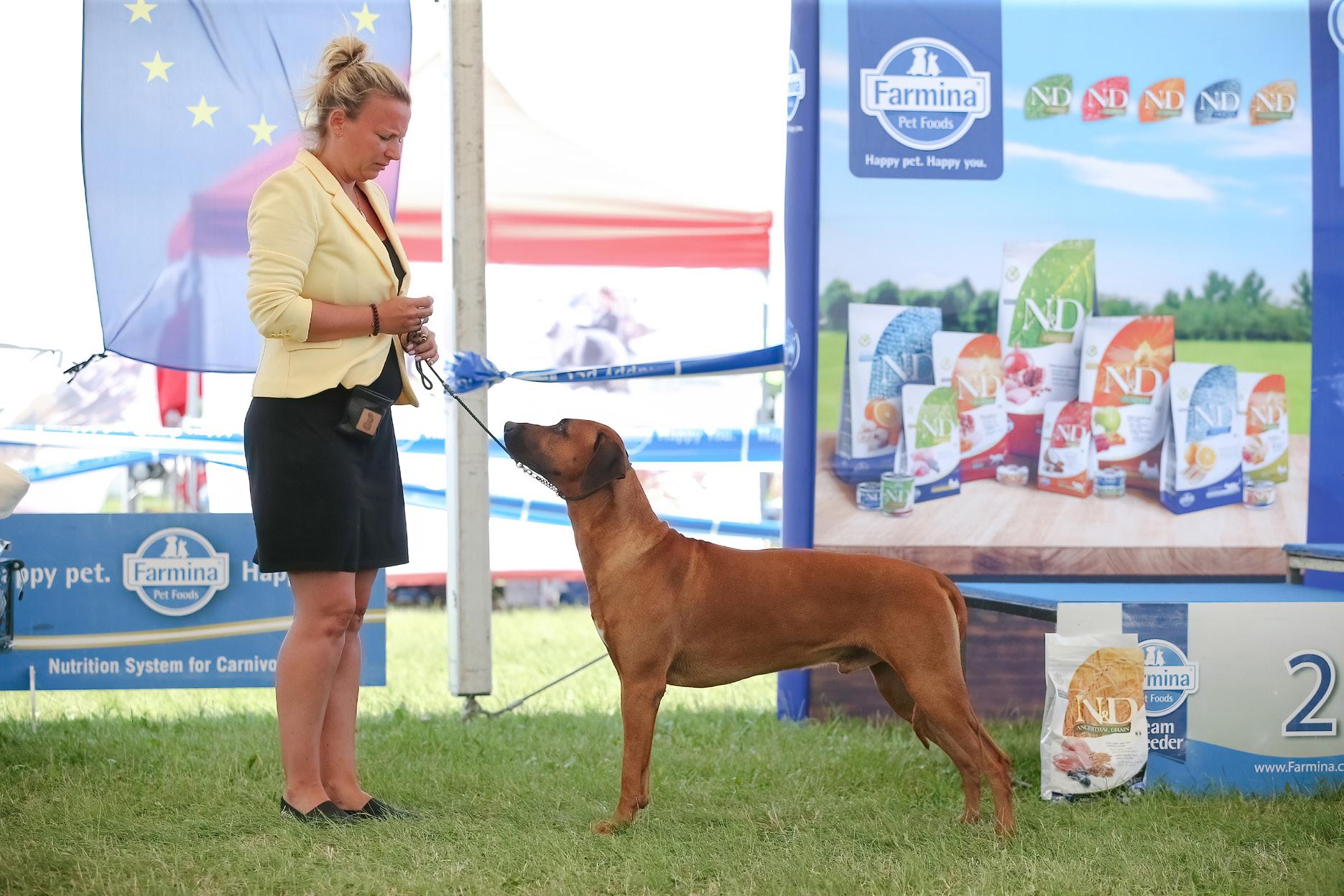

 WRITTEN BY JESSICA HORNÁKOVÁ PHOTO BY ARCHIVE JESSICA HORNÁKOVÁ
WRITTEN BY JESSICA HORNÁKOVÁ PHOTO BY ARCHIVE JESSICA HORNÁKOVÁ
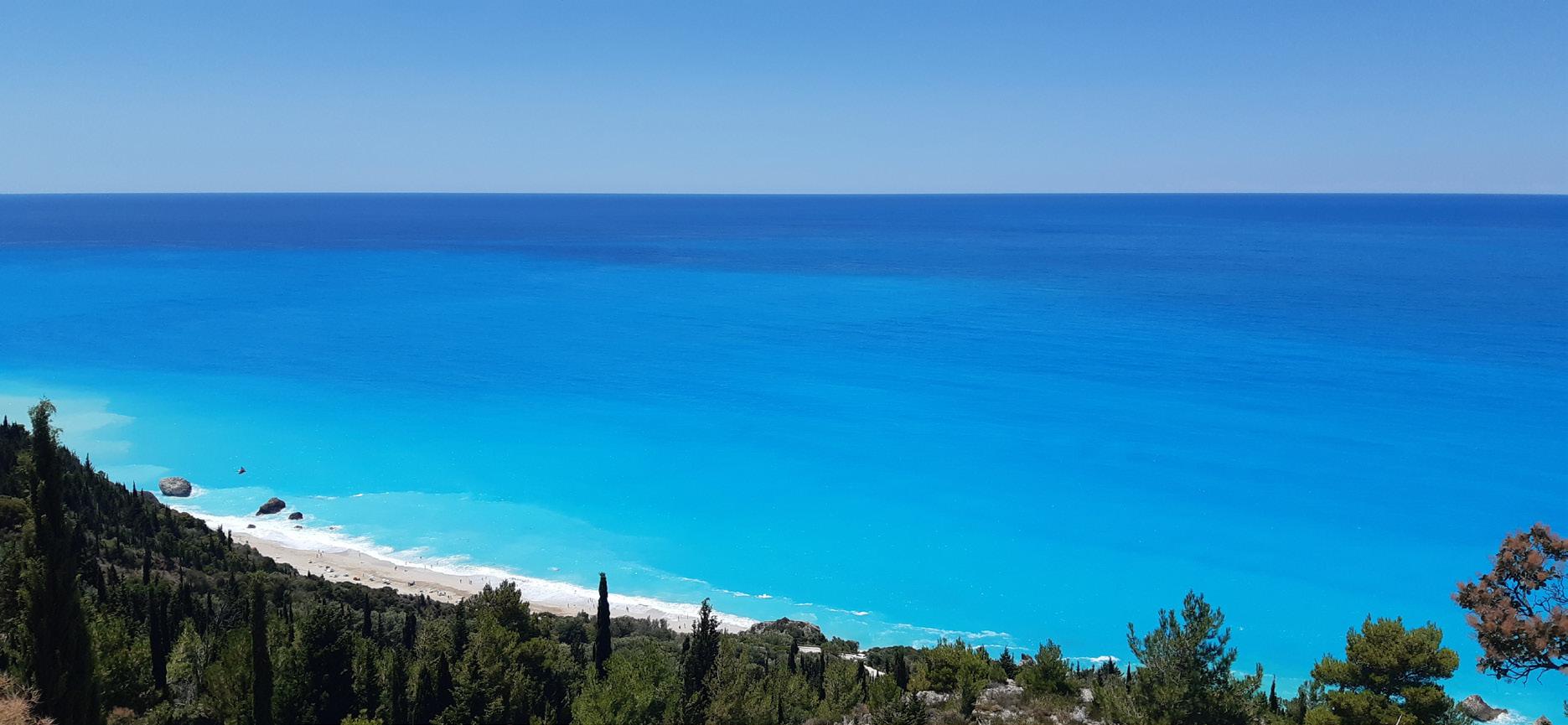
Gorgeous sea, beautiful sunsets, great food and amazing weather. That is Lefkada. It is an island, but accessible by car, there is a bridge that brings you directly to the capital. So, you don´t need a ferry. It is located in the western part of Greece, nearby Corfu, Kefalonia and Zakynthos. And together with these Ioniac islands, it is pure beauty.
But how did we manage this hot Greek weather and the main season with the dog, moreover, living in the van?
Firstly, preparations. Before the journey, we gave Arlo a tablet Nexgard Spectra. Greece is a country where mosquitoes can spread heartworms. We repeated this tablet after our arrival in Czech Republic. There are many more products, just ask your veterinarian what he recommends.
When you go to Greece you need a valid vaccination against rabies, the passport, the microchip and ideally also a titer of antibodies against rabies (some countries like Serbia, Bosnia, Macedonia require this certificate). We have never had such an experience at the borders but we have it, just in case.
You will need a lot of, a lot of, and again, a lot of drinkable (ideally cold) water, enough sun protection, dog shoes (because of hot sand and rocks), swimming vest, parasol. And a healthy dog, of course, because without that it would not be possible. I also brought some first aid with me - antihistaminic (i.e. zyrtec/claritine- anything you use against allergies), tablets against diarrhea (my personal favourite is dia dog), enterozoogel, some ionic protein drinks for dogs that you can pour into the water and some bandages.
We brought a cooling pad but we found out that it was useless in hot sunny weather. What is better - and the most crucial - was to create some shelter for Arlo.
Our accommodation was a full-star van Ford Transit. It was our long-awaited dream and we bought it just before going to Greece. We didn’t have much time to rebuild it. We only put some insulation inside ( and it was a great idea). The insulation lowers the interior temperature by 10 degrees. So there wasn´t such heat when we were in the car. We didn´t have time to build electricity and that was a disadvantage. In Greece, when you live in a van, you need a fridge.
The bottles of water get warm very quickly. Also, I really recommend having pergola. The parasol itself isn´t enough and especially not enough for your dog as sun protection. We improvised and made pergola with towels and sheets. It worked, but next time we will be better prepared :)
Let me just say that living in the van - it was the best vacation ever. Everyday sleeping somewhere else, another beach, another gorgeous sunset, another restaurant. Every night the most luxurious view - the sky full of stars and the sound of sea waves. Waking up with the sunrise, opening your eyes to see such a beauty in front of you. Nearby there lays your companion - your Ridgeback, wagging his tail and he is so satisfied, he can spend all day with his people. Next to you is your man, he gives you a kiss. You go out and you realize you just slept on the beach.
You see the sea. There is nobody on the beach and you go swimming with your dog by your side. You make breakfast and just stare at this beauty. Your dog decides to sunbath even though he has a UV sheet and you laugh at the fact that you were worried he will not like it here. You lay next to him and you both sunbath until you cannot take the heat anymore. Your man brings you ice cream and coffee. The day goes by, you swim, you paddleboard, you play volleyball or try paragliding, but mostly you just enjoy that you are present. Now. That you live now. That you are with your loved ones. And you realize what is really important in life.
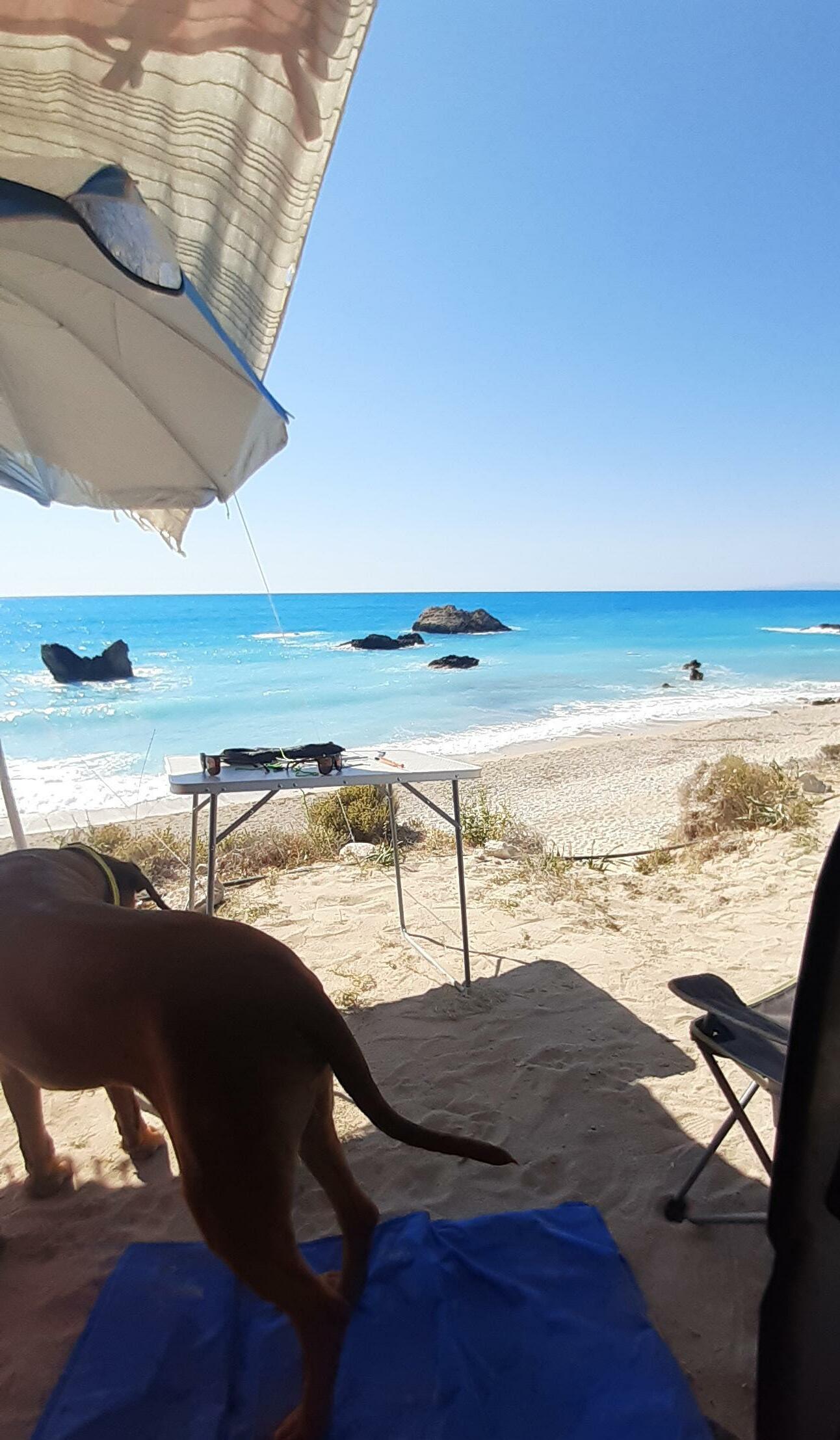
Originally, we went to Greece because we wanted to attend a dog show in Agrinio. The journey itself was very long, 2000 km, departure from Brno, Czech Republic. We travelled for 30 hours. There were huge queues at the borders (we waited for 5 hours). We had a small stop in Albania for another dog show (where we finished international championship - yupiiii :)) and then carried on to Greece. We

spent 3 weeks there (but wanted to stay much much longer).
We were not under time pressure so we made stops quite often. The good thing was that with the van we could have a nap while parking at a petrol station and when we were ready we set off again.
Finally, we arrived. Elada. Huge smile on my face that Arlo can be here with us. And when you have a half-Greek boyfriend, he knows where to take you, where it is most beautiful - and that is Lefkada!

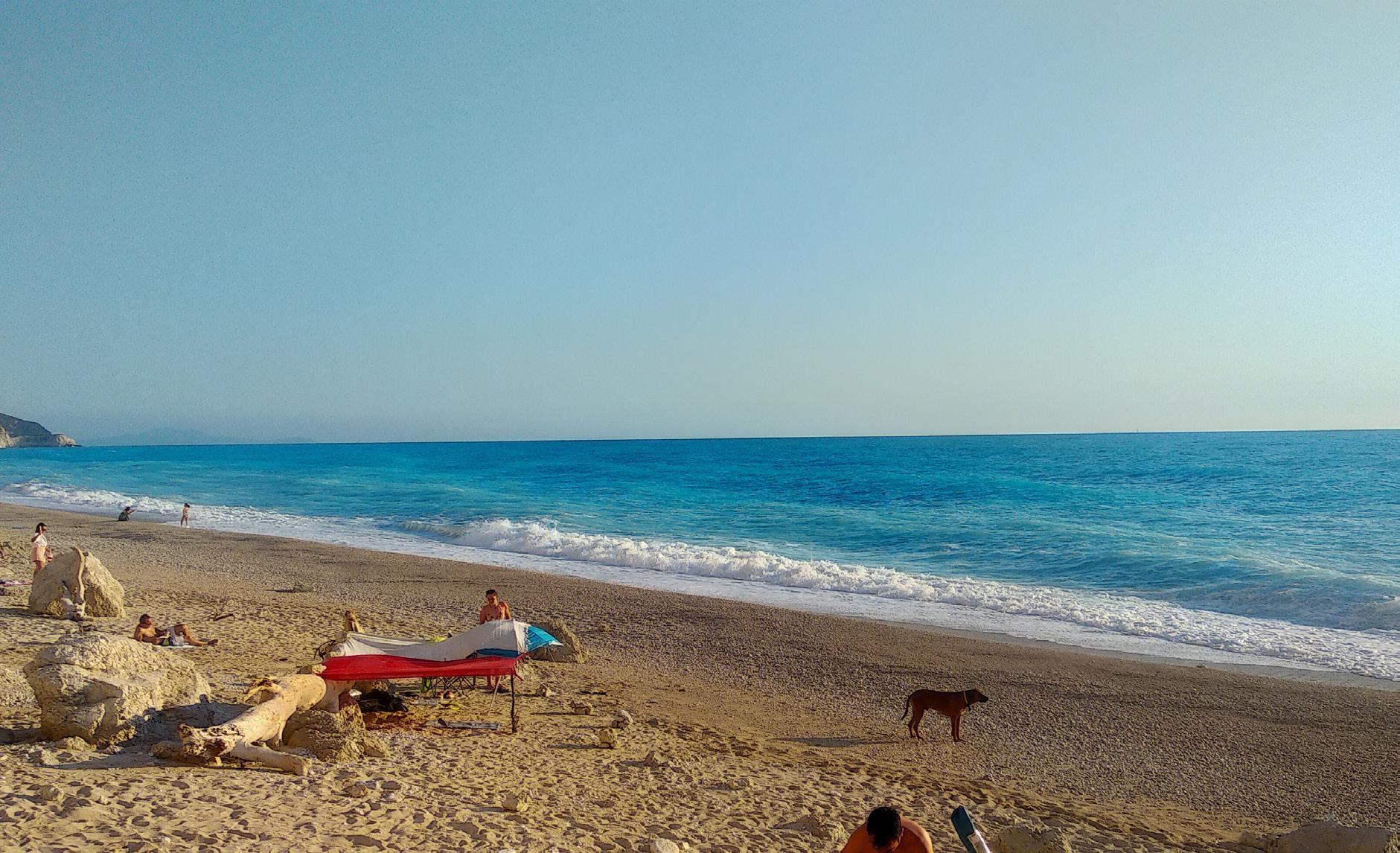
You really need a lot of water. A lot. Every day we bought a dozen 2 litre bottles and we used them all in one day.
Whenever we were in the bar or restaurant the first thing we ordered was cold water. It is a great thing that the bottles are in the fridge as in such heat you and your dog need to drink cold water.
Arlo was thrilled when we arrived at the beach. He loves water. He could play all day long and fetch his toy from the sea. And he doesn´t have a limit when he is in such euphoria. He forgets about heat, fatigue. So, we played only for a few minutes, washed him and put him under the shelter. He rested a lot during the day. And we offered him fresh water every while. He drank 3 times more than in Czech Republic ca. 5 l of water every day. This is really important. In such a hot climate and when the dog isn´t adapted to such weather conditions, he must drink. He must be washed with water so the organism doesn´t suffer from heatstroke or worse, collapse. When he was sunbath-
ing, we only let him do that for a few minutes and then again into the shade. We swam with him frequently but briefly.
When he swam in the sea, nobody minded. People were laughing, they liked how much he loved swimming.
Every evening he needed to be showered properly because the salt was very itchy. We had to find some showers or shower him with the water we had in storage.
Another important thing is enough shade and shelter. Use anything. When we camped in one place for a few days, we made shelter with the help of our car and some sheets.
But when we were, for example, on the beach with sunbeds, the parasol itself wasn´t enough. Arlo needed more shade so we always created some shelter with the help of sheets and some rocks to pin them down. When you arrive at the beach it takes some time to create this. Bring enough sheets, ideally UV sheets, with you.
Arlo was fed twice a day with only dry food (we poured water on it). Everyday at different times. In the morning, we gave him smaller portion and in the evening his usual quantity. In general, we planned our daily program by the time he ate. Because after eating and drinking he rested for at least 2 hours.
We visited the cities and were walking in the aisles at night when the temperature was pleasant. The tourists admired Arlo. We finished our day with a tasty dinner and went to sleep in our car. We usually slept with the windows open and all of us were so tired from our everyday adventures. One funny story: one night we woke up in the middle of the night. We heard an invader in our van. But it was not a human. It was a cat, it had its head in Arlo´s food and was stealing it – haha!
I am so glad I bought Arlo a swimming vest. He is a good swimmer, but still. The waves were huge and it helped a lot.
Also, when he fetched his toy from the sea, one of us held the toy above water so we prevented him from drinking it. This can also be potentially dangerous, inhaling water can lead to aspiration pneumonia.
Greek people (in general) don´t like dogs. Especially older generation. But we were tourists and they respected that. Locals never petted Arlo, but for foreigners he was an attraction.
We could take him anywhere - to the beach, to the restaurant. When he laid on the sunbed (ridgebacks must have comfort :)) nobody from the staff minded.

I have to say that our Arlo is an obedient dog. We could let him free on our sunbeds or towels or under the parasol and he stayed. He carefully watched us from the shore and guarded our things, including mobiles, wallets and jewelery. I wasn´t afraid somebody would steal when he was on guard :)
What you can see in Greek cities are stray dogs and cats. Cats are mostly in bigger cities, they are around the restaurants and they are not afraid of dogs. Be careful because they might actually scratch your dog, really they are very brave creatures, but they must be otherwise they wouldn´t survive.


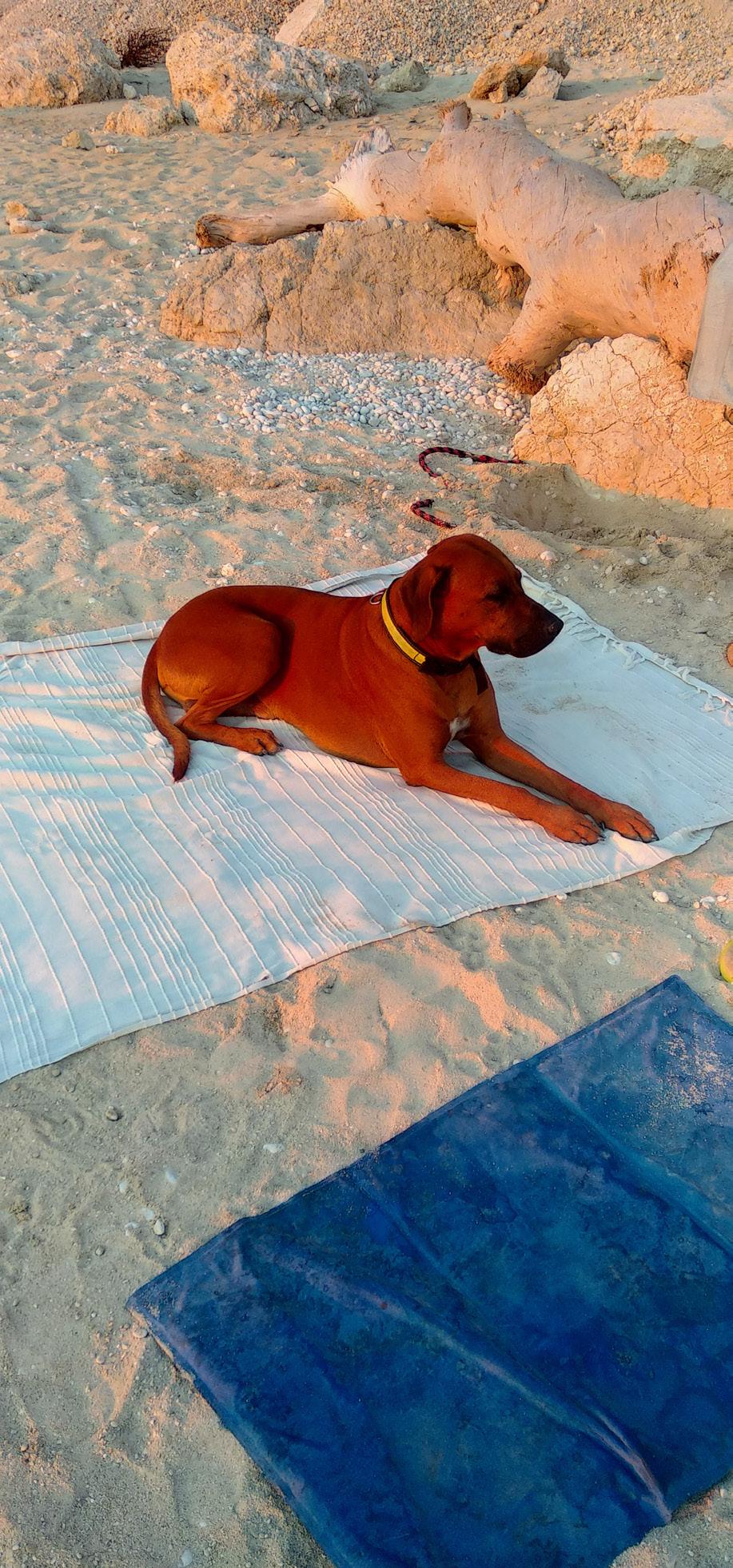
The dogs were mostly neutered and they didn´t cause any problems. From what I have seen they live solitary we didn´t see any packs. They are very cunning. One evening one of the local dogs (his name was Giorgo) gave us a surprise. We were camping for a few nights in one place. We simply loved it there. It was safe, there wasn’t anybody besides us. After dinner we went for a short walk to the beach, it was a full moon and we were just walking on the shore. When we came back to the car, we noticed a black passenger on the front seat. It was Giorgo sleeping behind the steering wheel. We told him “Giorgo go out you cannot stay here with us”, but he didn´t even take notice. I told my boyfriend …maybe you should try it in Greek, I think he doesn´t understand you. And it worked :D Giorgo got up (reluctantly) and jumped out of the car. He didn´t accept our apology in the form of food though.
Lefkada and its sea. The colour is beautiful. Mesmerizing. On the west side there are huge waves, but it can change depending on the wind the eastern side is mostly calmer and I would say quite ordinary. They say it is suitable for families with small children and dog owners. For us it was very calm. We only passed through Vasiliki and Nidri and decided to go back to the west coast.
And what is a must see when you are in Lefkada?
Egremni beach, I really, really recommend to go early. Not only because of full parking space, even at 8am in the morning, but also because it is kind of a hike to get into the beach :) 1,2 km walk in the serpentines on hot asphalt isn´t suitable for dogs paws also. Bring only necessary things with you, bring enough water because there is only one restaurant with all the services and it takes 400 stairs up to get there. The restaurant is nice, the owner also has a dog. The food there was delicious and also the prices were ok. Af-
ter you pass this restaurant you need to step down 400 stairs and you are directly on the beach.
But Egremni is worth all these difficulties because it is pure and gorgeous. Egremni is mostly sandy beach, on some areas pebble beach.There were huge waves when we were there, even 3 metres high and I didn´t allow Arlo to swim in such sea, it was too dangerous. So he was only sunbathing and guarding our things when we were in the water. Bring your parasol and UV sheet. There are some rocks to catch it to create shade. We spent all day there, we were its last visitors. 400 stairs up with the backpacks and 1,2 km long road with 12 % elevation that is kind of nice gym for the evening.
Porto Katsiki is one of the most beautiful beaches in the world. It is better accessible than Egremni, local business very nearby and you can even order food directly at the beach. It was one of the most crowded, touristic beaches. Also the prices of food, drinks, coffee are higher. The fee for parking too. We came later to this beach, around 11 am and it seemed at first that we will not find a place. The sand was so hot and I gave Arlo the shoes for this occasion. Eventually we found some space, put our towels and made some shelter for Arlo. I really recommend buying donuts at the beach - they are delicious, the best ones I have ever tasted. Porto Katsiki is a sandy beach. There were a lot of people, children, adults and the waves

were small. From the sea you could see the big massives, the big stones and suddenly you feel so humble.
Kathisma beach- oh Kathisma was perfect also. Completely organised, there are bars, restaurants, sunbeds, beach service, even paragliding centre. You park directly in the parking lot and go to the beach. Be careful of paragliders they might land directly on your car.
Lefkas the capital of the island. It has everything you have dreamt of. A lot of cats. Nearby the city, there is a windmill beach, paradise for kitesurfers. There are a lot of big rocks underwater and this beach is very windy, so you don´t feel the heat so much.

So yes, we really recommend Greece in general. But know your dog´s limits. My dog is my everything, fortunately he is like us - brave, adventurous, water-lover and sun-lover and he is completely healthy. That´s why we take him with us. Anytime you go abroad, check some local vets just to be sure. You never know what might happen.
The only disappointment was the dog show. That was a complete disaster, the show was cancelled, but nobody contacted us and to this day the organisation hasn´t returned the fee nor written an apology.
So, to go to Greece for vacation with your dogYES!!!! It is possible and your dog can enjoy it too. When there is a will there is a way :)
Have a beautiful day RRidgies :) Jessi, Arlo and Petr

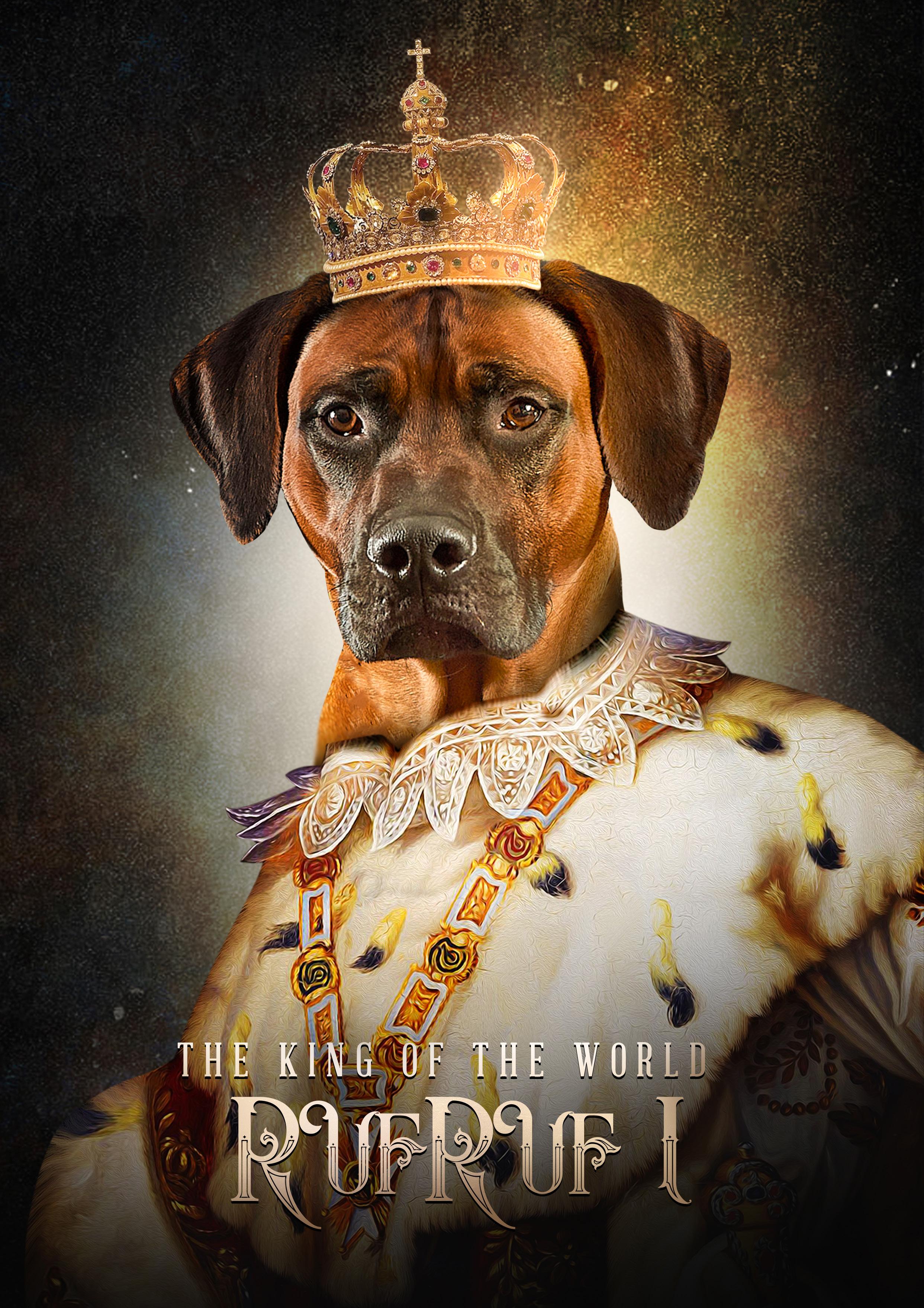
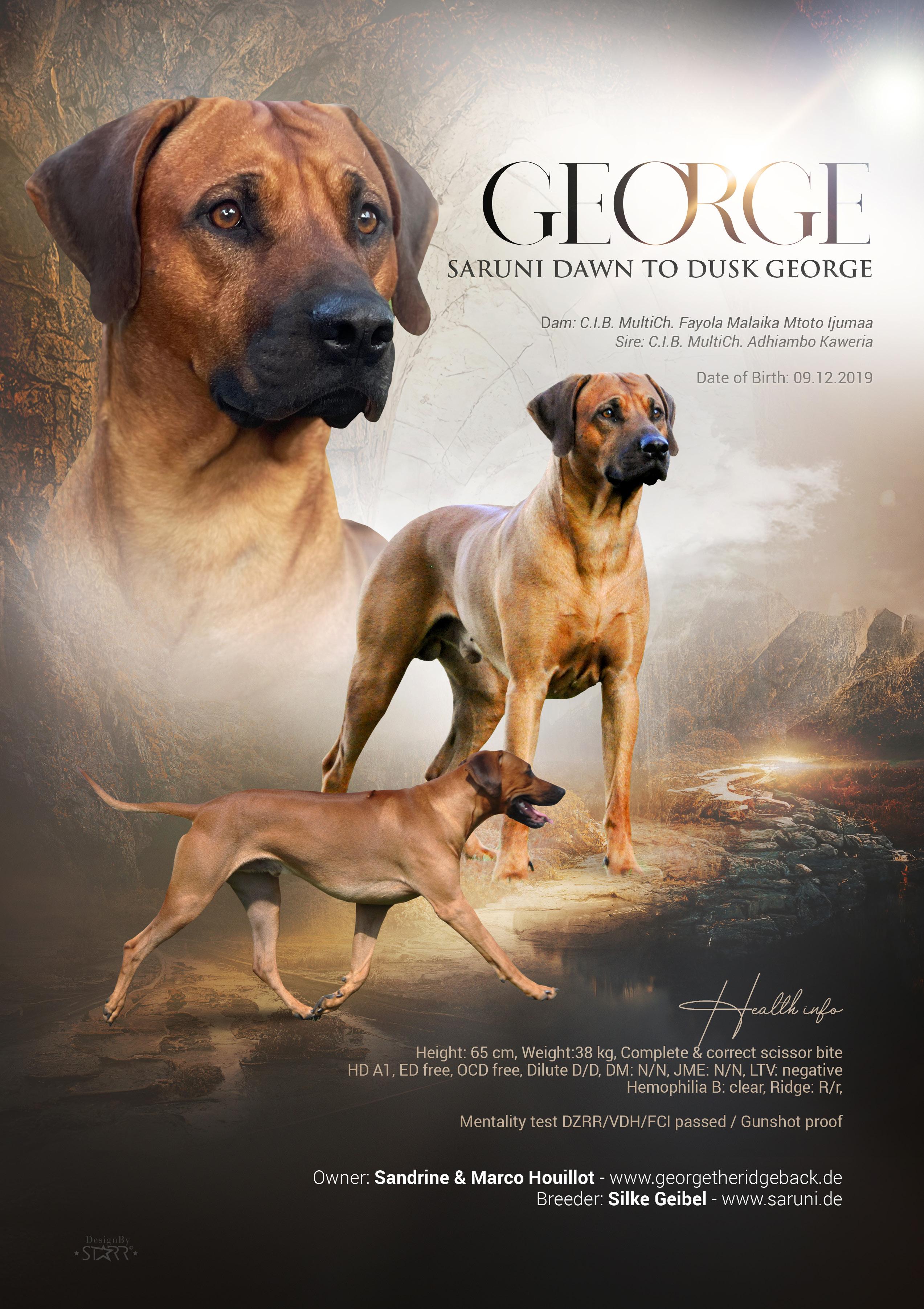 Valeriia Iurtaeva
Valeriia Iurtaeva
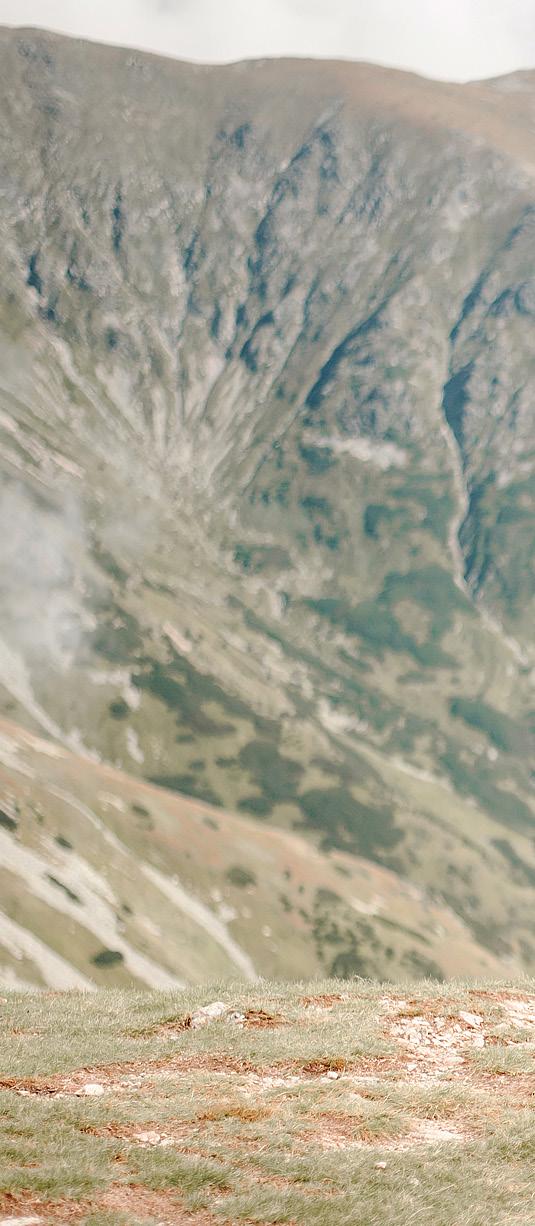

When I moved to Slovakia, I could not get enough of the beauty around and the mountains always attracted me. After Theo was born in 2018 from my older female Redy, watching how he grows and how temperamental and active he is, I firmly decided that he is the dog that can accompany me on any trips with joy and sufficient endurance.
Rhodesian Ridgebacks are able to change the lifestyle of their owners, infecting them with their activity.

Of course, dogs of many other breeds can become a good companion in the mountains. I want to talk about the different nuances of hiking with a dog, about what is needed for all participants to enjoy and have a minimum of problems. At the end, I will write about a separate topic - dog bags in which they can carry both their food and partly the owner’s load.
The advantages of hiking with a dog are obvious. The first thing that comes to every dog own-

er’s mind is that you don’t need to look for someone to leave it with someone while you’re away from home. The owners of active dogs will also immediately realize that after such active walking, your buddy will sleep extremely well, instead of being naughty. I confirm: a week-long hike, especially out of habit - and for several days your dog is not heard or seen at home. It’s not worth talking about the benefits for dog’s health: fresh air, a lot of movement, free running without the danger of getting hit by a car or eating something harmfulthis is dog happiness in its purest form.
In the cycle of affairs, we always do not have enough time to communicate with a pet. On a hike, you can get close to him like never before, enjoy watching his habits in a more natural environment, respect him for his courage in overcoming obstacles, and maybe - who knows? - he will help you not to get lost and find the path. In addition, a hike is an excellent occasion to relax a little for a while the home educational framework, for example, sleep with your beloved dog in the same bed, or rather, in a tent.

There is another important point that I feel very well, but it is rather difficult to describe in words. Among the deserted mountains, with all the rapture of their beauty, with all the feeling of relaxation and harmony, I always feel a little foreign - an uninvited guest, who is received politely and not
driven away, and yet they are not recognized as one of their own. My dog is much closer to the natural environment where we aspire from our civilized cities, he does not need equipment and training, he does not need to learn anything - he knows from birth what and how to do here. He is here in his element. Also, a guest - and yet at the same time his own - he becomes a guide for me to this natural world, as if I begin to feel a little nature with his senses, hear, see and perceive it differently ...
It is better to start small - one-day walks along simple routes. Puppies of certain breeds with a heavy weight are prohibited from placing heavy loads on the growing joints until the dog has grown and is fully formed. Until a year old Theo didn’t go on all-day hikes and especially to the mountains, since the rocky terrain of our mountains is quite dangerous for the paws and carries a huge load on the legs. Now I have a little Roxie and since 4 months old she is hiking with me and Theo, but only up to 15 km and not difficult routes at a calm pace. Of course, you need to monitor the condition of the puppy and let him rest.
For sure, the dog must be healthy. After vaccina-
tions made the day before, even adults are advised to observe quarantine (do for 10 days without active walks and bathing). I wouldn’t risk taking a female in heat either.
Before the hike, you need to mentally go through the route and figure out what obstacles will be encountered there and whether the dog will be able to overcome them. Are you physically ready to carry him, lift him up or lower him where he can’t go by himself?
Something similar happened on one of my last hikes with Roxie in Switzerland to the mountain Dent de Lys 2020 m. n. m.. I studied this mountain for a long time, watched many routes, videos and photos of tourists who climbed there. Literally 800 meters before the top, the chains began... turning around would probably be the right decision, because Roxie didn’t have a safety harness to hook her to me and climb with insurance, but I turned out to be a little crazier than I thought... I climbed myself and then lifted Roxie, step by step, meter by meter. At this point, you think of nothing else, only the safety of your movements and helping your dog get there safe and sound. At the top of Dent de Lys I thought that I would admire the beauty around, but my euphoria was quickly replaced by thoughts about the descent. At 5 months old, Roxie is a bright and smart girl, although she was afraid of heights, like most dogs, she quickly learned to trust me and jumped from high cliffs, because she knew that I was holding her by the handle of her usual harness and helping her to get down.
But, of course, I don’t advise anyone to experience such stress on a hike if you are not confident in your abilities and are not mentally prepared. Places where the chains are indicate danger. You can fall and crash to death. Therefore, always weigh all the pros and cons.
I will talk about the dangers of hiking later.
• Clarify the rules for visiting the place where you are going: dogs may not be allowed into nature reserves and other specially protected natural areas, or may be required to be on a leash.
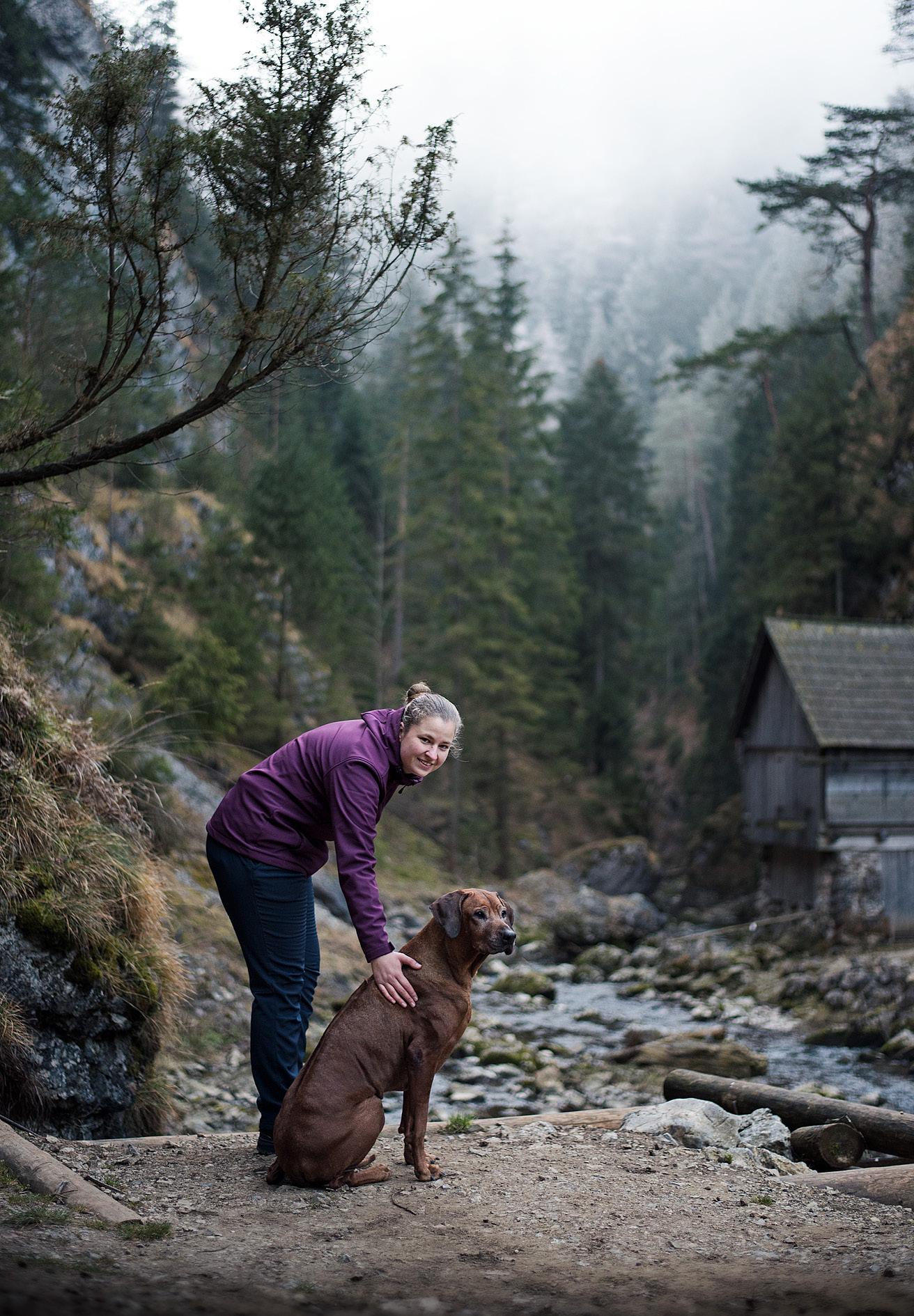
Hang (if not already) a dog tag with a phone number on the collar, so people can call you and return the dog if it gets lost.
Choose a comfortable strong leash - not leather, not a tape measure, the best is a regular canvas one, check its carabiner.
• Find suitable bowls that are light and unbreakable. There are, for example, folding bowls made of silicone or waterproof fabric.
• If you are going camping for several days and will be sleeping in a tent. If the dog is short-haired - grab a heat-insulating bed for it (for example, tourist “foam”).
Bring enough water for yourself and your dog. Check in advance if there are rivers, reservoirs or lakes on the route where the dog can cool off (in summer) and drink water.
Enough food if it is a multi-day hike or a healthy snack if it’s a one-day hike.
When we go on a one-day hike, I give the dogs food 2,5 hours before the start of our hike. For example, if I want to start hike at 6 am, our drive to the parking lot will take 2 hours, then I will feed the dogs at 3:30 am. If your dog is motion sick in the car, then there is an option not to feed the dog before the hike, but to feed it late in the evening. I would not recommend feeding the dog during the hike, there are risks of stomach torsion.
If we are on a hike all day, then of course the dog needs a healthy snack to replenish the charge of energy and strength. Usually, when we came to the top or to the finish point, we arrange a halt for rest and a snack. For my dogs, I take fruits that will replenish carbohydrates and energize (mine like banana, apples) and take small, canned dog meat up to 100-150g (I usually take pure beef), which will help to cope with hunger and turn out to be a delicious snack.
In the case of multi-day hikes, if your dog eats dry food, then of course you can do without snacks on hikes and usually on such hikes the dog is fed once a day, in the evening, before he can lie down and rest, to calmly digest his dinner.
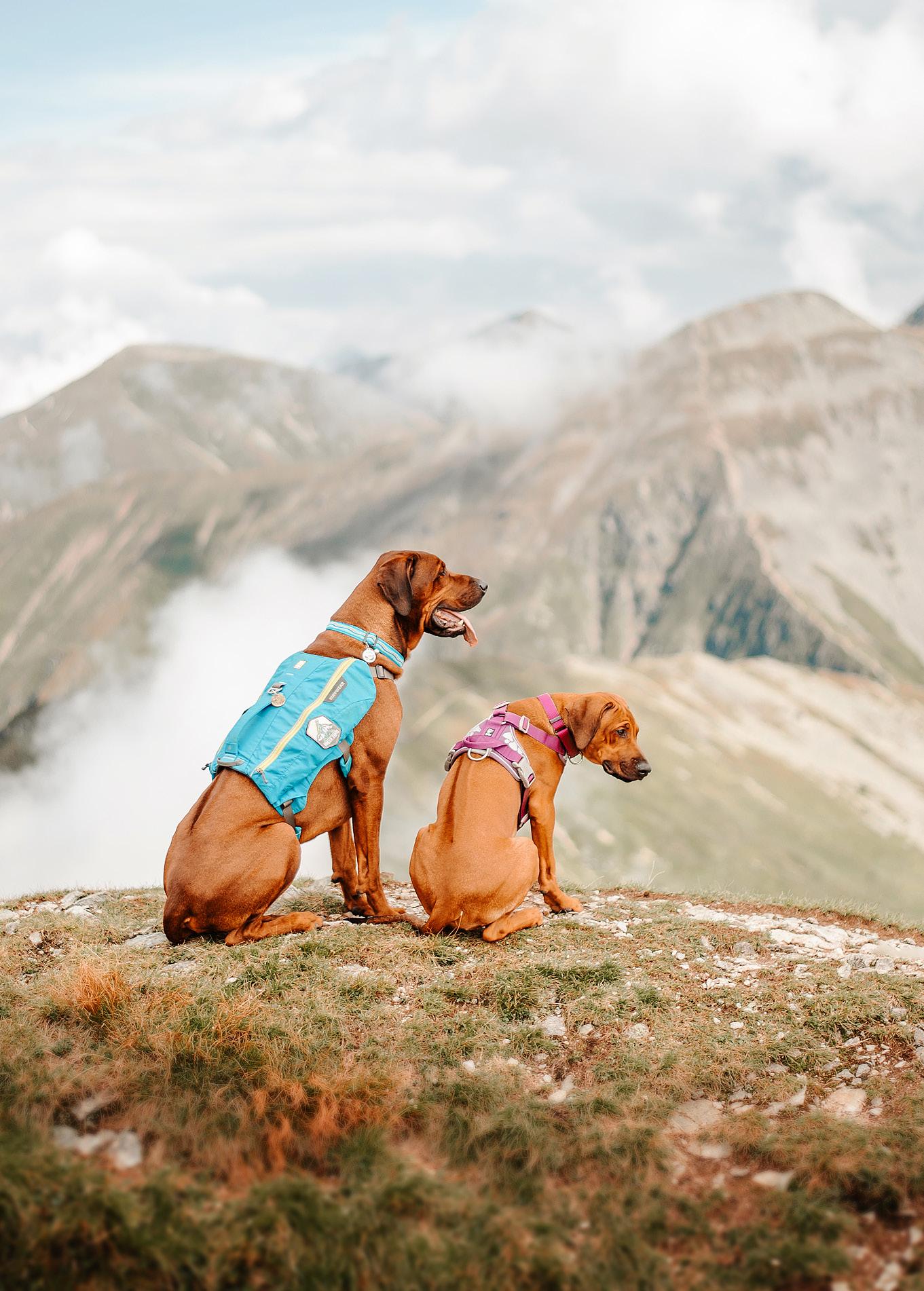
If you are a RR owner and go for a hike in wintertime, then of course do not forget about warm clothes not only for yourself, but also for your dog. Theo goes through most of the hike without clothes, but when he comes back, when the dog is hot, but already tired and his pace slows down, I always dress him so that he does not cool down too quickly and get sick.
Required minimum:
Dressings, elastic bandage Disinfectants (hydrogen peroxide, chlorhexidine) Anti-inflammatory and healing ointment for wounds (levomikol)
Adsorbents (activated carbon, filtrum)
Vaseline oil (helps to “slip” a foreign body that has entered the stomach or intestines. Its advantae is that it is not absorbed, but completely goes out through the rectum)
Slippers to protect injured paws
Tweezers for extracting ticks
I am often asked if Theo damages paw pads on rocks and loose scree. In general, during a long hike, especially in the heat, I see on him that he has worn out the pads and begins to limp a little on all 4 paws. In this case, upon arrival home or before going to bed in a tent, we rub the paws with a special ointment or cream for quick regeneration. Fortunately, we did not have any injuries in the mountains. But for such cases, pet stores sell special slippers to protect injured paws. On long hikes, it’s a good idea to have at least one with you just in case.
When helping a dog with a serious threat to its health, remember that your goal is to get to the veterinary clinic as soon as possible, self-treatment can be harmful.
Dogs adapt to natural conditions much faster than us. A more or less experienced dog will choose a safe path, will not climb where it can’t go. But we choose the route for ourselves, and not for them, so we need to remember the following dangerous situations.
Fords on mountain rivers: here you need to control the dog, in case of a strong current, secure it with a leash or rope. Ideally, this is done like this: a rope is tied to the dog’s collar, one person remains with the dog on the shore, and the other crosses the river with a rope in his hand, then the dog is allowed to follow him.
Rocks: dogs usually climb well and can surprise with their agility but going down is more scary and more difficult for them. It may take your participation to help them get off. The dog, seeing that people descend where it is afraid, often panics, whines or yells - it is afraid that you will leave it. The dog can behave unpredictably - jump down or start looking for easier ways and get stuck even worse. Therefore, it is not advisable to leave the dog last, it is better that someone stay with him, control and guide him into the loving arms of the one who accepts him below.
Screes: dangerous for both the dog and the owner, since the dog from above can lower stones on people. In such places it is better to go together. If the dog does not listen to the “near” command, you should take it on a leash. But among the blockages of large motionless stones, it is better to let him go, so that he himself chooses the best path, as it is more convenient for him, but not for you.
The ability to walk on a leash and not pull is very important in difficult areas and can even save your life. Since both hands should be free, it is best to tie the leash to the belt of the backpack and adjust its length so that it does not drag along the ground and the dog does not step on it. It is easy to train a dog to walk calmly and not to rush anywhere: you need to walk along the path with it for several kilometers, using trekking poles. The sticks flashing in front of the dog’s nose quickly discourage poking forward.
In general, in difficult places, if you see that the dog will be able to cope on its own, and he is panicking, you need not hurry
him, do not reprimand or scold, but calmly cheer him up and give him time to get used to the situation. After passing through a dangerous place, hold the dog so that it does not climb back and does not interfere with other participants.
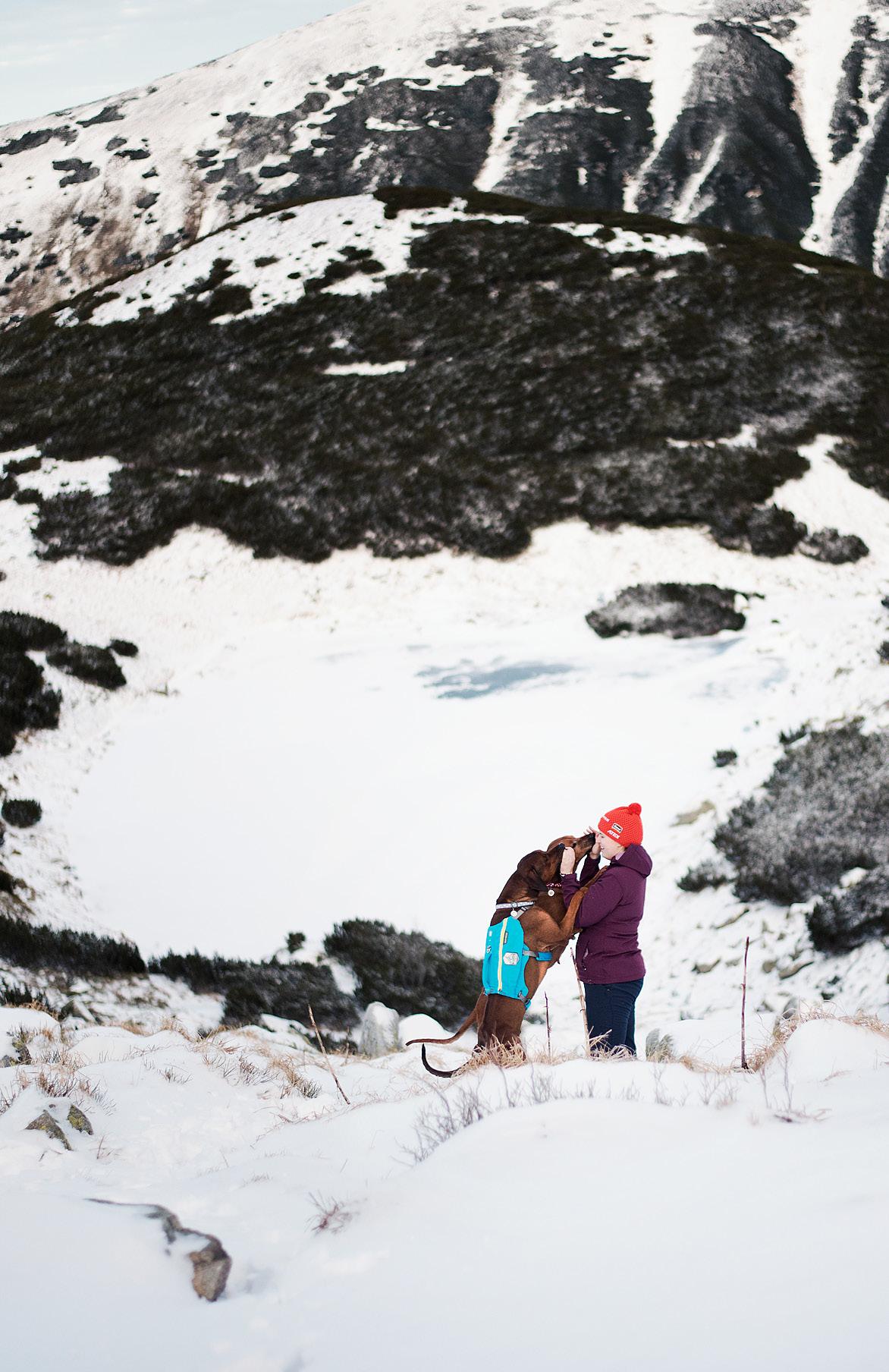
Dogs gain experience very quickly, and in the next campaign he will be easier and more fearless to pass the same obstacles that caused desperate whining last time.
Dehydration: the dog will find those sources of water from which you won’t drink (for example, puddles), but still, you need to take care of the water supply not only for yourself, but also for the dog. Dry food causes an increased need for water, so if you know that there will be no water on some section of the trail, it is better not to feed the dog before such a hike.
Wild animals: usually dangerous in the sense that the hunting instinct can make the dog forget about everything and enthusiastically set off in pursuit. In this case, we cannot do anything, just be patient and wait until the dog runs out of steam and returns. Theo met foxes, hares, deer in the mountains, but, of course, he has not the slightest chance of catching up with any of them. Personally, encounters with bears make me nervous, because he also tries to
run after them. It is good that our Slovak bears are afraid of people and at a meeting with him they hide with lightning speed.
Not everyone knows that a dog can perfectly carry at least its own food, and often your load in a special backpack. It is similar in design to saddlebags for horses, or - to whom what association is closer - to a bicycle backpack of the “pants” type, which is attached to the trunk.
The most important thing to know about dog bags is that the load can only be carried when the dog is one year old! Prior to this, his spine is not yet fully formed, and stress can cause harm.
How much can a dog carry? It is believed that the weight of the load should not exceed 25% of its own dog weight. Rhodesian Ridgebacks weigh 30-45 kg and they can carry 7-10 kg, which practically confirms this thesis.
Of course, the amount of weight should be increased gradually. In the first try, when the dog still needs to get used to the backpack, to change its dimensions, you can put 2-3 kg.
Don’t be alarmed if the dog immediately staggers like a drunk - he just never wore backpacks. In five minutes he will find the center of gravity and everything will be all right.
Human backpacks for hiking are all made in roughly the same design, despite minor differences. There is a much greater variety of shapes in the dog backpack market. This is understandable, since dogs cannot give feedback on whether the backpack is comfortable.
The main differences between commercially available backpacks are the shape of the cargo compartments and the way they are attached to the dog. All of them wrap around the dog under the belly, but in addition, one part of the backpacks has a wide transverse strap passing under the dog’s neck over the chest. Other models have a harness-type knot in this place, with a sling passing between the front legs. The second type seems to me more convenient and provides greater freedom of movement. The first type is easier to put on and take off.
The main part of the load should fall on the area of the shoulder blades. The cargo compartments should not go too low, it is better to let them widen to the sides than go deep down, otherwise they will interfere with the dog’s movement.
Materials (fabric, zippers, buckles) are very important, as in any backpack, and for a dog backpack, you also need to take into account that it undergoes much more friction than a human backpack and gets wet more often. The most vulnerable are the lower and front parts of the cargo
compartments: it is on them that all the bushes, branches, stones fall when the dog makes his way through some thickets with his chest. Unlike human backpacks, mesh inserts on the back are not needed - the back of dogs does not sweat. Ultimately, without trying a particular model on your dog, there is no way to know if it is good. In foreign online stores, you should carefully read customer reviews. You just need to take into account that, firstly, they often perceive carrying a dog bag as a way to lose excess energy and transfer personal dog things (food, toys, etc.) rather than as a significant help to the owner in carrying cargo.
Theo wears the Singletrak™ Dog Hydration Pack for day trips. Since I am sure that we are driving from home and he is not dehydrated, I know that two bottles of 0.6 liters each will be enough for him for the trip and in the evening when we return to the car, he will receive unlimited water.
“Ruffwear Singletrak™ Dog Hydration Pack is a low-profile hydration pack for dogs that are ready for any adventure from day hiking to trail running. It includes and carries two collapsible water bottles, and small adventure essentials like pick-up bags, treats, a bowl, and a leash stow in the two stash pockets. The built-in harness chassis has five points of adjustment for an optimal fit, making the Singletrak is a comfortable choice for dogs carrying their own water.” https://ruffwear.com/products/singletrak-pack
The same manufacturer offers a more advanced multi-day Palisades Pack, which has the ability to detach the cargo compartments without removing the backpack. A technological harness remains on the dog, in which it can rest and run, after which it is easy to fasten the load back to it. In addition, this harness (they also sell it separately) is useful in itself, for example, it is convenient to carry the dog by the handle on the back through a difficult ford or lift it up on the rocks. The disadvantage, from my point of view, is that if the buckles that secure the cargo compartments to the “harness” break during field conditions, the bag cannot be used. Although, judging by the reviews, they are durable. Well, the price is a bit more expensive. If you can afford such a backpack, look no further - this one is the coolest :)
https://ruffwear.com/products/palisades-pack
Things to keep in mind when a dog carries a backpack with a load:
• Fords and difficult sections - where coordination and dexterity are especially important - the dog must pass without a bag.
Dogs are excellent actors and can pretend to be the world’s most tired dog, which by no means can put on this terrible backpack. In confirmation of which he will now cry
all over the forest. Each owner knows the nature of his dog and, with sound observation, will understand when this is a pretence, and when he is really tired and cannot carry the bag. In any case, you need to be potentially ready to carry his load (or part of the load) yourself if the dog gets injured or gets very tired.
• Do not forget to check the condition of the skin and coat under the bag, make sure that nothing is rubbed anywhere. If the backpack model has soft pads for plastic buckles, you need to make sure that they do not rub in the wrong direction, check if you need to tighten loose straps, if the bag is

outweighed on one side. Remember that a dog can’t say it is uncomfortable.
And finally, be sure to let him run freely so he can relax his muscles and enjoy the hike. The optimal route - as, indeed, for peoplealternates walking days and day trips with light radials.

In conclusion, I want to wish you incredible pawsome adventures with your four-legged friend. Do not forget about the right equipment and calculate your strength.

Best wishes, Valeriia, Theo & Roxie.

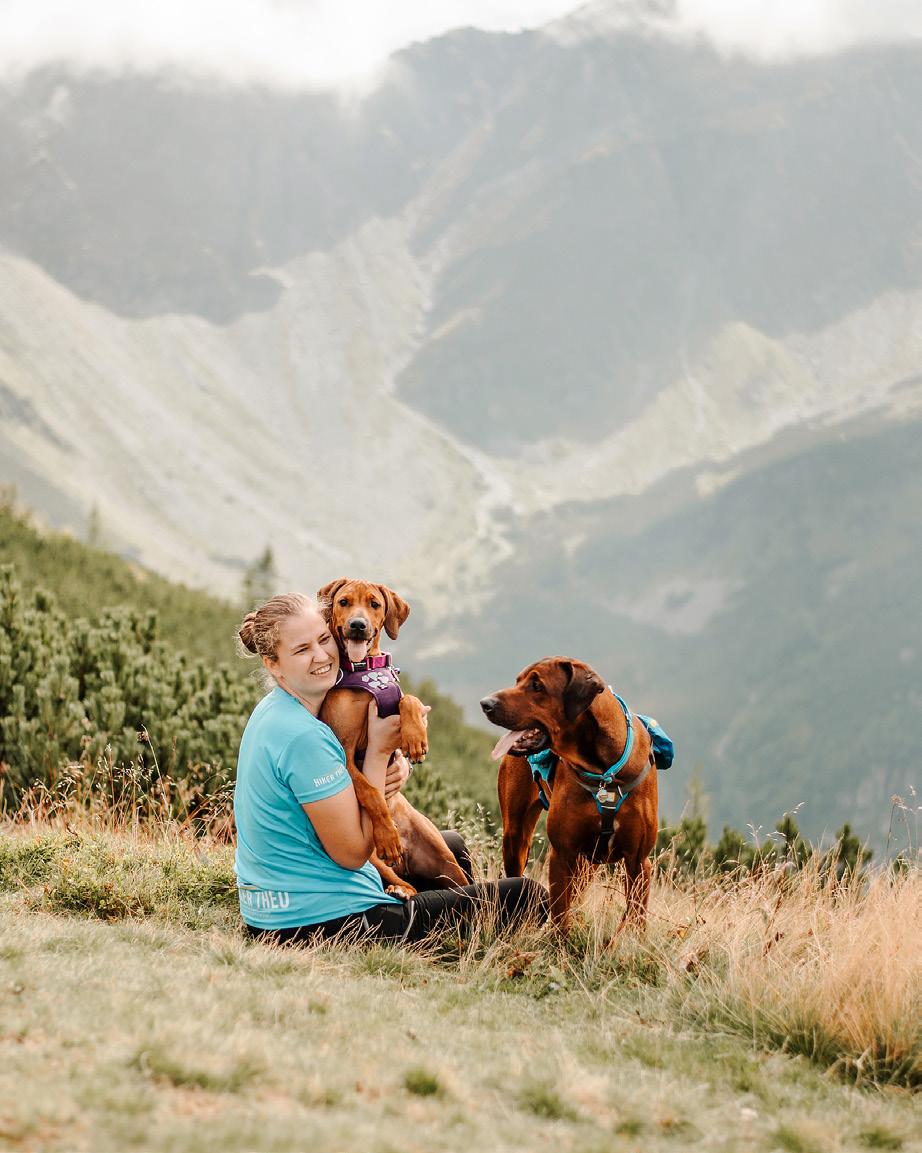

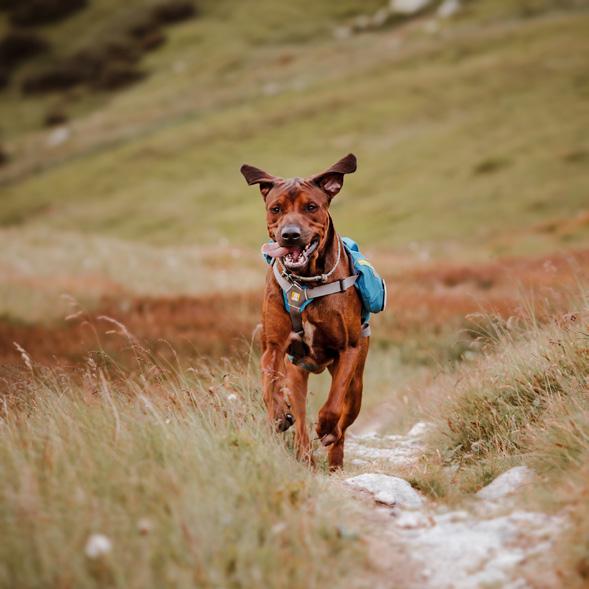





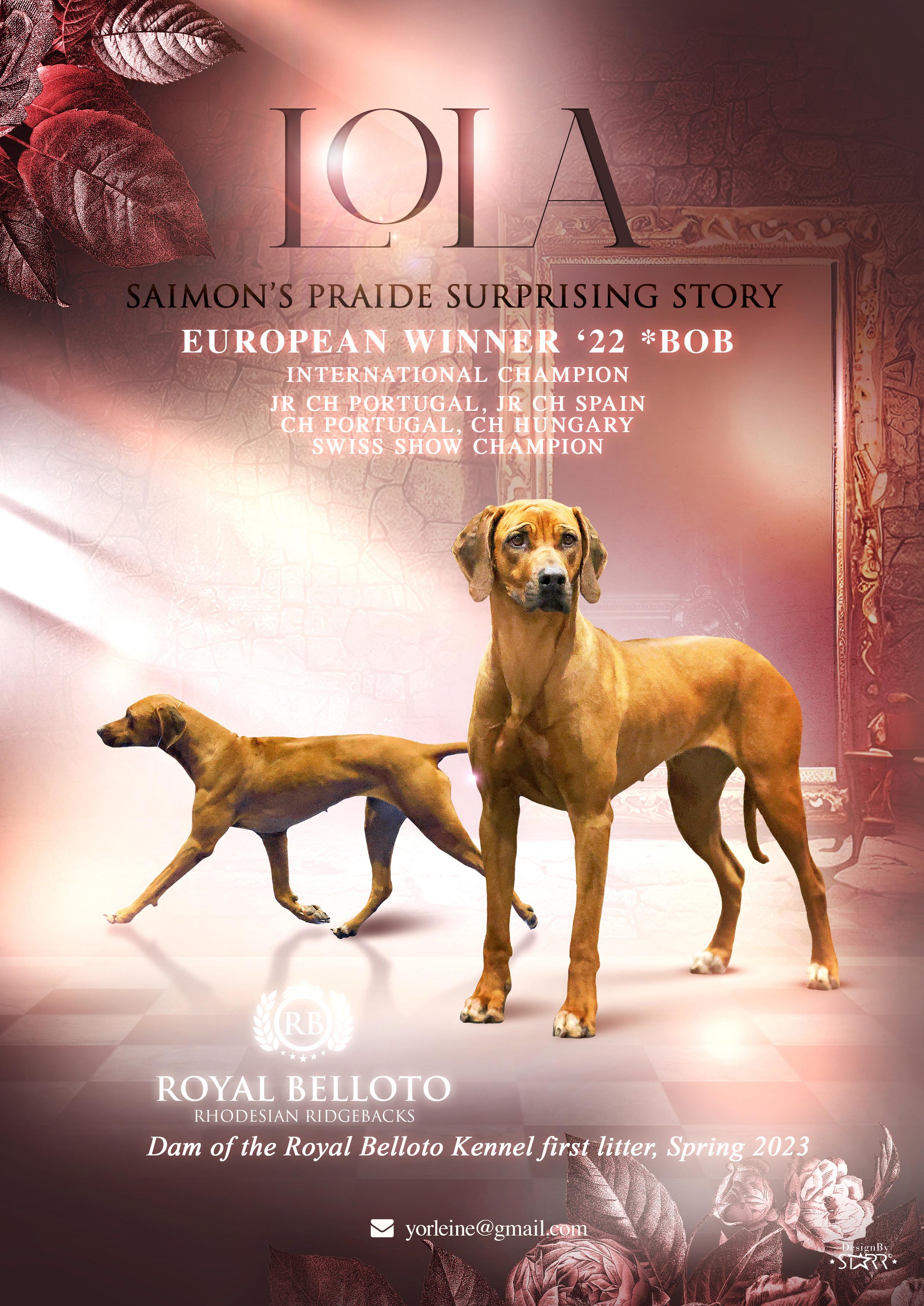




On 14 July 2009, 8 minutes past midnight, our Nandipa was born in the Makololo Kennel as puppy no. 4 of the C-litter, which consisted of five males and three females. What a wonderful gift you have given us, dear Annemarie and Christian! And the word ‘gift’ is also the appropriate meaning of her name: in Setswana, Nandipa means ‘the gift’. We came across the name on one of our trips to Botswana and we knew immediately that our next Ridgeback bitch would be called Nandipa.
Nandipa is a true gift with all of her facets. Starting with the fact that she is a granddaughter of our most remembered Bantu (C.I.B./Int Ch Gomoimba Bantu), she has been enriching our lives for over 13 years now.
She was probably only a few minutes old when Annemarie recorded the first protruding features on her puppy sheet: “ Dainty bitch, very beautiful - resembles Buyuni with Matonga’s chest spot!!!” That too, a gift!
Her mother Makololo Bamuthi wa Binti Buyuni and her grandmother Makololo Analia Amatonga have a permanent place in our hearts. They were such wonderful bitches!
The petite bitch became the Makololo combat munchkin. Undaunted, little Miss Red faced all the challenges of the puppy garden - her first big world.

The combat munchkin grew into a very pretty bitch - never very
big, but with an all the bigger heart. She became a combat smoocher, a rocket on the agility course, a successful show bitch, a wonderful breeding bitch – she is the dam of our C, D and E-litter - , a sovereign nurturer and coach for her own and for so many puppies in the puppy school, a gifted tracking bitch, a happy, affectionate and truly amazing life companion in all situations.
Her poised nature has also made her the doyenne of the Umlani and Makololo pack. She naturally assumed this position immediately after
the death of her mother Buyuni - and to this day no one has ever challenged her.
And today? Noticeably greyer now, she is still cheerful and affectionate, but of course much calmer. Yes, even sensible - who would have thought that! She still likes to accompany us on short walks and still controls her territory carefully and closely. She is and remains the boss!


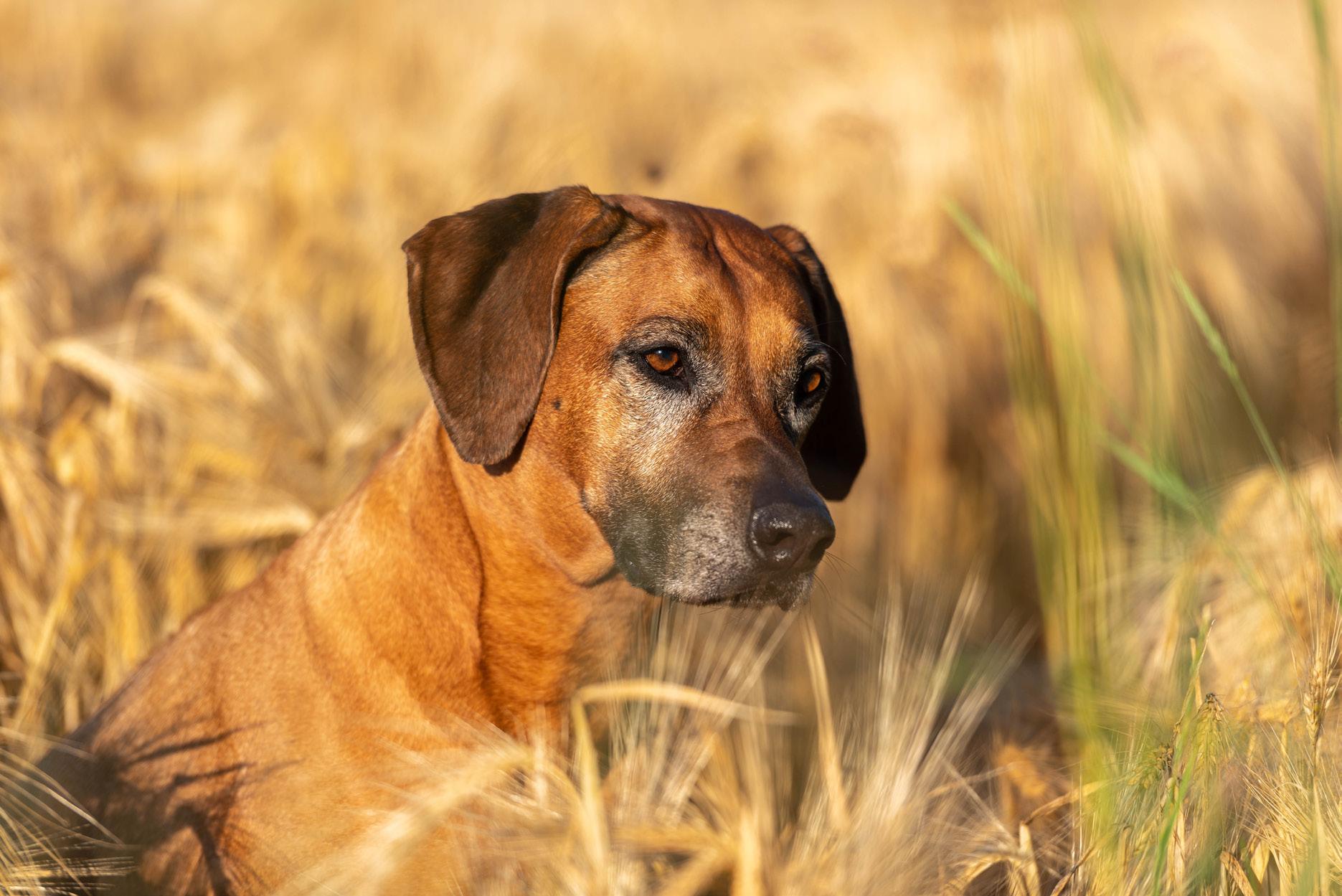
Dear Nandipa! You have been a gift since the day you were born. We are so thankful for every minute we are privileged to spend with you and we wish for many more.
Please stay this happy and healthy for a long time!
We are thrilled to introduce to you four brilliant photographers, they all have one thing in common....they see your dogs through their camera lens.
We have asked some of our favourite photographers some question in regards to their work, read their stories.


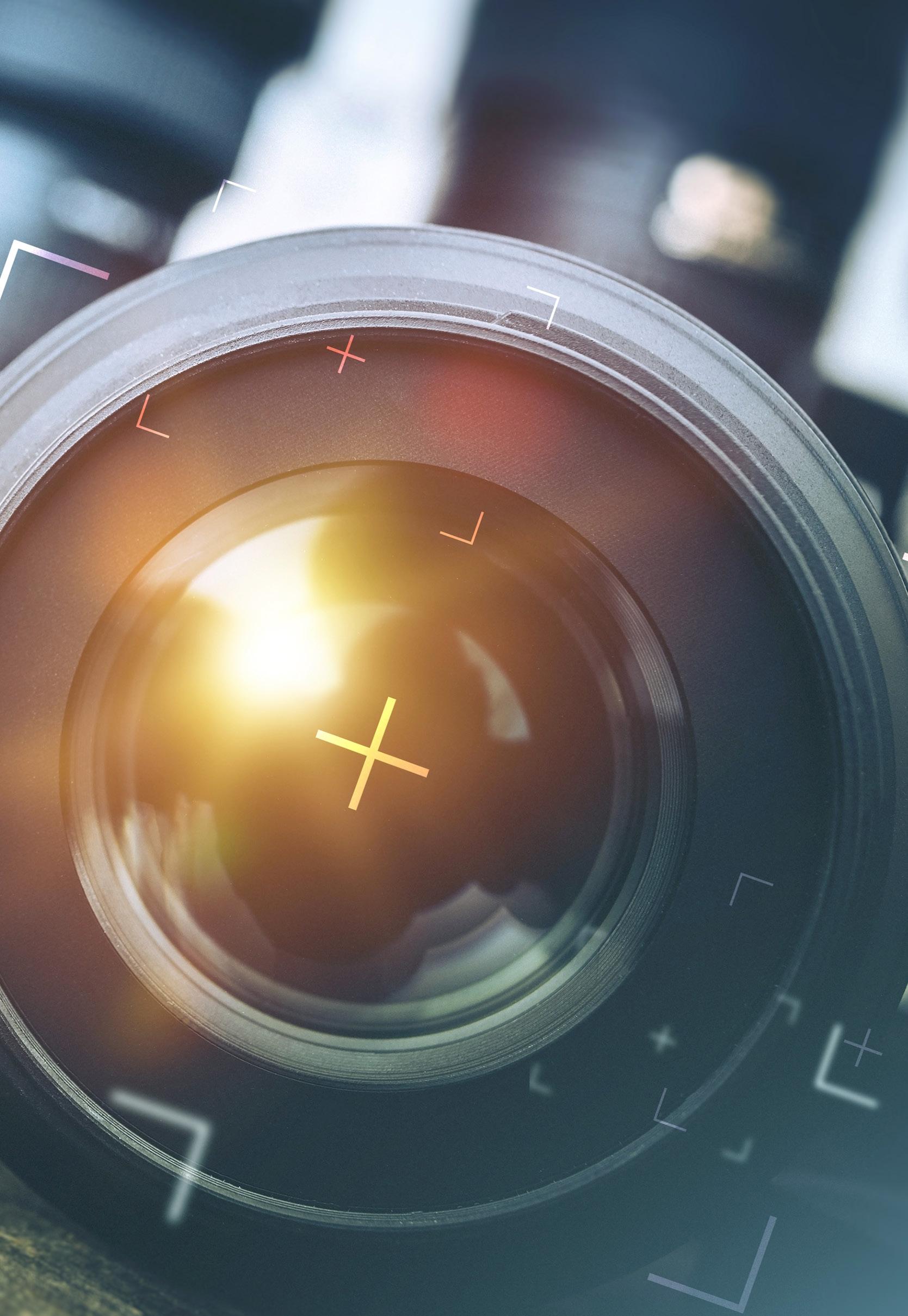
Germany І meifotografie І www.mei-fotografie.com І info.meifotografie@gmail.com
PLEASE TELL US ABOUT YOURSELF. HOW DID YOU COME ABOUT BEING A DOG PHOTOGRAPHER AND HOW LONG HAVE YOU BEEN DOING IT?
My name is Meike Meissner. I live(d) with my 12-year-old Rhodesian Ridgeback female Dafina (called Finchen) and my little daughter in the middle of Germany, north of Kassel in a very green and natural environment.
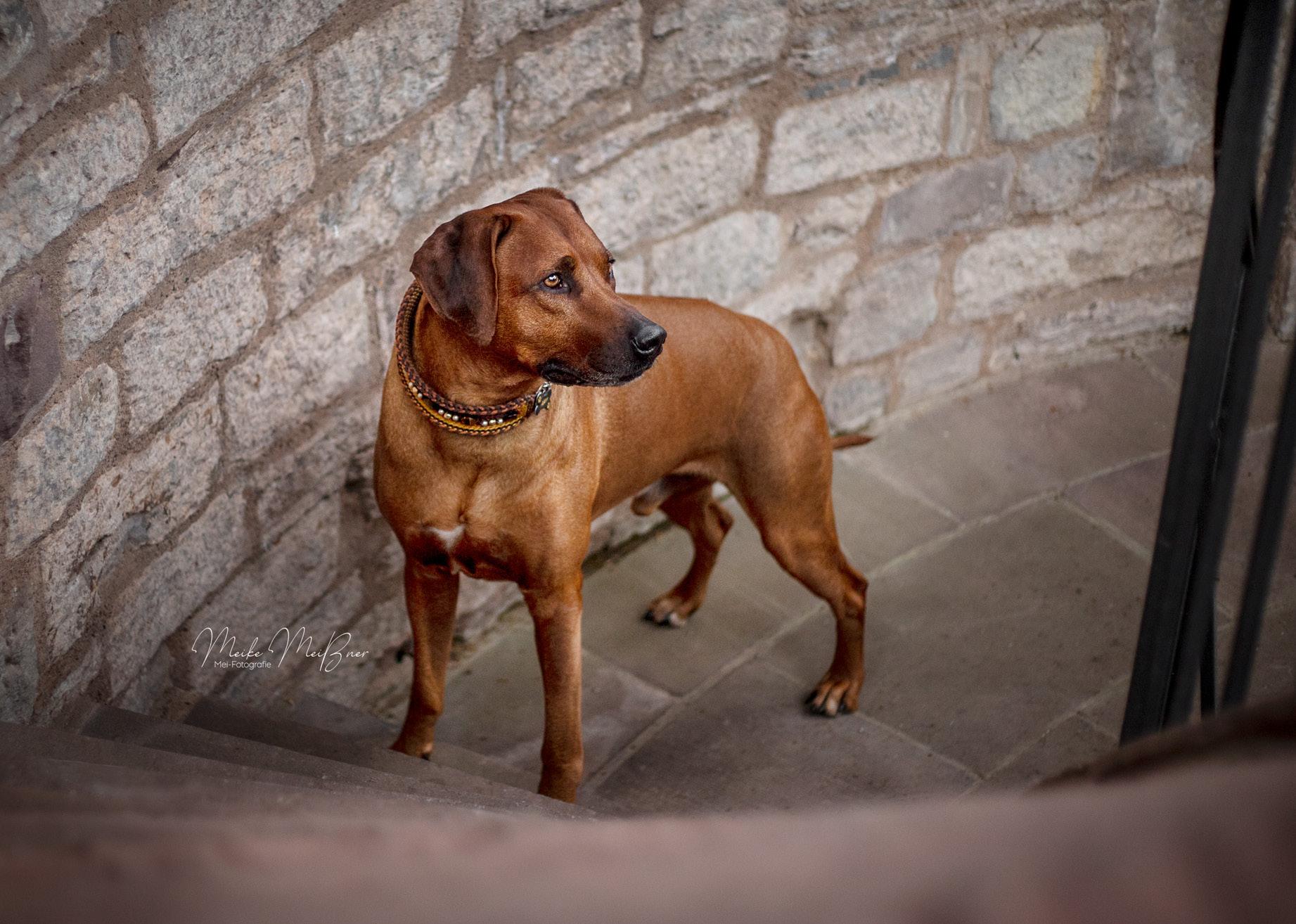
11 years ago, Dafina entered my life and from then on, I could not stop taking photos of her. I loved to capture her athletic movements and her special expression in pictures. Unfortunately, at first, she did not like my camera the way I liked my camera, so she loved to look in the other direction or used to come towards me as soon as I knelt down. Toys? That was beneath her dignity. In this way she was the best teacher I could have wished for as a dog
HOW DID YOU FIRST ENTER THE PHOTOGRAPHY WORLD? DID YOU HAVE FORMAL TRAINING? HOW LONG HAVE YOU BEEN A PHOTOGRAPHER?
In fourth grade I won a simple analogue camera. This was when I became fascinated by the ability to save certain moments in pictures. About 10 years ago I got a second-hand and broken digital camera and this gave me a completely new input on taking photos. While walking with my dog, I asked other dog owners if I could take some pictures of their dogs. In this way, I taught myself both
how to take better photos and how to work with photo software such as Lightroom and Photoshop. Over the next few years, I took part in different training programmes, trained myself via videos on YouTube and tried to improve bit by bit. I started “meifotografie” a few years ago, but mainly just for fun. I always had only second-hand equipment and the main problem was to get a sharp focus. That often made me doubt myself and I did not have the confidence to offer any photo shoots. Mid-June this year, I finally bought my first brand new camera and what can I say, what a difference in sharpness and what fun it is to take pictures again.
Over the last 3 years I was using a Canon Eos 6d Mark II. My brand-new camera is a Canon R6. My “always on” is the Sigma 70-200 Sports. As I mostly take photos of dogs outside, most dogs are moving, and this lens is perfect for that. For portraits I sometimes use the Canon 85mm 1.8.
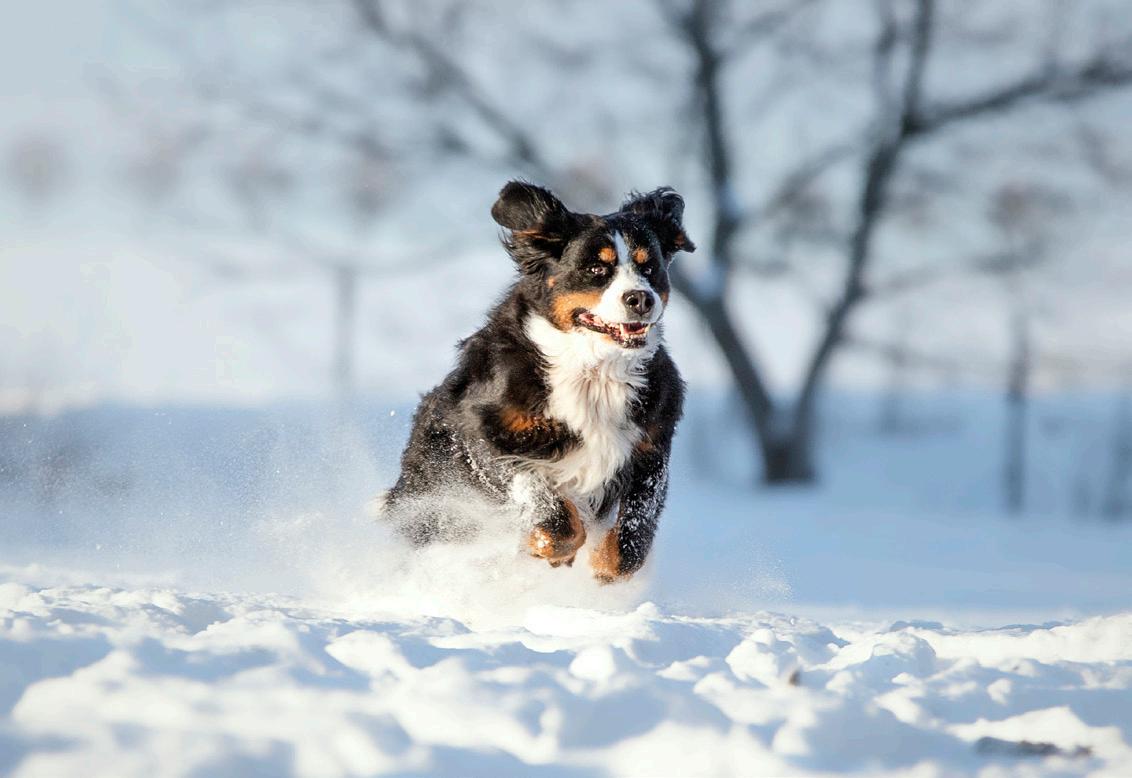
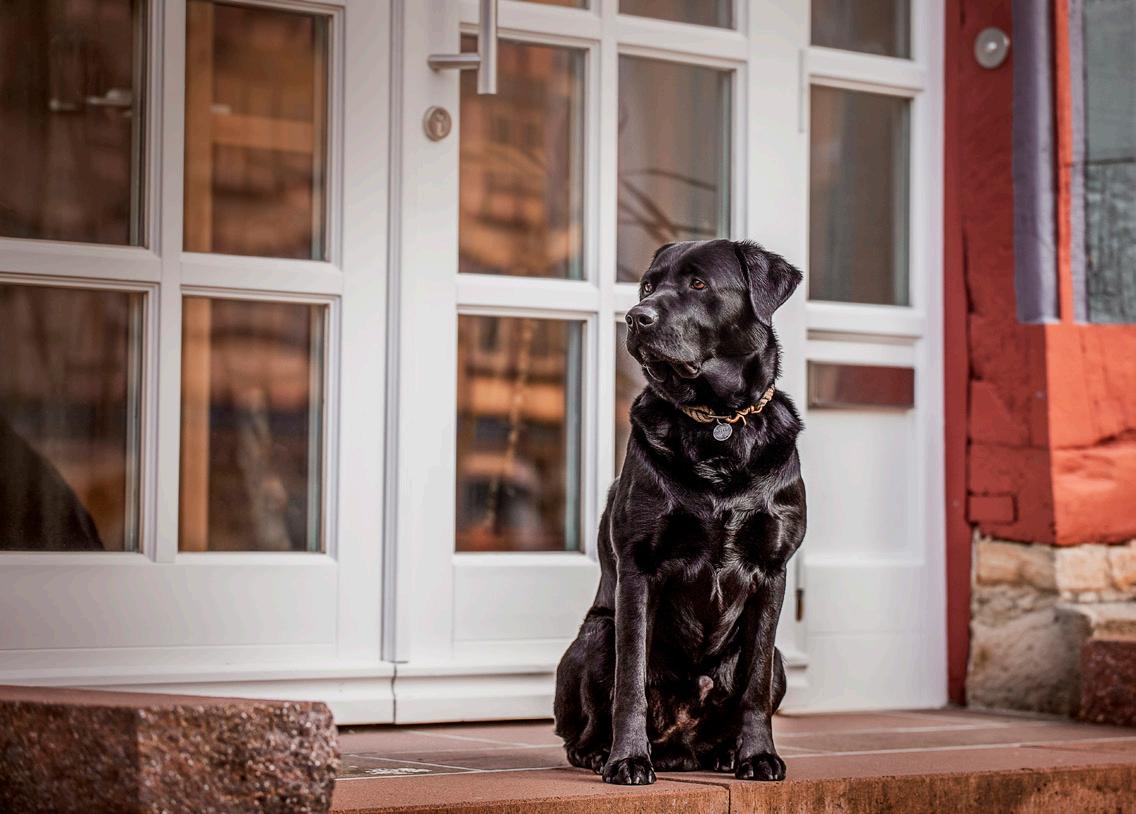

Instagram and Facebook offer a variety of good inspiration from great animal photographers, but I often lack the time to read through all these interesting profiles.


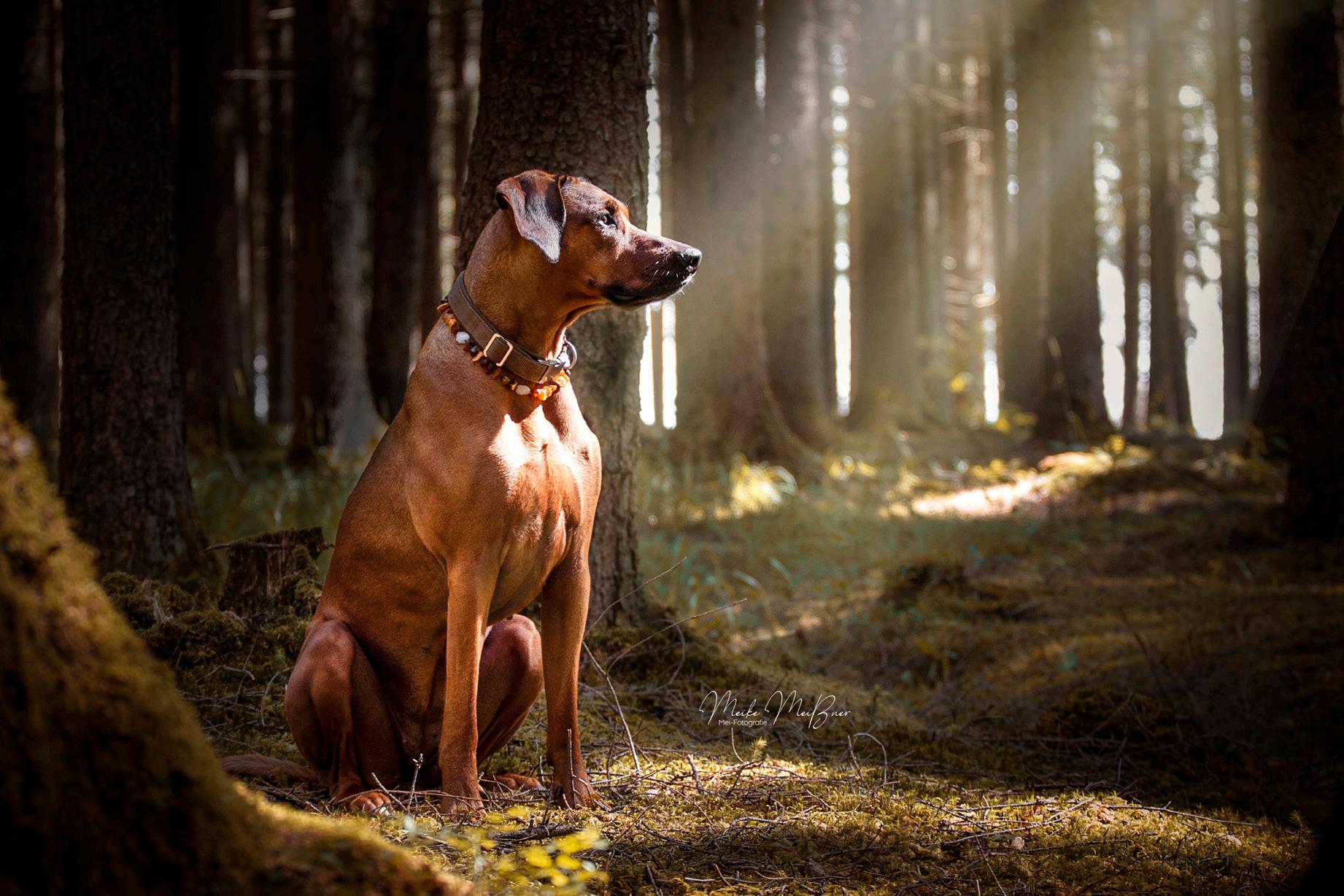
Dog/animal photography is definitely a very challenging job, though most challenging for me are the pet owners. Often, they want their dog to stand in a certain position, or to show off all the tricks they can do. The owners often think I expect absolute obedience from their dog, and often they become nervous if the dog does not behave the way they want him to behave. I try to concentrate on the dog and try to give the owner little tasks so that they are not too focused on their dog. My expectation of myself is to photograph the dog in such a way that its character is reflected in the best way possible. Extra yummy treats and toys can help
to get the attention or a nice pose of the dog, but I have often had dogs in front of the camera that were neither interested in treats nor toys.

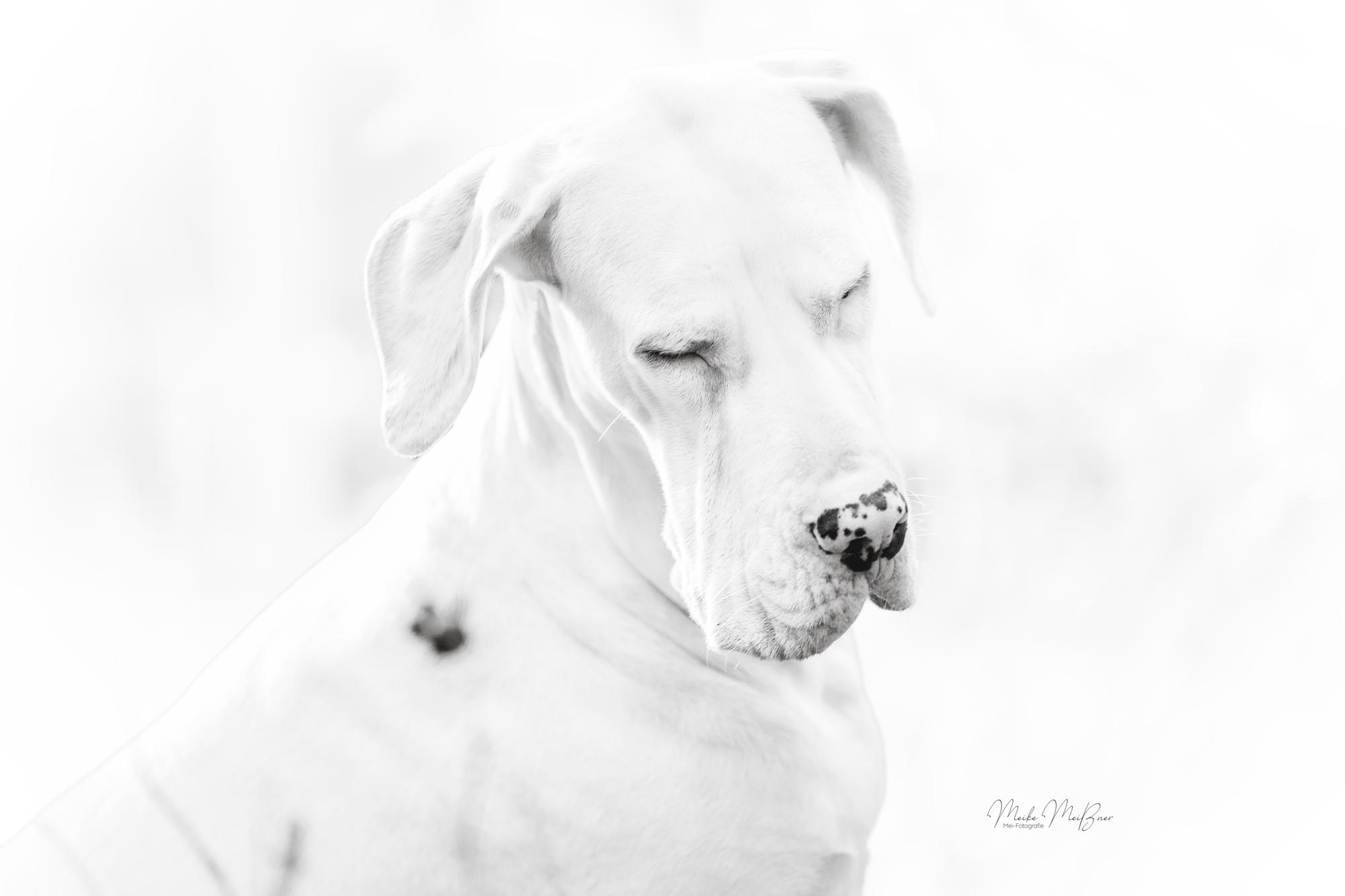
Also, as a good dog photographer you have to be able to read the dog language, what could happen next when the dogs show certain signs. This also means you have to remember to give the dog a rest every now and then when its concentration wanes. Since I take photos outside, you cannot always plan well in advance, as you can’t always predict the weather.
I love to be independent and work outside, no matter what the weather is like (well, my dog never went out when it was raining, too windy or too cold). Dogs are my passion and I love catching the right moment. Definitely, that is the most challenging.
DESCRIBE A TYPICAL SESSION FOR US.
Each session is as different as each dog and its owner are different. Depending on the dog and what kind of photos the owner wants to have taken - portraits or action - I try to find a location that suits the dog. First, I let the dog engage with me and my camera. Some dogs may be a bit scared of the large and dark lens which is pointing at them. The owner then gets involved with the way he/she wishes to put the dog in the right position or to animate the dog to run, jump, look,...
Mostly I concentrate on not forgetting to change the camera settings if the dog is moving or the light changes.
I always scan the area to see if there are nice spots which will create special photos.
As an owner of a Ridgeback I love to photograph Ridgebacks and capture their elegance and athletic speed, the expression on their faces. But I cannot say that I have a favoured breed. Puppies of all breeds are most photogenic for me.

There are several photographers in Germany, and from all over the world that inspire me; these are not only dog photographers, but also many horse photographers.
For me Claudio Piccoli is the best photographer for dogs in action photos and I would love to participate in one of his workshops one day, and also Anne Geier and Mareike Konrad are great dog photographers.
For the beginning you do not need new equipment. First, try to practice at every opportunity, with dogs, animals, the landscape,... to become familiar with the camera, with different light and weather conditions. When you are sure you really want to go deeper into photography, I would advise you to consult professionals and to invest in new equipment. I myself used second-hand cameras for years and was never really satisfied with the quality of the photos, so I had to spend a lot of time editing.
DO YOU HAVE ANY PETS OF YOUR OWN? AND WHAT IS YOUR FAVOURITE
For almost 12 years I had my Rhodesian Ridgeback Finchen, who has just died during the days I have been doing this interview. Currently my pain about the loss still is too big but I am thinking about getting a Ridgeback in 2023.
In addition, my daughter has 5 Guinea pigs.


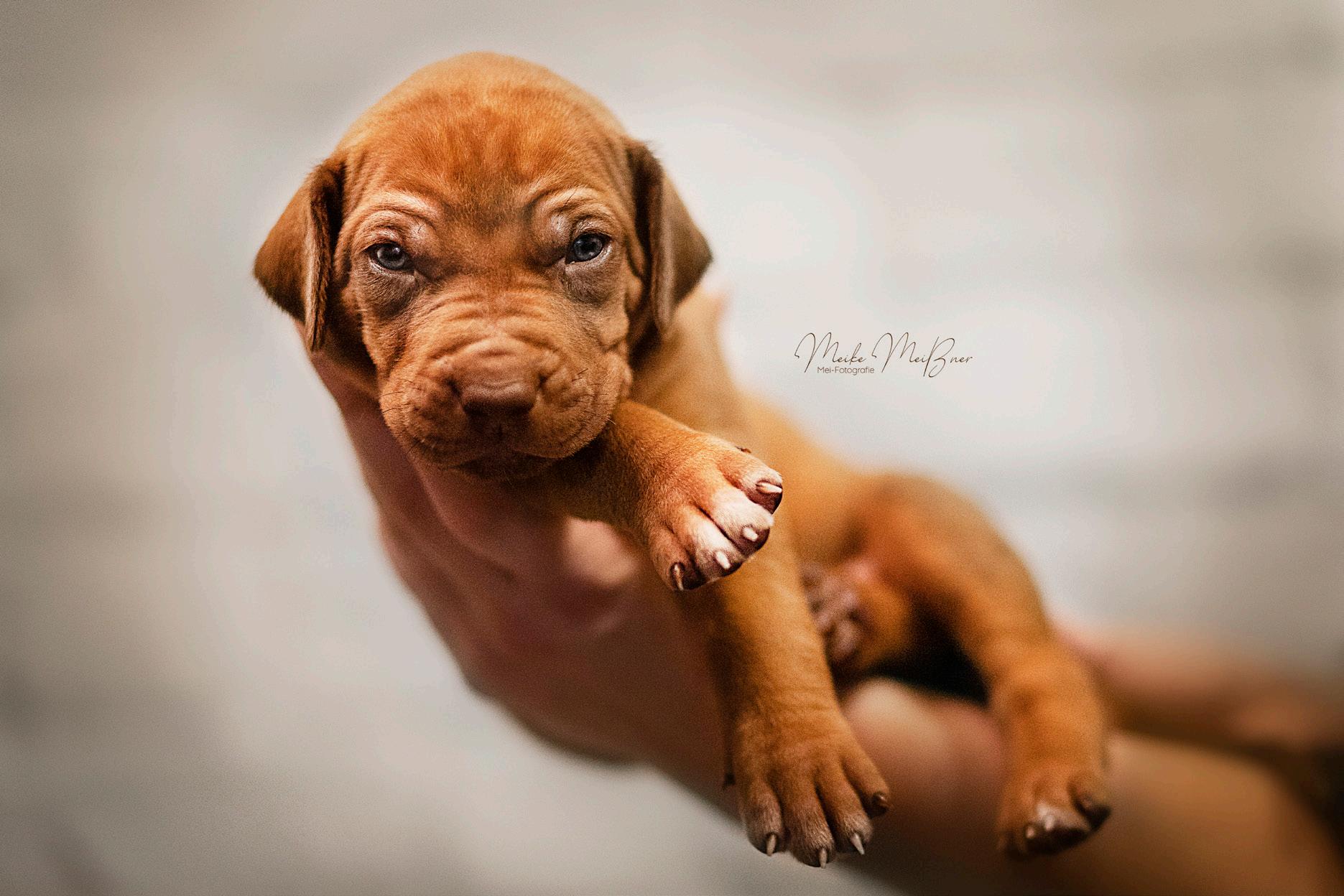
Yes, a big thank you for the invitation to introduce myself in your magazine!
Photography is becoming more and more popular. I have made some really good friends and received lots of help within the photographers’ community. But I also had to experience a lot of envy and resentment and bitchiness among female photographers which made me quite sad. Everybody has the same interest; photography is becoming more and more popular, and many people think they can offer shoots when they own a digital camera. There is a kind of fight between those people who offer really cheap shoots, as they do it just for fun, and professional photographers, who are really dependent on orders. Personally, I would place myself between both worlds. I am more of a semiprofessional, so I understand both points of view. I wish that people would show more understanding for the needs of others, to work together and help to keep this beautiful job the way it should be, independent and fun.
Czech Republic І nath.ktkv І natykoutkova@seznam.cz
My name is Natálie, I was born in Czech Republic and I live in Karlovy Vary. I´m currently studying at high school in the field of social work. My hobbies are activities with my dog as a recreational Canicross, walks and short trips and of course, dog photography!

HOW DID YOU FIRST ENTER THE PHOTOGRAPHY WORLD? DID YOU HAVE FORMAL TRAINING? HOW LONG HAVE YOU BEEN A PHOTOGRAPHER?
I always loved taking photos! Mostly of animals, even with a phone. Birds, cats, dogs, flowers, everything I’ve encountered. I tried to look for good angles and perfect moments. It was a kind of relaxation for me. I have never been really good at sports, math and similar things but I always adored painting, drawing, photography… Activi-
ties in which you can express yourself, show your creative mind and ways of your thinking.
I´ve never had any formal training of how to manage your camera, settings or “how to shoot”. In March 2021, I participated in a Ve Shandor´s photo contest in which I won an online coaching with her. I really recommend getting one, especially from Veronika! She is super sweet and she taught me a lot. Needless to say, it really motivated me to go deeper into photography.
I got my first Nikon DSLR in November 2018, but I really wouldn´t label myself as a photographer back then. My photos were of random moments, the editing was mostly unreal and to be honest it didn´t look good since I was experimenting with random apps to see which one suits me the best. At that time, I was still editing on my phone using free downloadable apps and I didn’t start using Adobe Photoshop until November 2020. Not to mention that I was still trying to find my own style
that complimented me. My main model was my dog named Black and it was him who taught me the most. I´ve been offering photography since August 2021 so I would say I started to take photography seriously after the online coaching with Ve Shandor because that’s when I first thought “Wow somebody actually likes my work! Maybe it isn´t as basic as I thought?”

It all started with my dog Black. He is a German Shepherd with a beautiful black coat. He is most probably mixed with some other breed since he isn´t from a kennel but his characteristics are the same as those of a German Shepherd. We formed a strong bond since the very beginning when I got him and thanks to that we have come a long way to where we are now. And of course you want to have some memories of your friend! So, if someone were to open my photo gallery, Black is all they can see. Same thing goes to my Instagram account and that’s when I realized he also needs an account dedicated to only him. You could say I basically made him his own modelling account. I was fourteen years old when I started to want a proper camera and it was really hard to save money for that thought to become reality, since in Czech Republic you can have a part time job only after you reach the age of fifteen. I mostly helped my godfather with gardening and then I saved money for a Sony compact. It was a good model but I quickly realised that it´s still not enough for me. My brother’s wedding was around the corner at that time, and I had a chat with my godfather´s daughter where we talked
about photography. She said that she has a Nikon camera but she isn´t using it. So, she simply gave it to me as a gift. After that I didn’t switch brands. That´s how I became a “Nikon photographer”! My liking for Nikon continues to this day. The only thing I change are older lenses for new ones.
Naturally, with some time Black´s Instagram started to gain more and more followers. Some people actually contacted me, saying that I have really interesting photos which they like and are willing to meet me with their dogs for a photoshoot or two even though I´m nowhere near the place where they live. That by itself was really heart-warming and inspiring in some way. It definitely made me think that I can try to offer my work. So, in summer 2021 I posted a story on Instagram, saying that if someone is interested in my work, they can have 5 to 10 photos of their dog for free. I definitely needed their feedback because I knew that it’s a big difference when you photograph your own dog or someone else´s. I had two offers and the feedback was great! It really motivated me and I started to offer photography for a nominal price. Dog lovers started to recognize my name and thus the busy months of photoshoots began. To sum it all up I started as a seventeen years old student, all thanks to my own dog´s Instagram.
WHAT TYPE OF CAMERAS DO YOU SHOOT WITH? WHICH IS YOUR FAVOURITE LENS AND WHY?
My collection isn´t really big. Now I have Nikon D5600 and Nikkor lens 85mm 1.8 and 18-200mm
f/3.5-5.6G. For a photography session I only use set of Nikon D5600 and 85mm lenses. Since the 85 has a better quality and nice bokeh. Next year I want to add sigma art 35mm or 24mm.
WHERE DO YOU FIND INSPIRATION?
Movies, series, books, other photographers, or even some quotes! Sometimes I use photography to express my emotions or struggles. When I feel like I´m caught in some tiring routine, I´m usually doing fantasy photos. I mostly used themes like Game of thrones, anime Naruto, viking/warrior themes, Harry Potter or just some magic and fantasy which I always adored. When I´m feeling burnt out, I scroll on pinterest looking for themes of warriors, Vikings, witches, dragons and things similar to that.
DO YOU CONSIDER IT A CHALLENGING JOB? HOW DO YOU GET THE ANIMALS TO STAY AND “POSE” FOR YOU?
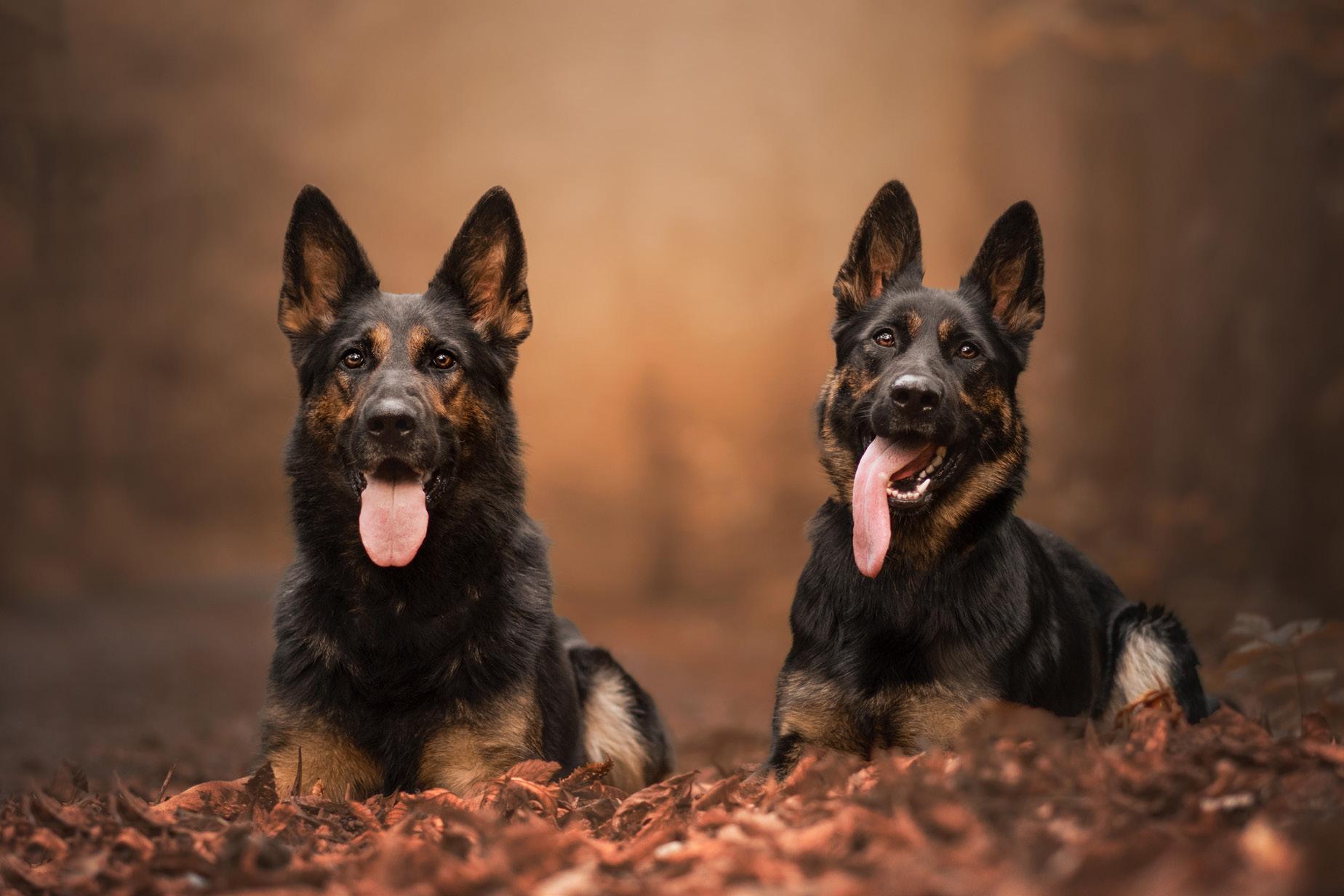
It´s definitely challenging, more so if you’re a shy person like me. You have to communicate with the owner of the dog, ask them what they expect the dog to look like in the picture and help them with what they chose. You have to recognize when the dog is getting tired or when your idea is simply unrealistic. When the dog needs a break, then you must take a break. It´s not good to rush things so when somebody books a photoshoot I´ll make sure that I have a free evening that day. About posing, dogs that usually came into my photoshoot know how to stay in place. But about puppies, you have to be fast! It´s mostly about practice and timing. Sometimes I tell the owners
to stay behind me and jump. Some owners are really creative and they make squeaky noises.
WHAT IS THE BEST PART OF BEING A FINE ART PHOTOGRAPHER? AND THE MOST CHALLENGING?
The best part is that I can use photography and especially photoshop to express myself. When I was younger it felt like no one really understood what I felt or what I meant and pictures are a wonderful way to express your feelings or desires. During photoshoots for my clients, I can´t really express myself in that way, but when I take photos of my dog Black, well that´s another case! I love to experiment. What really inspires me are dragons, Game Of Thrones and magic. So, Black has a few pictures with fantasy elements. For the challenging part. It has to be when I´m completely out of ideas or when I start to compare myself with other artists. If there is anything I´m really afraid of is a burnout syndrome. But the feedback from my clients is what keeps me going!
DESCRIBE A TYPICAL SESSION FOR US. WHAT KINDS OF THINGS ARE YOU THINKING ABOUT WHEN YOU’RE BEHIND THE CAMERA?
When the client comes to a meetup place, we take a little walk. Because the dogs are usually a bit hyped or unsure of the new place so they have some time to calm down and I can talk with the owners about their dogs. I´m trying to make photoshoots feel like as if you’re meeting with an old friend of yours rather than a “formal” meeting where you’re usually serious or holding back. We always talk about dogs and sometimes even
about other topics. I would describe my photoshoots as a walk with occasional stops to take a photo and chitchat. I´m always trying to create a friendly atmosphere. Fun fact, most of the time clients are shocked when they see me. I don’t really know why but they always expect someone older so I believe it has to be quite shocking when they see an 18 years old girl with a Harry Potter bag with a camera instead of someone who is about 25-35 years old with heavy photographer´s gear. It always makes me smile. When we are done with the photoshoot, I select some of the best photos and send them to the owner so they can pick the ones they like, and I edit them in photoshop.
My thoughts behind the camera? It really depends. But mostly when I have my camera in my hands I just focus on settings or posing of the dog. My goal is to take the best picture possible at that moment. Or I advise the owners how to pose the dogs or how to make them interested or look the way I want.


Australian Shepherds. When somebody books a photoshoot and tells me that they have an Australian Shepherd I already know it’s going to be an easy session. And to be honest, Rhodesian Ridgebacks caught my eye and I had only two to photograph! But every dog has a pretty angle, I mean, it´s a dog! Every single dog can have a pretty photo! But the best model of them all? My Black. He trained with me since I´ve gotten my first camera so he knows how to stay in place, focuses on me and he is just my supermodel!
ARE THERE OTHER DOG PHOTOGRAPHERS THAT INSPIRE OR INFLUENCE YOU? IF NOT, WHO OR WHAT DOES?

Lately I’ve been trying to get into my very own style so I don´t follow many photographers on social media. To be honest I know only few photographers from Czech but I really like the style of Ve Shandor, Sebastian Schoppe and Natalie Große. Their unique style has a special spark that’s able to catch your eye.
IS THERE ANY ONE THING YOU WISH YOU HAD KNOWN OR PIECE OF ADVICE YOU WOULD GIVE TO AN ASPIRING FINE ART PHOTOGRAPHER?
Try new things and go for it. Don´t stay at one place and keep moving forward. If you make a
mistake or something doesn’t go according to your plan, keep your head up and learn from your mistakes. Don´t fall into a routine if you don´t want to experience burnout too soon. Also try to take pictures of new places, find good angles and poses. You can include all this and travel but don´t forget to rest. Especially if you are a beginner, don´t be sad because of comparison of your work and some professional with years and years of experience! Just keep going, practice is the way!
I would make sure to start with a well-behaved dogs so you have the time to set up everything you need, especially your settings, if you´re inexperienced and don´t have an idea, it´s good to take photos from a different angles. One place can give you so many opportunities, just give it a try! Always communicate with the owner, and shoot! It´s good to know theory of course, but without practice you won´t be really successful.
I have a cat and a dog. My cat´s name is Chiko and he is the most unphotogenic 12-year-old cat I have ever seen. Really, he absolutely hates to be photographed. My dog´s name is Black (as I already mentioned earlier) and he is a German Shepherd crossbreed. I could talk about Black for hours! I can say that he literally saved me. I always felt like I didn’t belong anywhere, like my
interests are way different from activities of my peers. Because of Black I bought my first camera, I started to take photos, look at things differently, I changed my social circle, because if the people couldn’t stand my dog, I knew they just don´t fit into my lifestyle. As I said in the beginning, I was always bad at sports. Like totally horrible! Well because of Black I started to do canicross just recreationally, but still for me it was a big step and I was honoured I could take that step with Black by my side. We even participated in two cross country runs, where we ran around 5km route with obstacles and mud. We even had the chance to swim together. The race is similar to Hard Dog Race if you ever heard about it. Next year we plan to attend another 5 km race like that. Regarding my favorite animals it has to be a wolf and a fox. Don’t make me choose though! I can never decide which one I like more.


Thank you for the opportunity of doing this interview. It’s been a really nice experience to actually sit down and write my thoughts about photography. I´m even more grateful that I can do what I really want to do. I’m currently taking a break from photography because I’m graduating in a couple of months so I consider this a successful ending for this photography year.
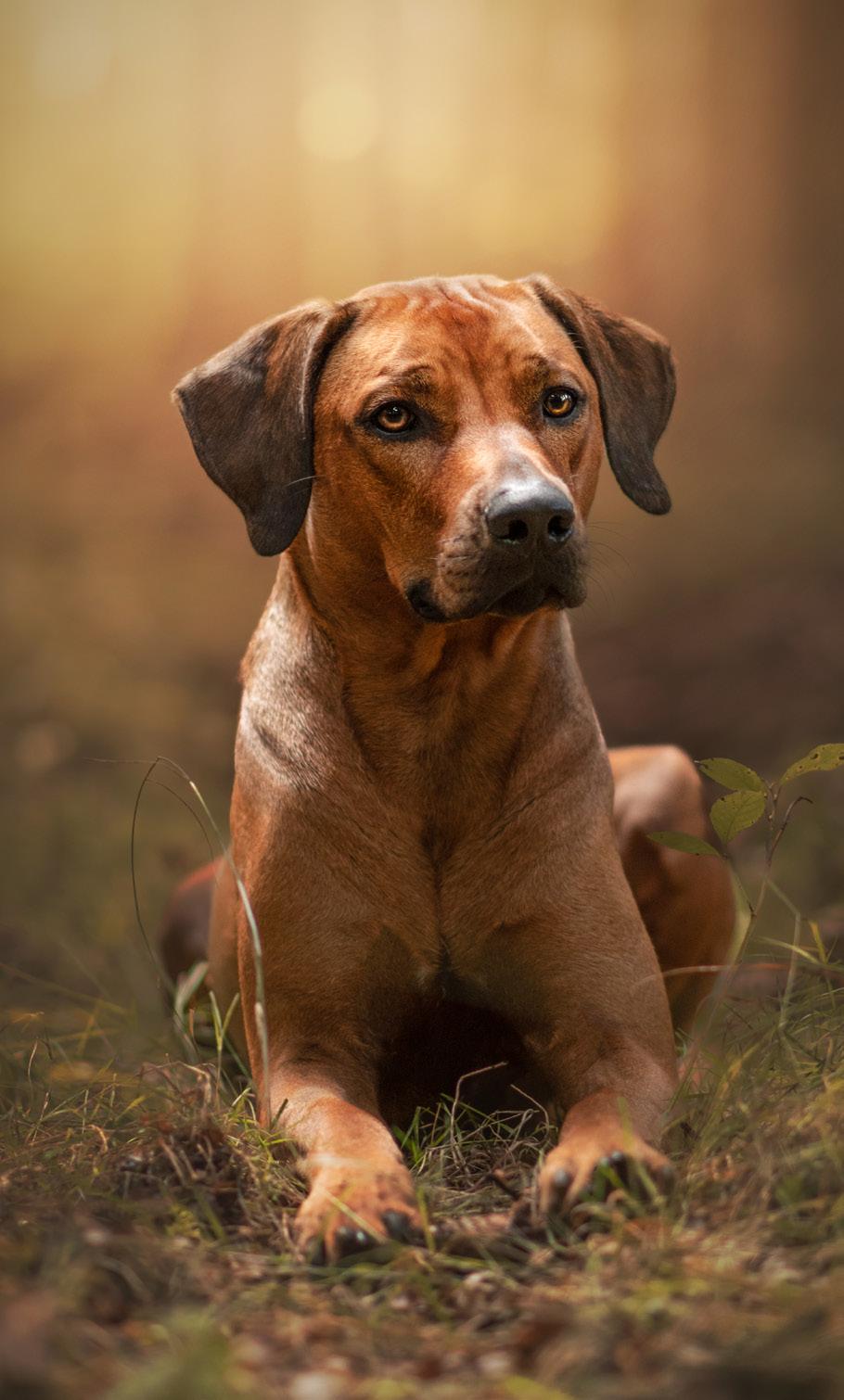
Switzerland І Nathalie Anselmini Fotografia І www.nathalieanselmini.com І nathalieanselmini@hotmail.it
PLEASE TELL US ABOUT YOURSELF. HOW DID YOU COME ABOUT BEING A DOG PHOTOGRAPHER AND HOW LONG HAVE YOU BEEN DOING IT?
Hello everybody!
My name is Nathalie, I am 33 years old and I live in Chiasso (Ticino, Switzerland) with my husband and our 4 dogs.
I have always had a passion for photography and the world of images in general, in fact, this led me to study visual communication at university and obtain a bachelor in arts degree.
With the arrival of my Border Collie Easy, 9 years ago, I became really passionate about Dog Photography. He immediately became my favorite model, I taught him tricks and poses specifically for photos (for example holding objects in his mouth) and thanks to him, I wanted to improve myself more and more, attending specific courses and workshops about dog photography.
In the beginning, I started taking photos only of my dogs, then of friends’ dogs, then more and more acquaintances and finally also other people were interested in having their animals photographed by me, and at that moment I realized that my greatest passion could have become my job!
HOW DID YOU FIRST ENTER THE PHOTOGRAPHY WORLD? DID YOU HAVE FORMAL TRAINING? HOW LONG HAVE YOU BEEN A PHOTOGRAPHER?
I attended my first workshop dedicated to Dog photography in 2016 in Italy and I have never stopped since that time! It was a continuous study, watching tutorials, experimenting and shooting to get a lot of practice! My university studies also helped me, I studied “visual communication” and I also studied photography there, which was obviously my favorite subject!


For me it was natural to start photographing dogs, having my dogs at home, attending dog centers to train Agility. I have always been surrounded by dogs, on weekends during the competitions for example. I live surrounded by these beautiful animals, so it was inevitable, it is my environment and my world!
I started photographing dogs especially thanks to my Border Collie Easy, my biggest source of inspiration. Then without any doubt, I must credit my “teacher” who helped me to enter in this world and taught me a lot: Claudio Piccoli.


Thanks to Claudio’s teachings, I became more and more aware, and he helped me to take the jump in quality, something that I could have never done by myself!
WHAT TYPE OF
DO YOU SHOOT WITH? WHICH IS YOUR FAVOURITE
I have always used Nikon, I started with a D3100 many years ago when I was still not an expert and I was shooting like an amateur only for myself, currently I have 2 cameras:
a reflex Nikon D75O and a Mirrorless Nikon Z6II, I love them both!
As for the lenses, I have several ones, for different types of photography, wide-angle and telephoto lenses, but my absolute favorite is the Sigma Art 105mm f1.4. For portraits it is amazing! Bright, sharp and always creates a magical bokeh!
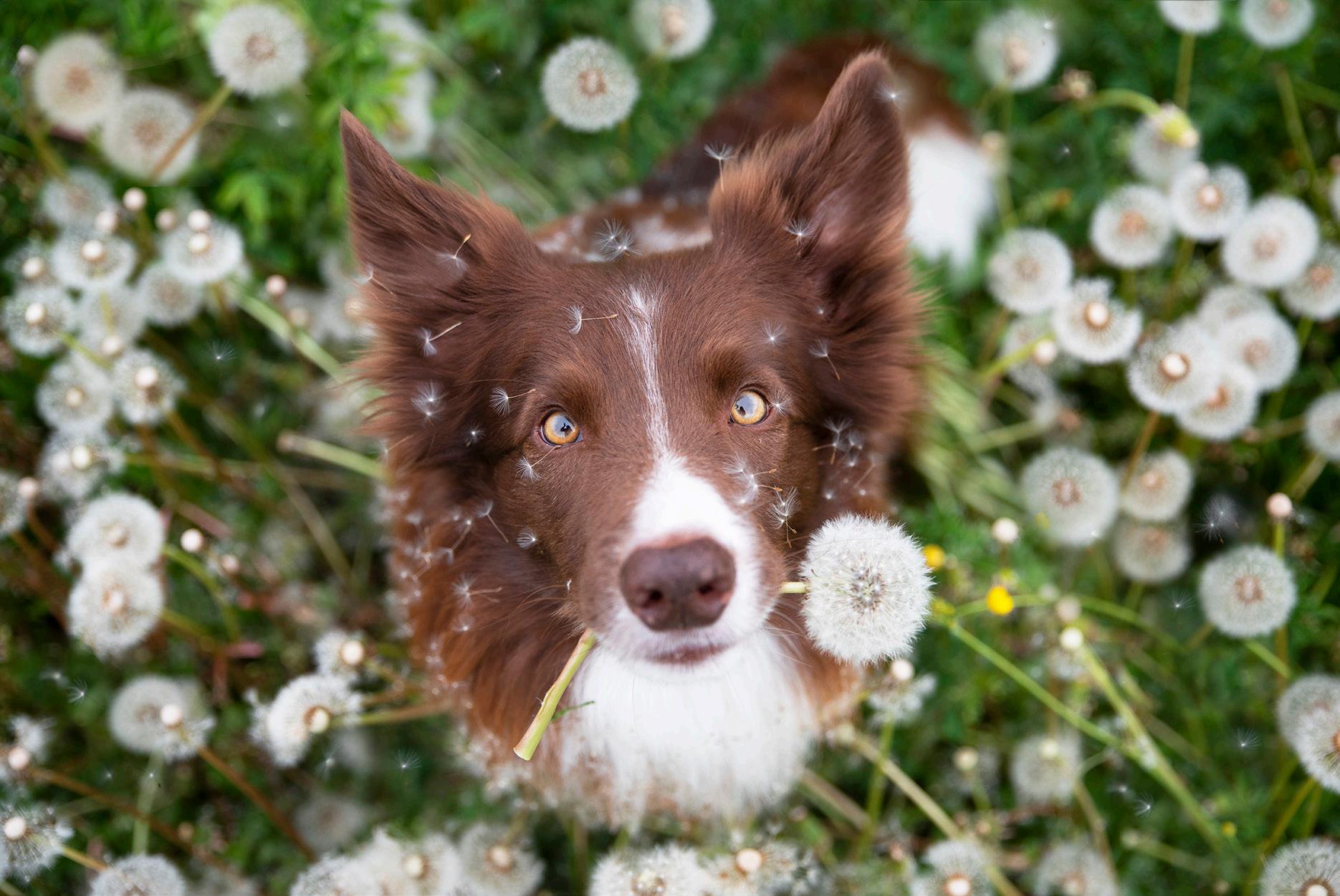
I can use it with great results even with low light conditions and I always get great and high quality results and with an atmosphere that I love!

My 4 dogs are my biggest inspiration every day as well as my favorite subjects. With a lot of patience, they make me experiment with crazy ideas, ideas that I also propose to my customers!

Sometimes I find myself with some of my friends who also own dogs and we go to take pictures of our dogs together for fun, and to find new places and new ideas… And even in this case, they are all ideas that later I propose in photo shooting. For example, we went with our dogs in CityLife or in the center of Milan (taking pictures in the Vittorio Emanuele gallery), wonderful experiences!
However, they are not locations for everyone because considering the great chaos in cities (people, dogs, bicycles, children, cars, noises) it is necessary to have dogs 100% under control, very balanced and calm in these confusing places.

Finally, I also find inspiration from the Facebook photography groups where I am registered and browsing the Instagram where you can find very

interesting photos from which to take inspiration for new projects!
DO YOU CONSIDER IT A CHALLENGING JOB? HOW DO YOU GET THE ANIMALS TO STAY AND “POSE” FOR YOU?
I consider myself a very lucky person because my job is my greatest passion, so I love doing it, I would do it 24 hours a day and it doesn’t affect me at all!
Often, I also bring my laptop on vacation and in the travel free hours I work and post production photos!
I find it a stimulating, exciting and important job ... people rely on me to make eternal memories of members of their family and of their happiest moments, it’s a huge responsibility!
I challenge myself to find new ideas for each person, to stay up to date because the photographic world is constantly changing, trying not to “settle” and not to compromise. For example, I focus a lot on the quality of my images and not on the quantity, I prefer a few well-made photos rather than a lot of “mediocre” photos, obviously this takes a lot of time and energy.
Of course, like every job sometimes it is stressful, I almost never have free weekends and I often work without schedules until late night to post produce and deliver pictures to my clients. I have no longer time to fix photos that I take of my own dogs or my personal photos (for example the ones I took on holiday) because first there are the customers, but I would never change it for anything in the world.
As for the animal poses: There are various tricks to teach the dog to pose, such as making noises to attract their attention or throw something on the ground, but what matters most is knowing how to capture the right moment! Not all dogs are capable of posing, some are very active puppies or old or shy dogs and in that case I take very natural photos respecting the nature of each dog and also poses that are very natural, easy and spontaneous.
Between action photos and portraits I prefer portraits, because they excite me more, but they must be photos in which the dog is comfortable posing and does it naturally, without pressure.
The part I love the most is to describe people’s emotions and stories through my images! Whether its the relationship with your pet, the birth of your child, a marriage, I love that my photos tell a story about emotions!
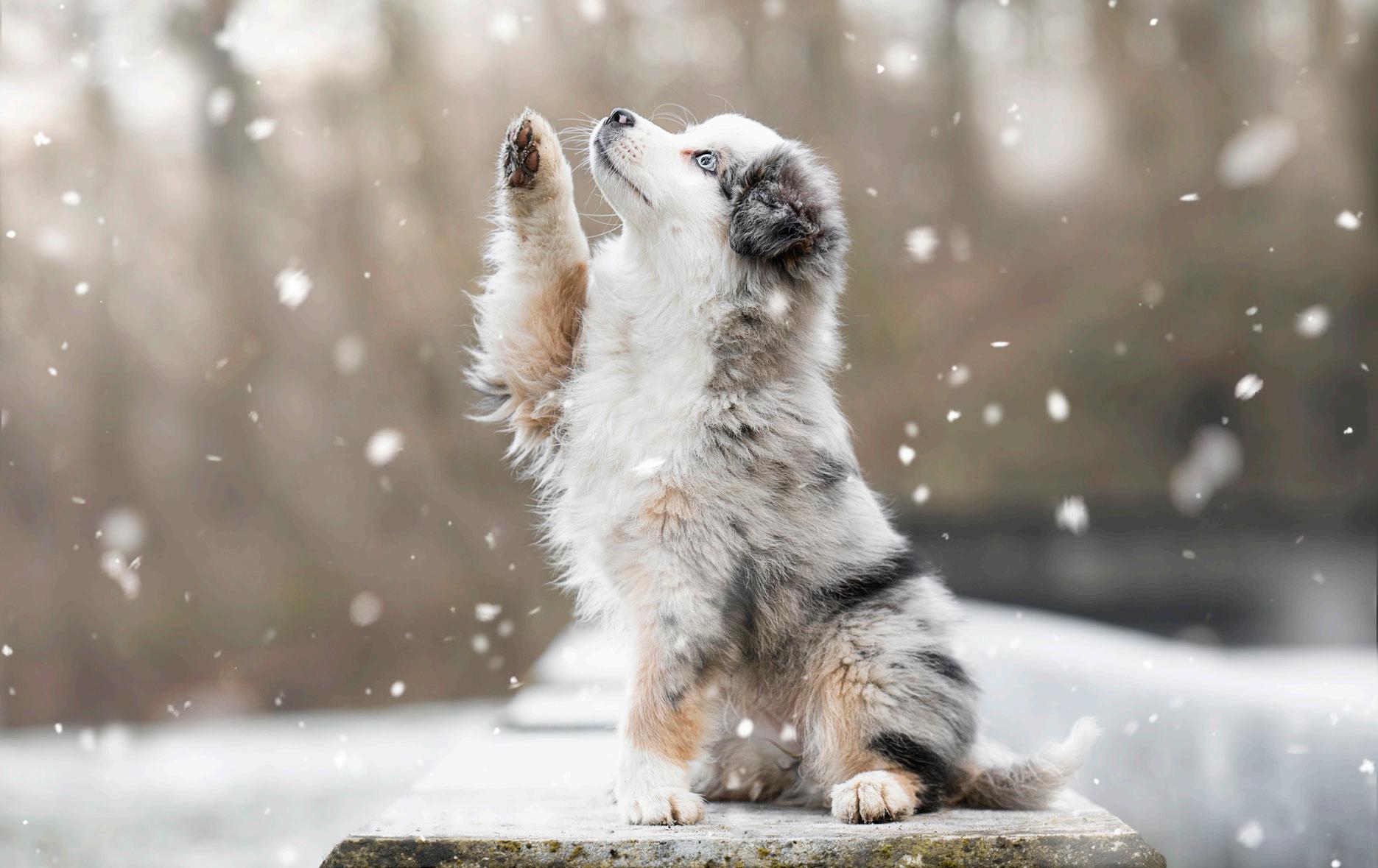
Another thing I love about my job is meeting many different people who all have the love for dogs in common with me! Often a relationship of trust is created between me and my customers and they keep on choosing me to immortalize the most important moments of their life... we start with photos of dogs, then the wedding, pregnancy, the baptism of the baby and so on! With some customers, we have become great friends!
The most challenging part for myself is trying to always find something different and special for each person! Find new locations, think about new poses, new ideas, don’t settle and never stop,
don’t repeat same poses, shooting after shooting, but always give something more and take a step further! Coming home after a photo shoot I want to think “this is the best I have done so far” and so on for each future shooting! This is my challenge! While the least exciting part of this job for me is the time I spend on the computer preparing proofs! I download photos, I examine them all, I remove the ones that are not correct or where there are, for example, closed eyes, etc., and I upload them on the website to make the customer chose only the perfect photos. For private photo shoots it is quite fast, but when I take pictures at big events, dog shows, Agility Dog competitions, I often have to look back and select 8’000 / 10’000 photos taken over a weekend and it becomes a bit boring.
DESCRIBE A TYPICAL SESSION FOR US. WHAT KINDS OF THINGS ARE YOU THINKING ABOUT WHEN YOU ARE BEHIND THE CAMERA?
Generally, people arrive with their dogs and we start walking in the location we have chosen and talk a bit to get to know each other better.

People and especially dogs are not robots, it is not automatic that they feel totally comfortable putting a camera in front of them and so before starting to take pictures, we walk and talk a little to get to know each other.
I like natural poses photos, not forced and above all that in addition to beautiful photos, dogs and owners come back home with a beautiful experience so this initial phase of knowledge is essential.
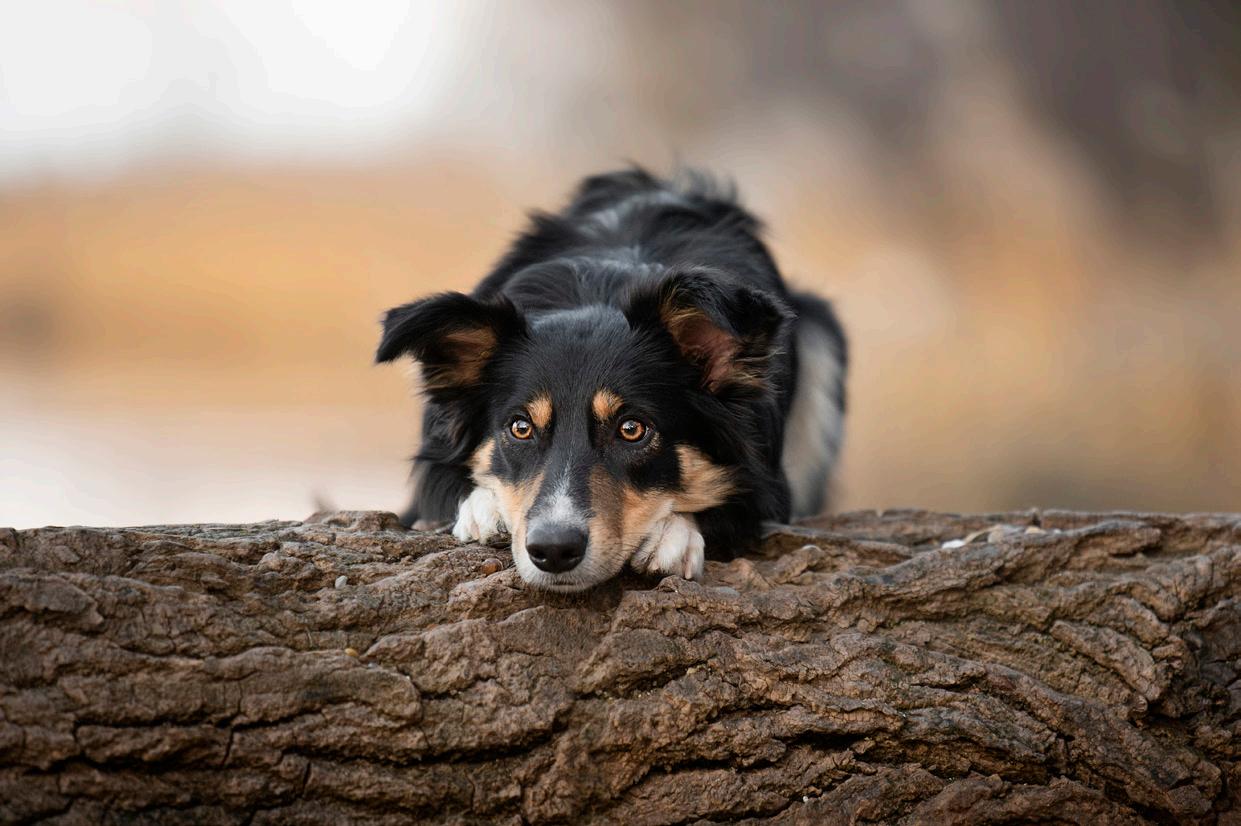
After some time, when I see some suitable places, we stop to take pictures and then we continue to walk and talk until the next stop-shooting.
When we stop for portraits, we put the dog in the position we want and we help dogs with biscuits, treats, often the dogs do not have the “stay” cue or the owner does not feel like letting him free off
leash, in that case dog is kept with collar and leash and then with Photoshop I remove everything (collar and leash) and the dog will look off leash and not tied up.
Usually, it lasts between 1.5 and 2 hours (I never check my watch while I work) and I want it to be a positive experience for dogs and owners. While I’m behind the camera I try to find the right location, the right colors, the right light, the right perspective, but above all I want to describe emotions with my photos, so I try to be a discreet presence, speak as little as possible and capture as many spontaneous moments as possible!
Dogs do not lie and therefore if they feel discomfort it can be seen immediately in photos, from the position of the ears, of the tail, from their facial expression, and the most important thing for me is to portray them in a natural and peaceful way without force.
Photographically speaking, I am in love with all dogs, each breed has its own particularity and expressiveness, and each breed is the most photogenic in the right context! A Czechoslovakian wolfdog will be the most photogenic breed in a forest, a Husky or a Samoyed in the snow, a Papillon or a Maltese in a villa, a Labrador in a location with a lake or river as a backdrop, and so on.
The dog’s look is the first thing that strikes in a photo (even before the pose or the location) and is what gives you emotions (at least for me), so I
generally prefer breeds where the dogs are clearly visible, and not covered by hair or wrinkles for example.
The thick hair enhances the structure and the powerful muscles of the dogs and I really like to see them in a photography, and with long hair, muscles are covered... and then there are the Rhodesians!
Seriously, they are certainly among the most photogenic breeds when it comes to their fantastic colors! Black dogs are often more complicated to take pictures with, especially when they are moving or in action. Rhodesians are beautiful, elegant, proud, strong, intense, muscular, truly a pleasure to photograph!
The first ones I met and photographed were here in Ticino, wonderful dogs of Laura Greco (Hluhluwe kennel), and then I got the opportunity to meet a few others, it is not such a common breed yet, instead in the canine environment that I attend, I usually take pictures to Border collies for the 80% of the time!
ARE THERE OTHER DOG PHOTOGRAPHERS THAT INSPIRE OR INFLUENCE YOU? IF NOT, WHO OR WHAT DOES?

I follow many of my talented colleagues on Instagram and Facebook, I admire a lot of them, one of the many is my “teacher” Claudio Piccoli whom I mentioned earlier in this interview.
There are also many other photographers with
whom I would like to have a workshop to learn something from them, such as Natalie Grosse, Audrey Bellot or Alicja Zmyslowska, for me they are among the best in the world both technically and in terms of ideas and source of inspiration
I find it important, in a creative profession like this, to open your mind, be curious, be inspired by others without copying their ideas, but making them your own and creating something new.
In the beginning, living only from photography may not be easy, I left a reliable job with a safe salary at the end of the month just to pursue my dream, but what I can tell you is: do it!
Study, practice a lot, attend workshops with best professionals in the sector, read, watch tutorials, create your own style, pursue your dreams and you will not regret it!
Yes, I have 4 dogs, 3 Border Collies and 1 Shetland Sheepdog. My husband and I practice Agility Dog and we travel all over Europe to compete with them, this is our biggest passion!
My favorite animal may seem banal but it is the dog! A dog is a man’s life, sport and work team mate forever! Smart, loyal, likeable, collaborative, beautiful. It is easy to find a dog to love, there are dogs for all tastes! Big, small, long or short hair, with tail or no tail, of every color, and then with all their characteristics and fantastic attitudes ... hunt, shepherd, guard, retrieve, companion, what a wonderful and adaptable animal!

My first advice is not to be in a hurry. Very often I see that the first thing you do when you want to become a photographer is create an Instagram page, sign your photos and propose yourself as a photographer, but these things should be the last ones to do!
It is important to start immediately with excellent quality images, not with “beginner” photos because afterwards adjusting the shot and being taken seriously as a photographer becomes more difficult.
Start by buying quality equipment, especially the optics make the difference, and then invest a lot in yourself and your training! Attend workshops, buy tutorials, study a lot! It may be difficult at first, like all new things, but never give up!
Yes, first of all congratulations for this great magazine! It is gorgeous, complete, and full of interesting content! Then I would like to thank you again for the opportunity for presenting myself and my photography in a magazine of this level! Thank you very much indeed, this makes me very happy and proud! I hope the interview was interesting and engaging, I usually express myself better with images than with words, not for nothing as job I chose to be a photographer! Lastly, I hope to have the opportunity to photograph other Rhodesian Ridgebacks as soon as possible, the breed you love so much is truly wonderful!
IS THERE ANY ONE THING YOU WISH YOU HAD KNOWN OR PIECE OF ADVICE YOU WOULD GIVE TO AN ASPIRING FINE ART PHOTOGRAPHER?

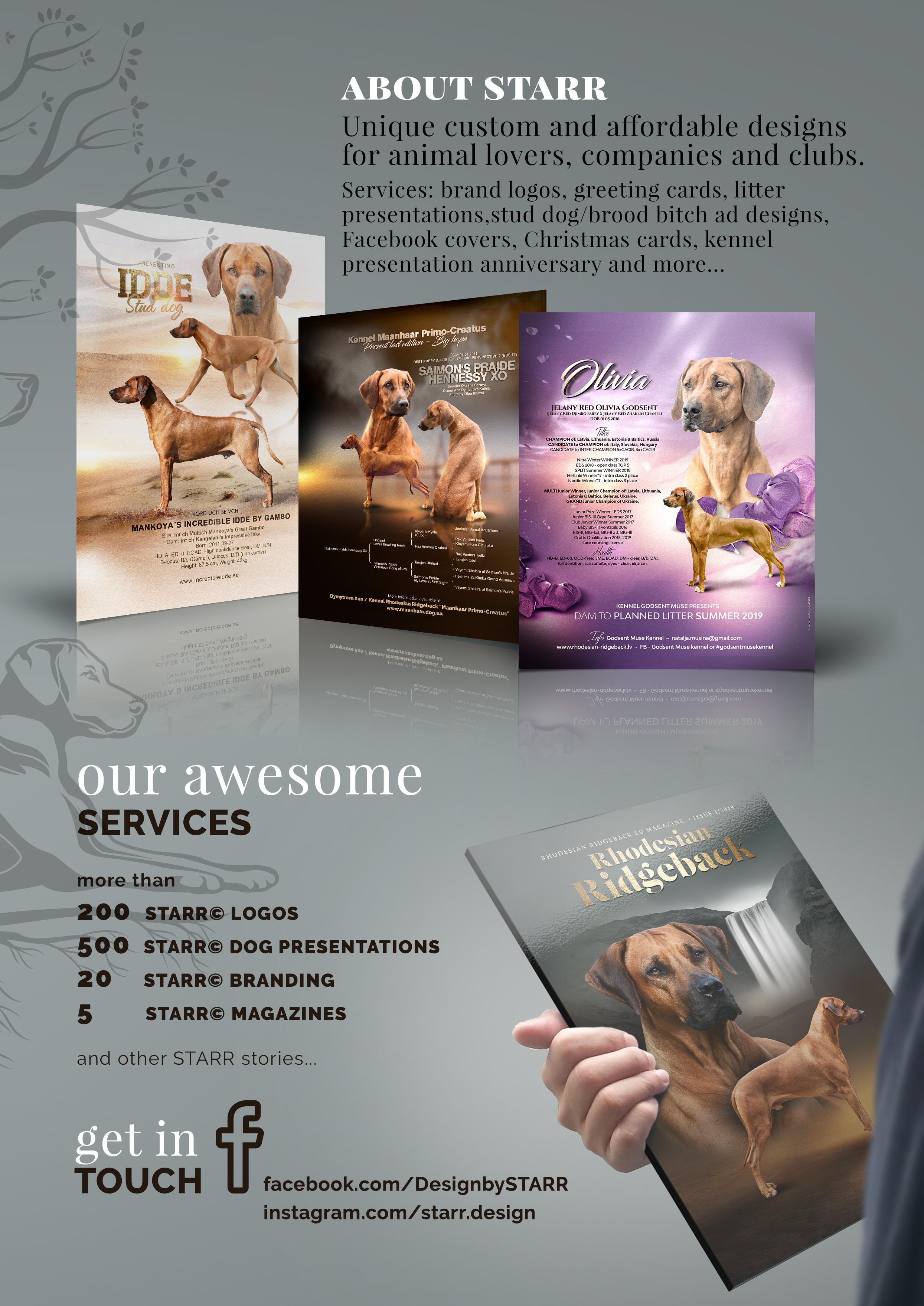


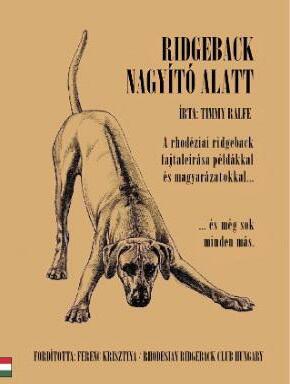
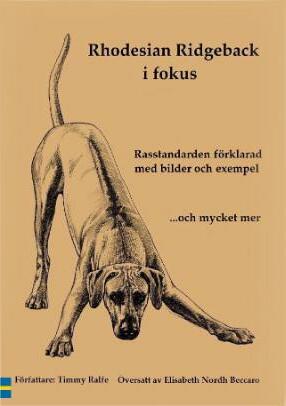

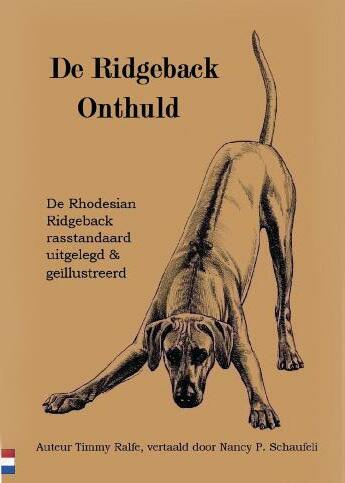

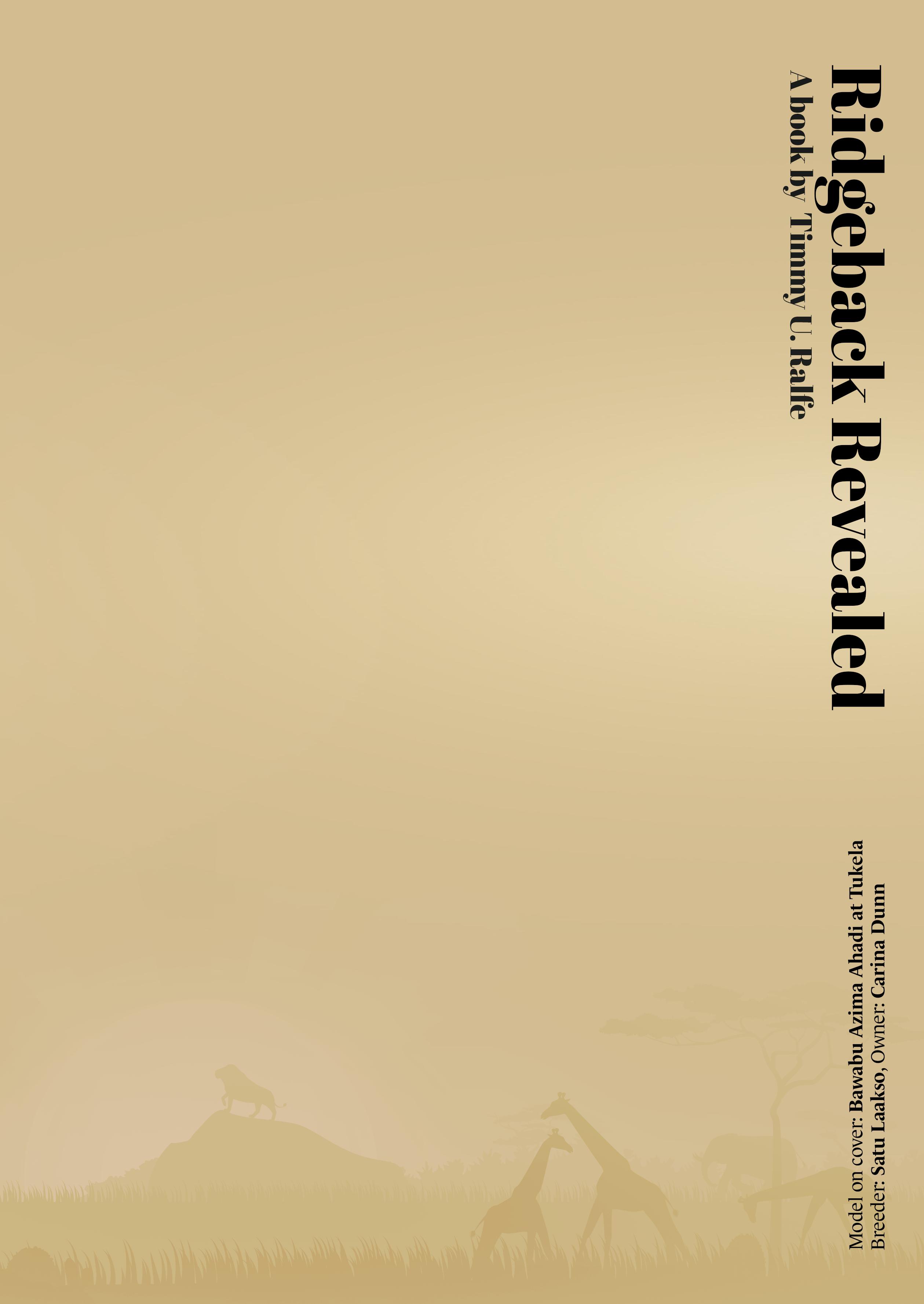
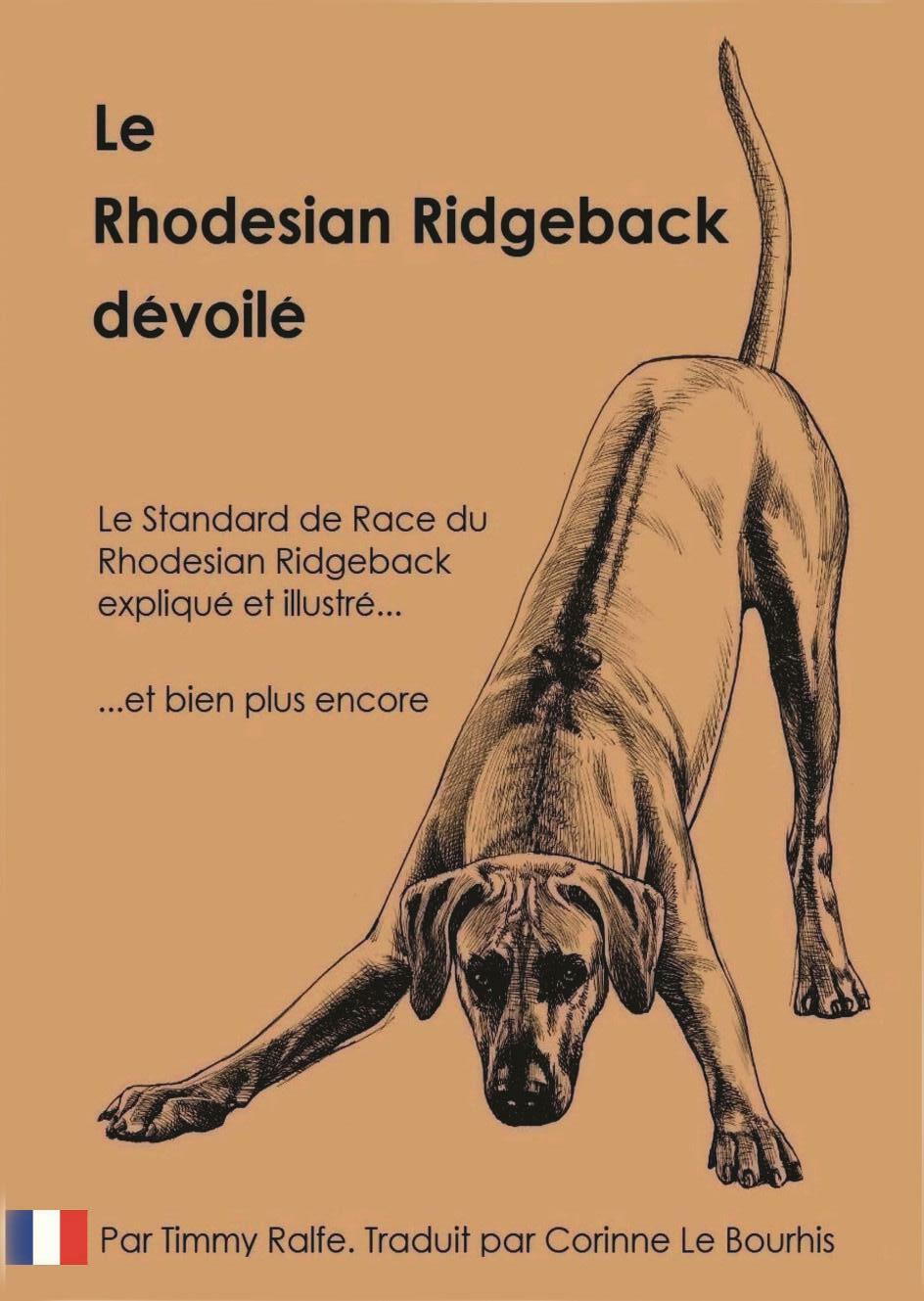


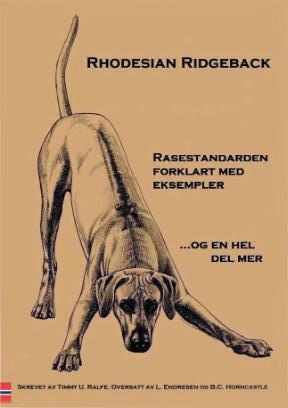


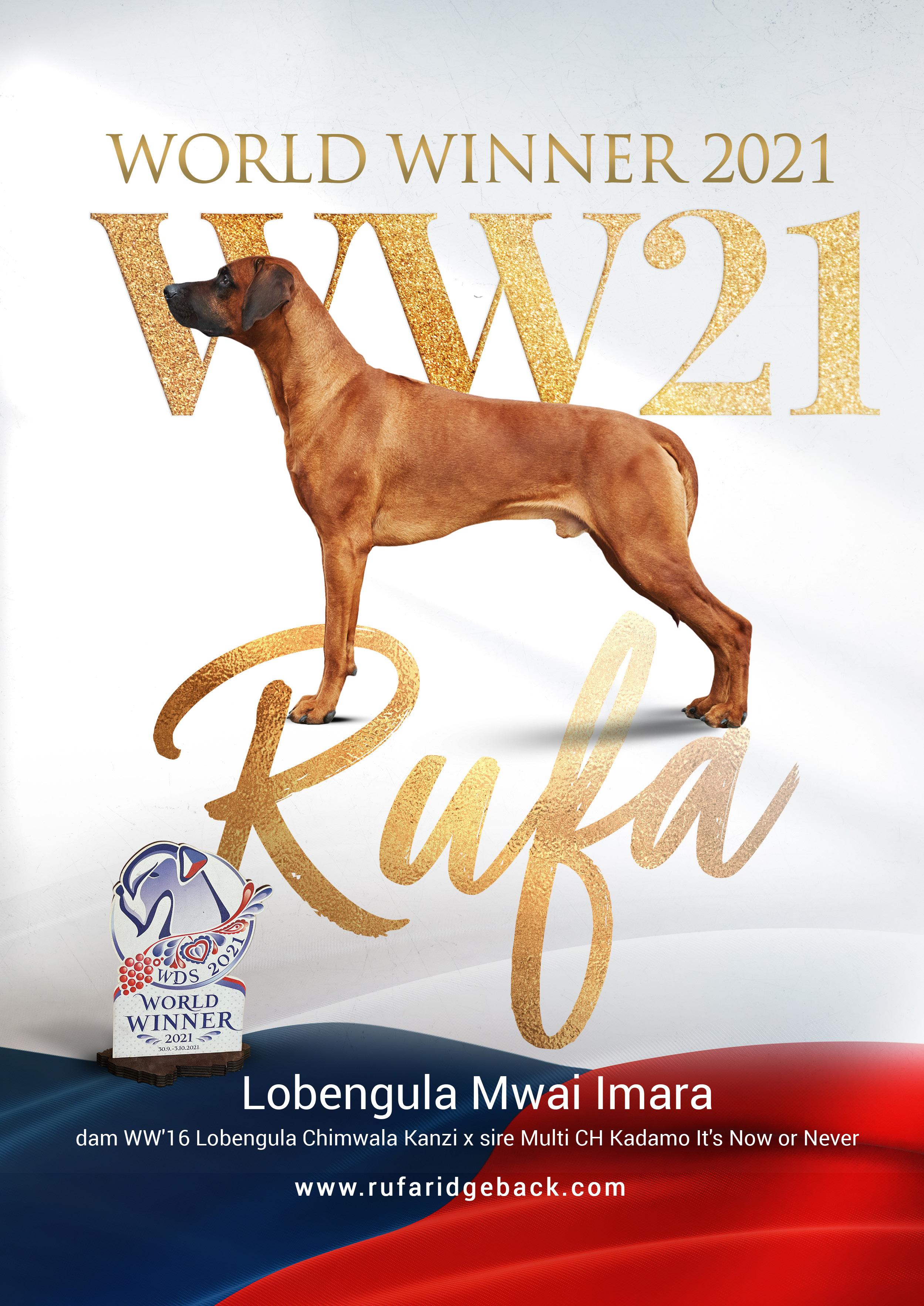
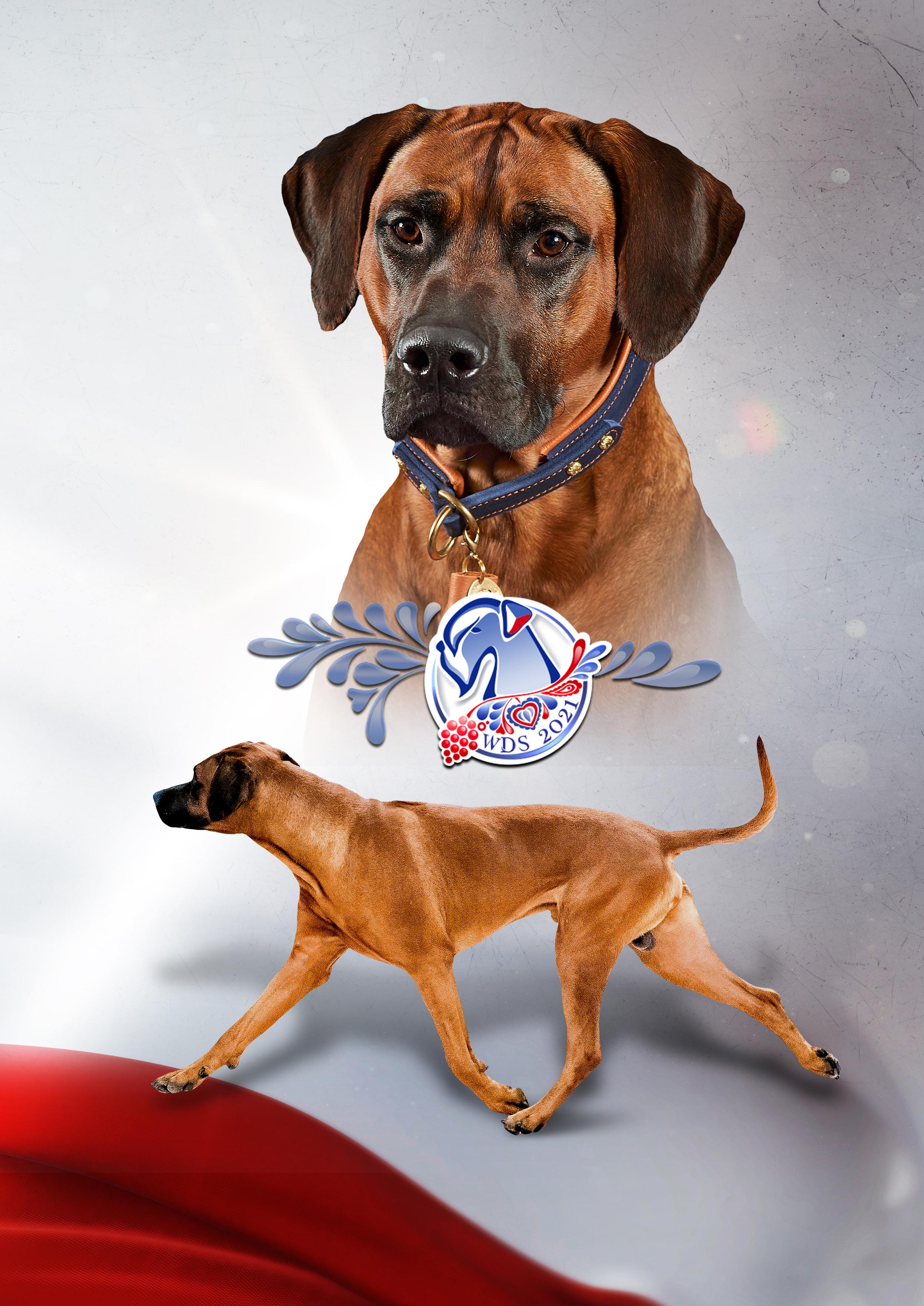

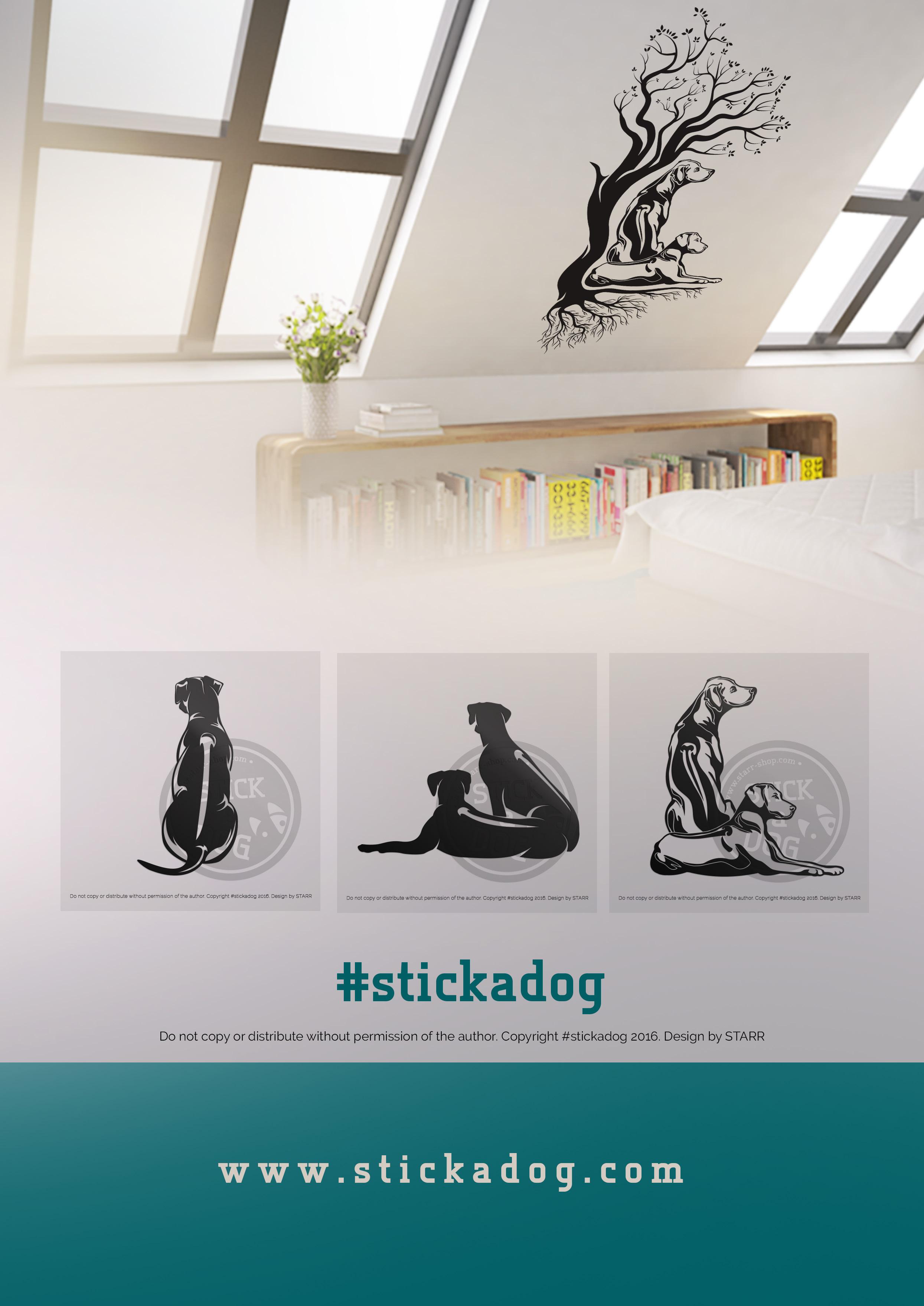


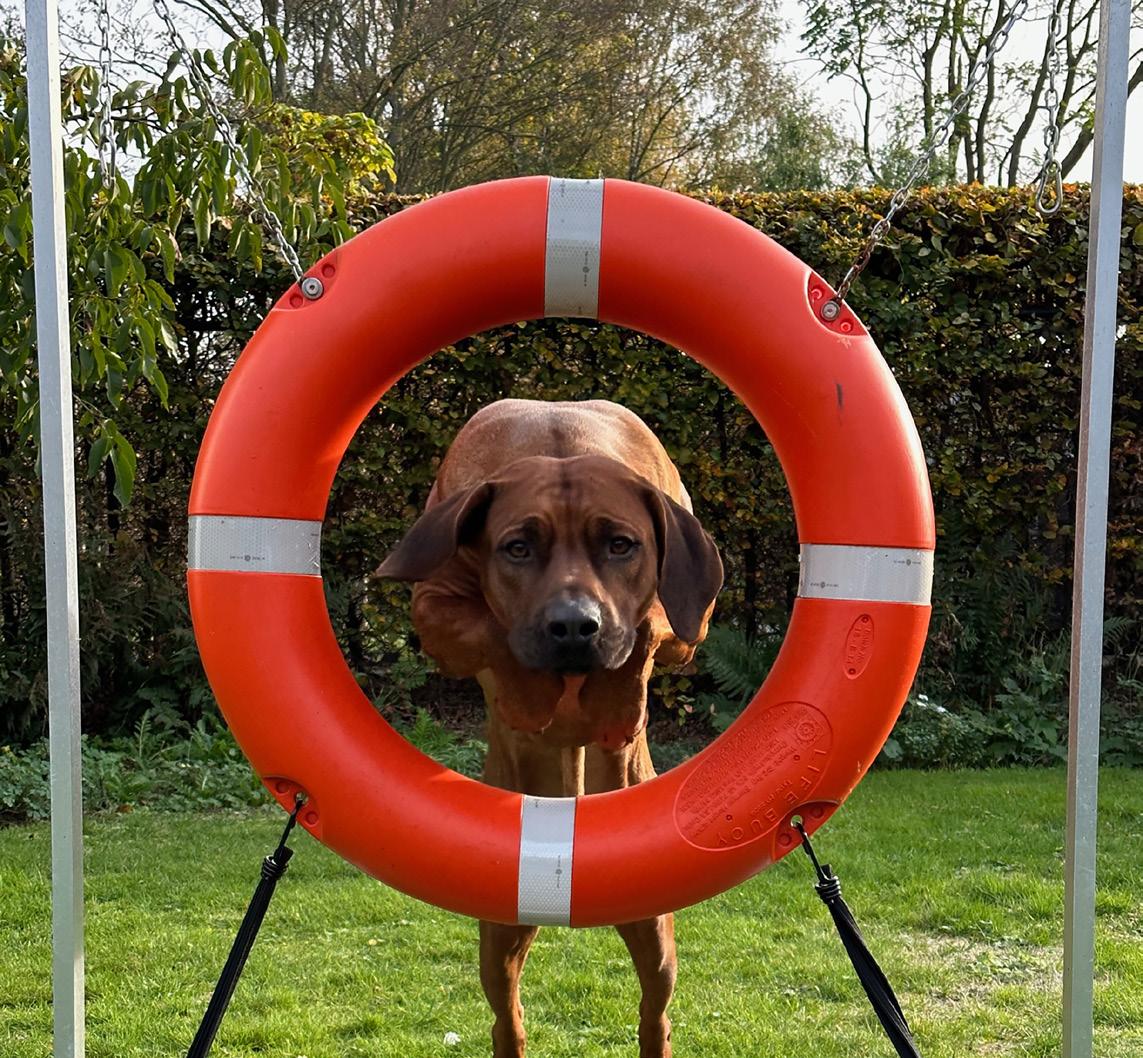
Babu (CH Villagedogs Time for Me to Fly) is a 4th generation Villagedog and was bred to order.
My dear friend Daniella (Rohart), the owner of two other Villagedogs, Ram and Riva, following Riva’s agility successes, wanted a puppy bitch which could do well in agility. She had an ambition to go further. She also wanted to try her hand at showing. A tall order to fill.

Looking at my dog’s attributes, I picked LA (MCH Villagedogs Some Like It Hot), for his substance and speed, and Charlie (MCH Villagedogs on Dark Side of the Moon), a compact bitch with bags of energy and also agility and speed. The litter was born in the spring and, as the weather got warmer, there was plenty of time to observe the puppies as they were developing.
It soon became apparent we didn’t have a bitch which would suit the purpose, but there was a boy which could fit the bill. And so, Babu’s journey began.
Babu grew up to be a true all-round, fit for function, hound. Today, at 2.5 years old, he is successful in agility trials, loves lure coursing and is already an accomplished show dog. With the first Champion title under his belt, he continues notching up CACs and CACIBs awards for the CIB and other Nati onal titles. He also came first in the large Mid Limit class at Crufts. Quite a challenge for a young, inexperienced dog which, unfortunately, was born at the height of COVID. I am looking forward to the bright future for Babu and his handler, Daniella.
For me, showing dogs is like baking a soufflé. You need the right ingredients, appropriate baking conditions, spot on timing and then sufficient skills to pull it off. Having all that, the soufflé is still notoriously difficult to get it right.
Showing a dog I’ve created feels like sprinkling icing sugar on top of a perfectly risen soufflé. The show dogs are not born, they are made. The enjoyable, yet hard work of breeding, raising and training a right puppy starts to come together. With a dash of competitive spirit we become a team. There is no greater pleasure than to be a part of the winning team.
I am looking forward to baking more soufflés…
Name
CH Villagedogs Time For Me To Fly (Babu)
DOB: 16/03/2020
Mother: MCH Villagedogs On Dark Side Of The Moon (Belgium)
Father: MCH Villagedogs Some Like It Hot (Belgium)
Owned, Handled & Loved by Dorothy McGoldrick, Daniella Rohart villagedogs@icloud.com



